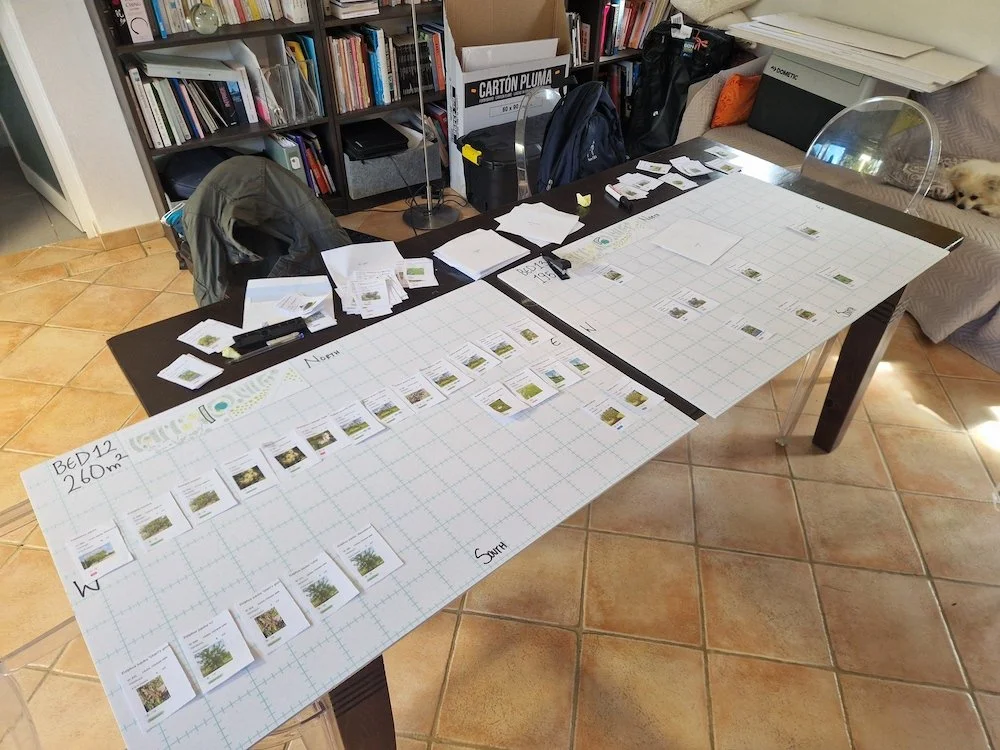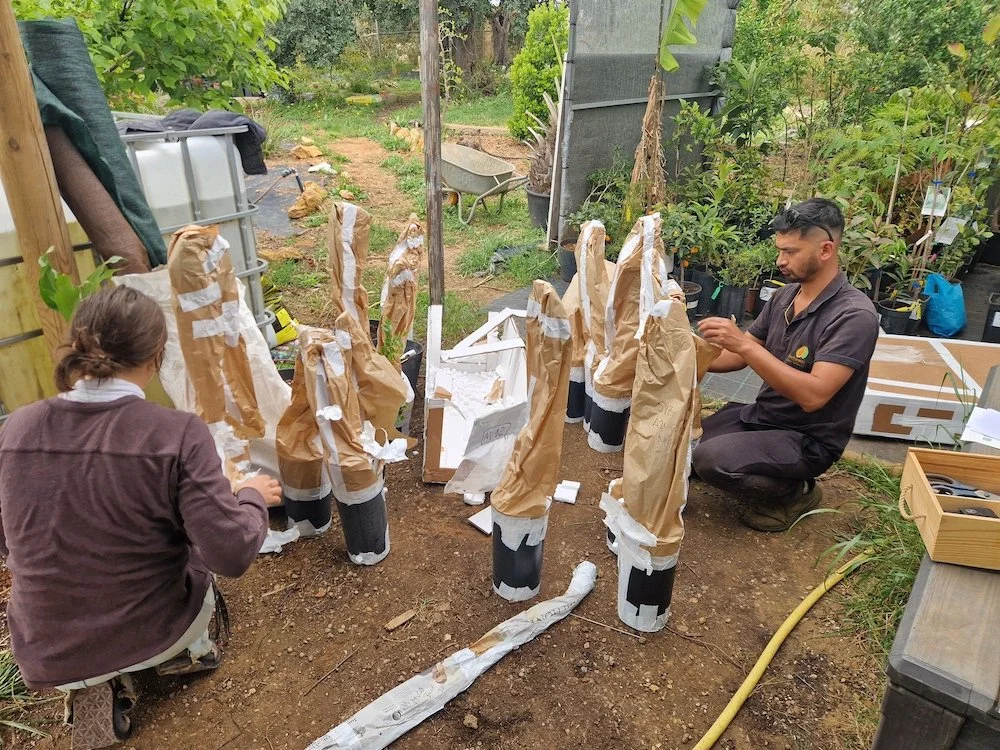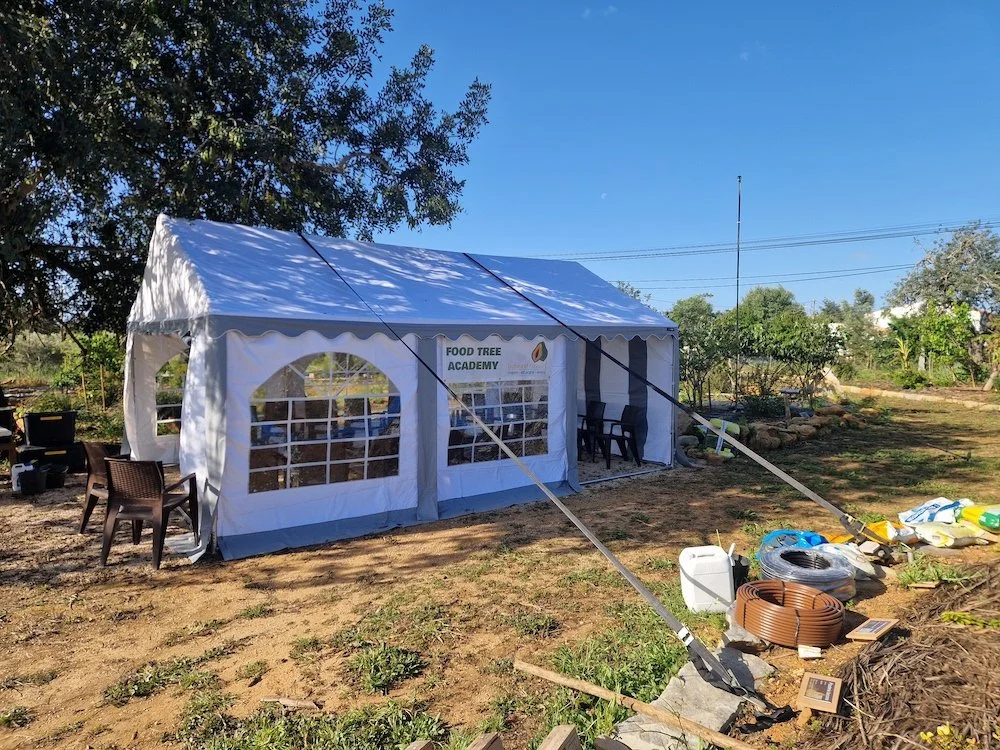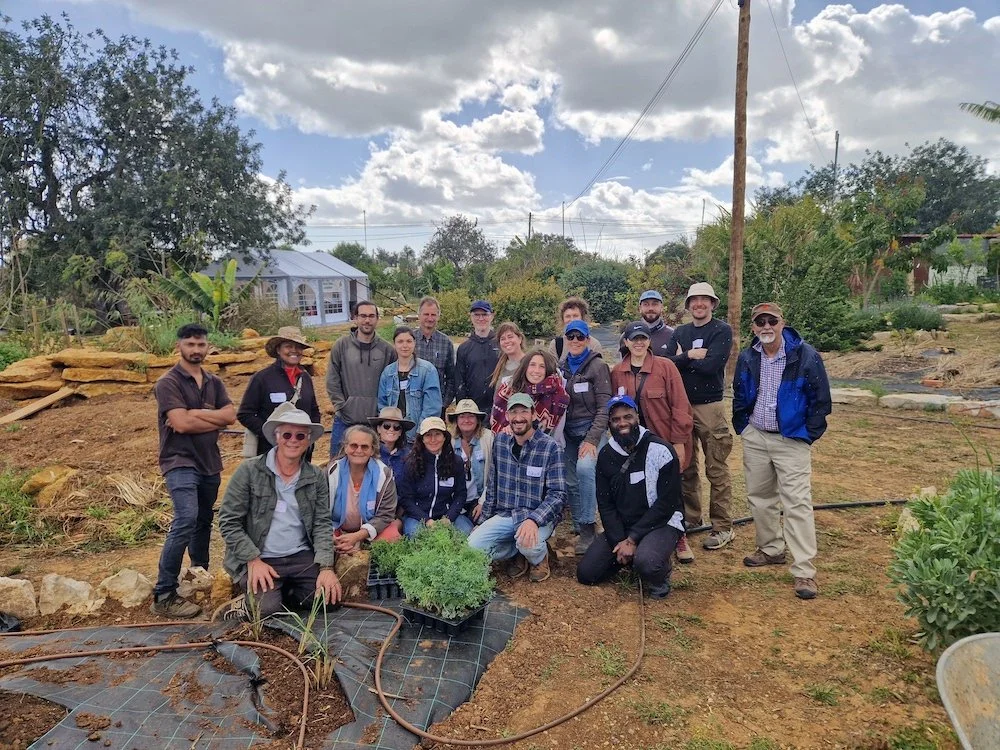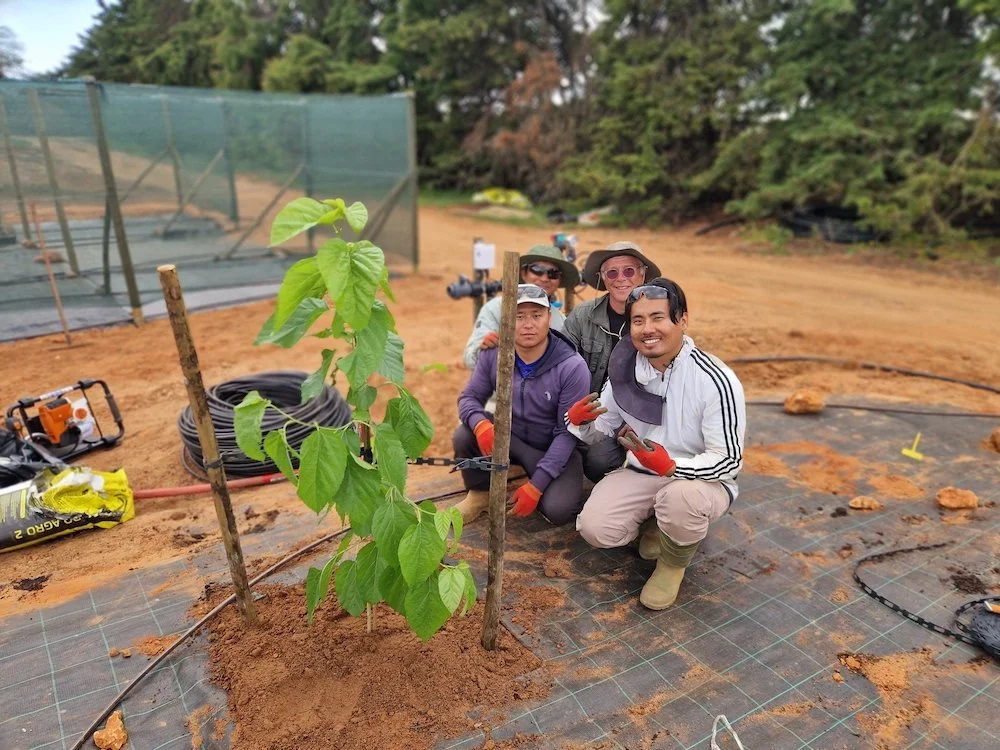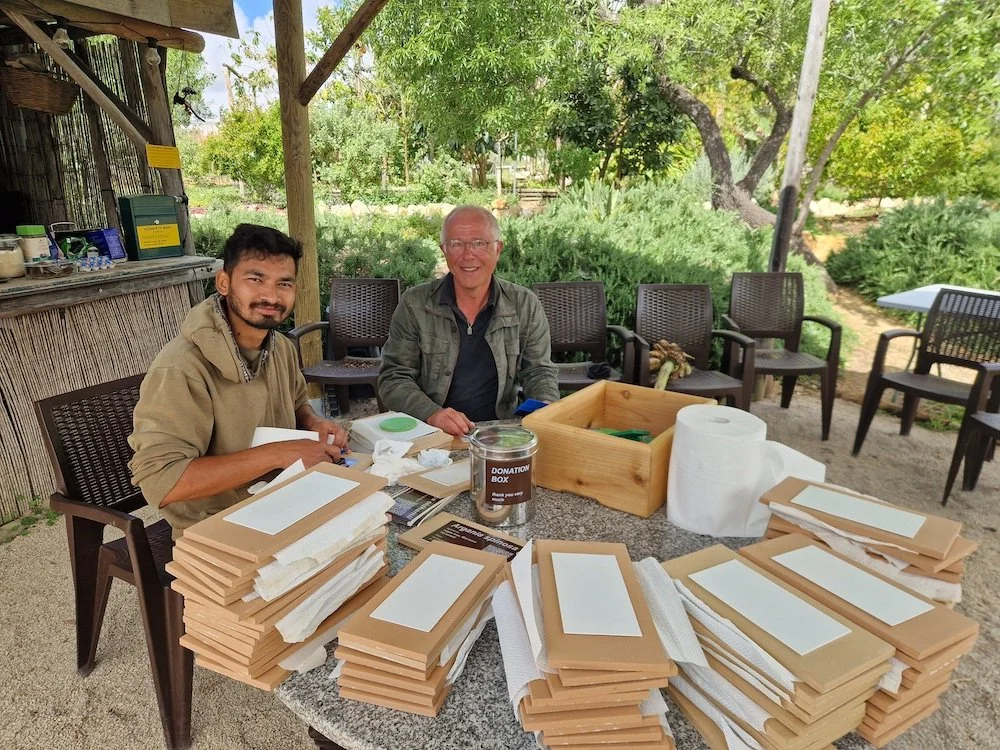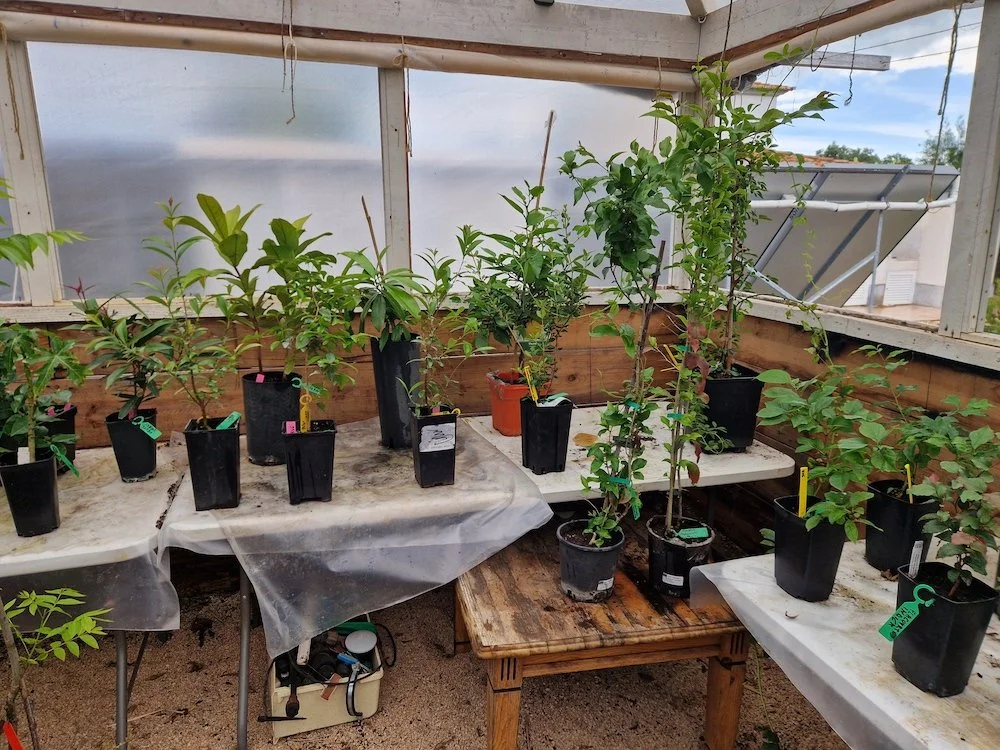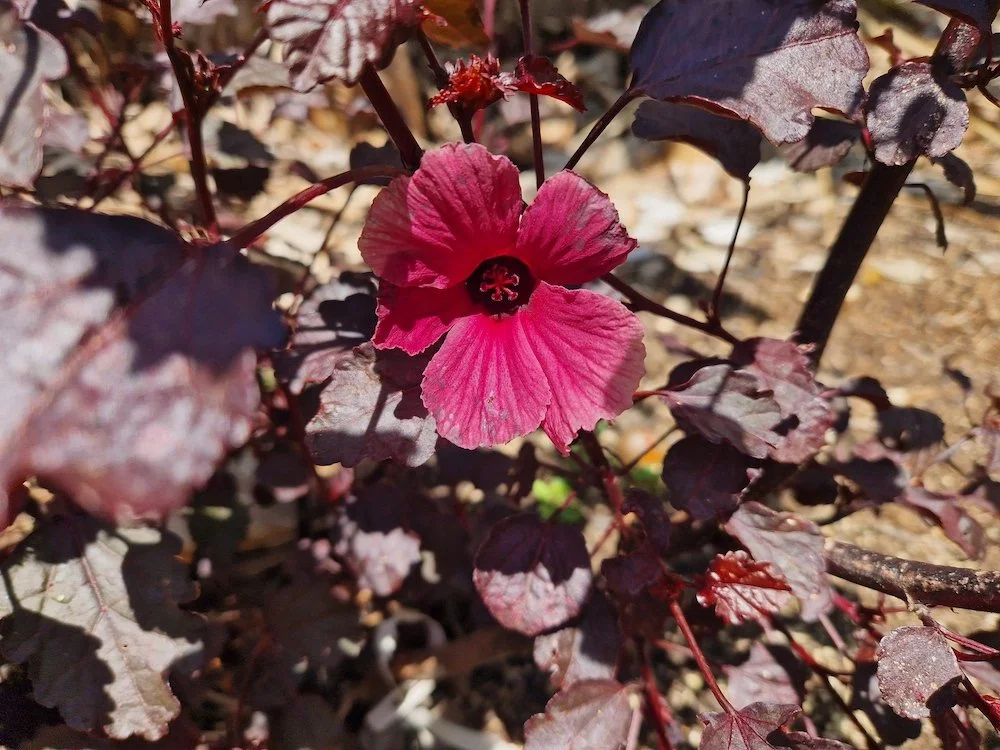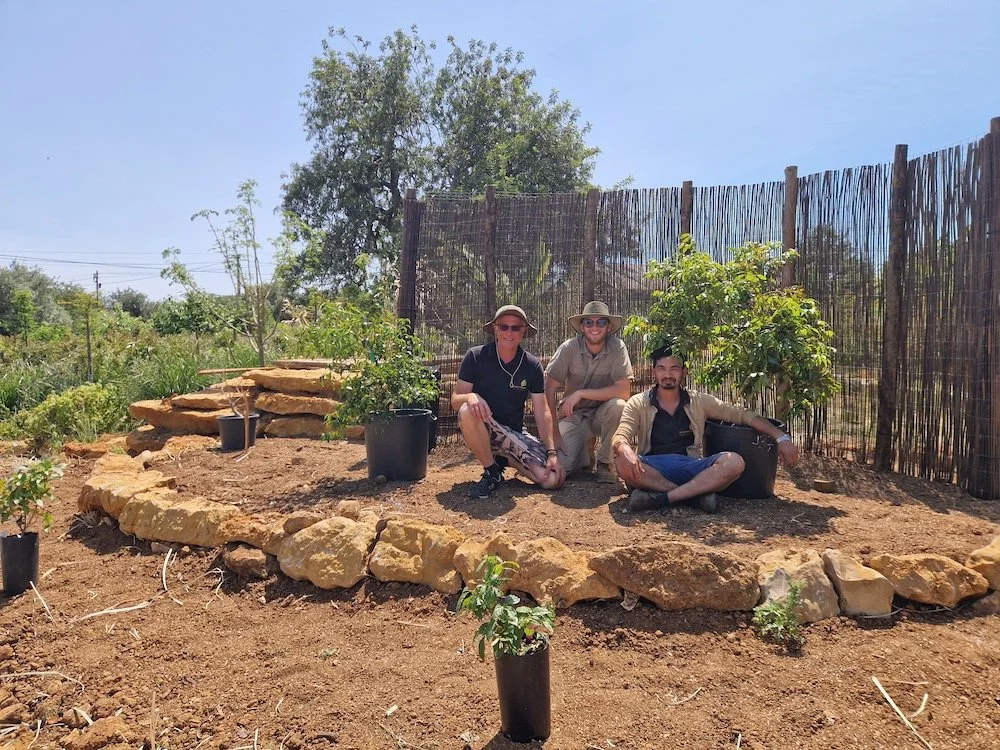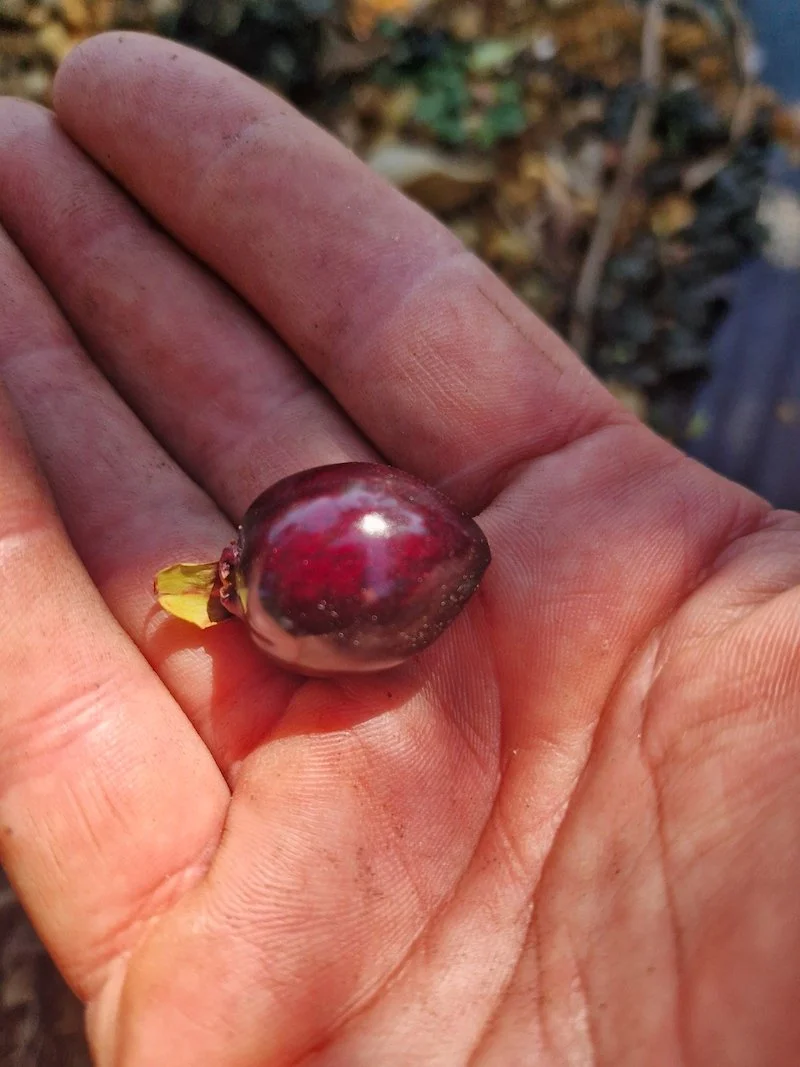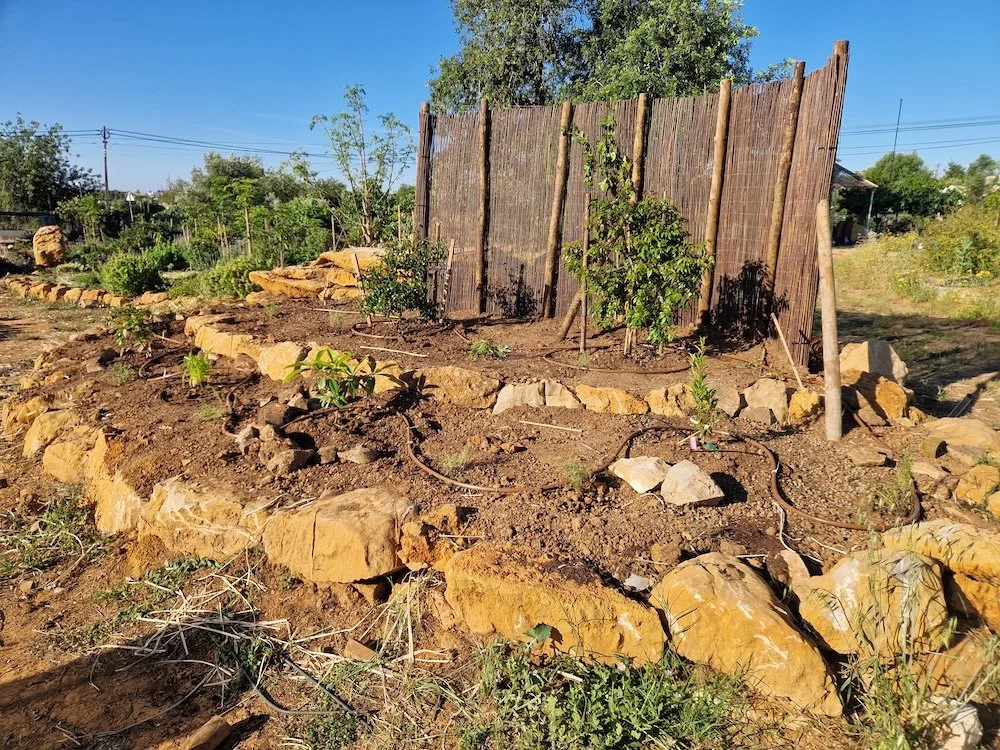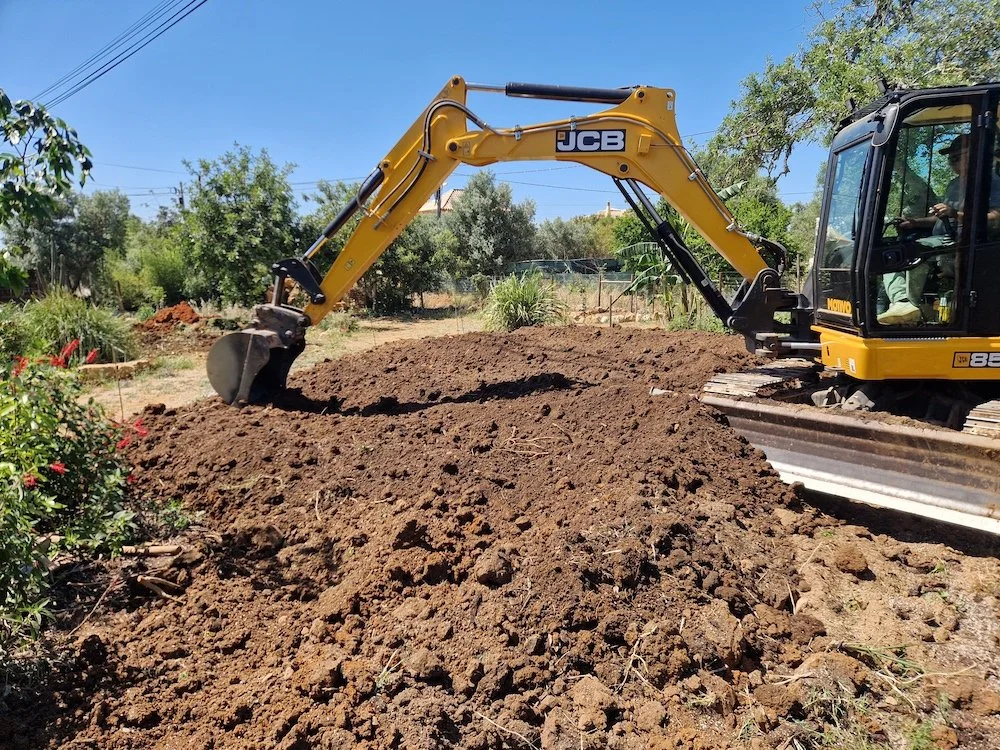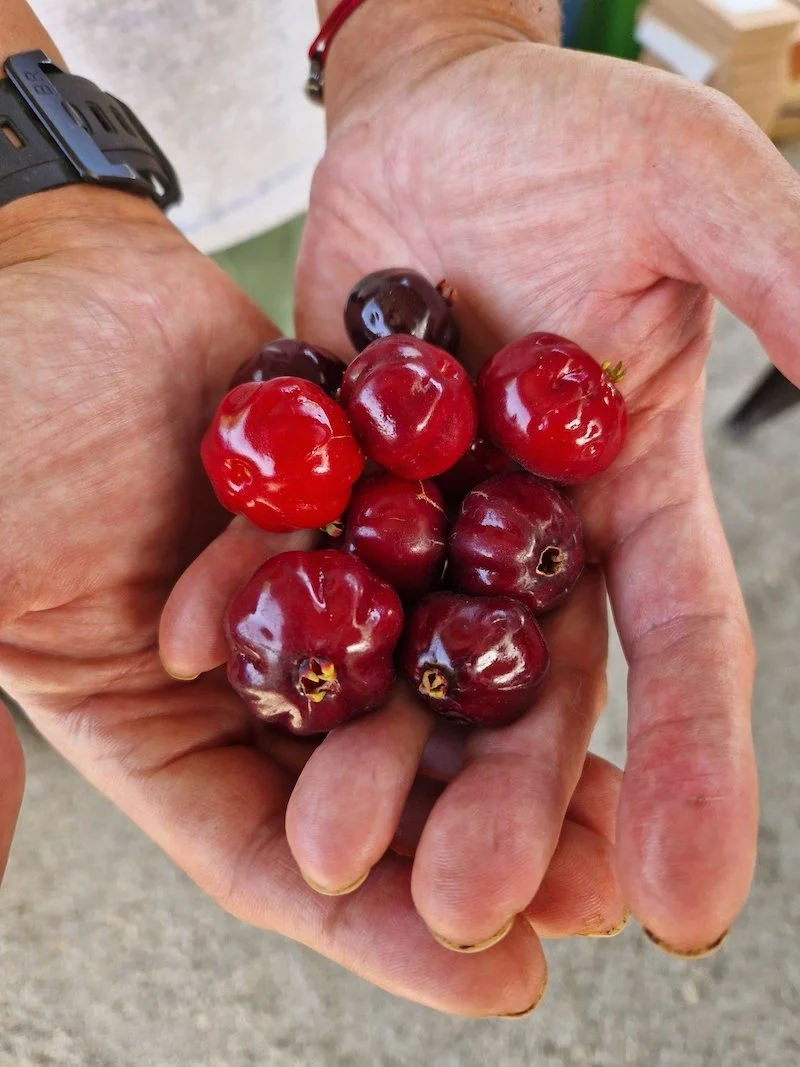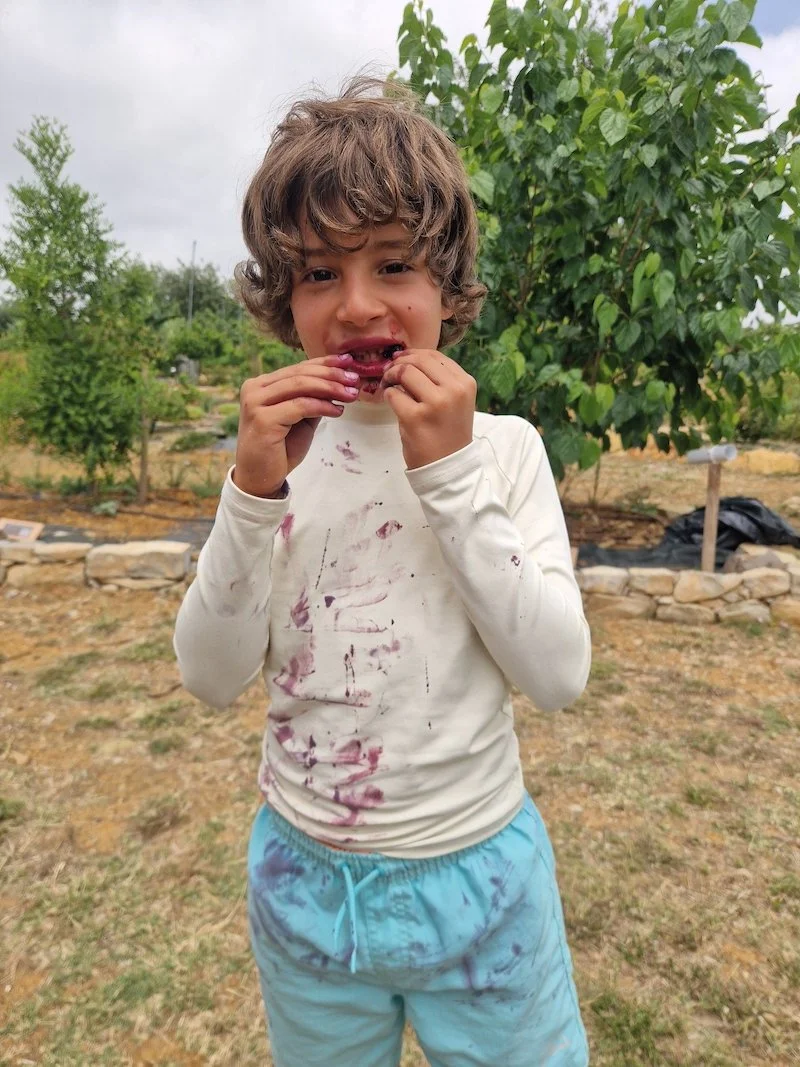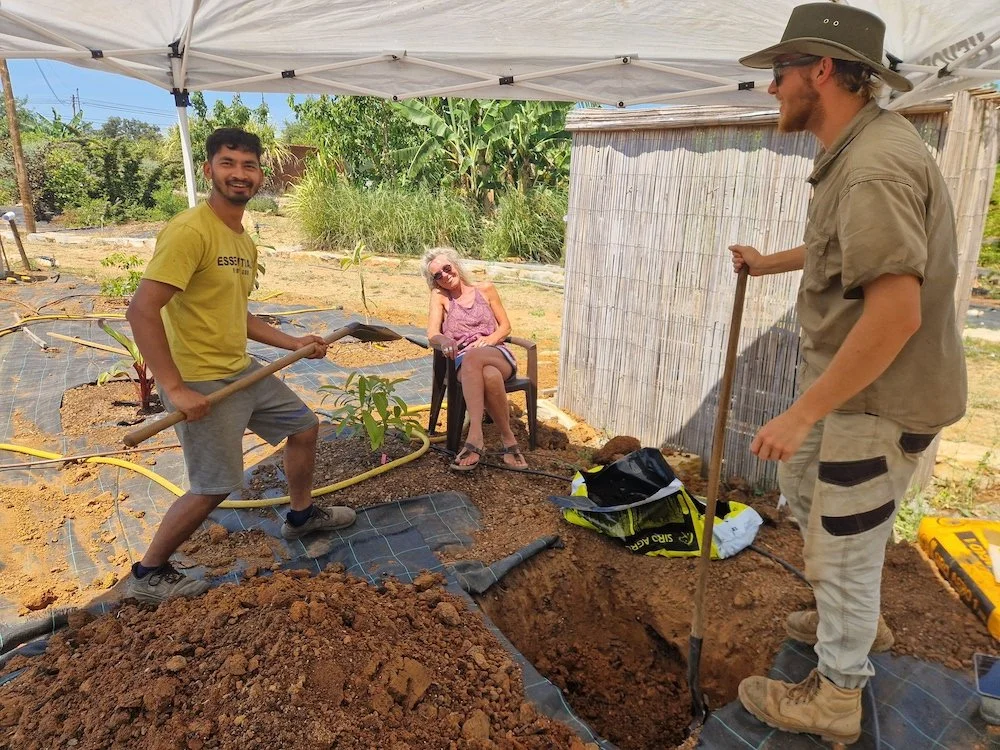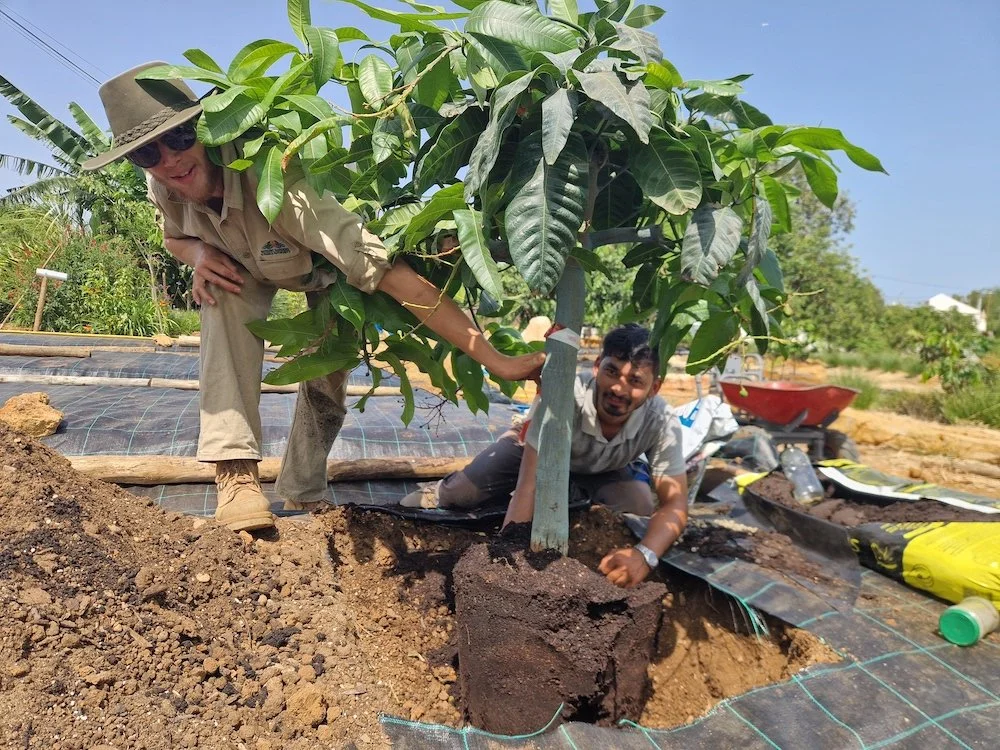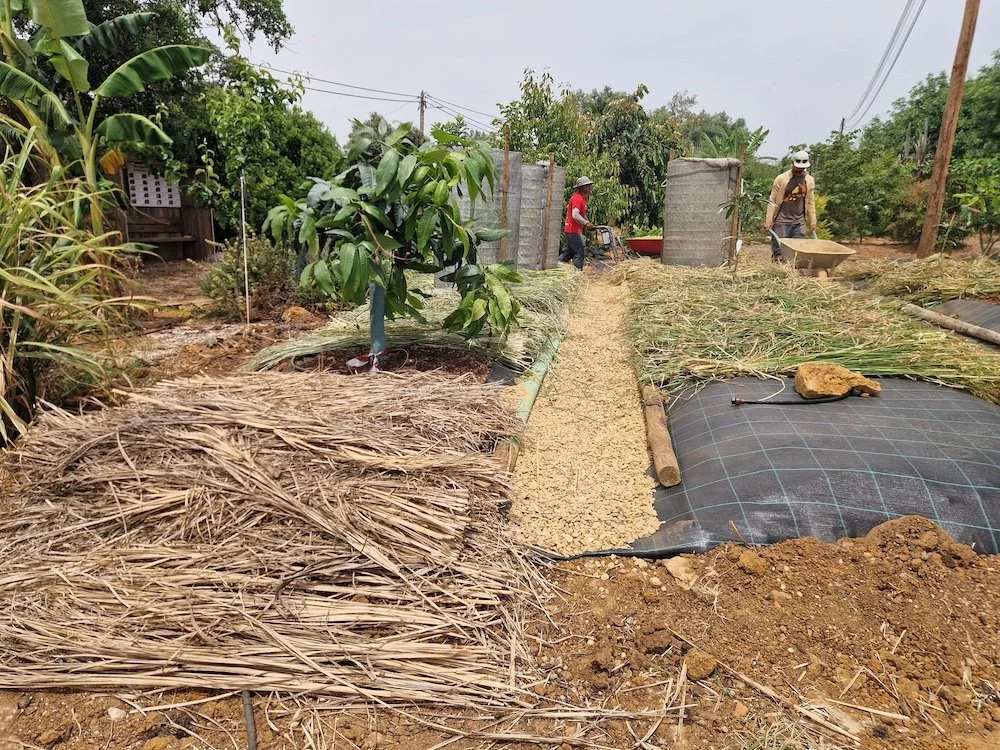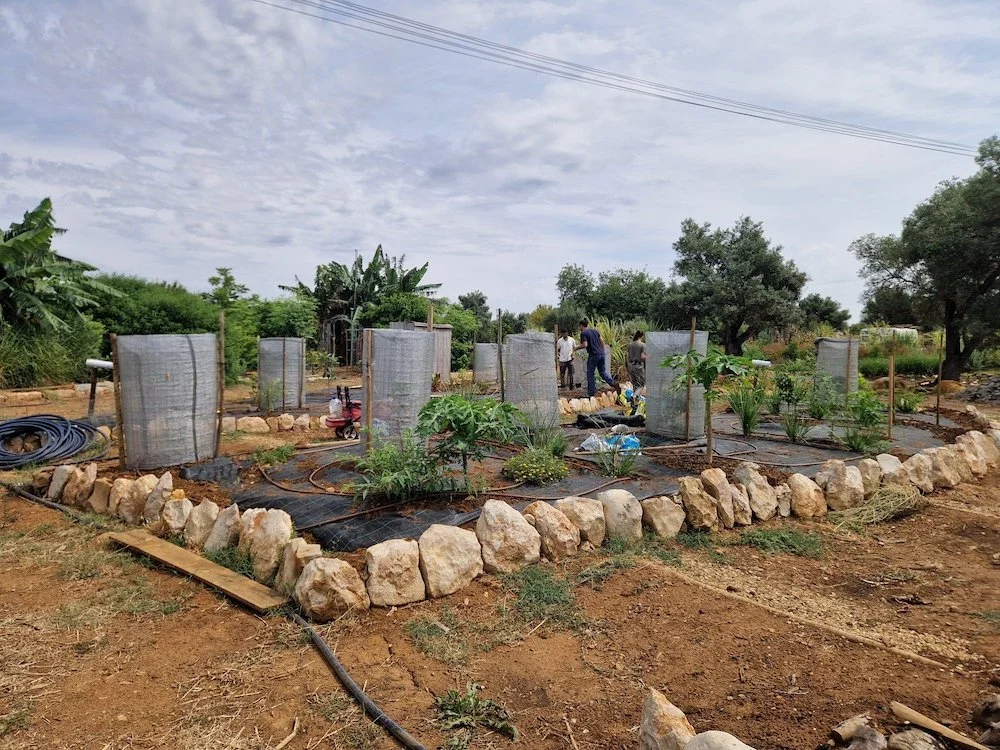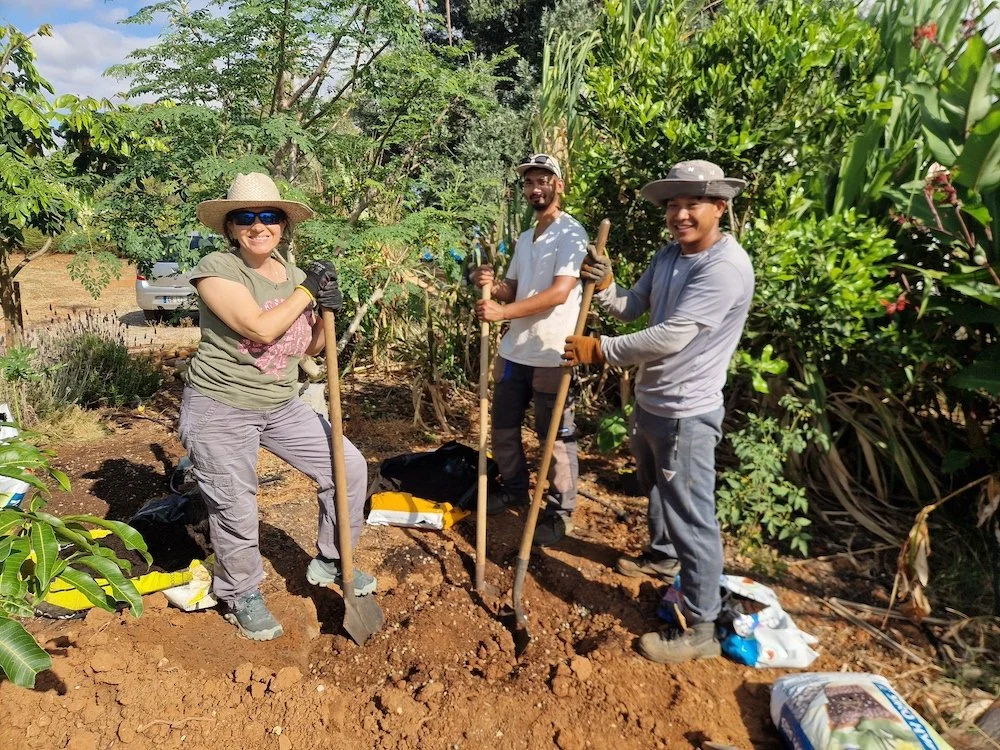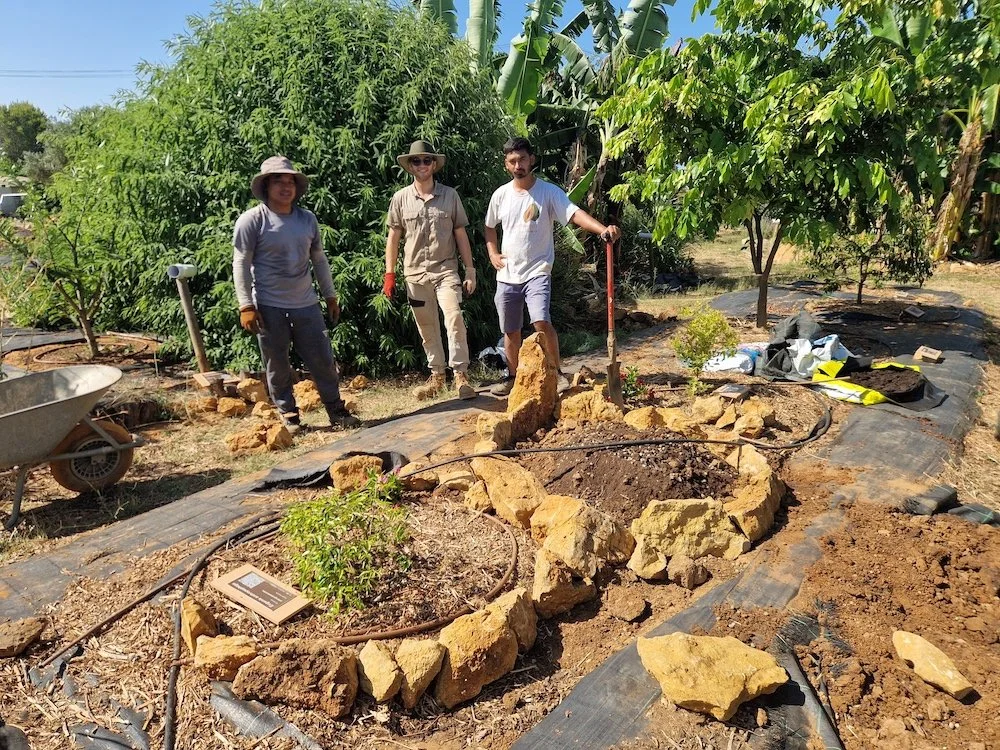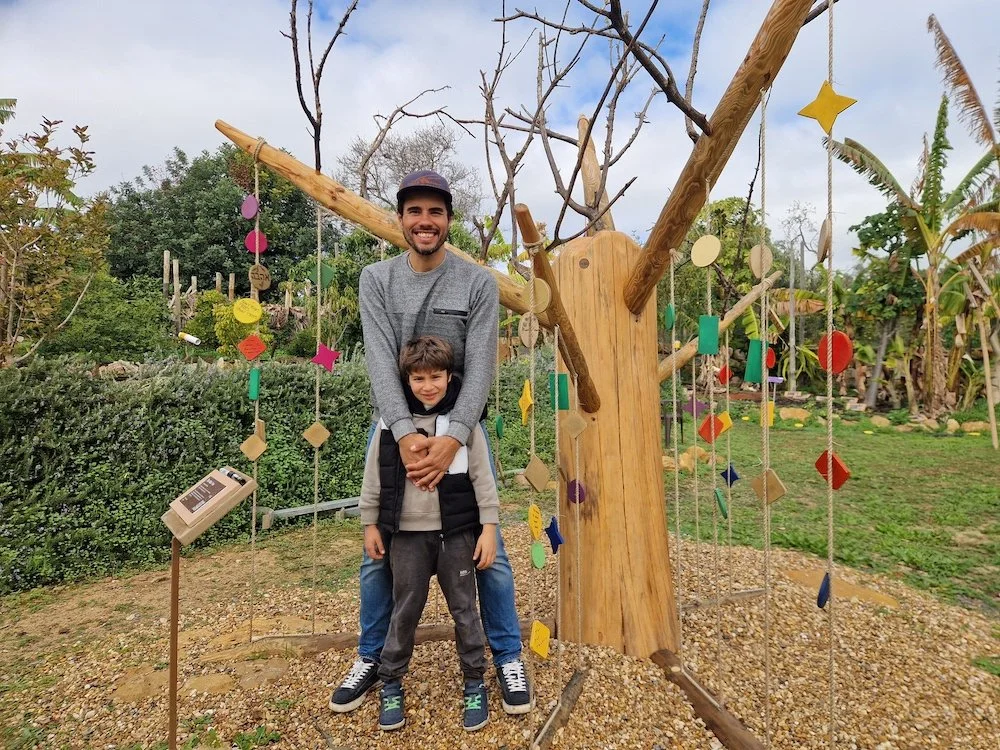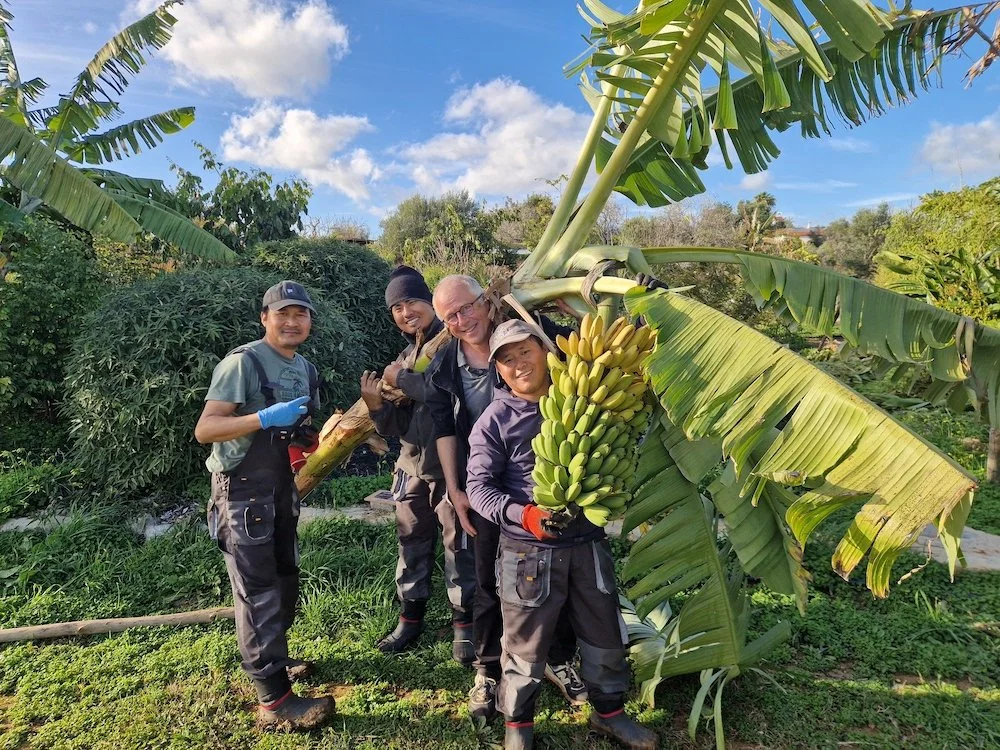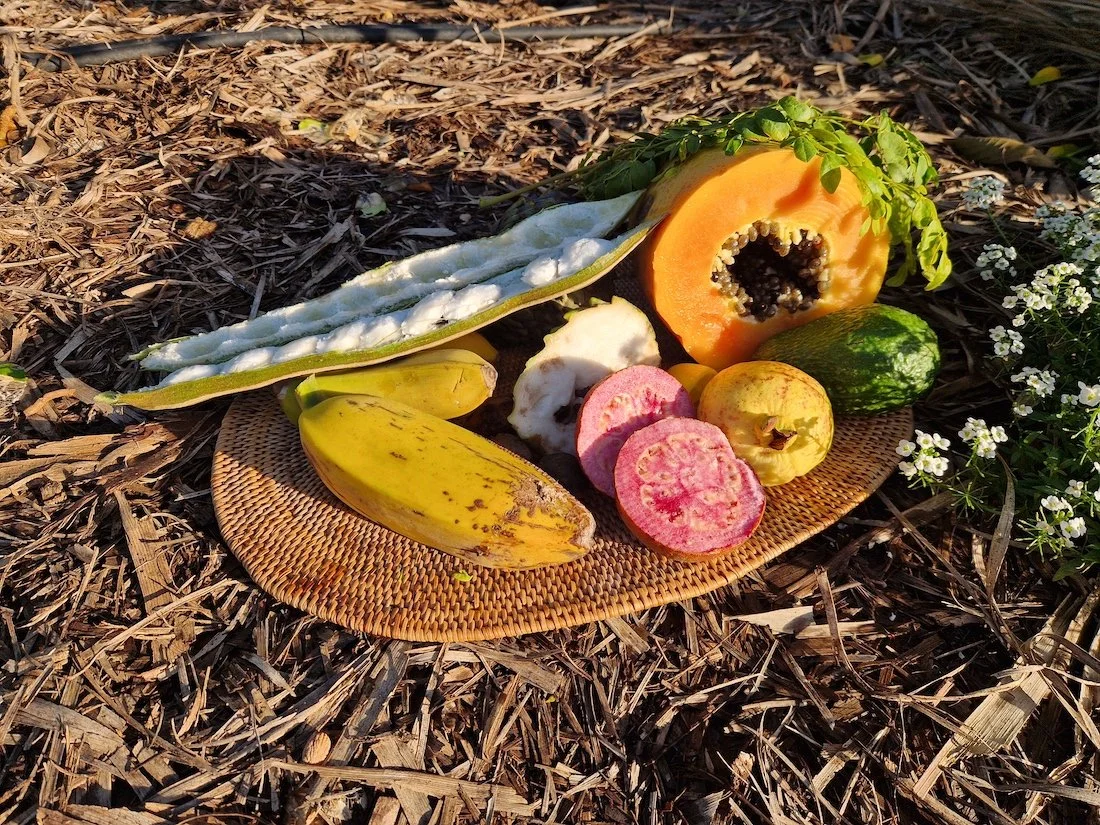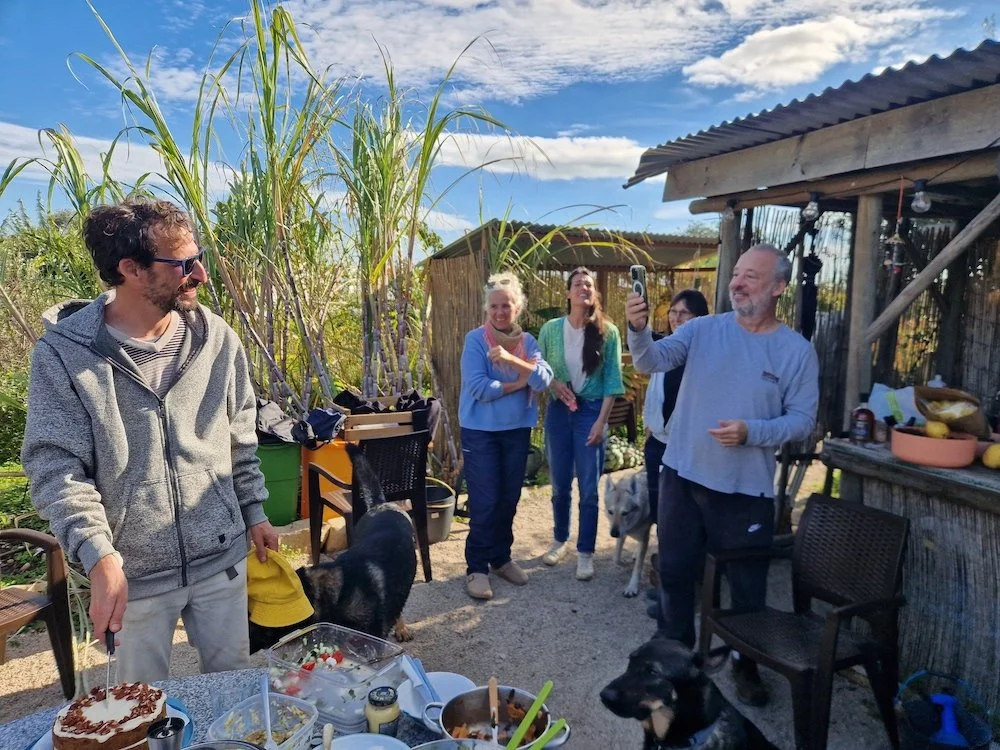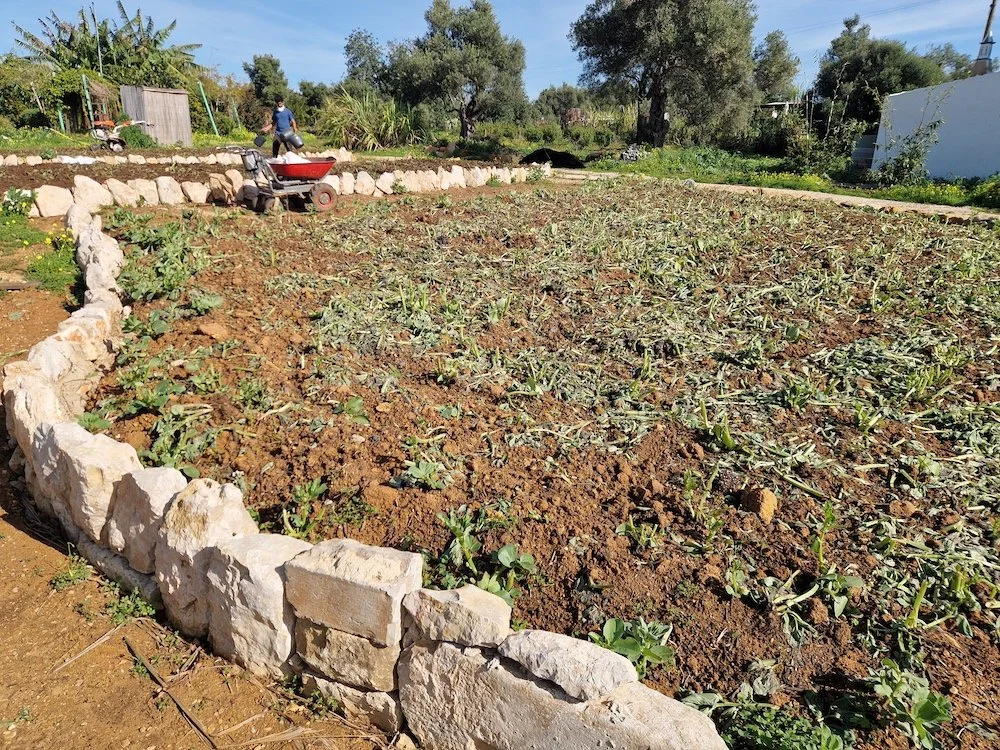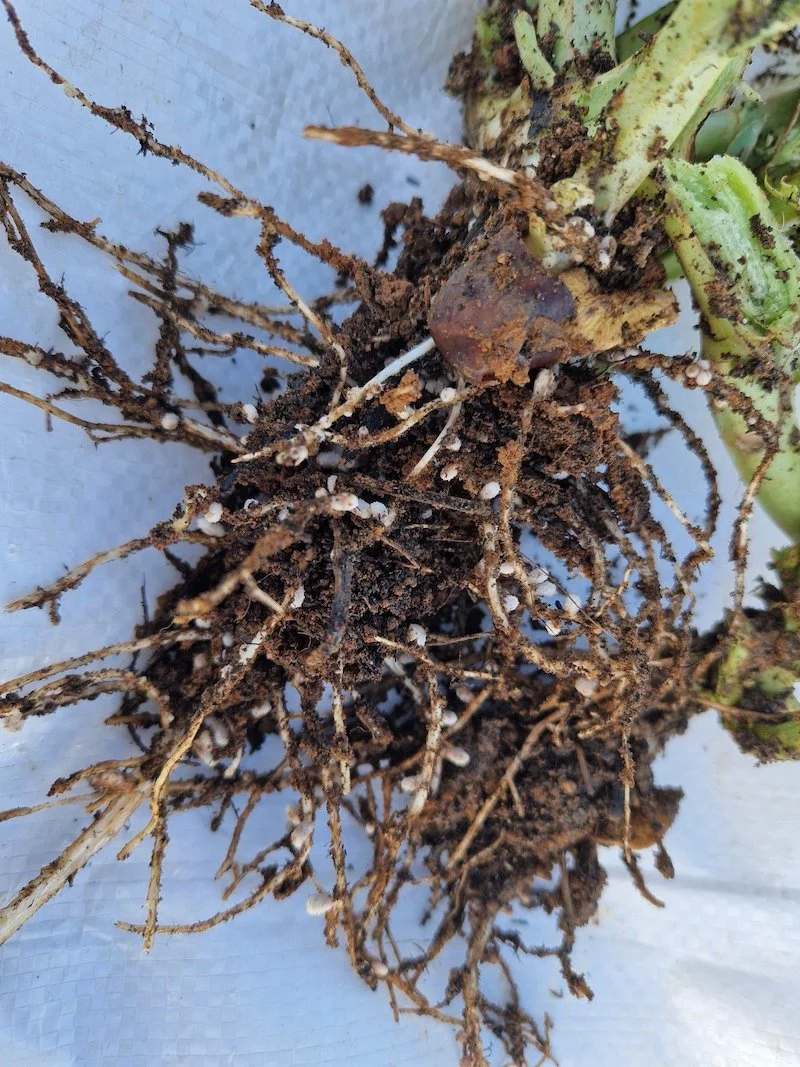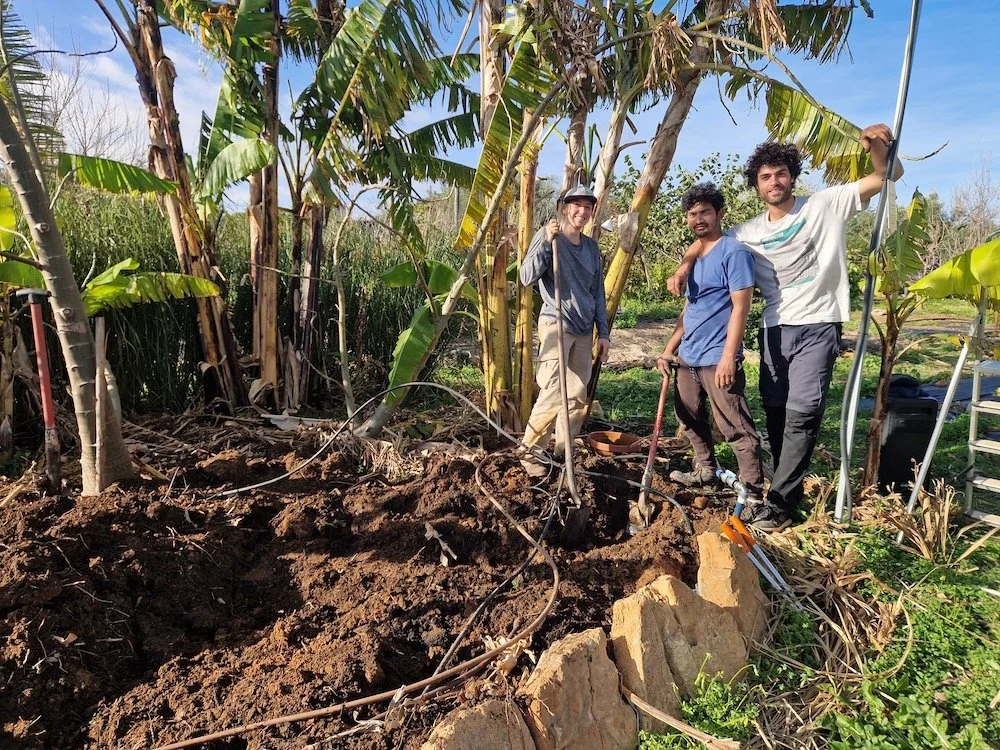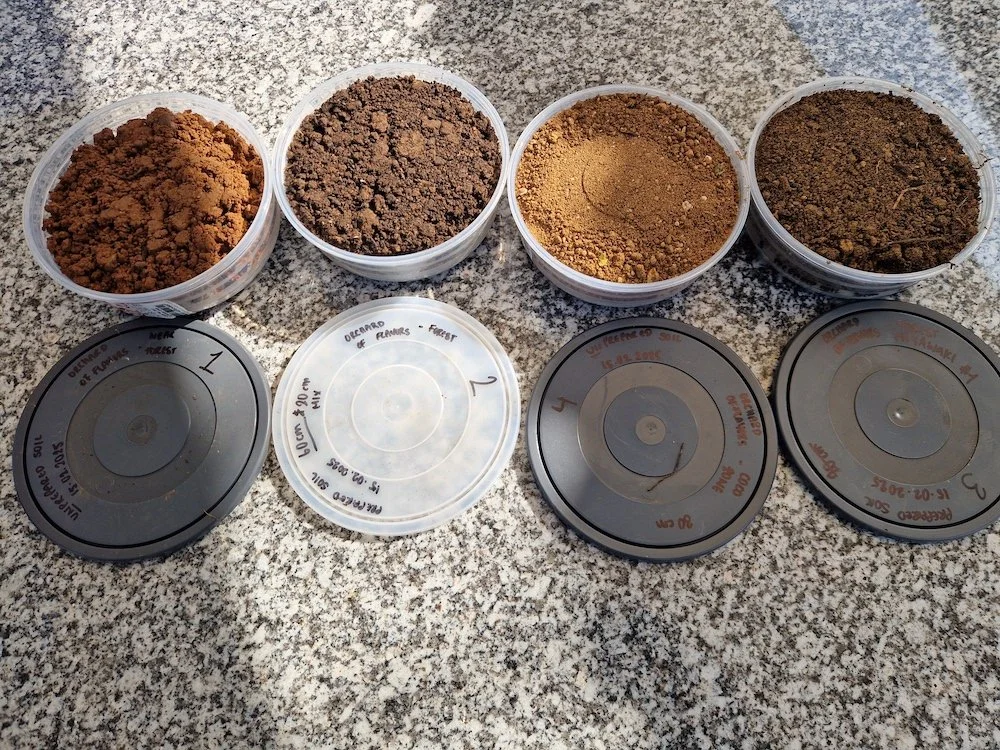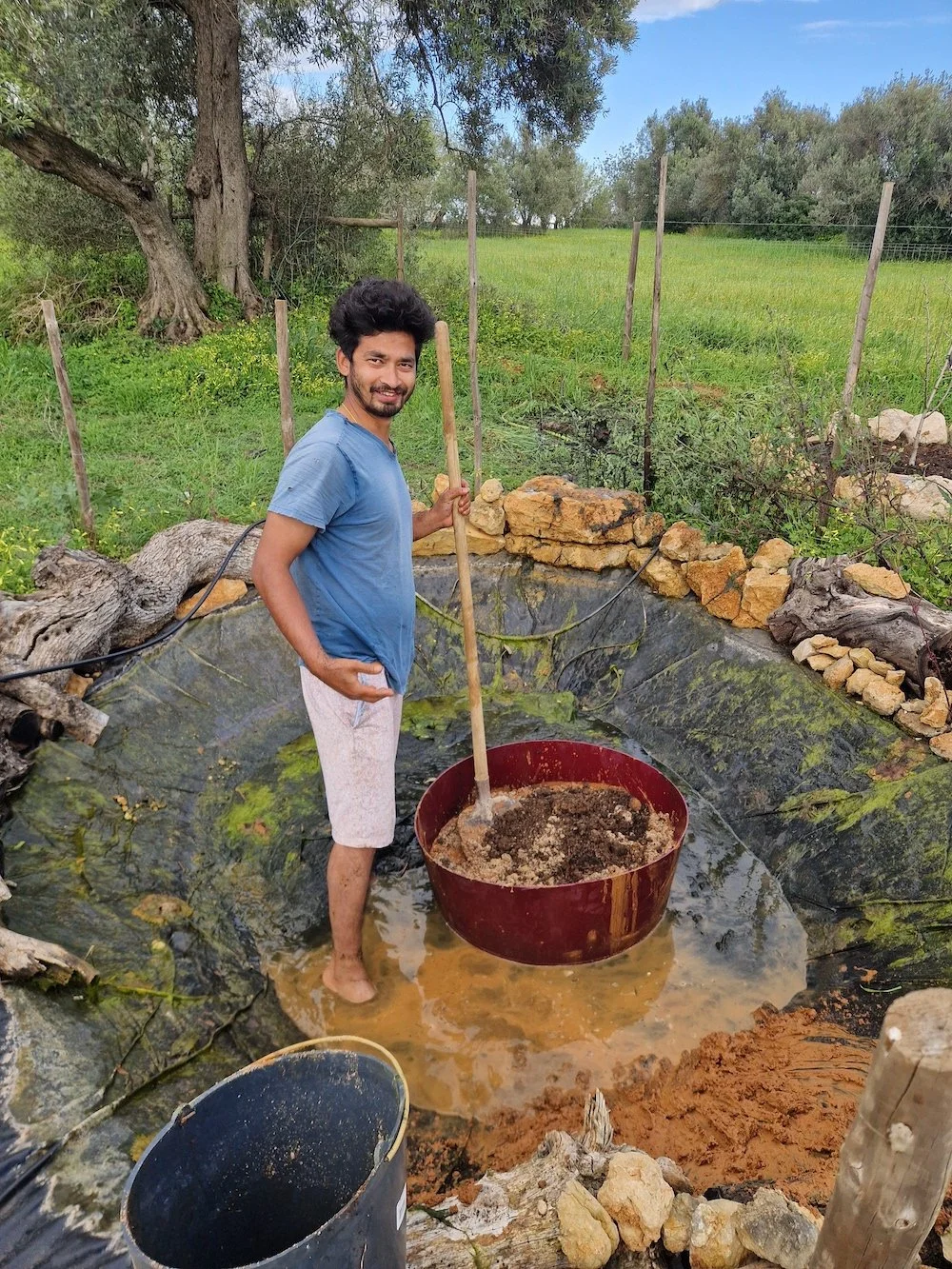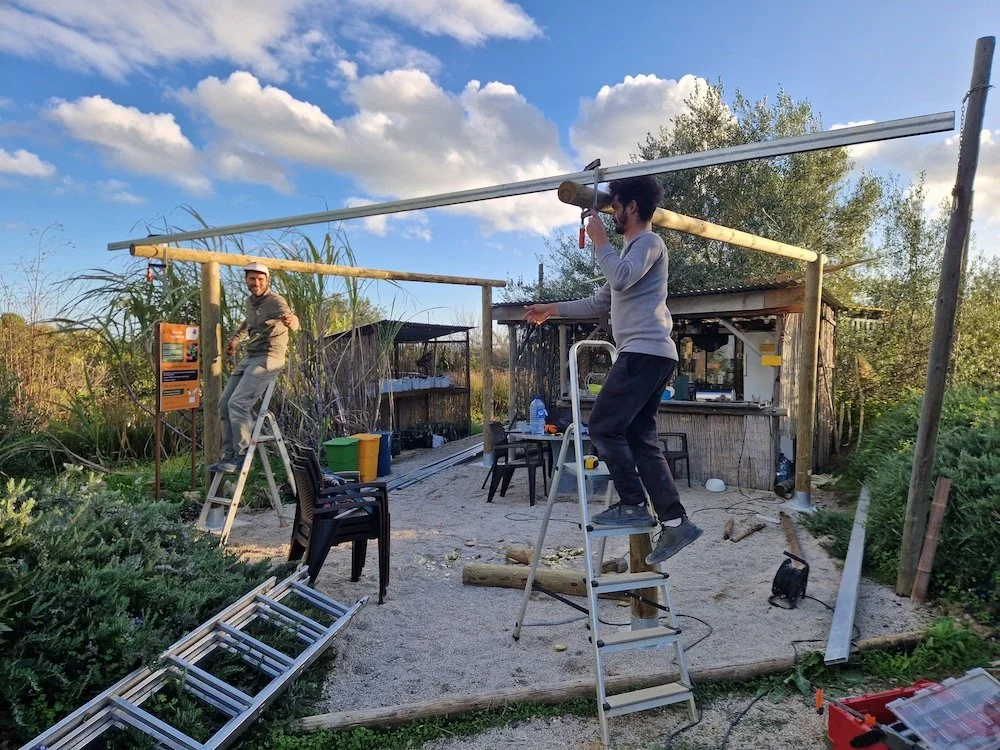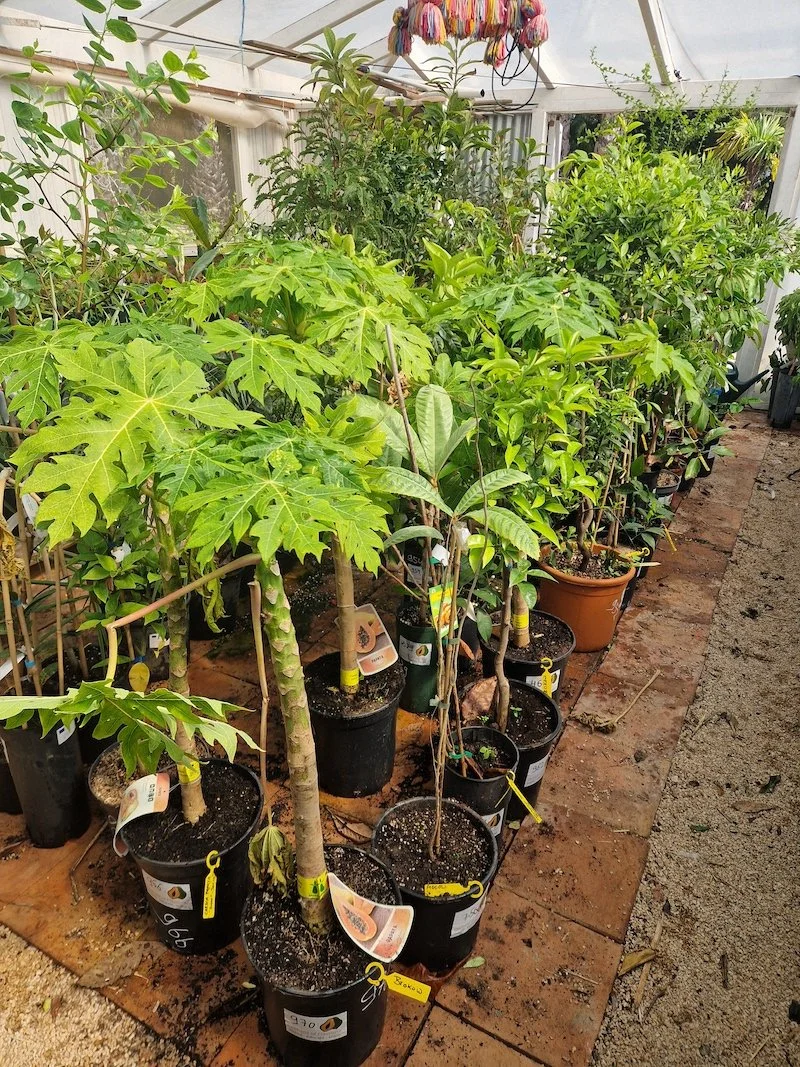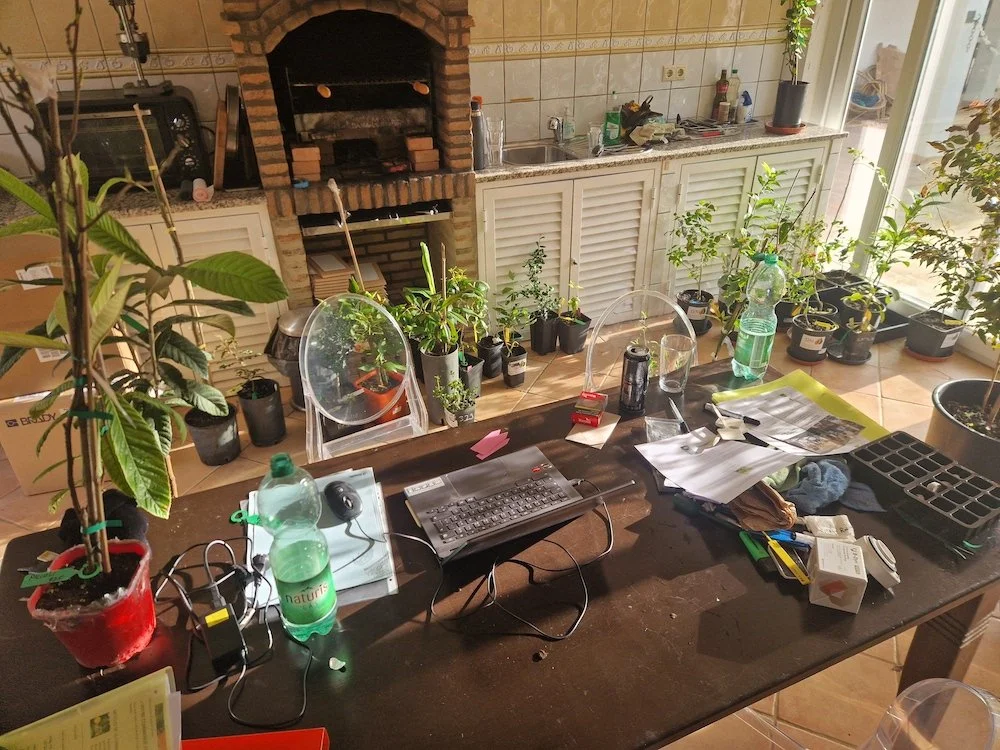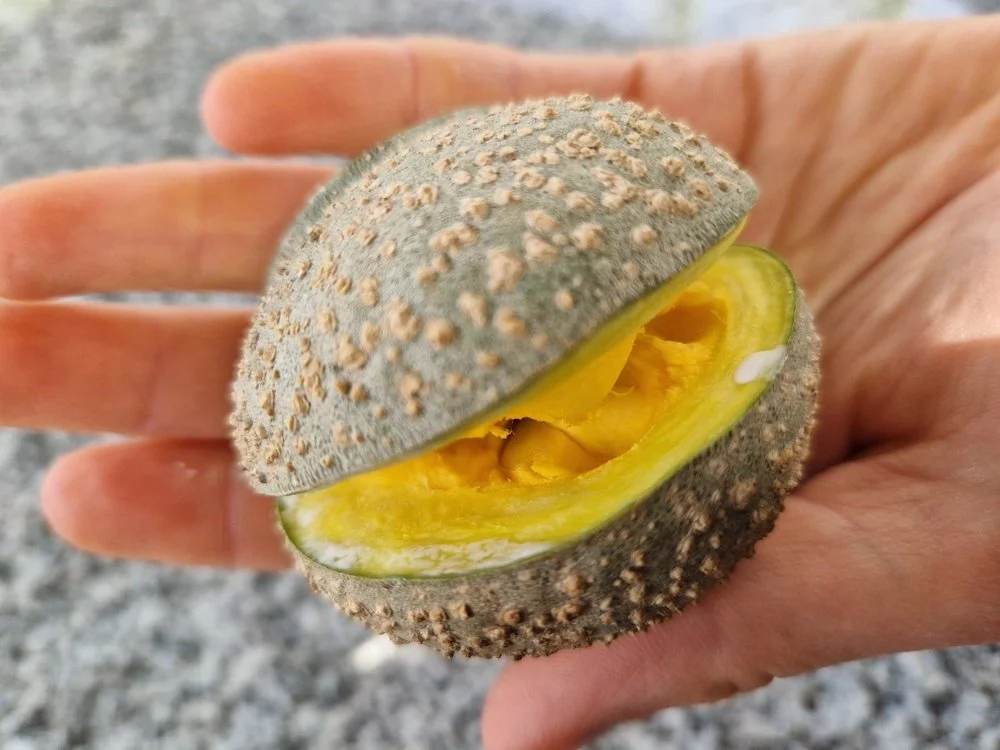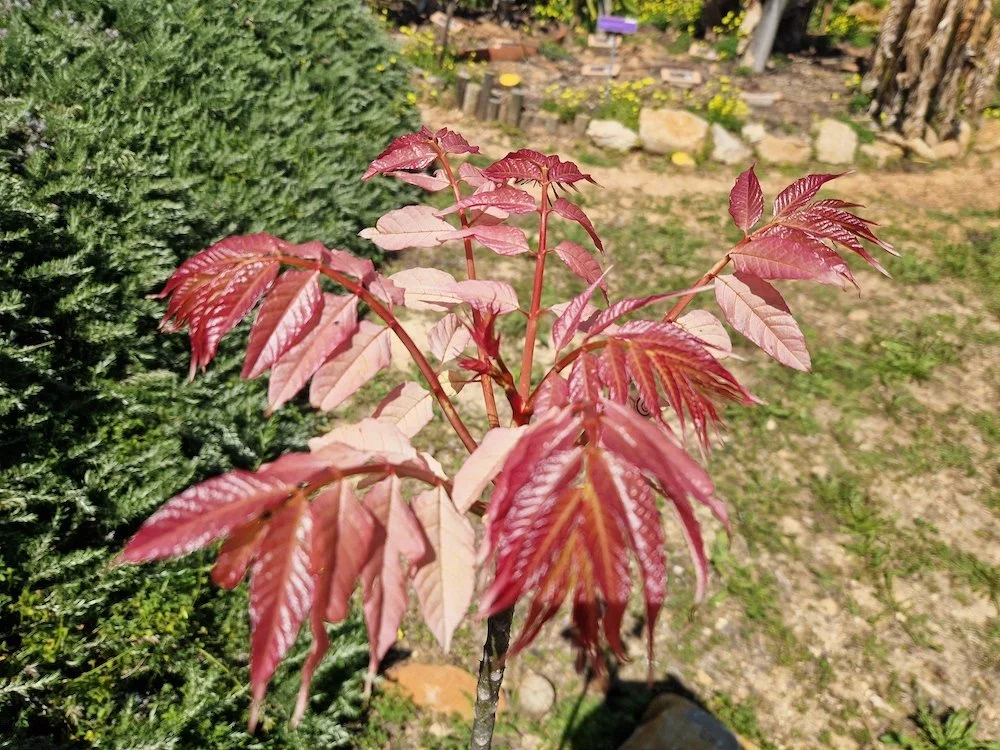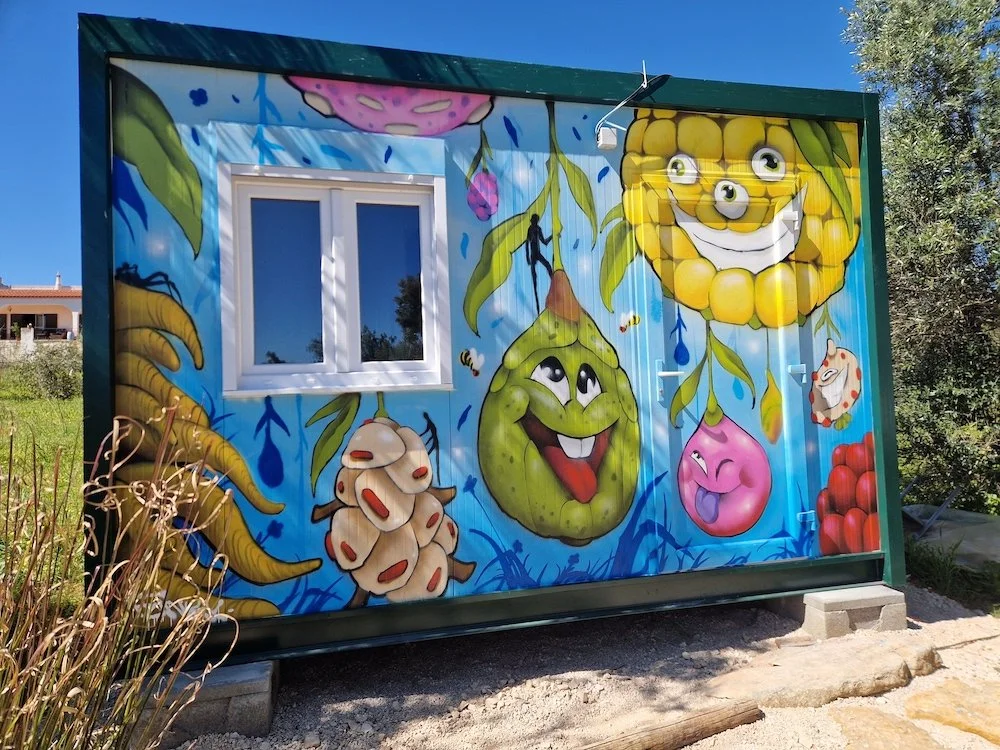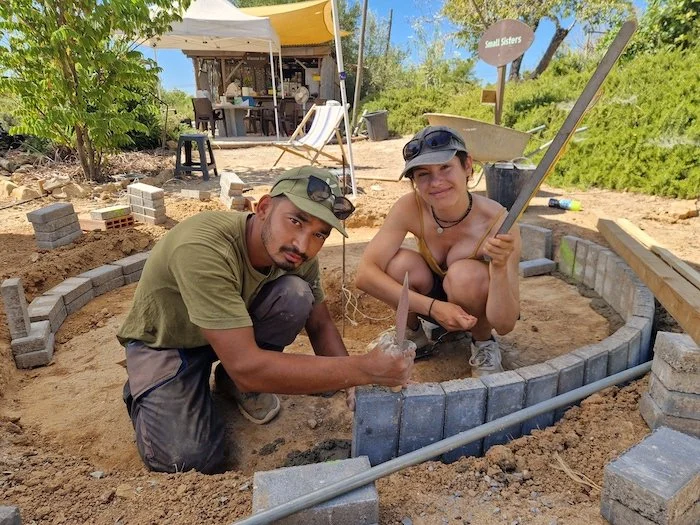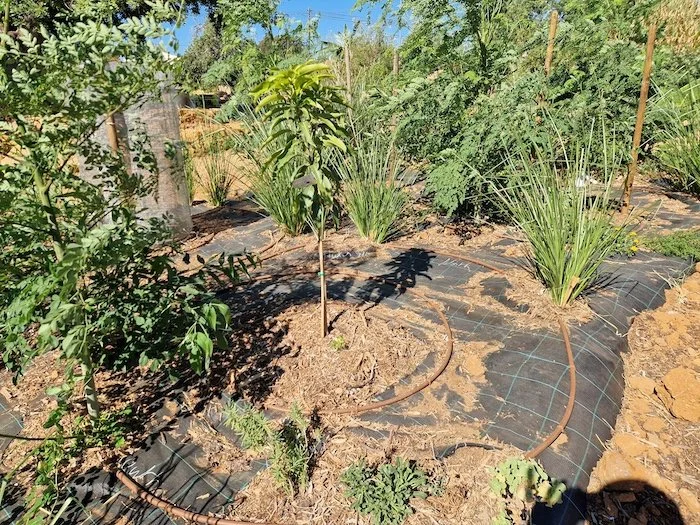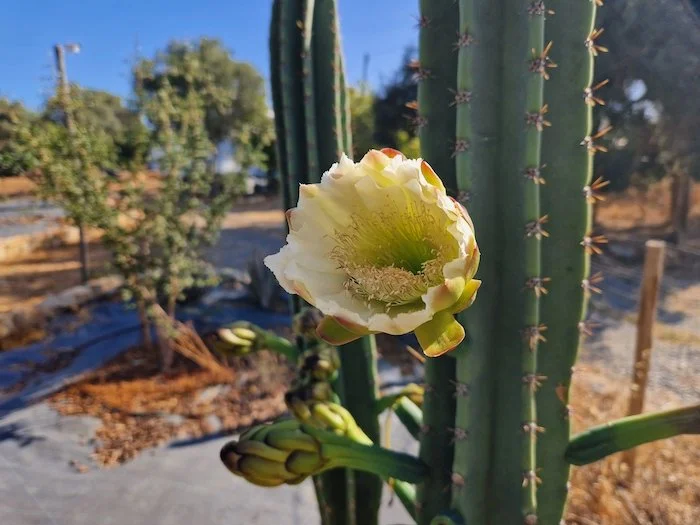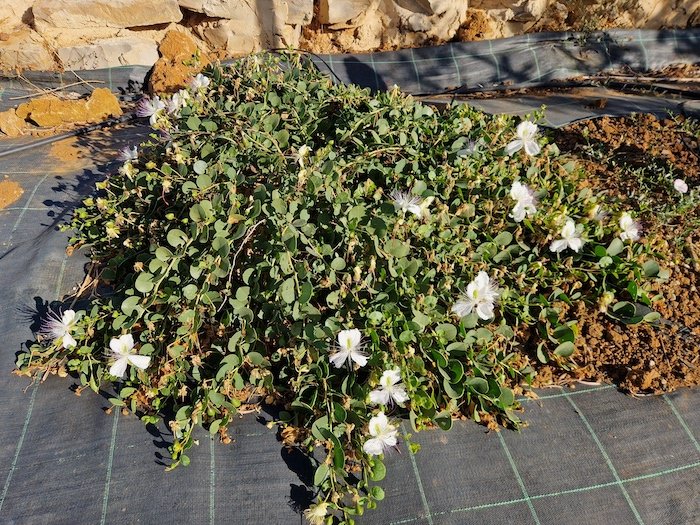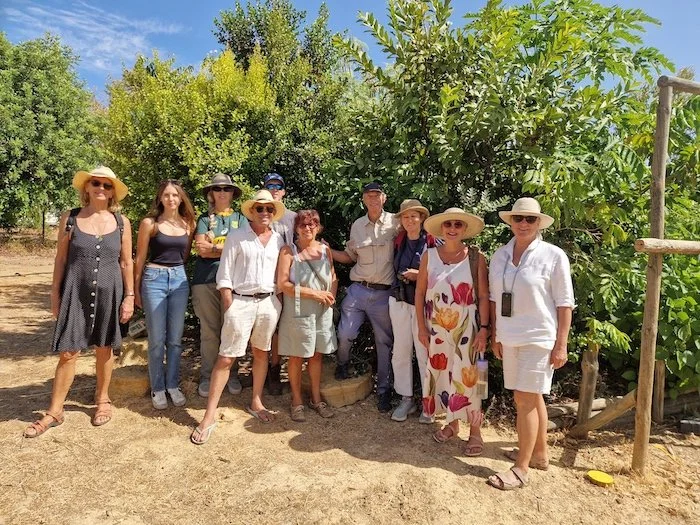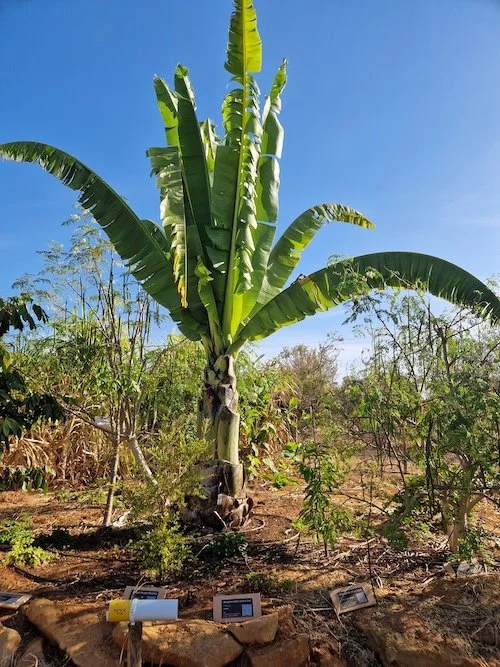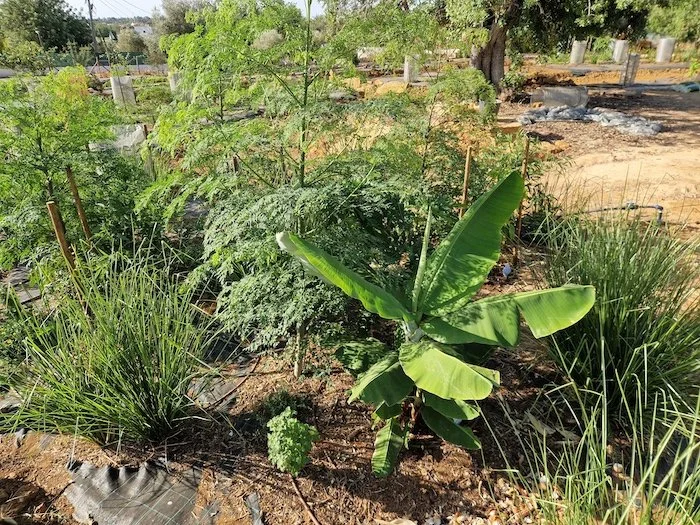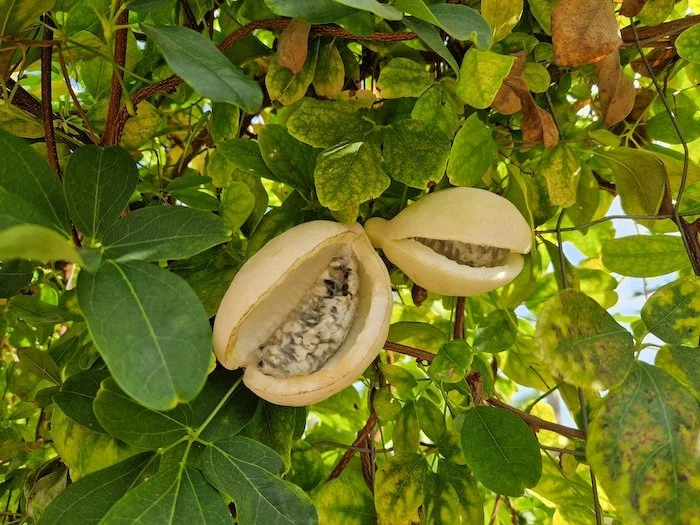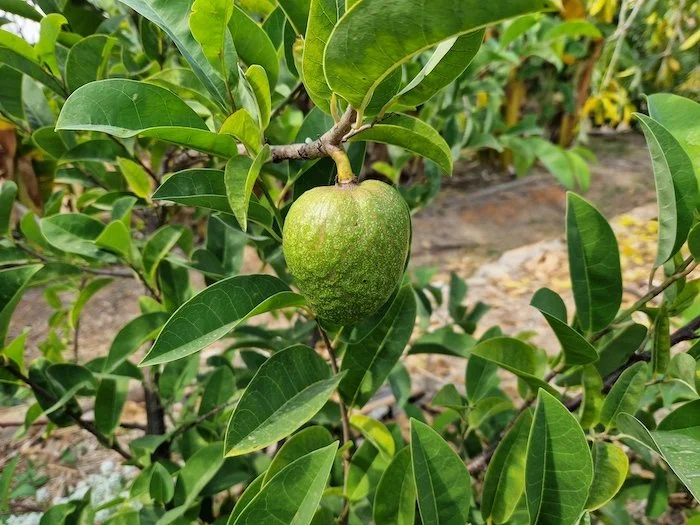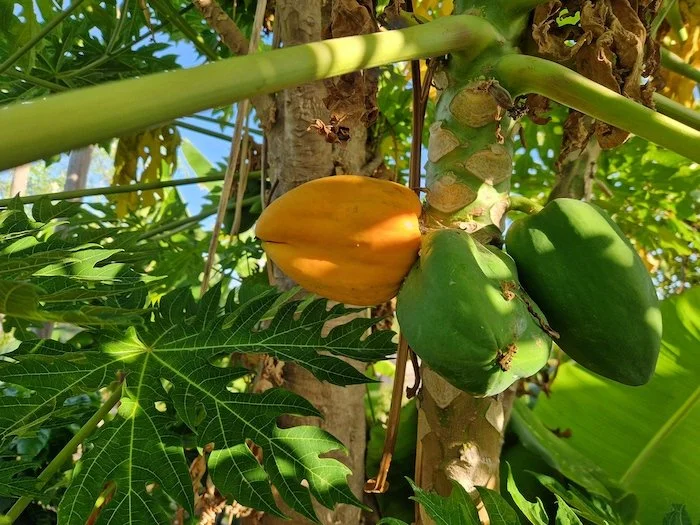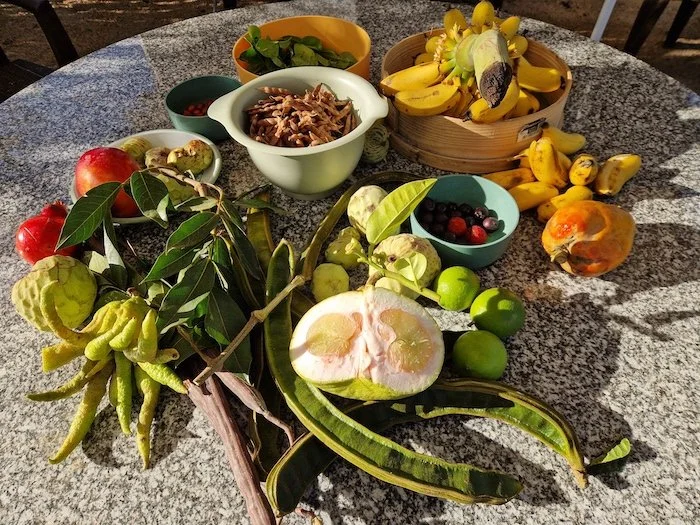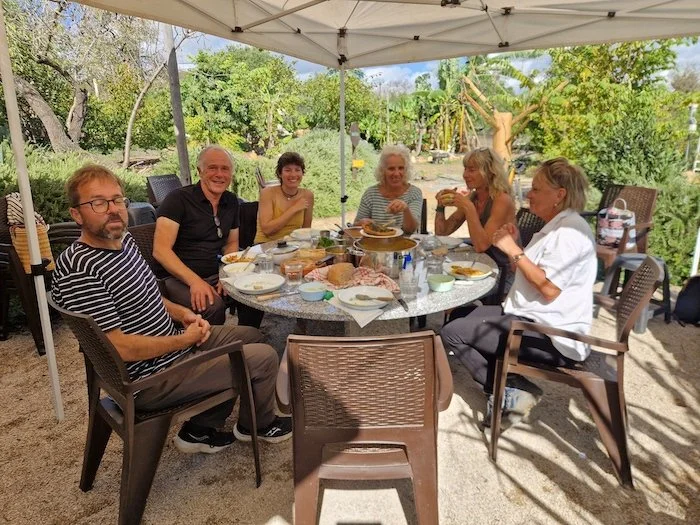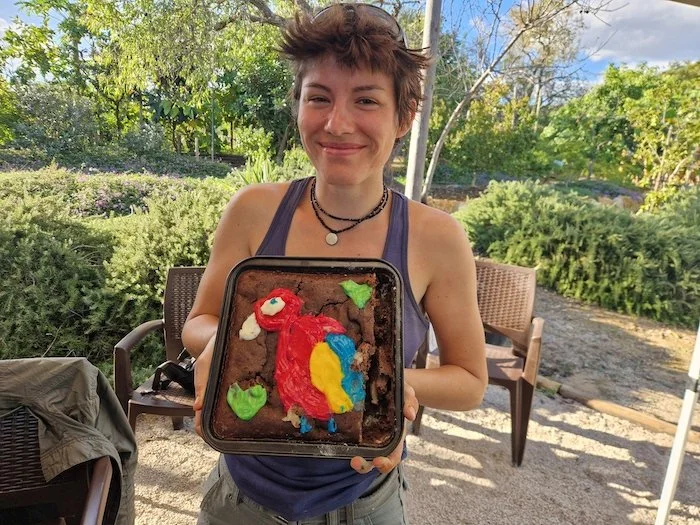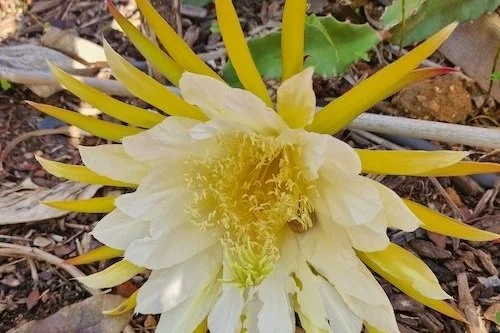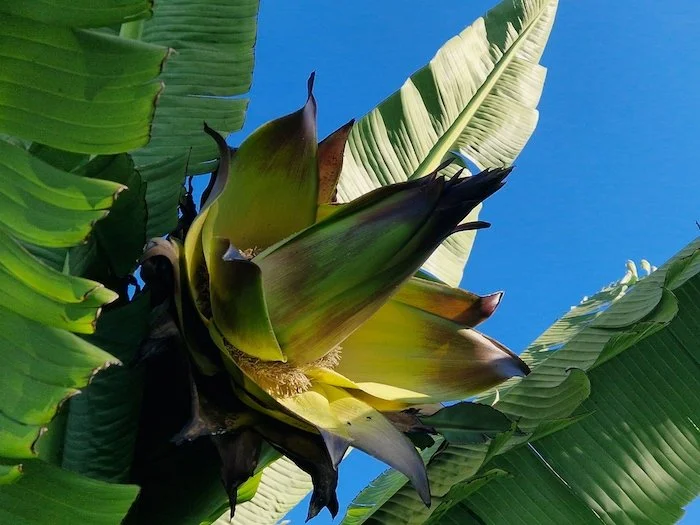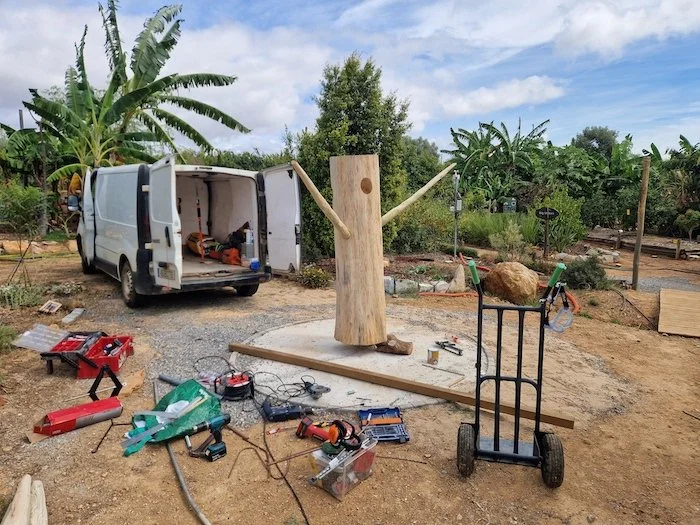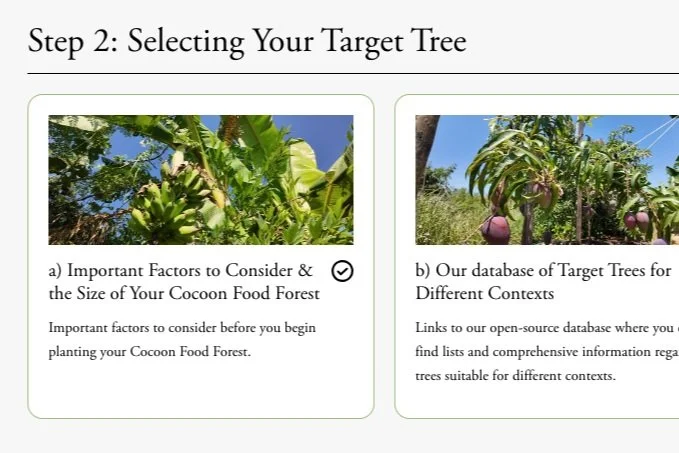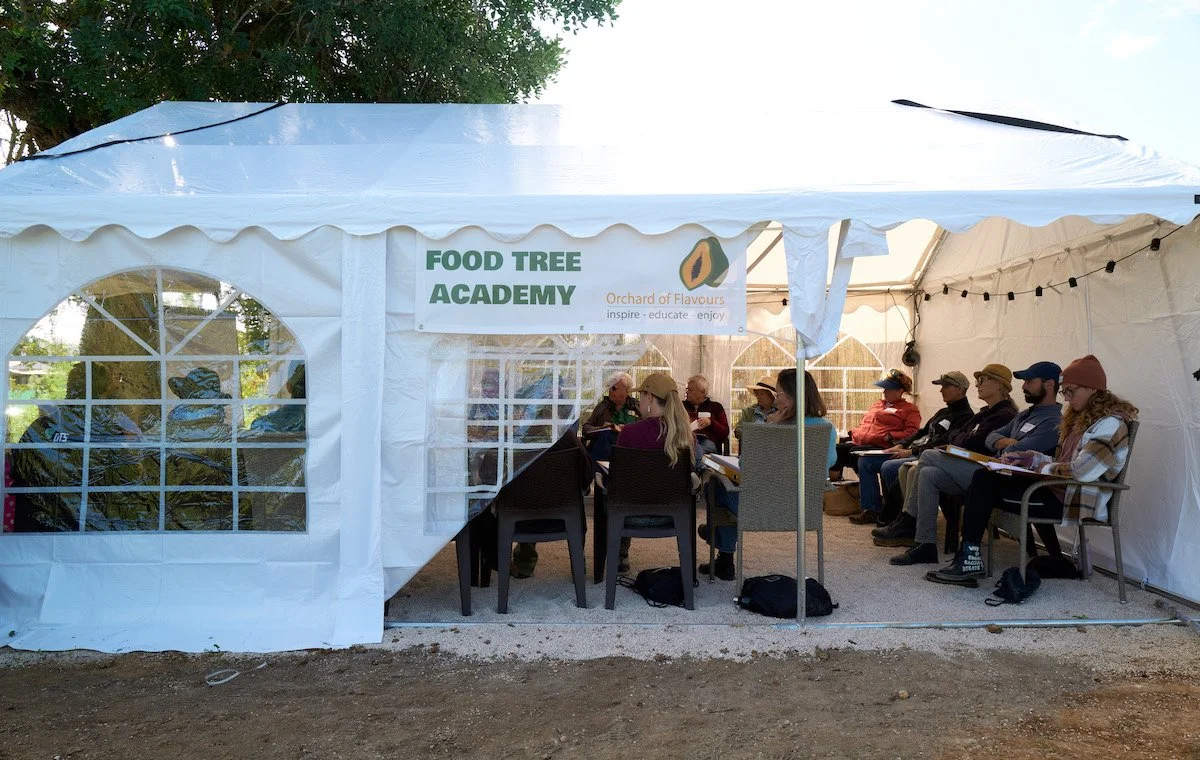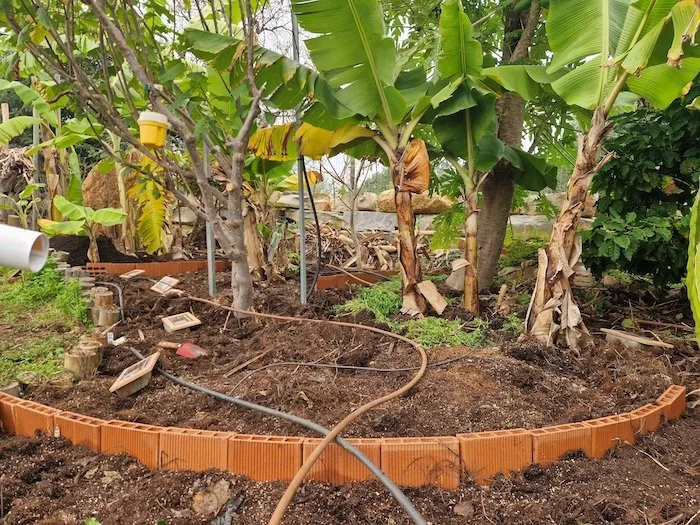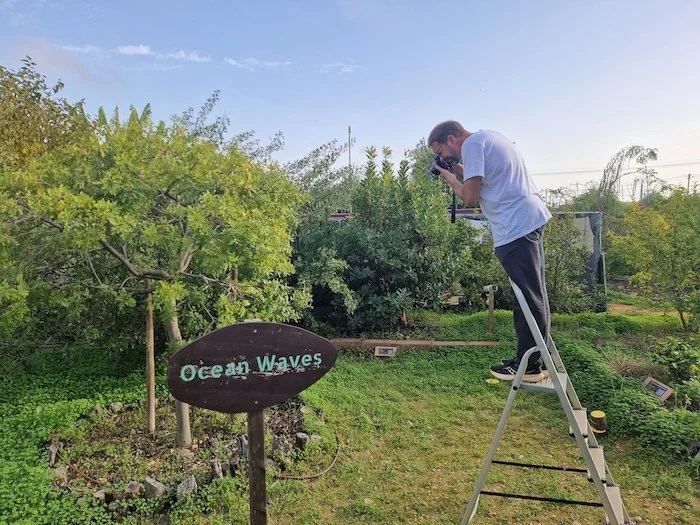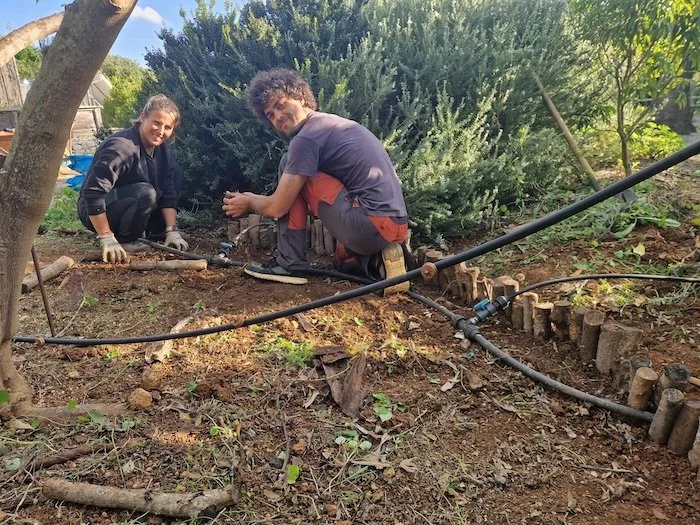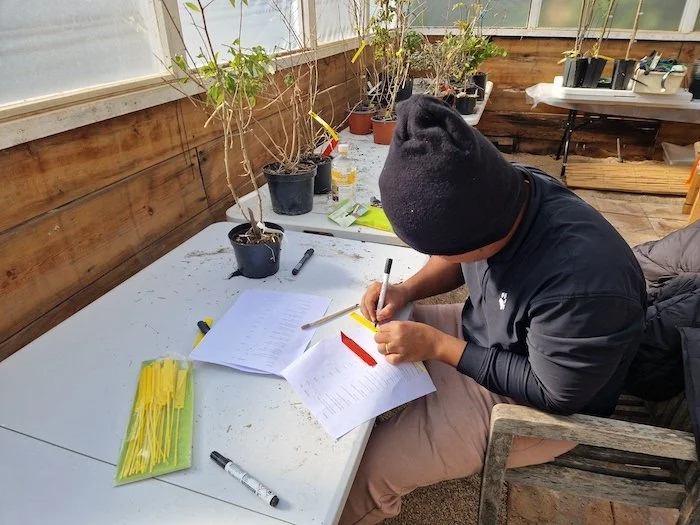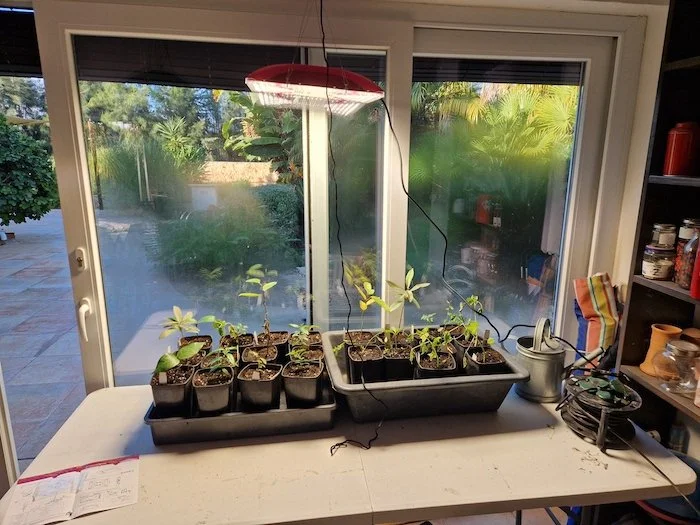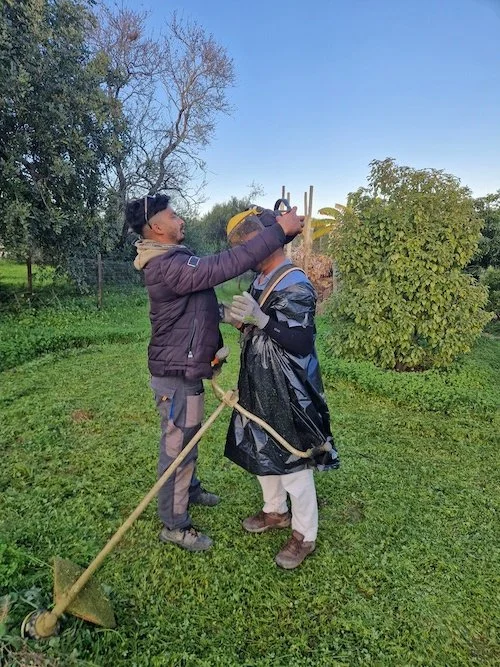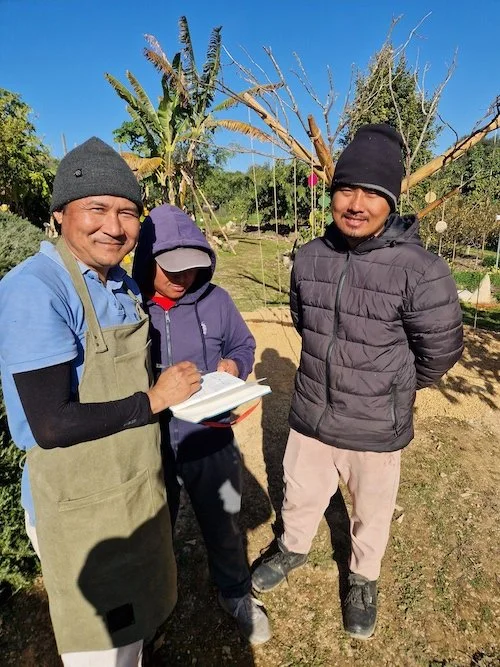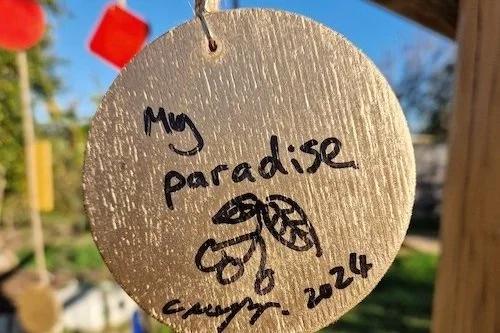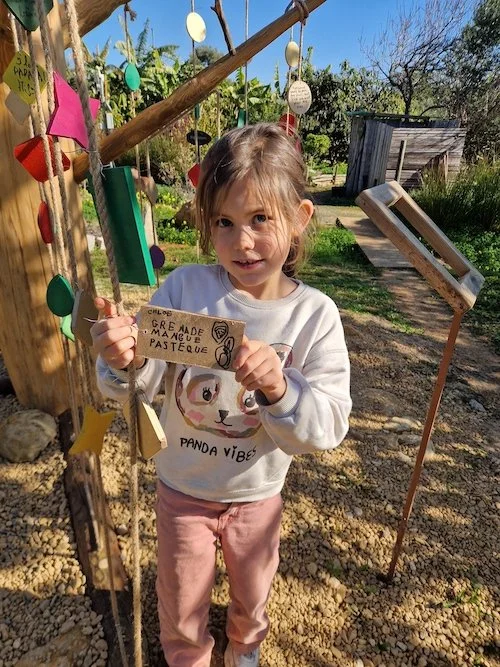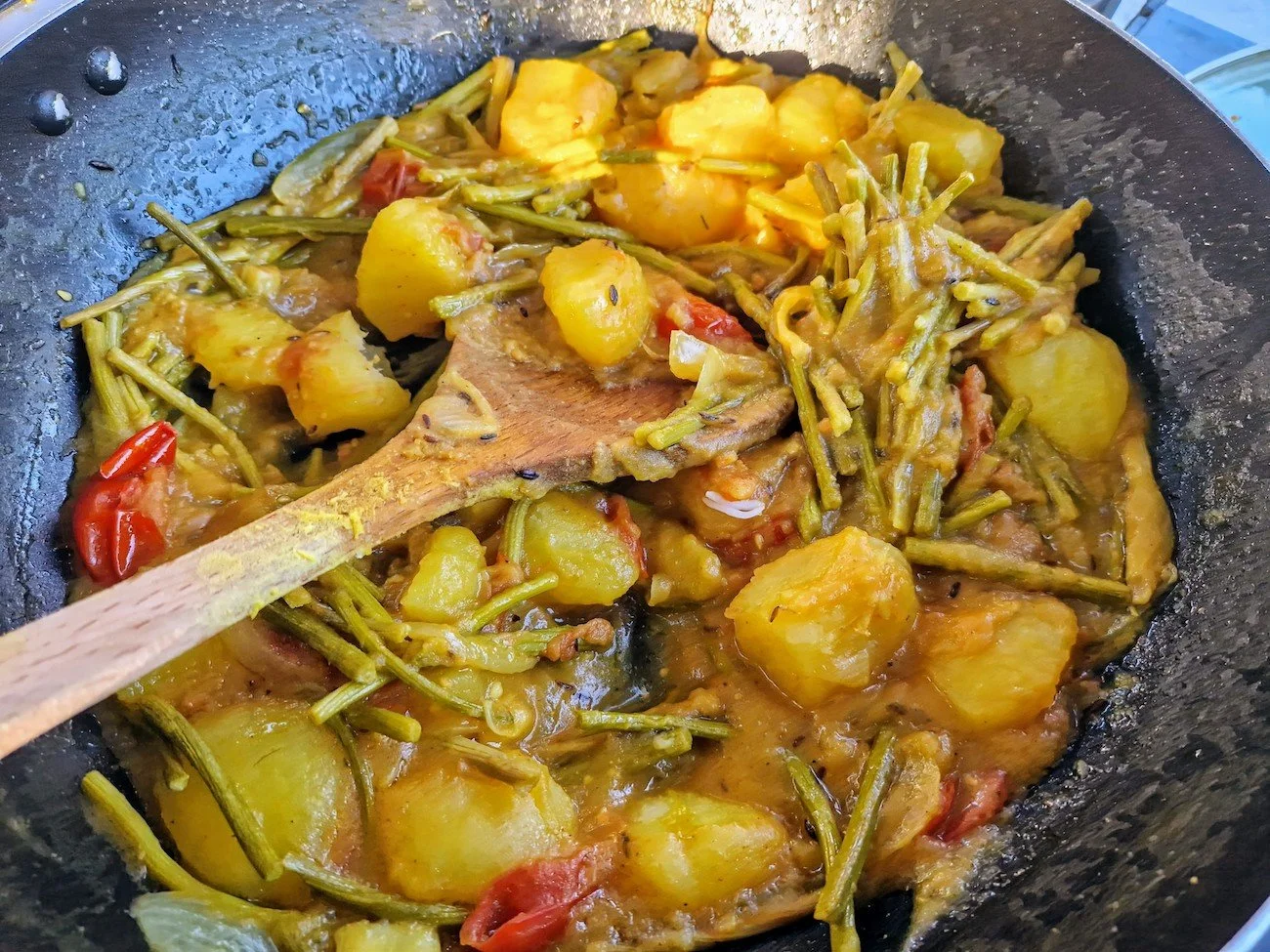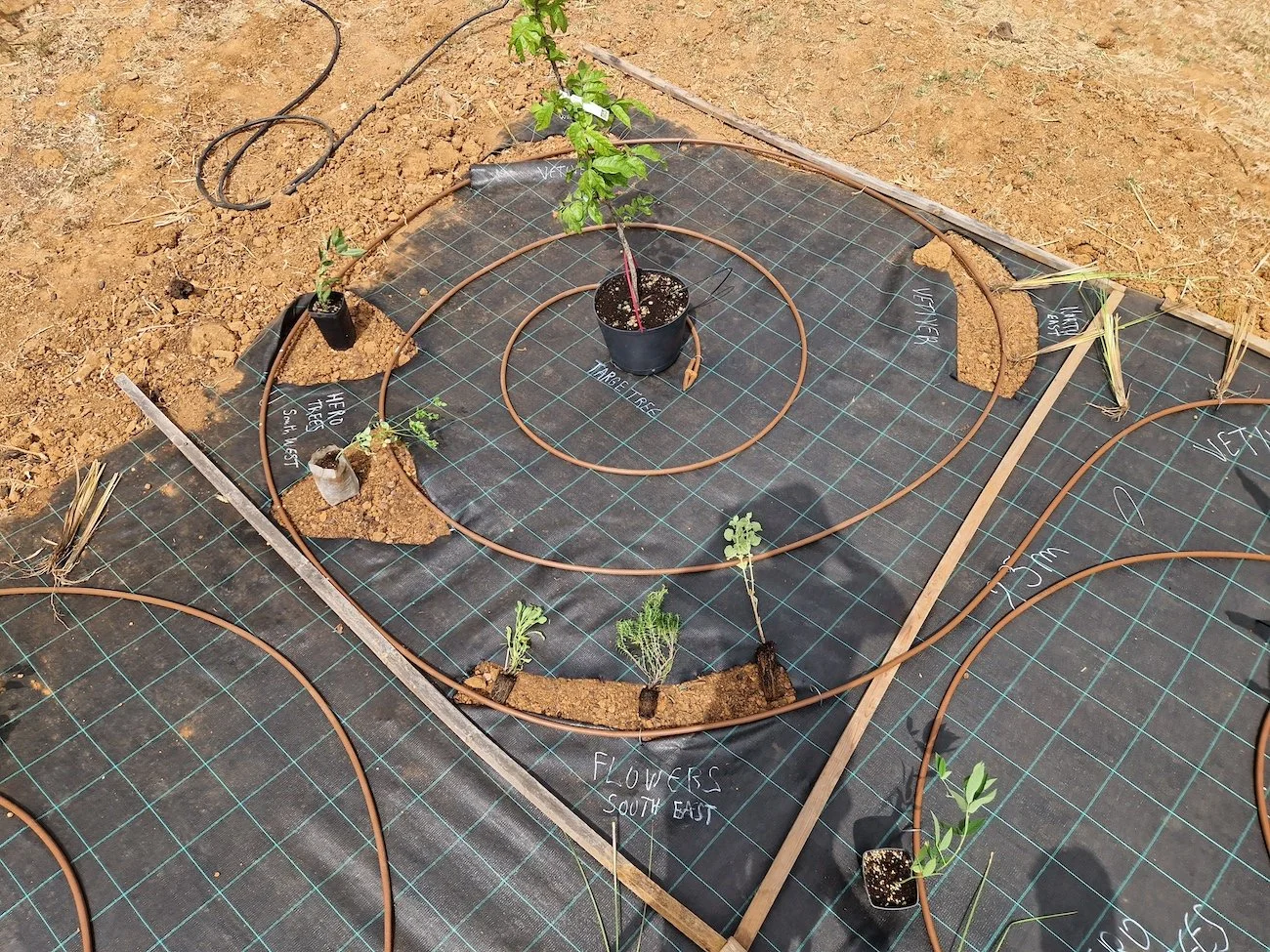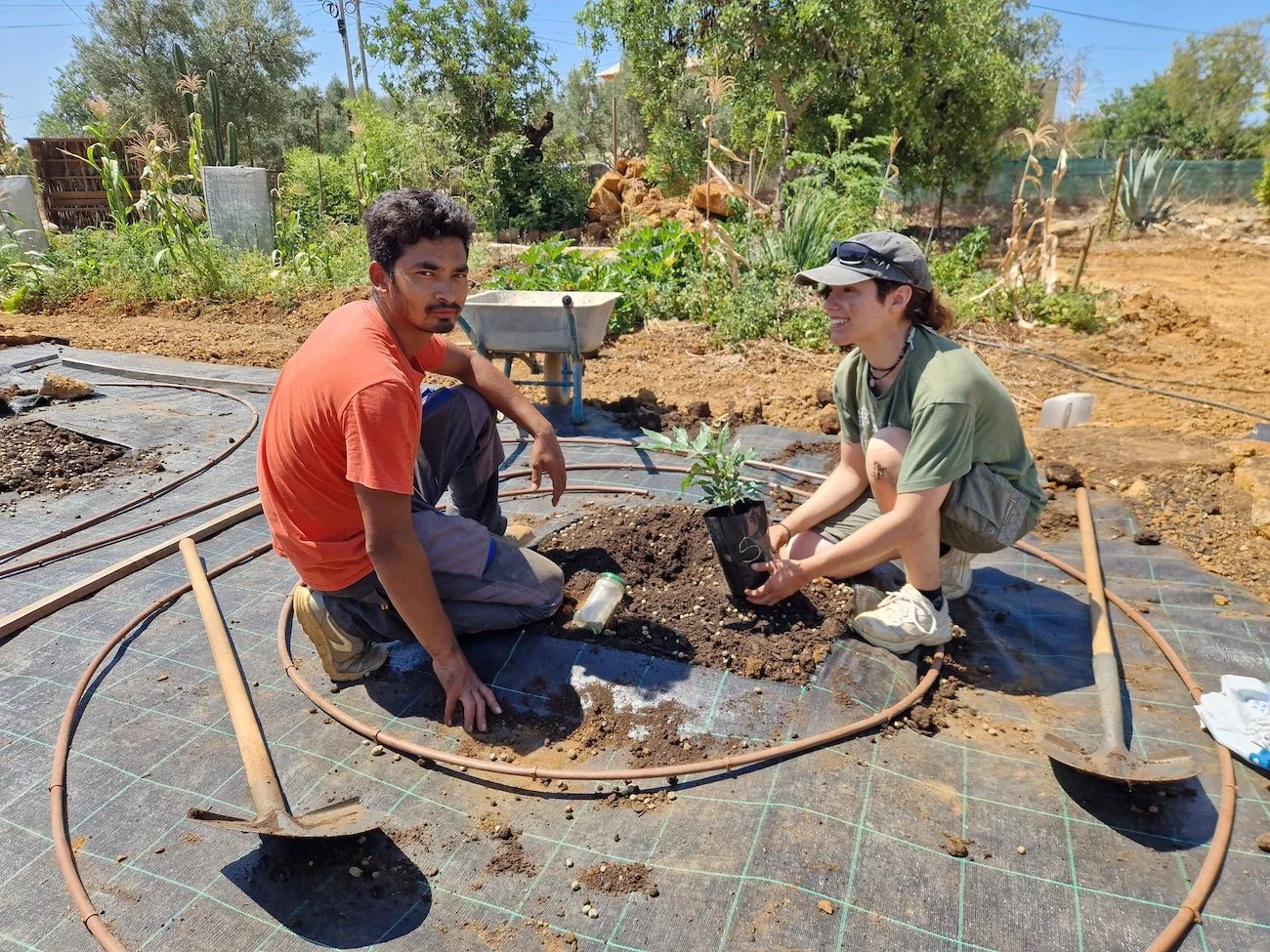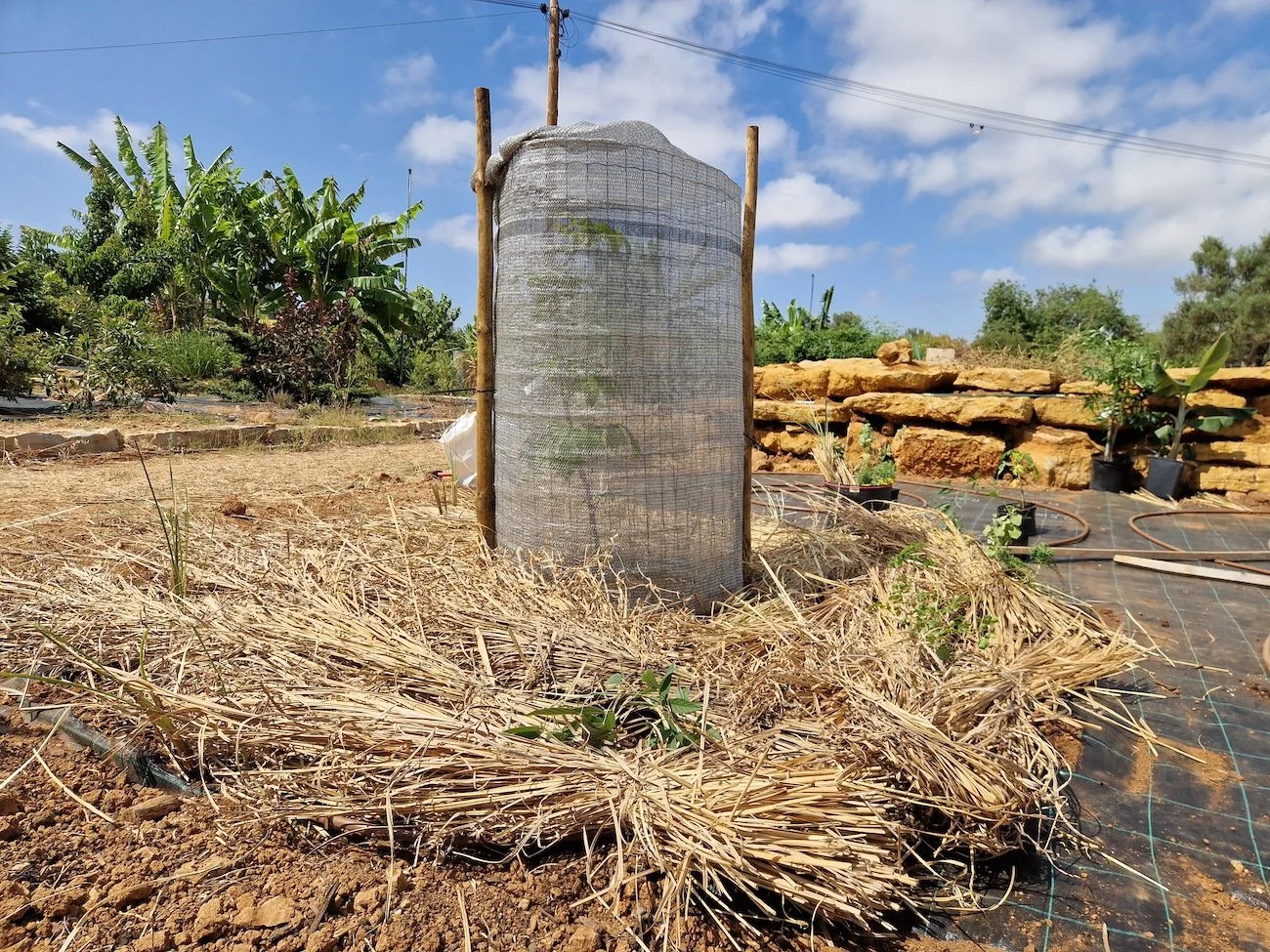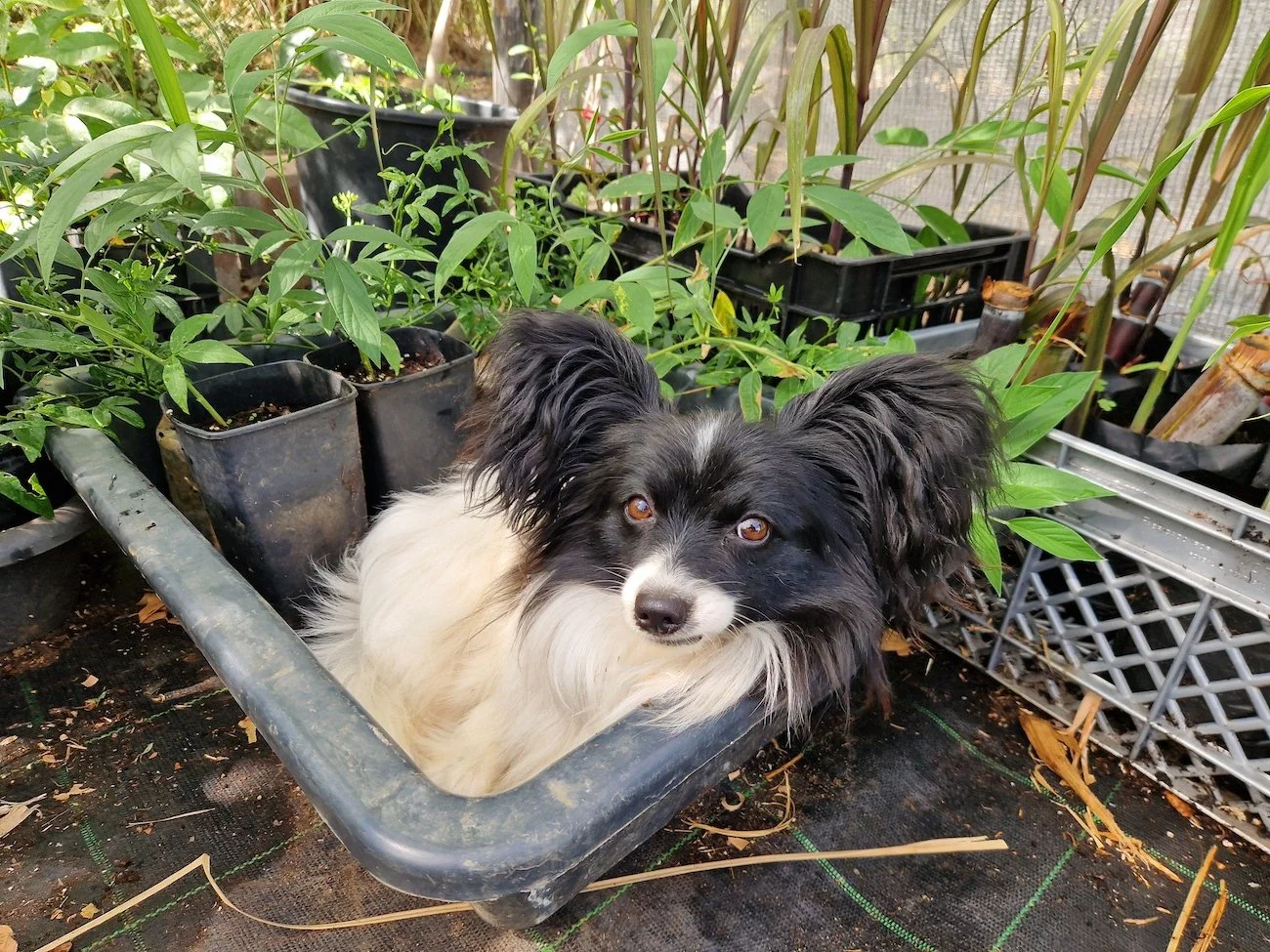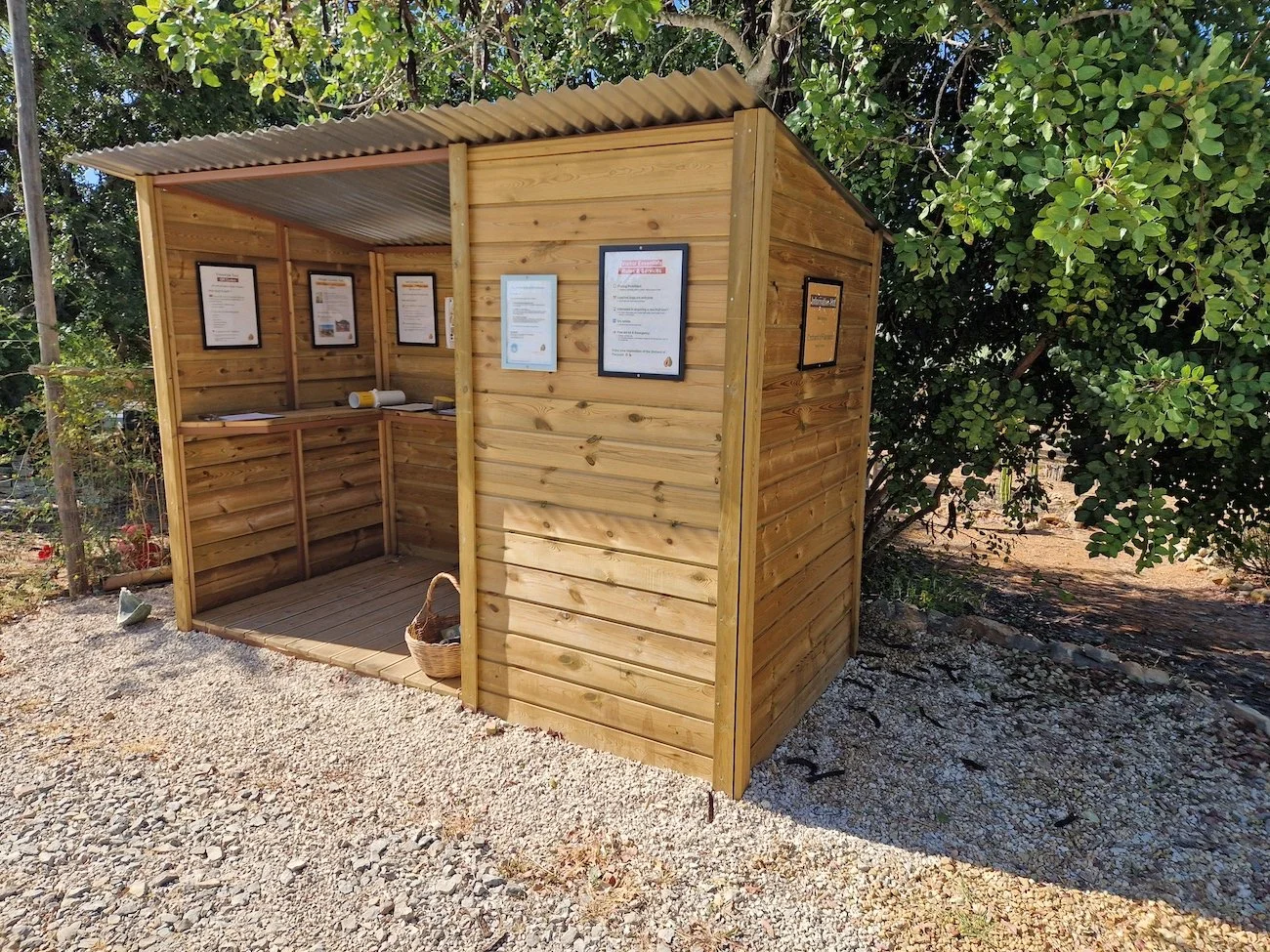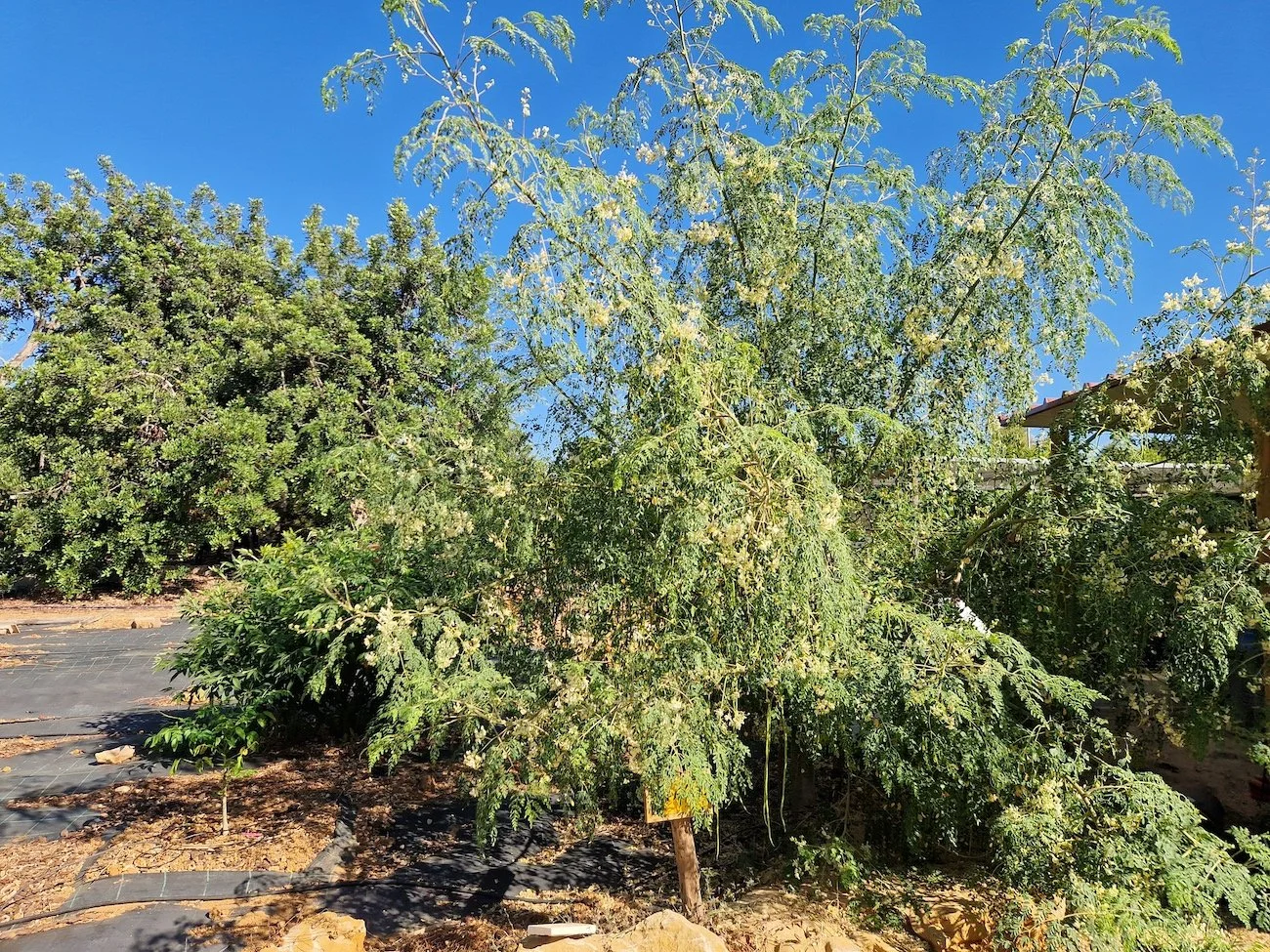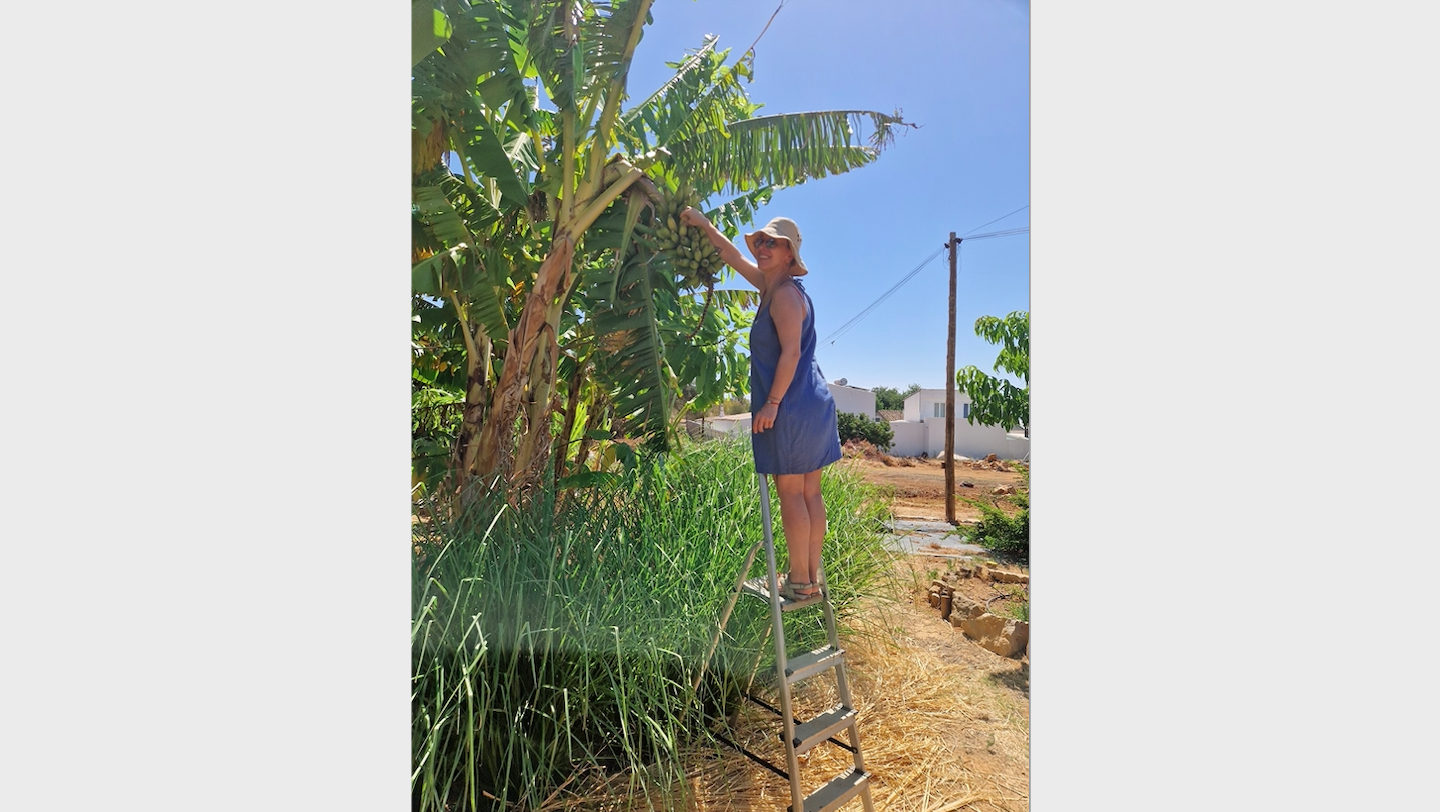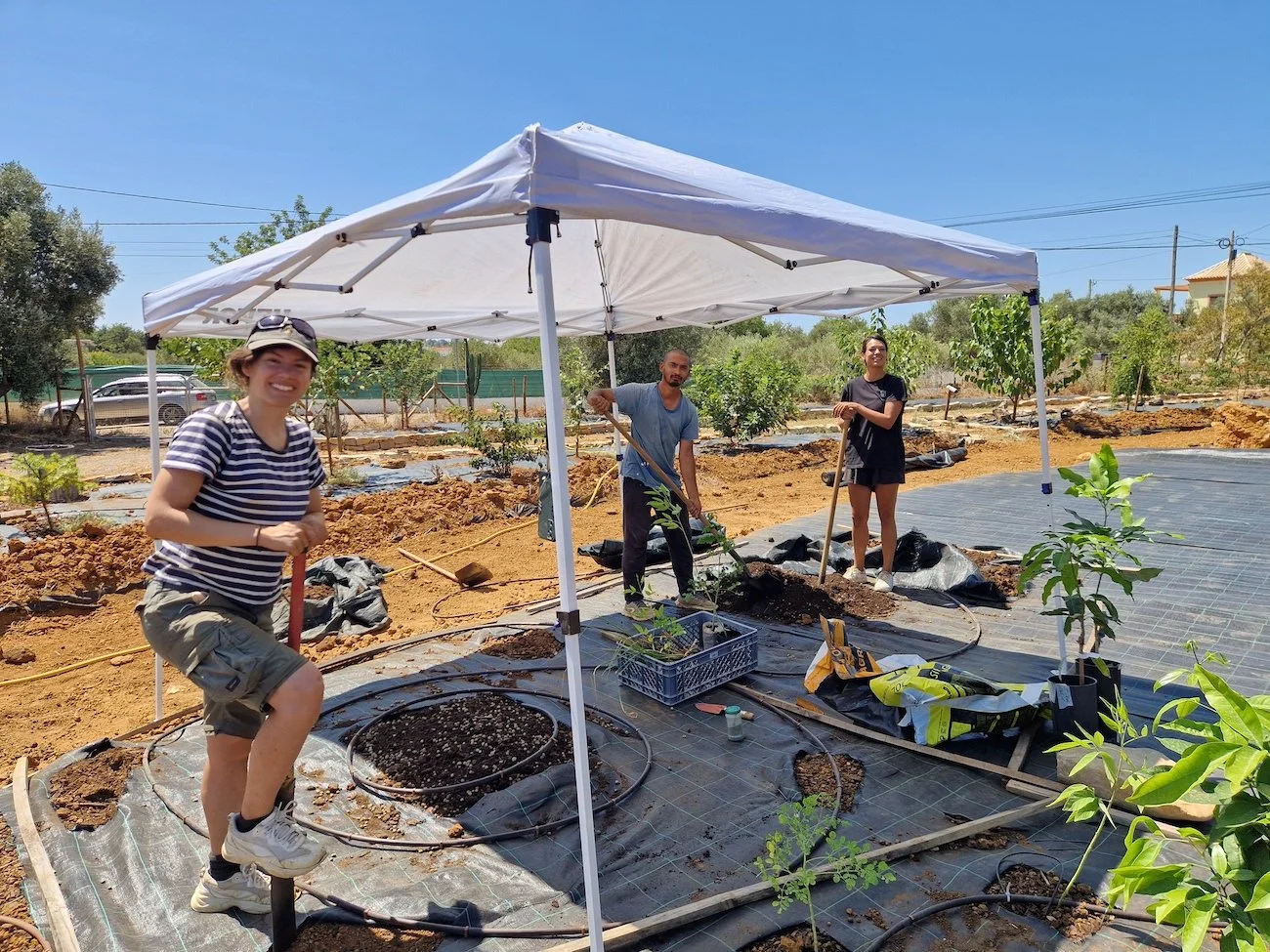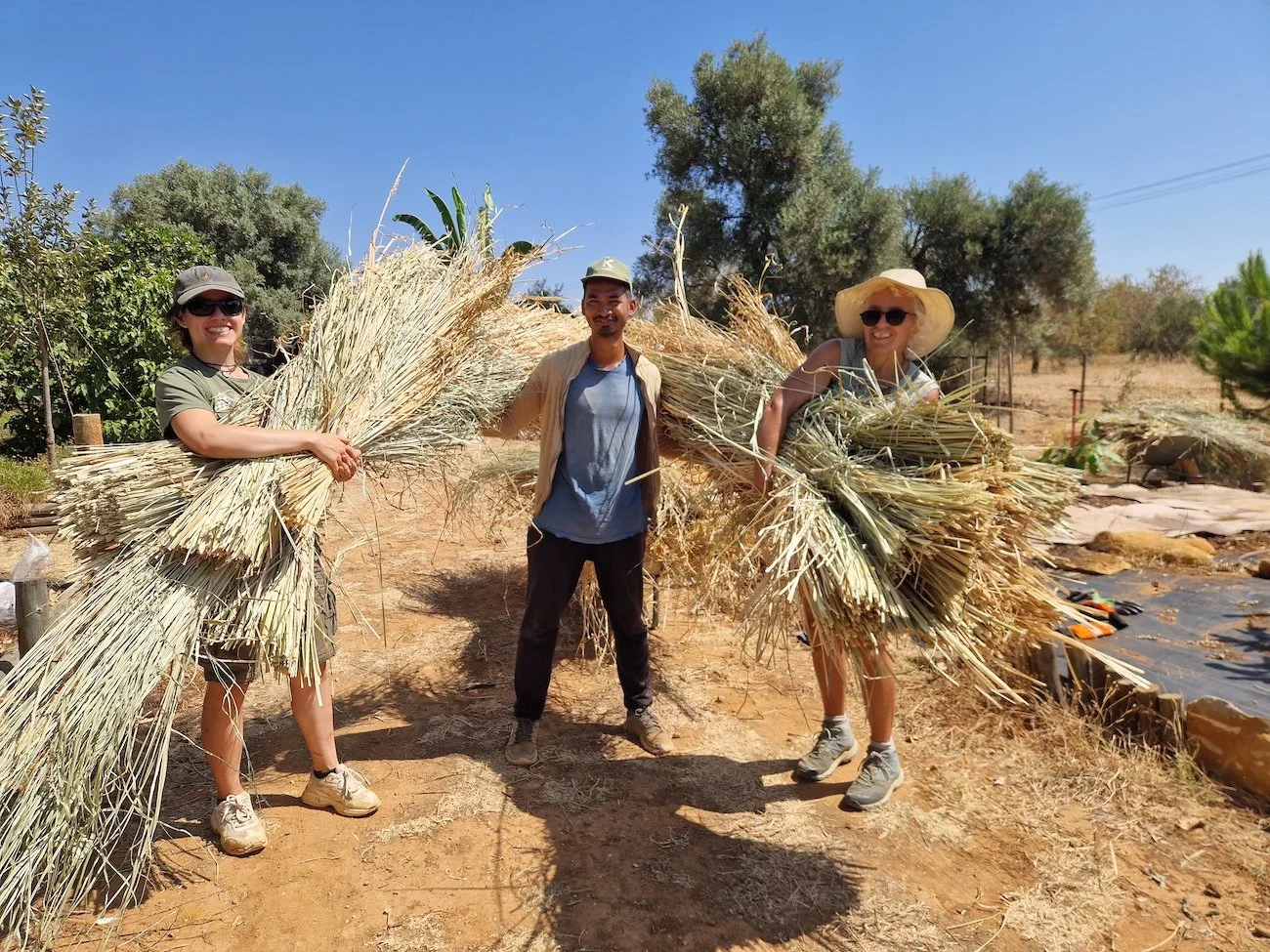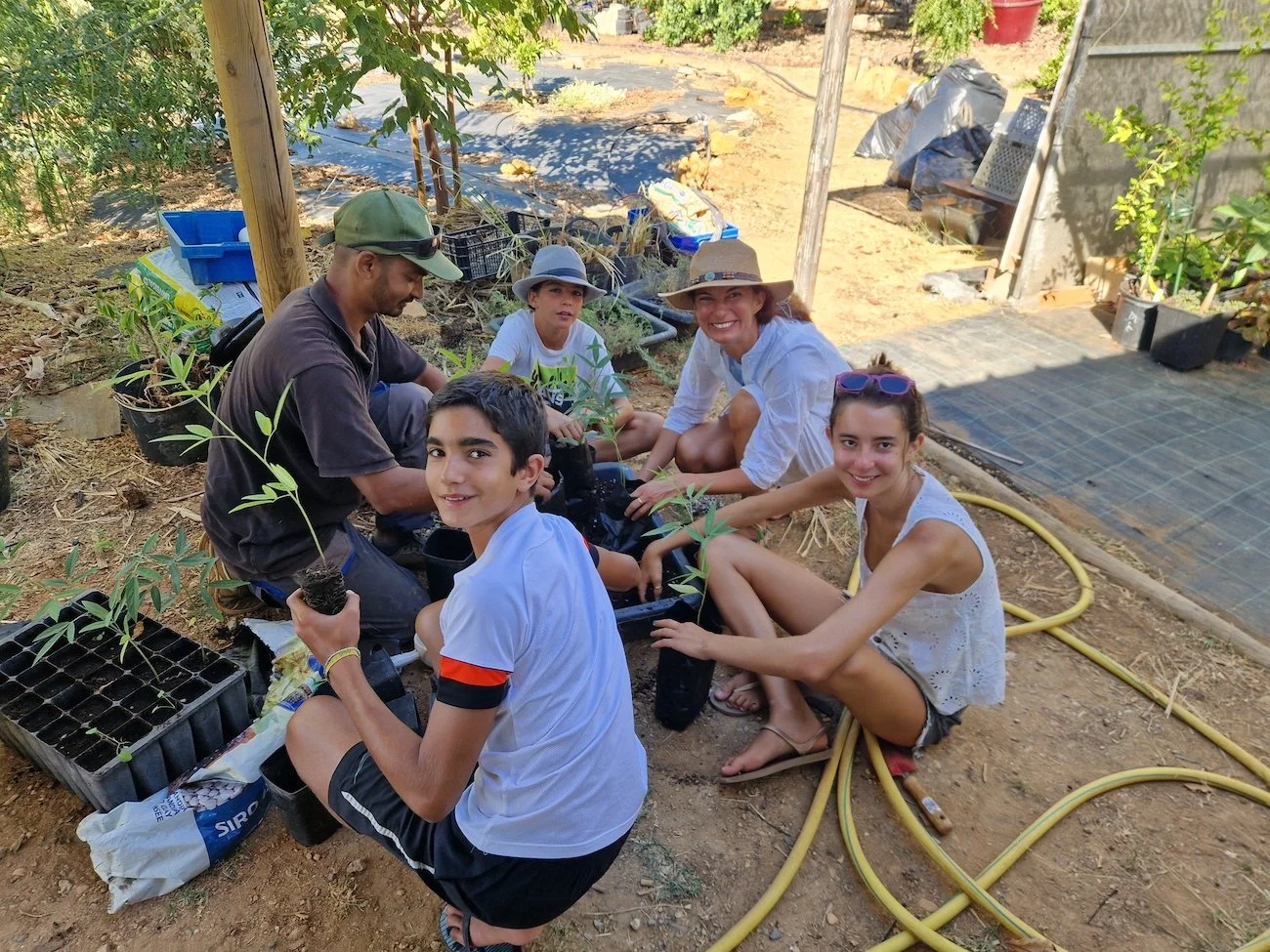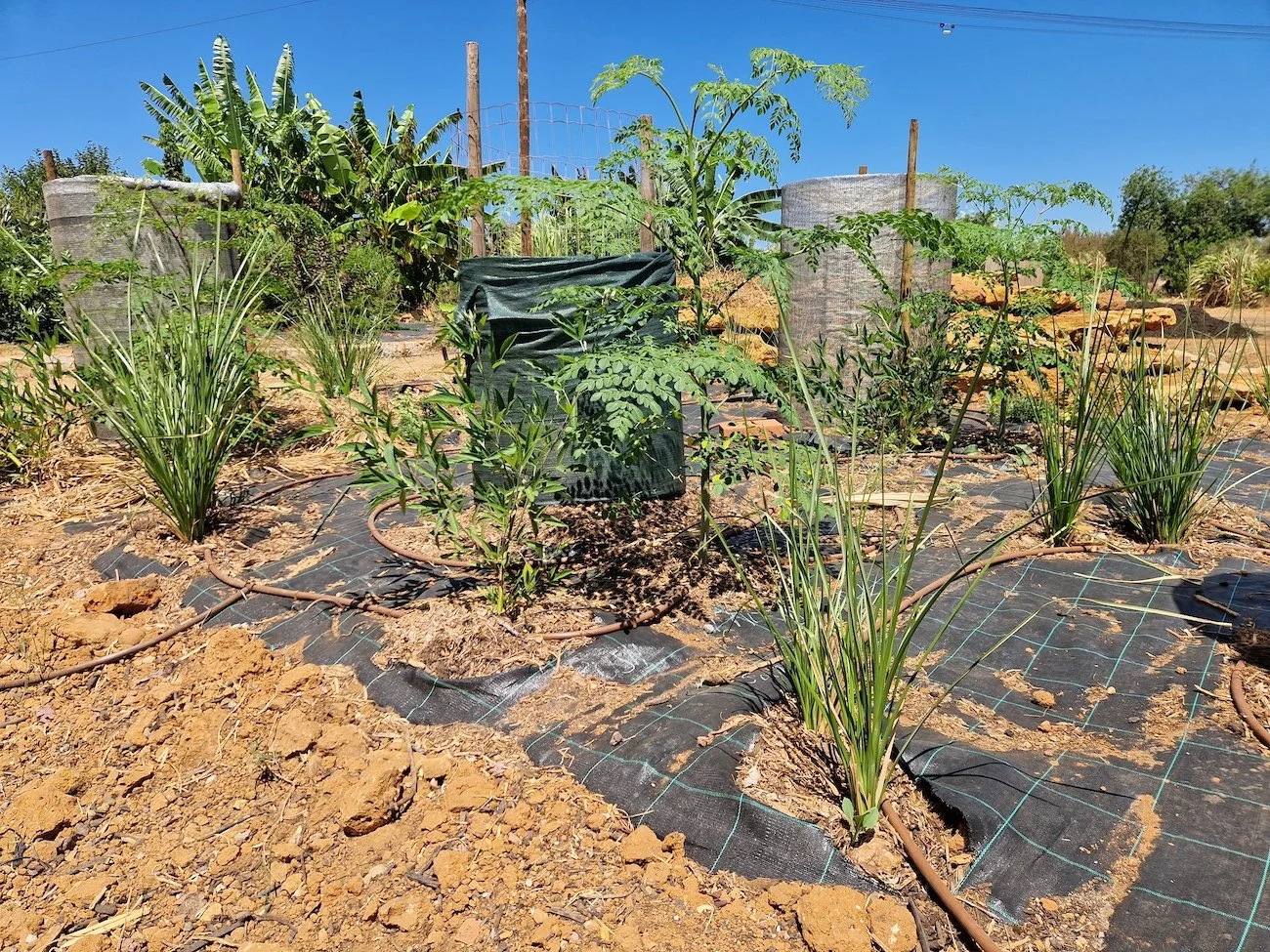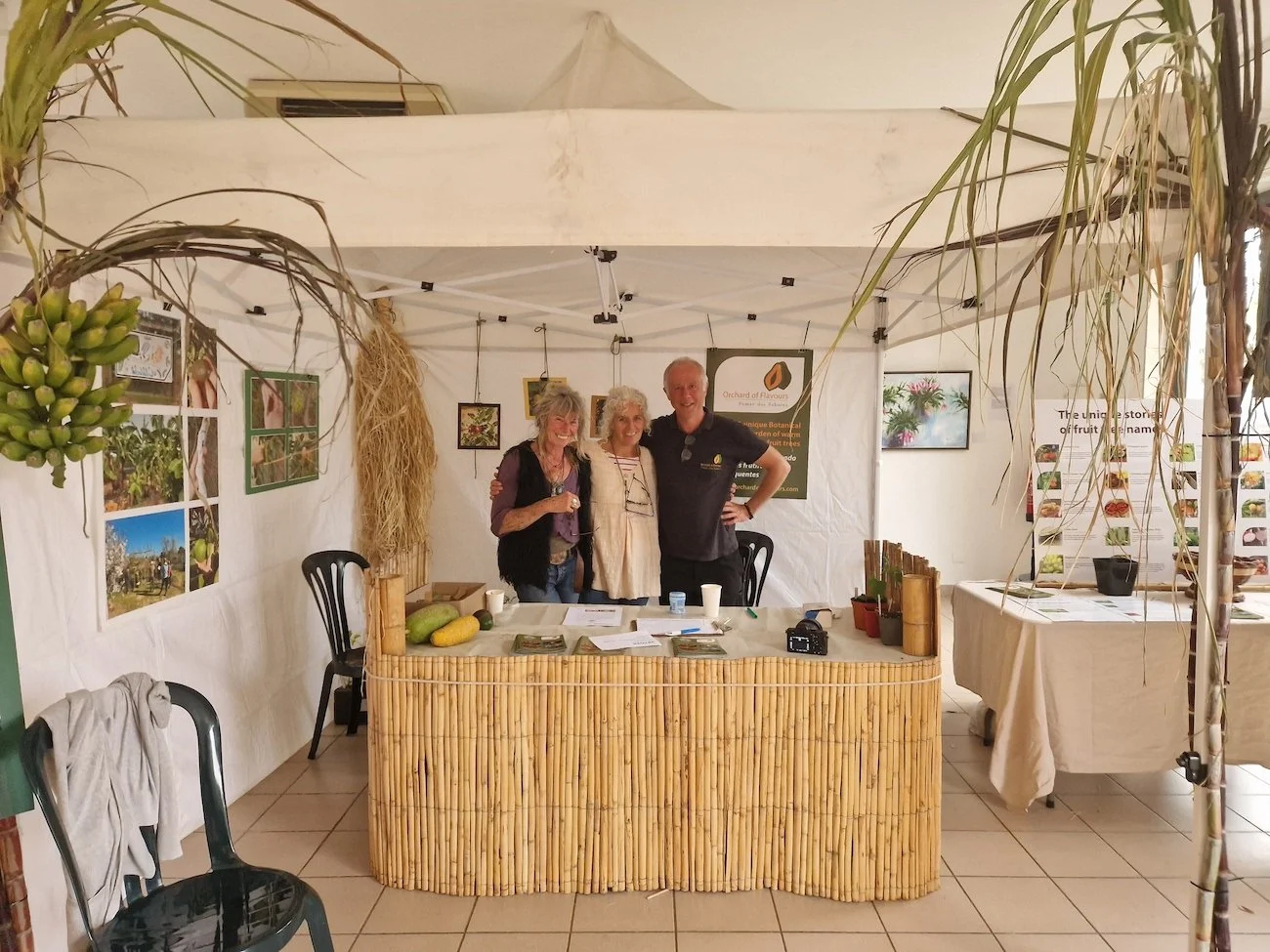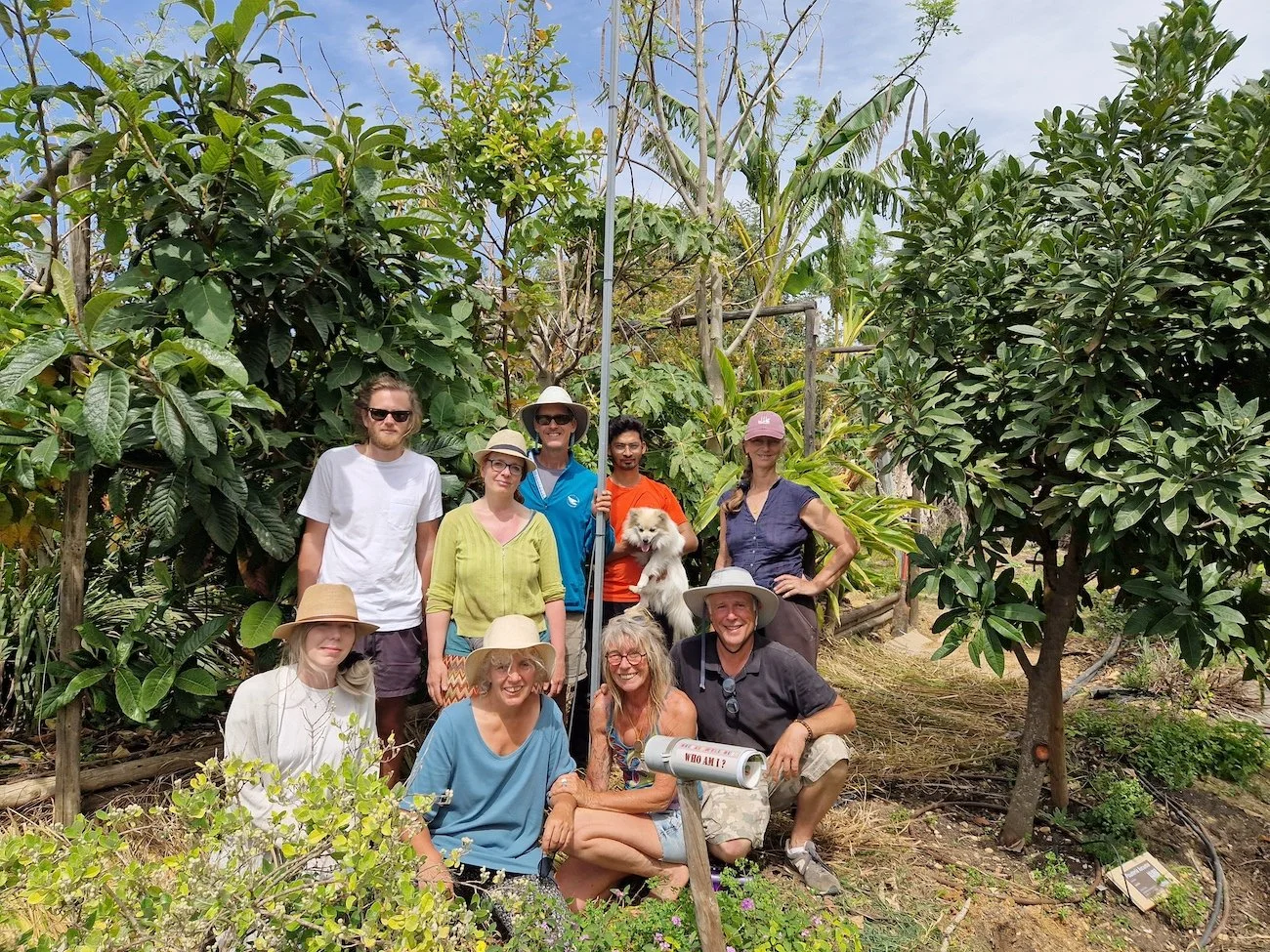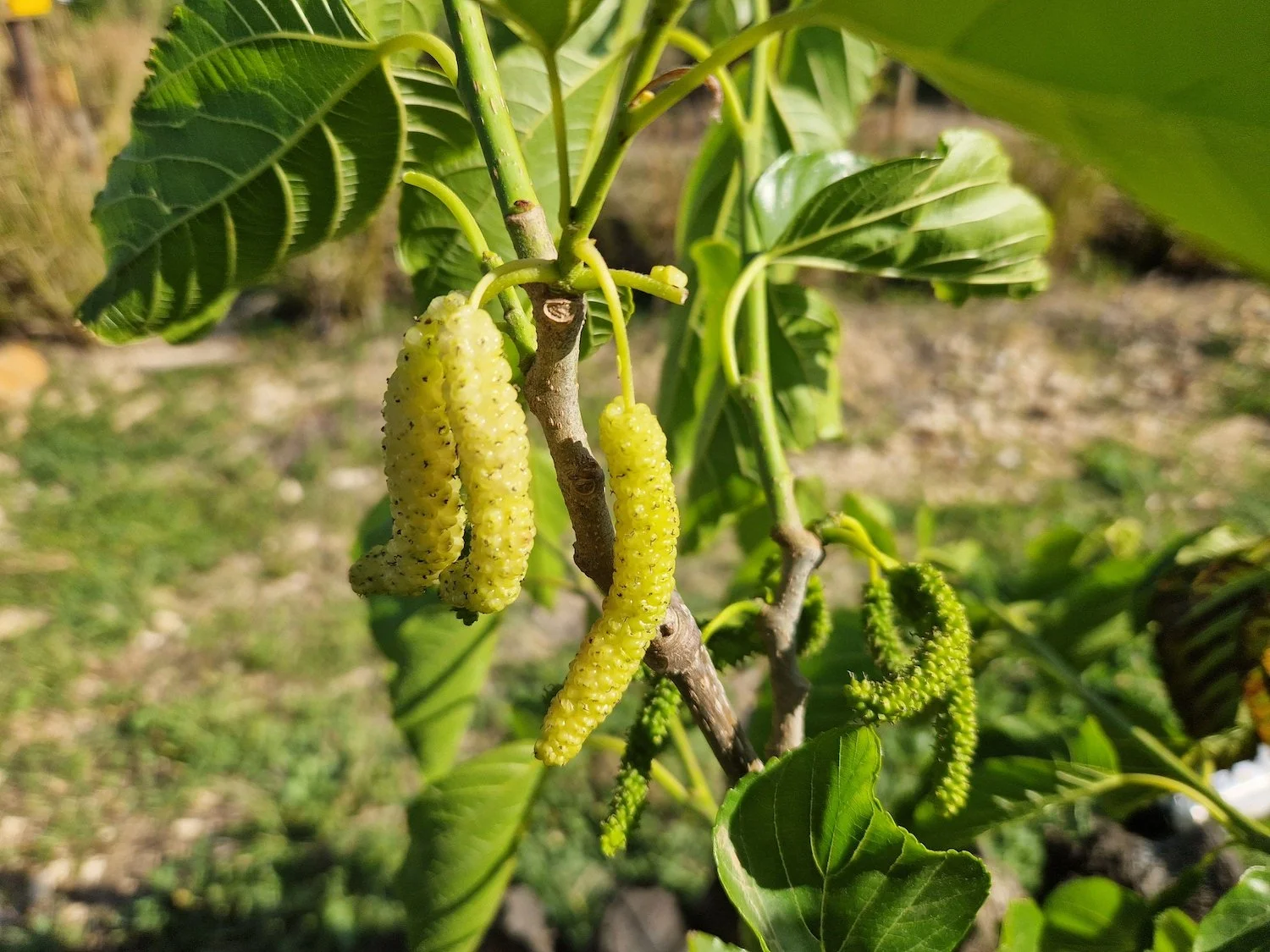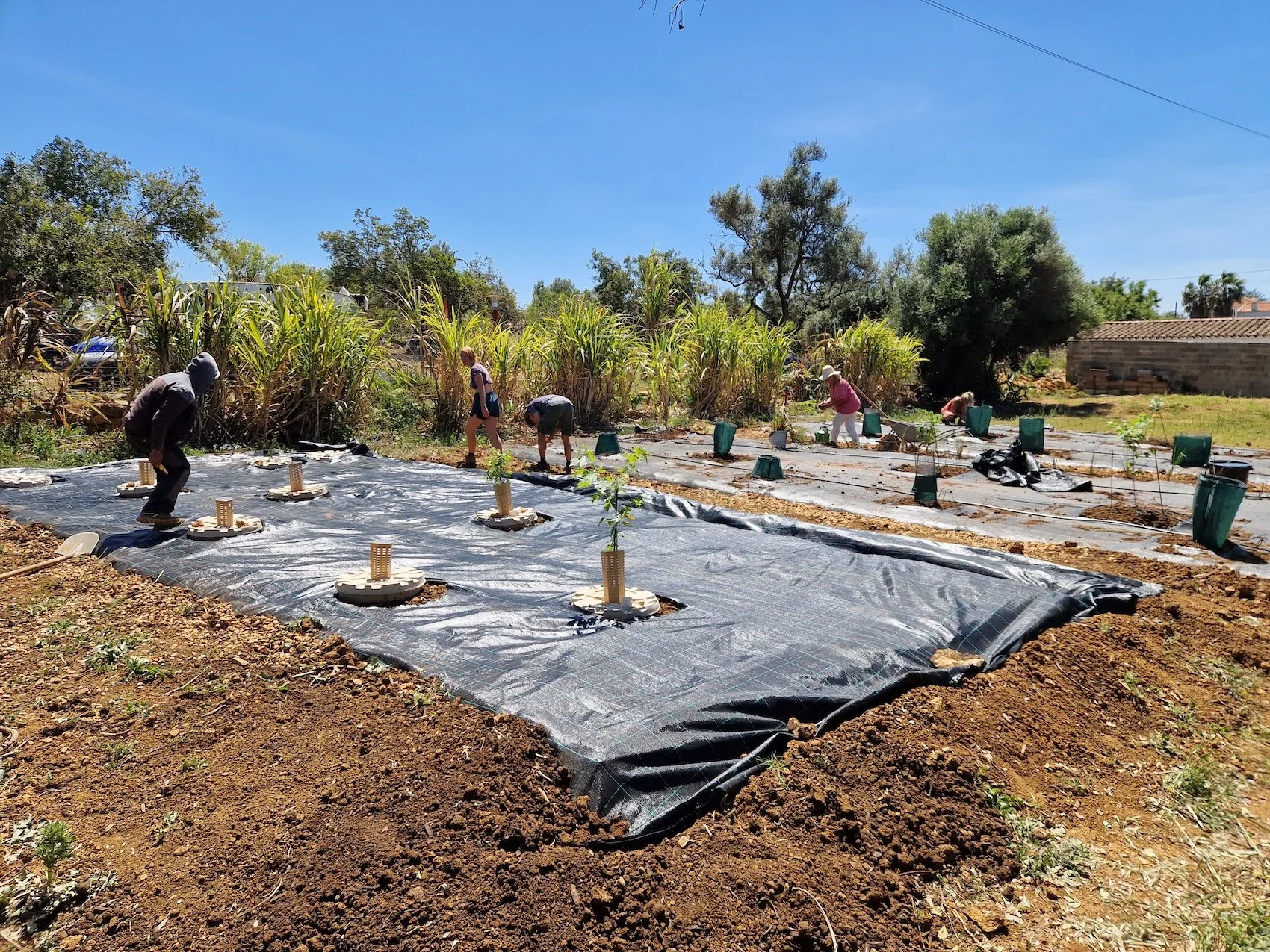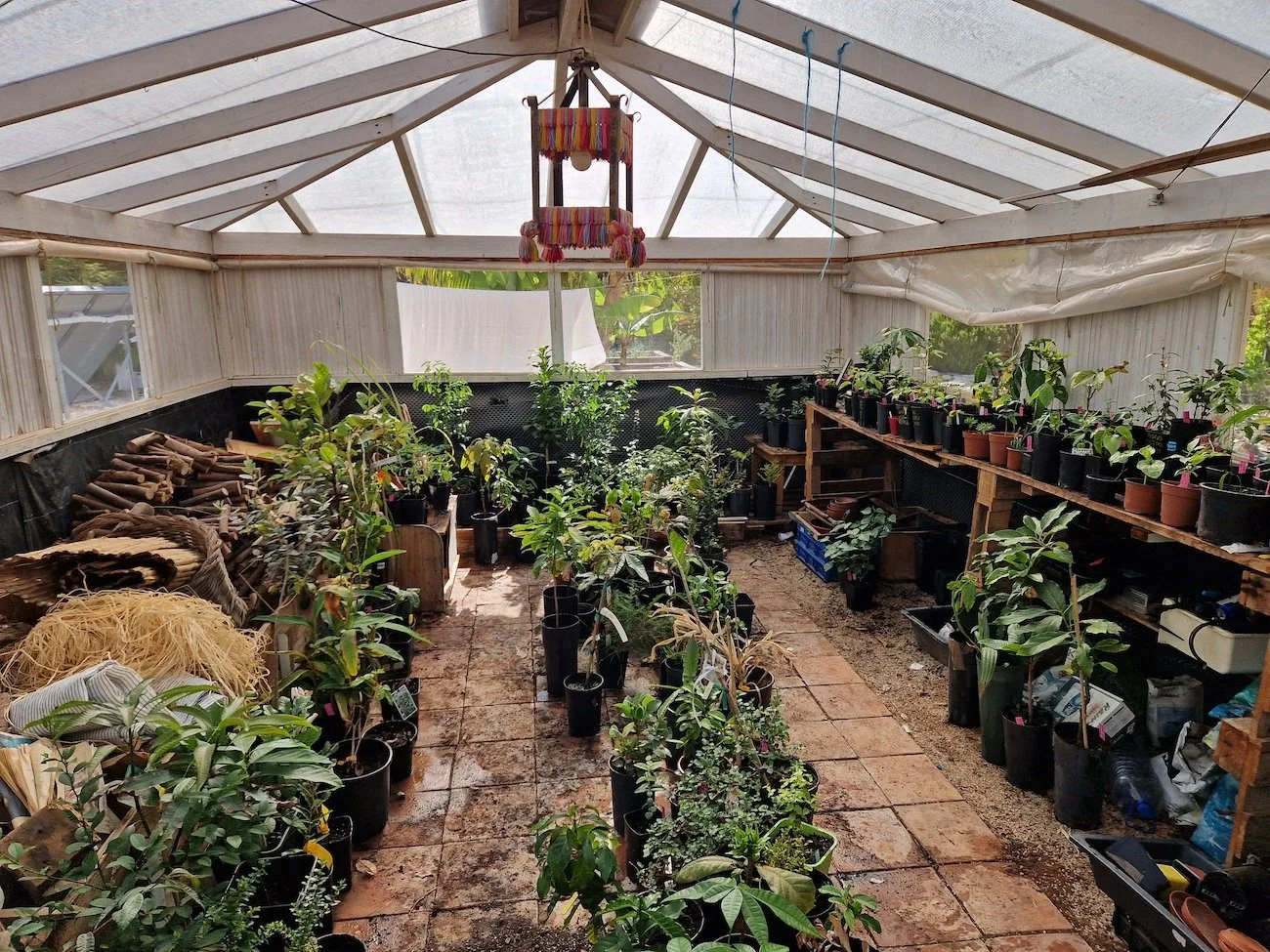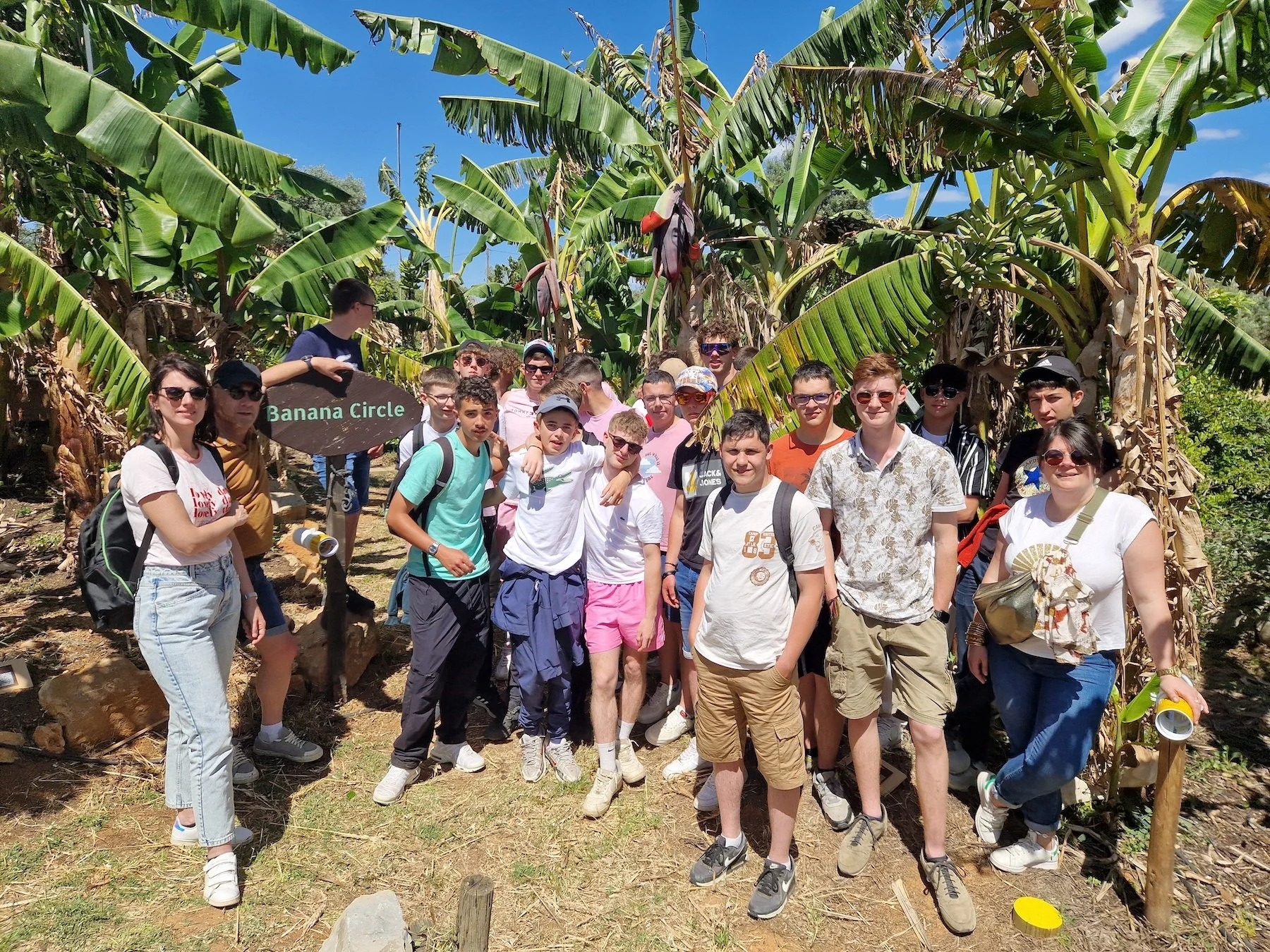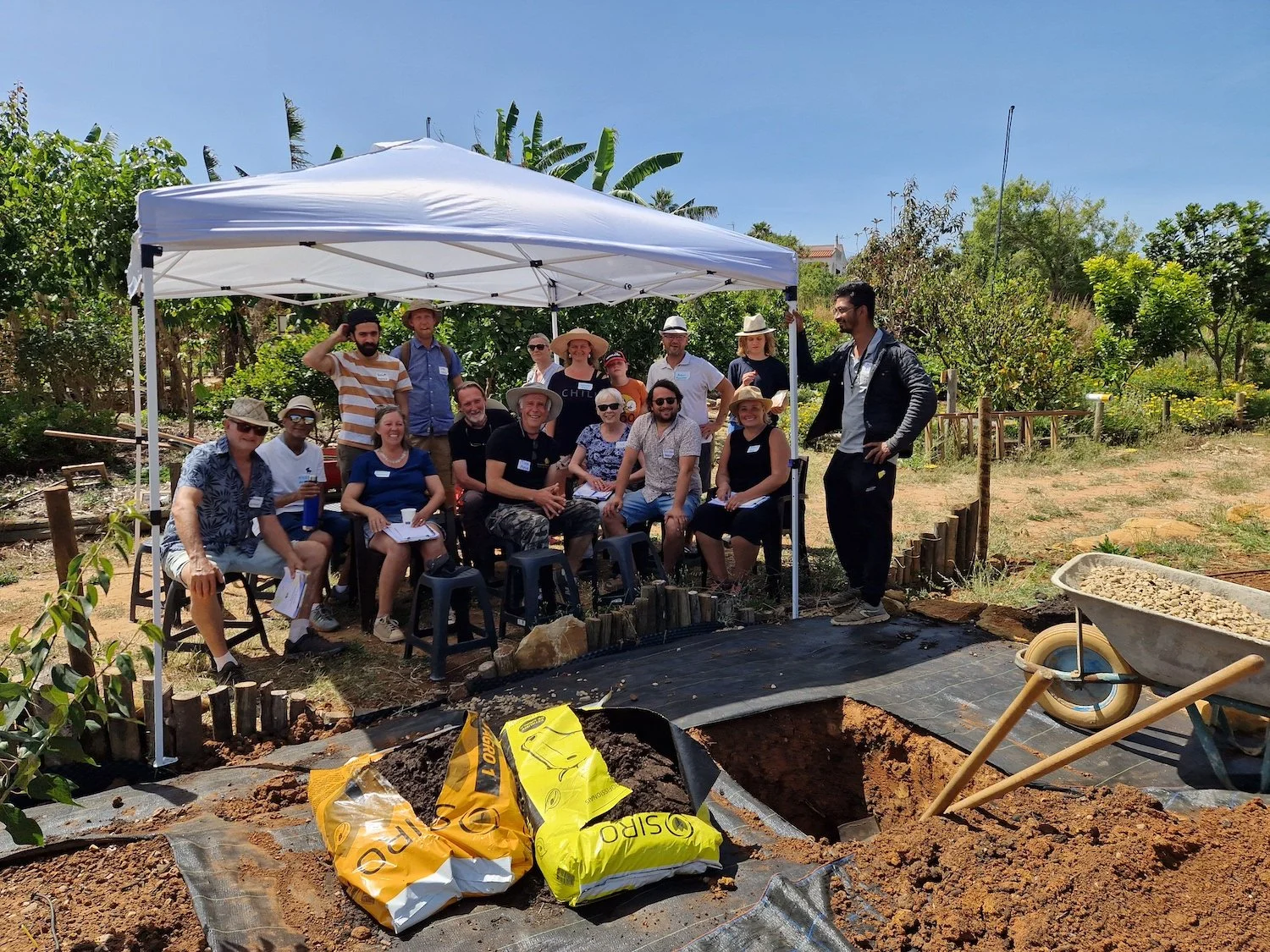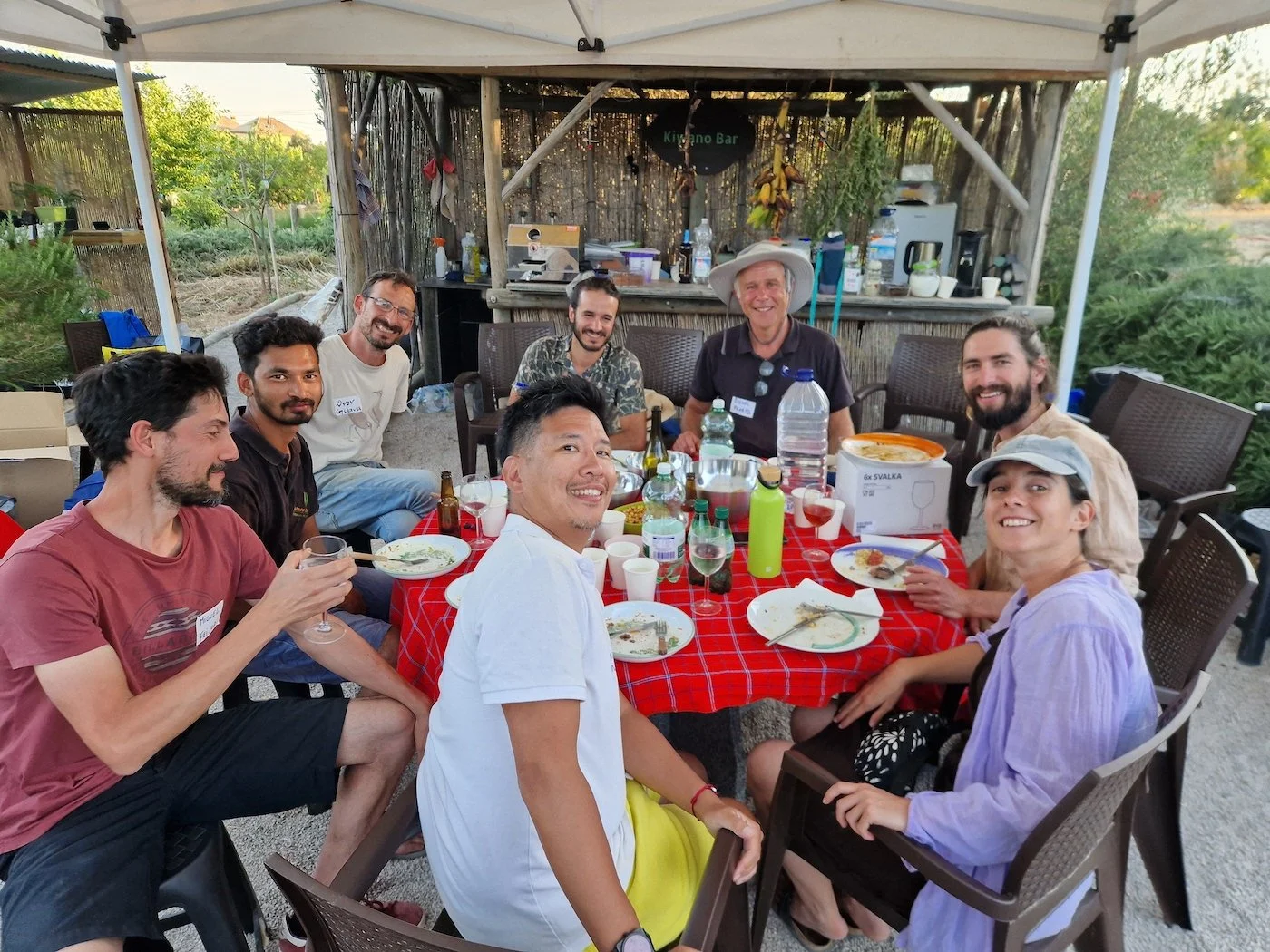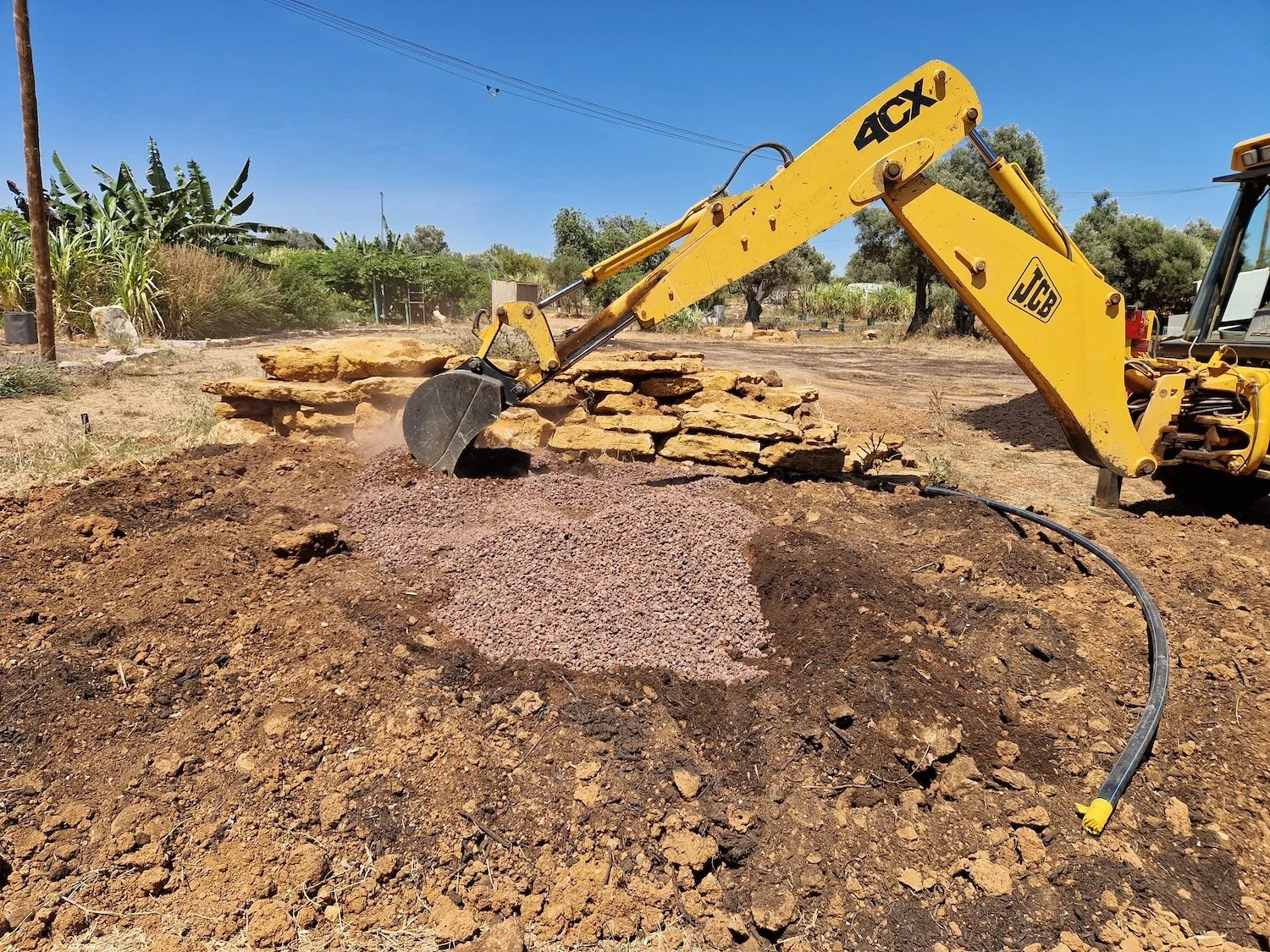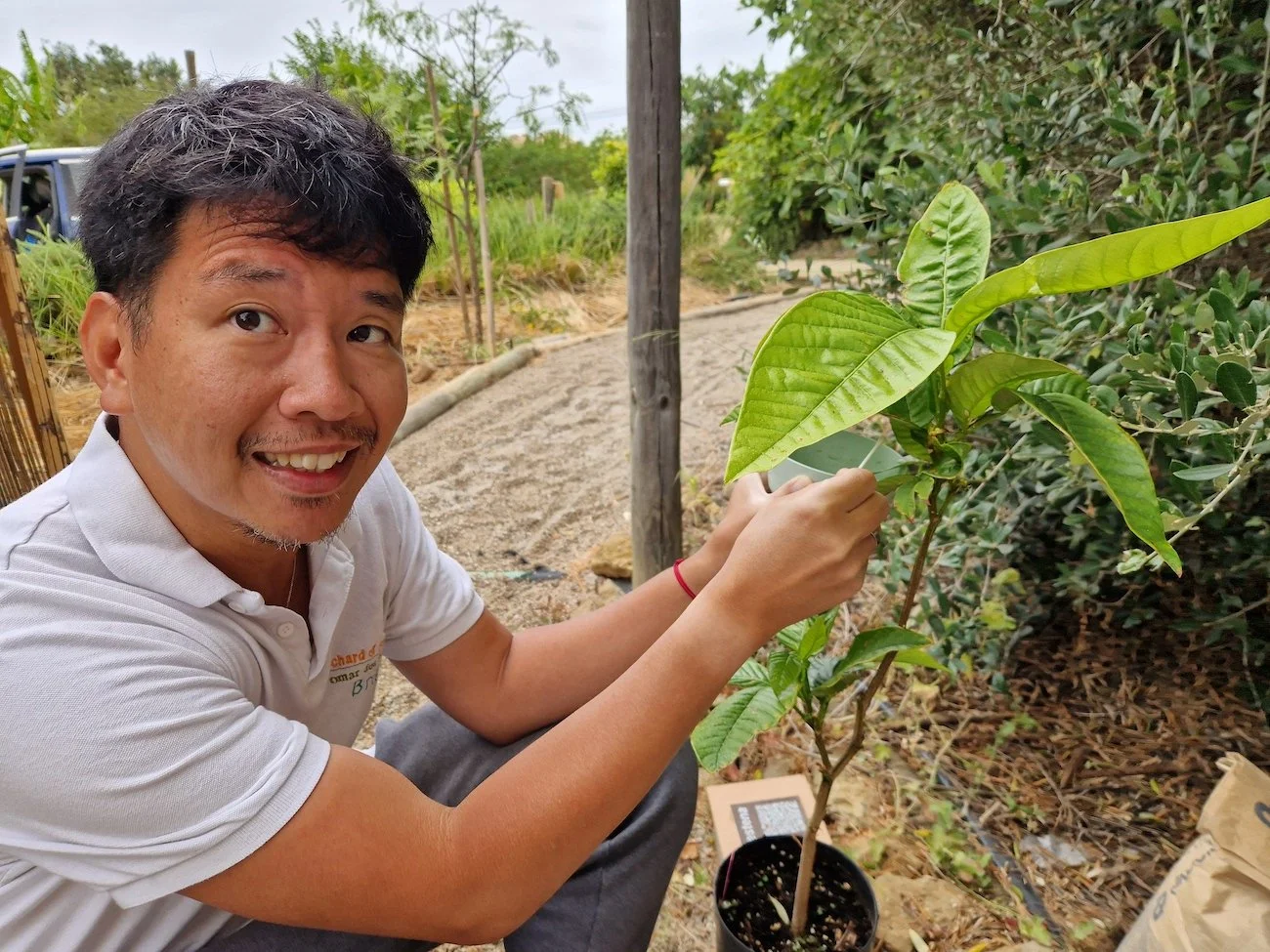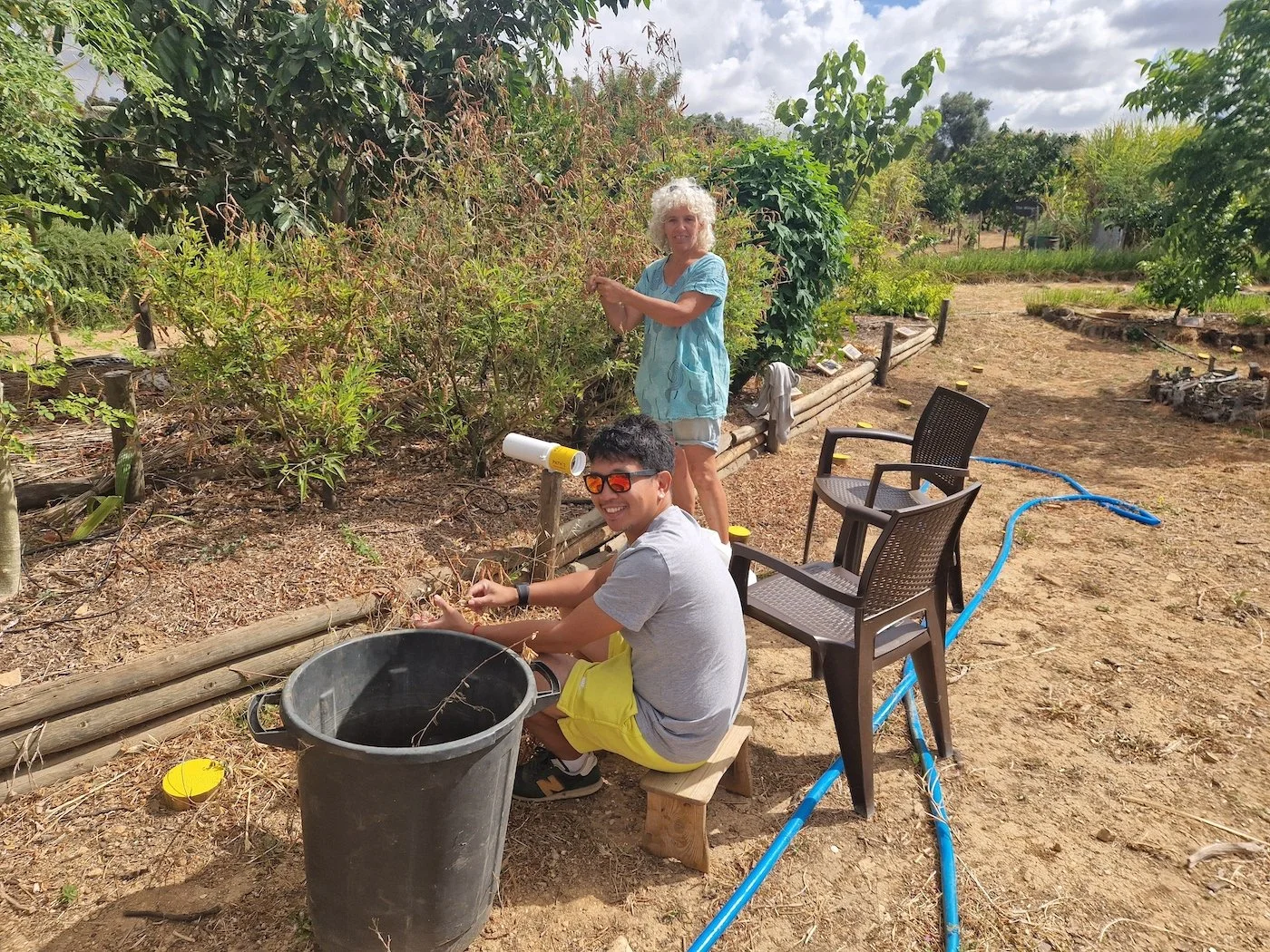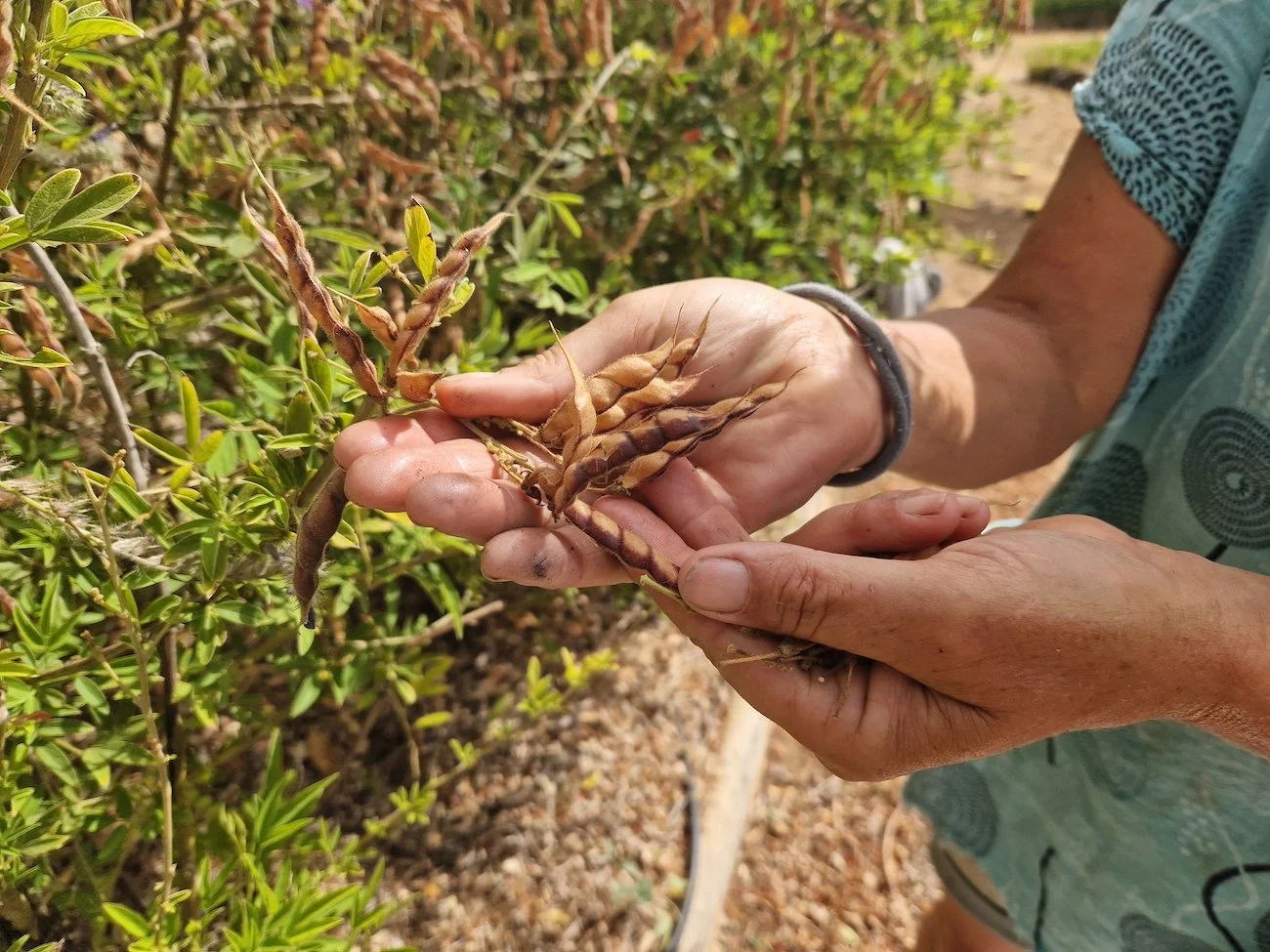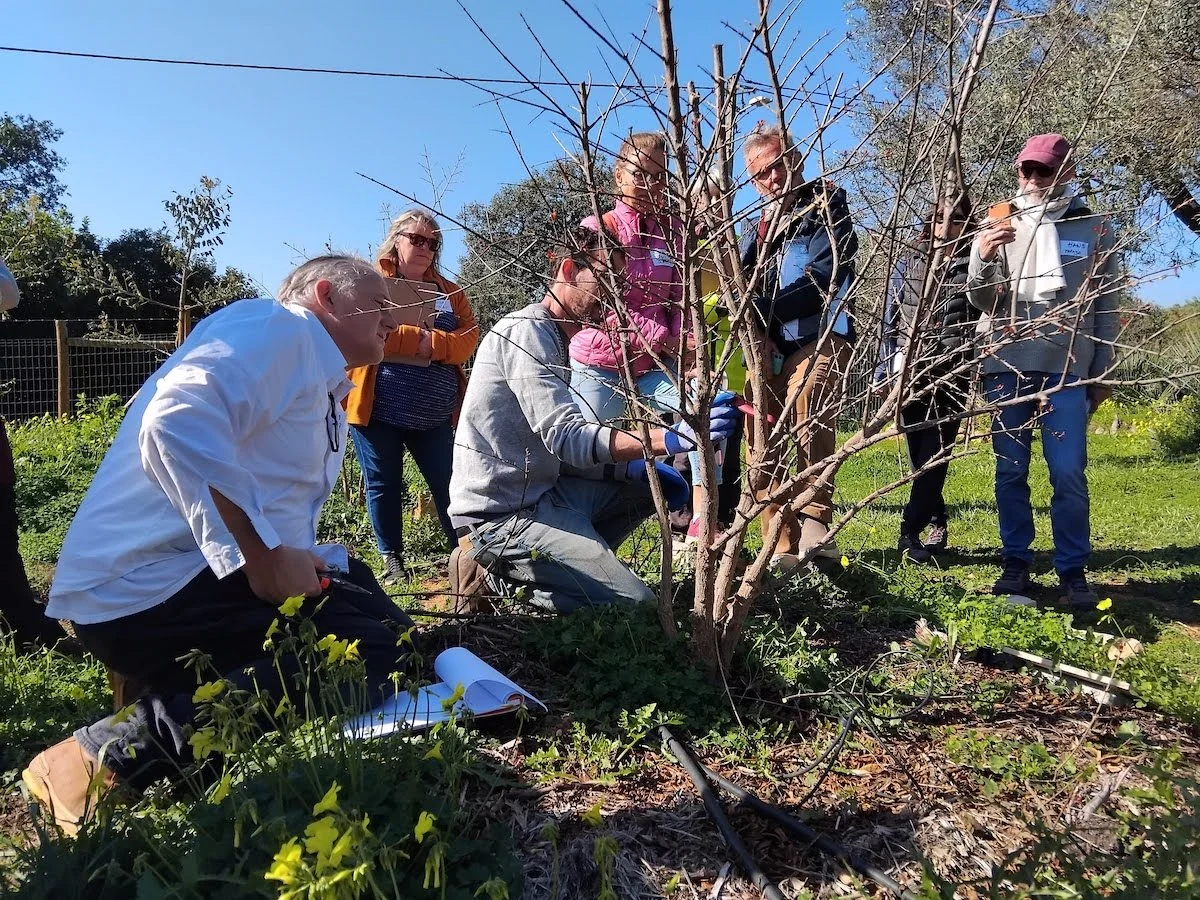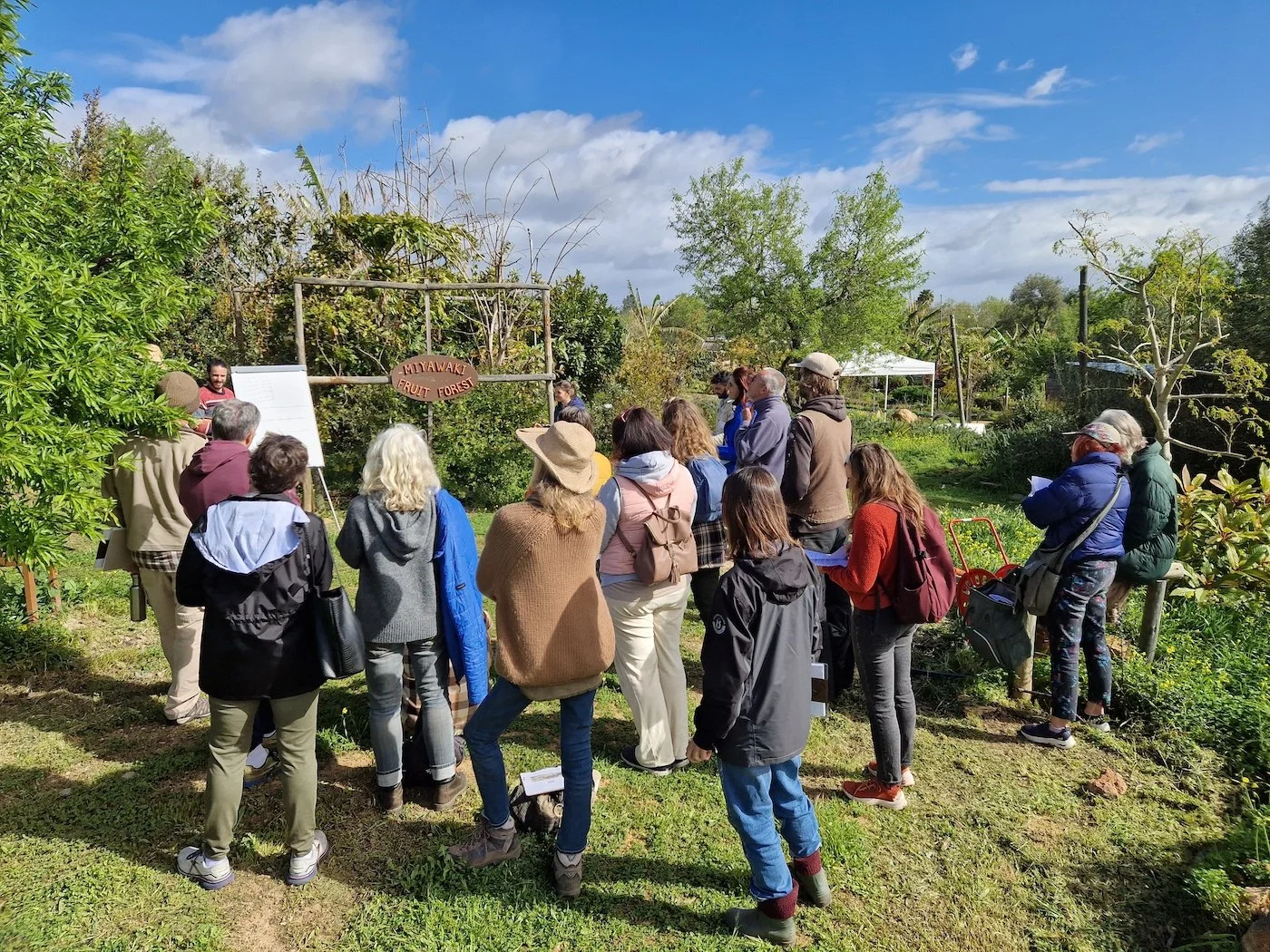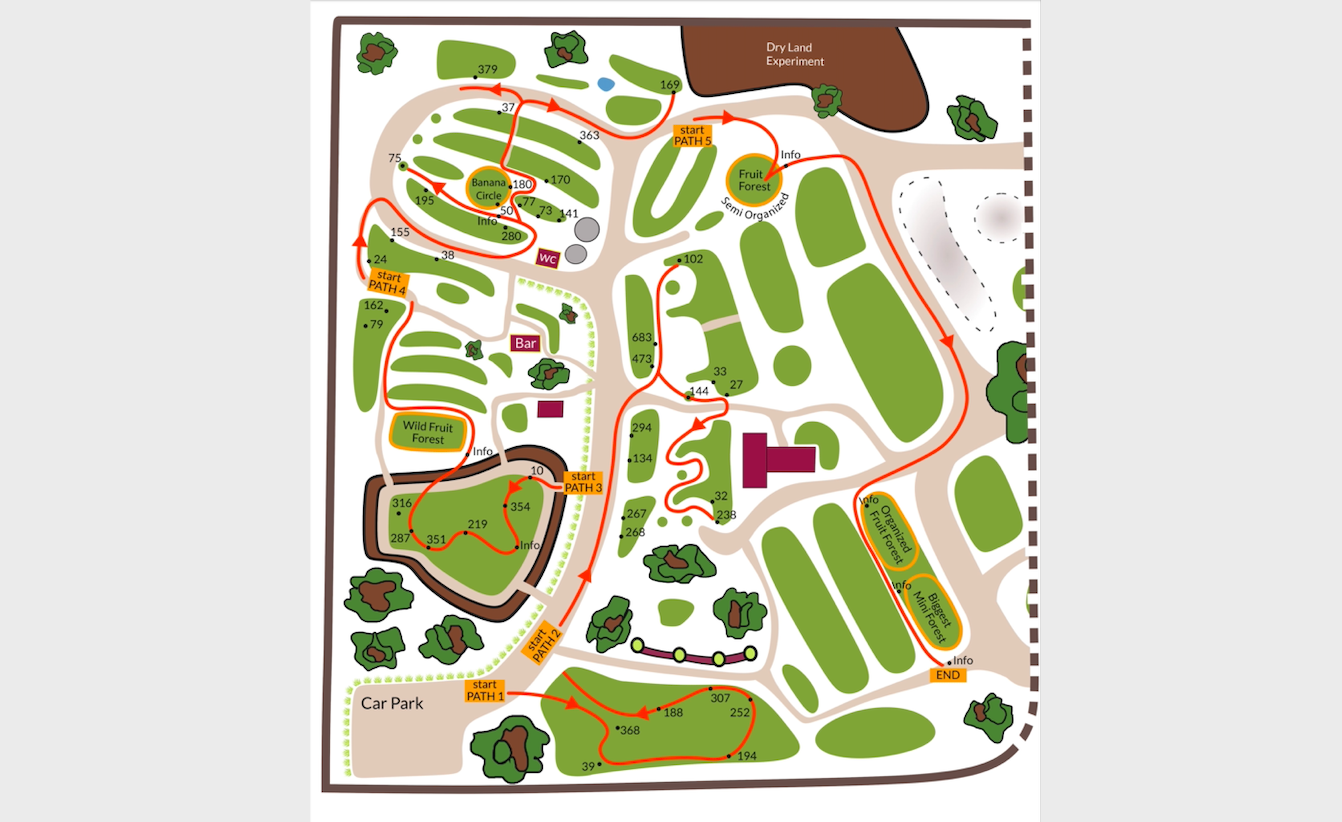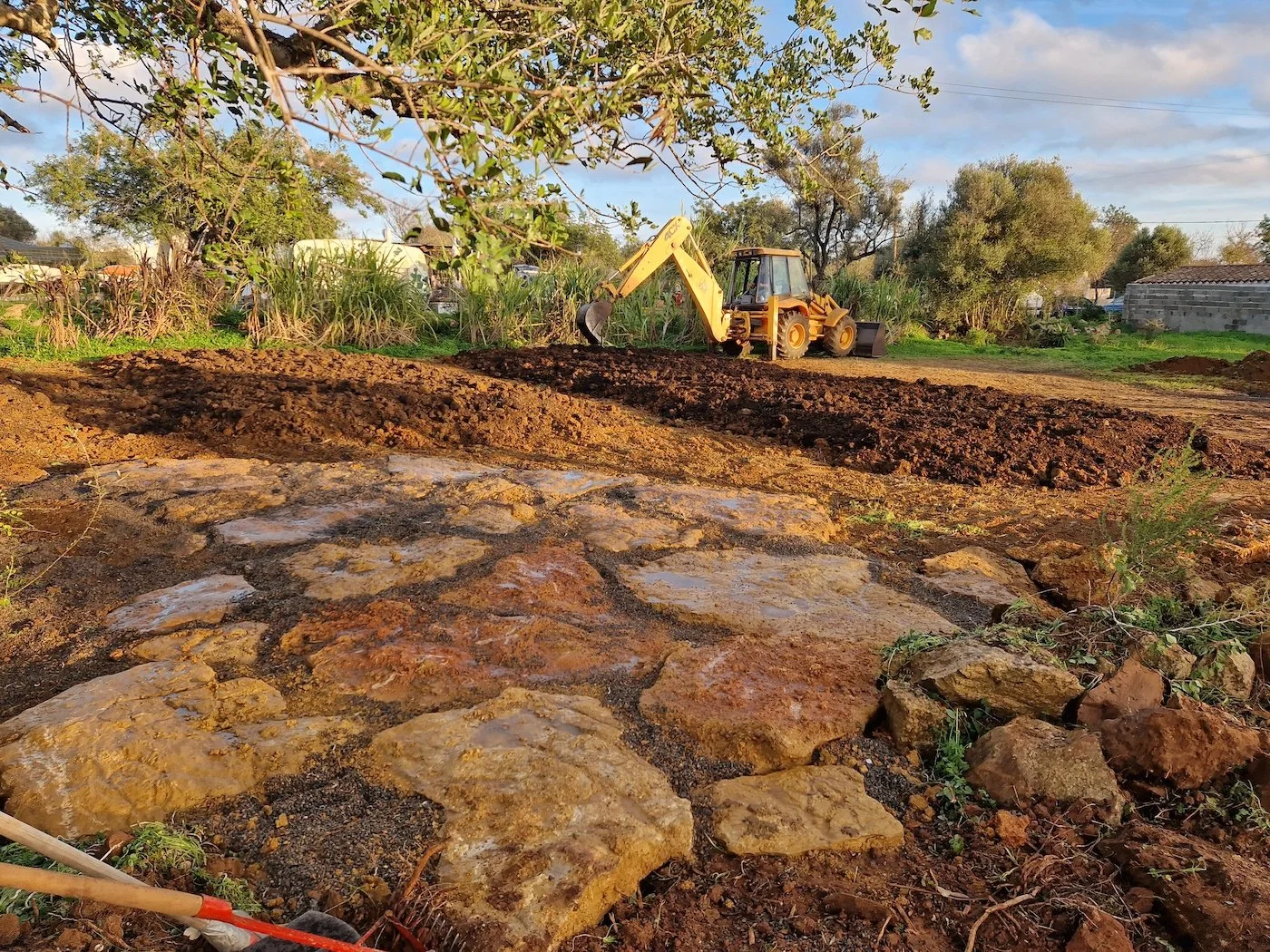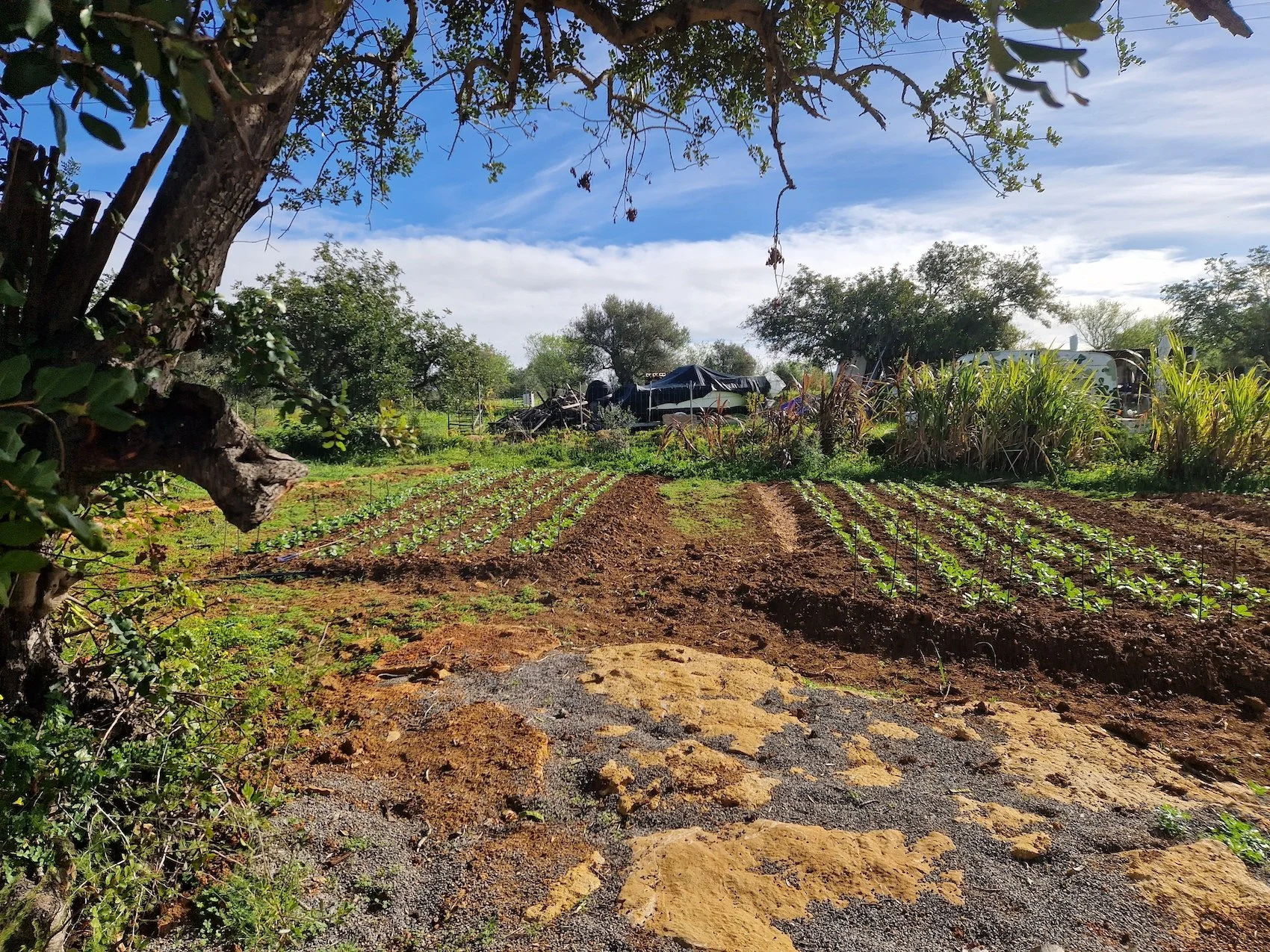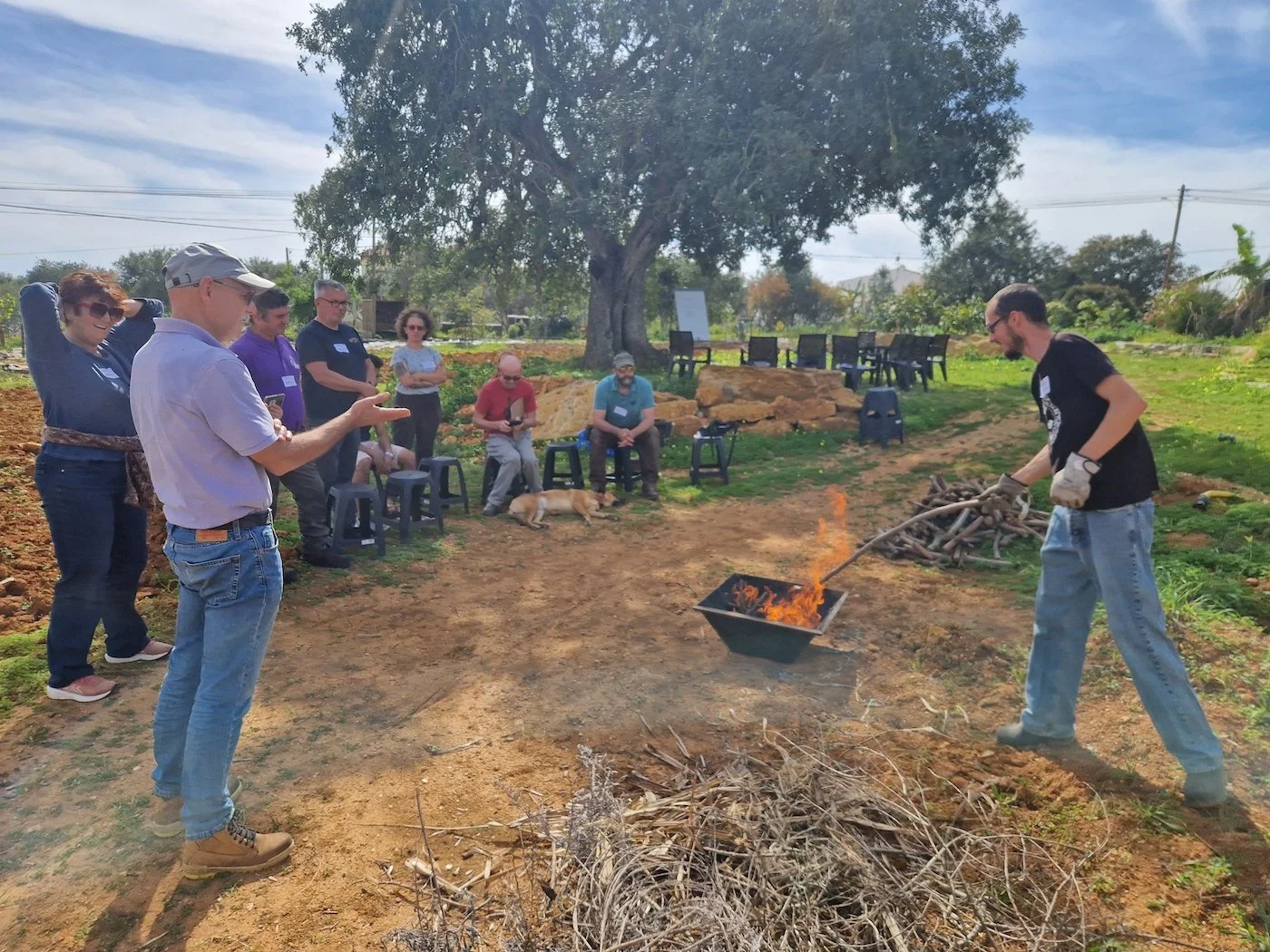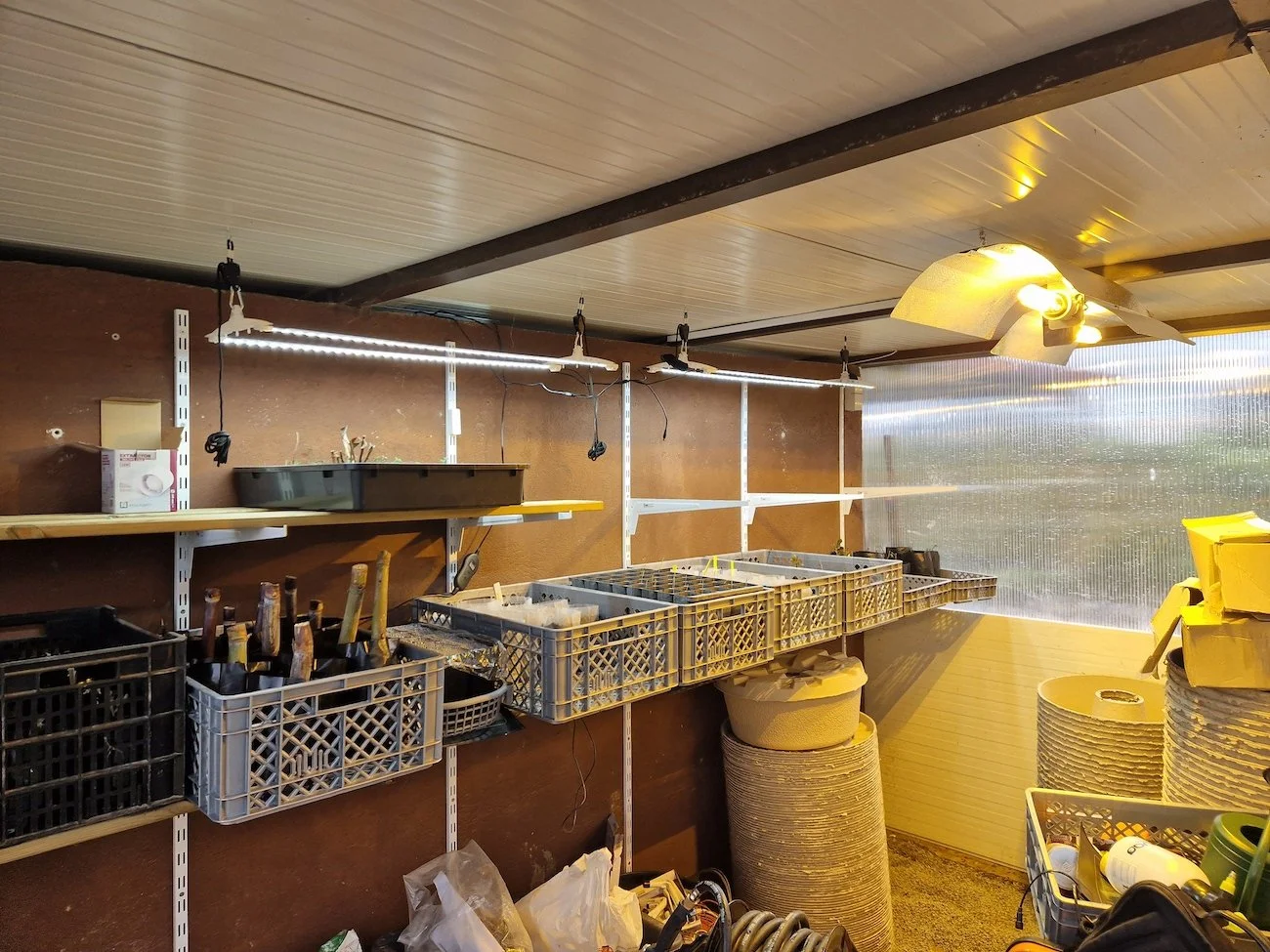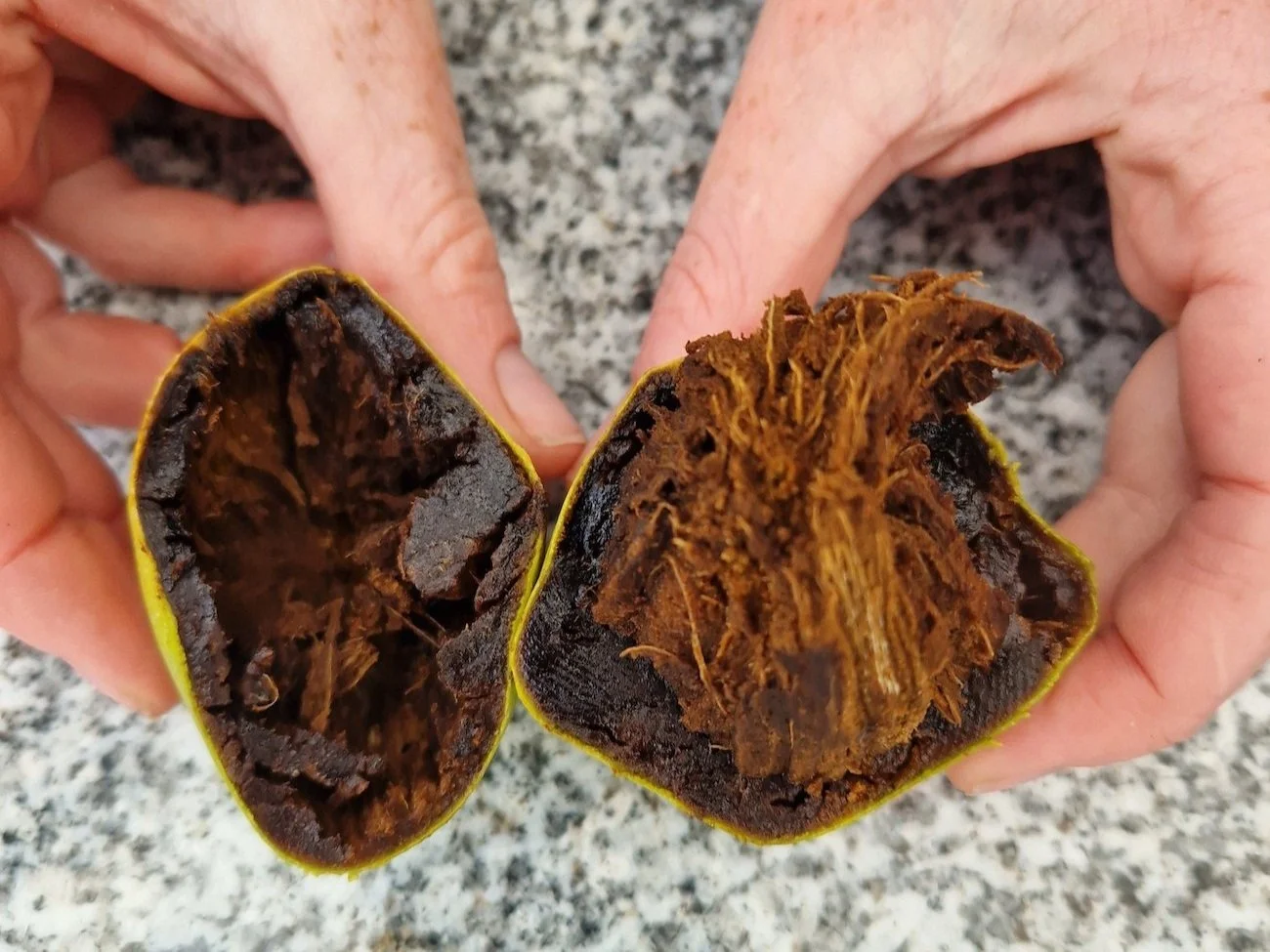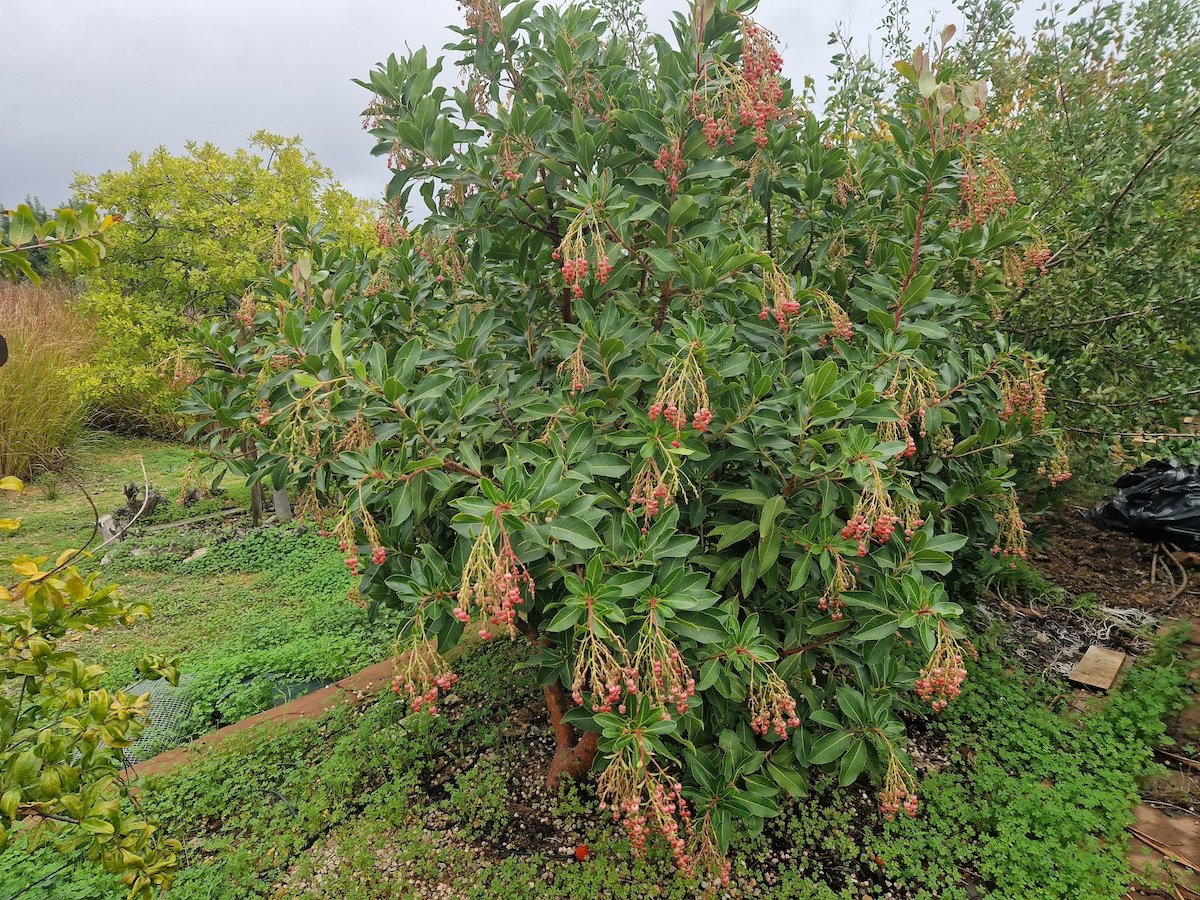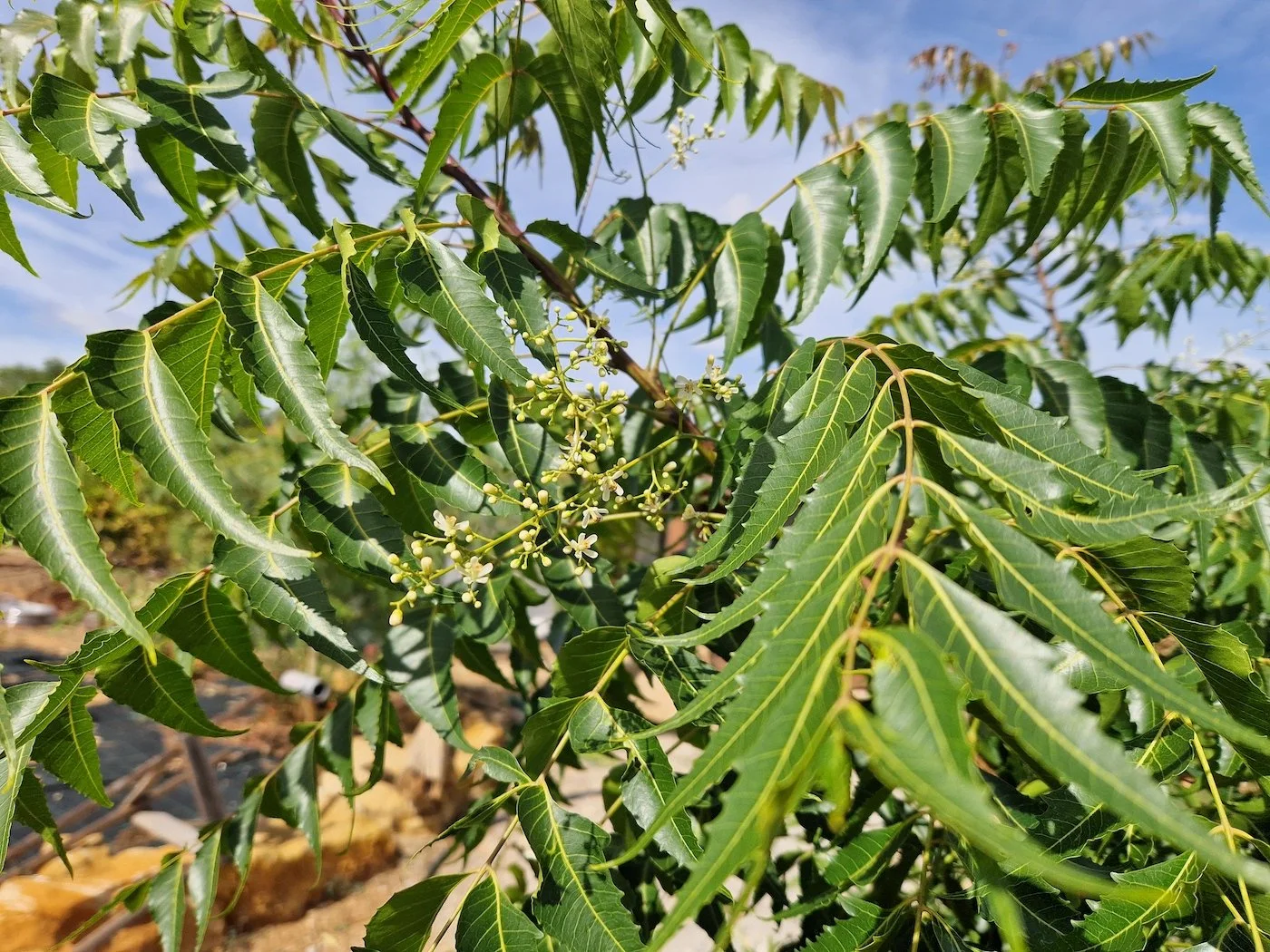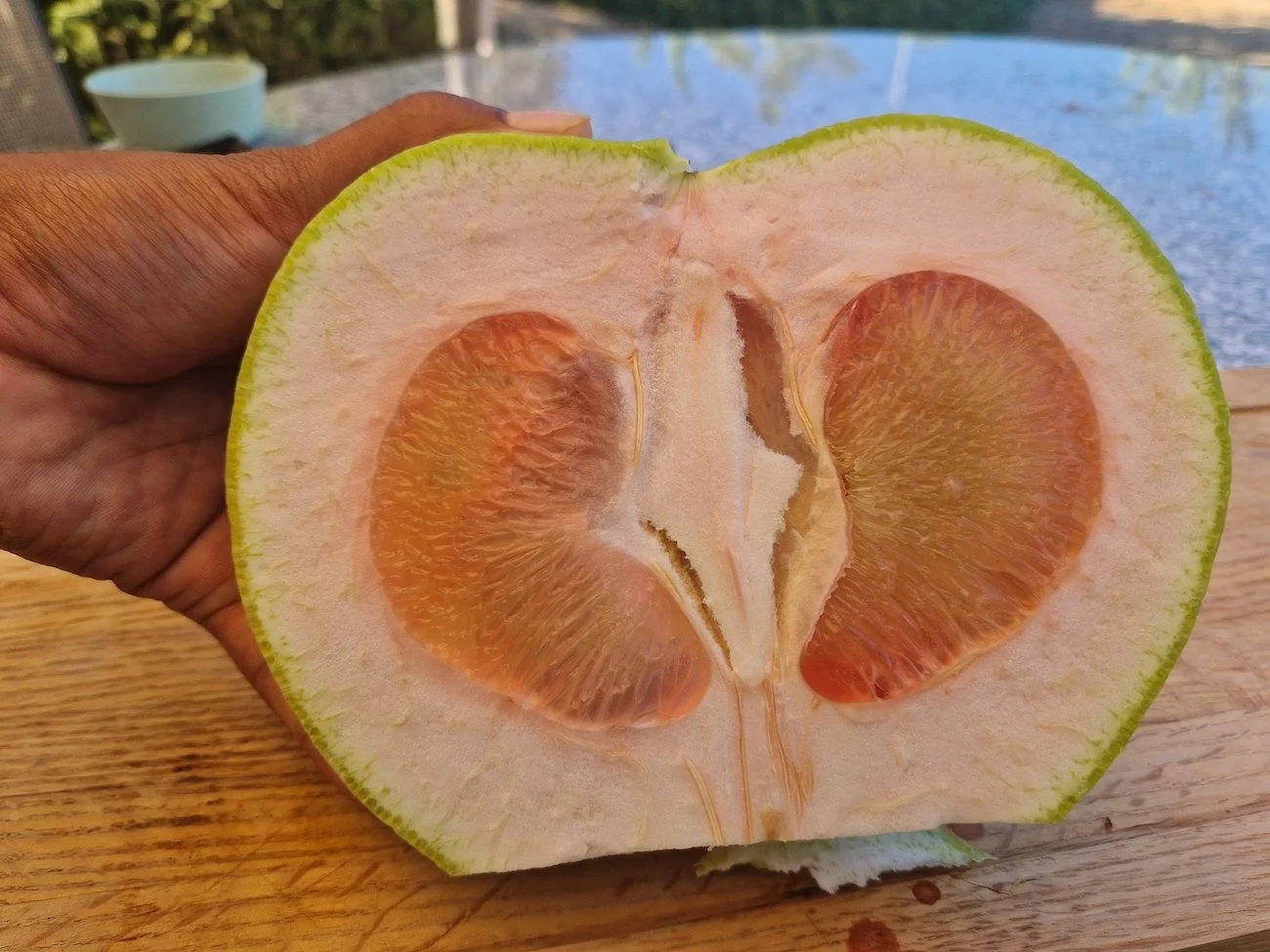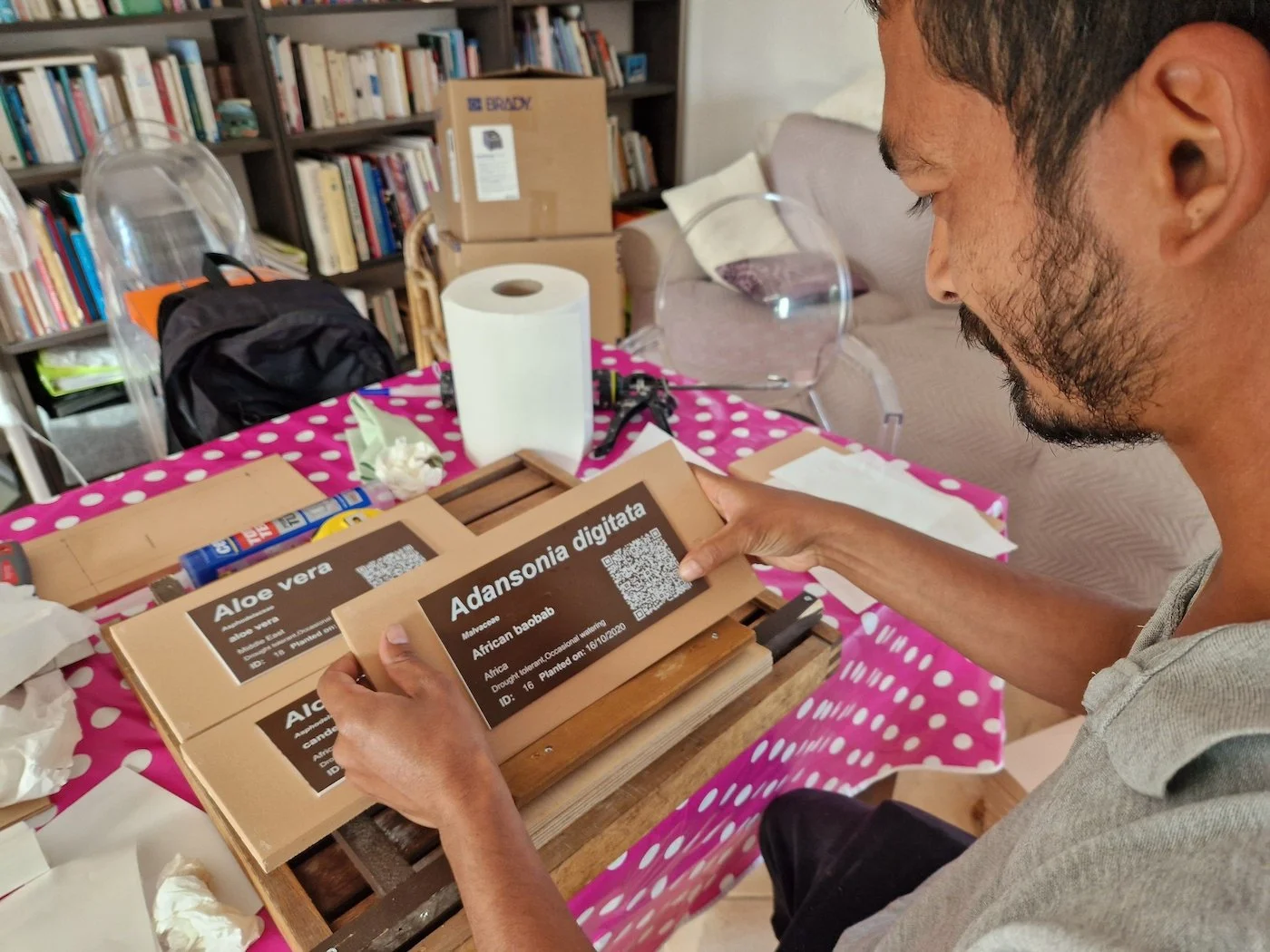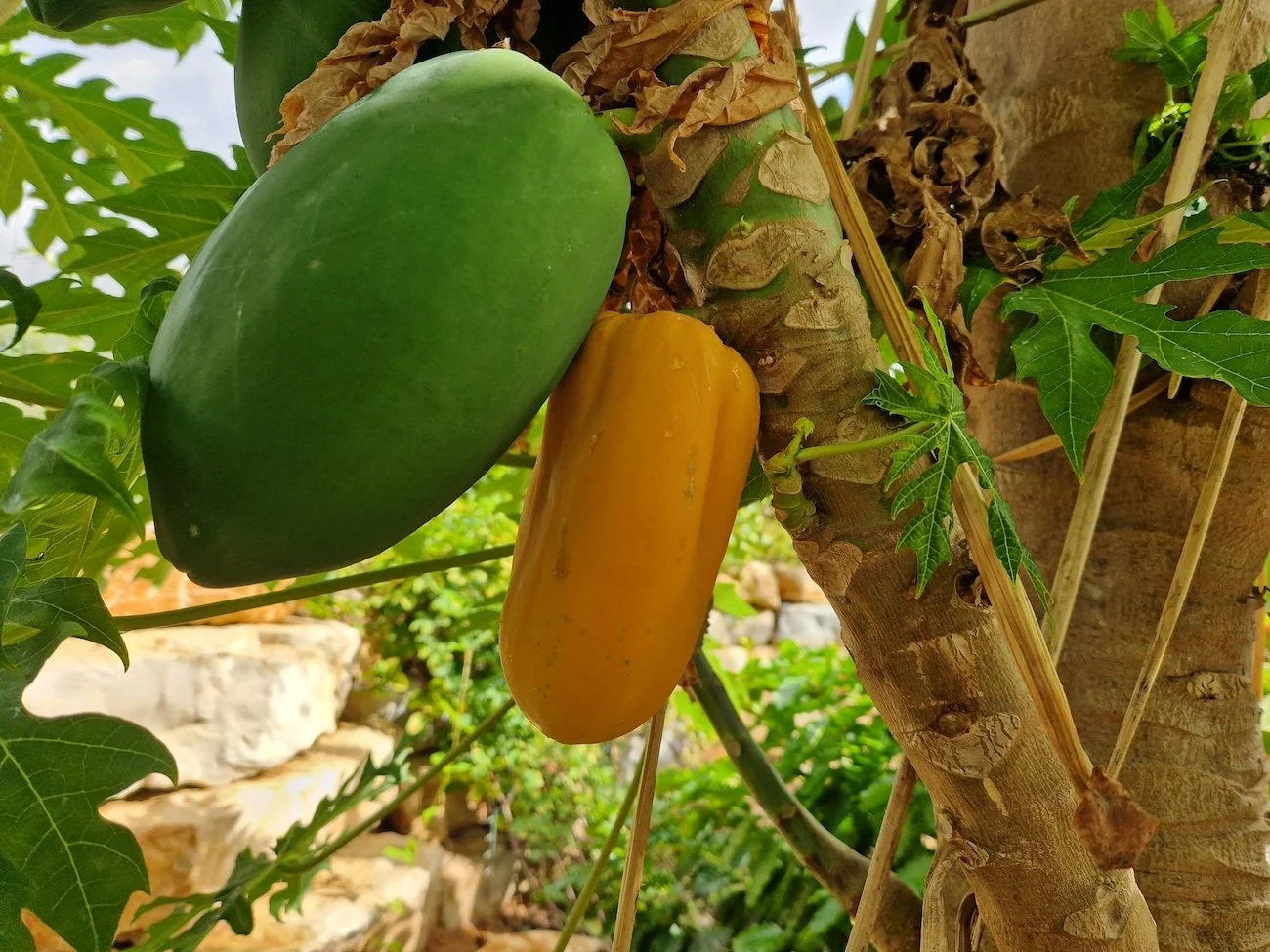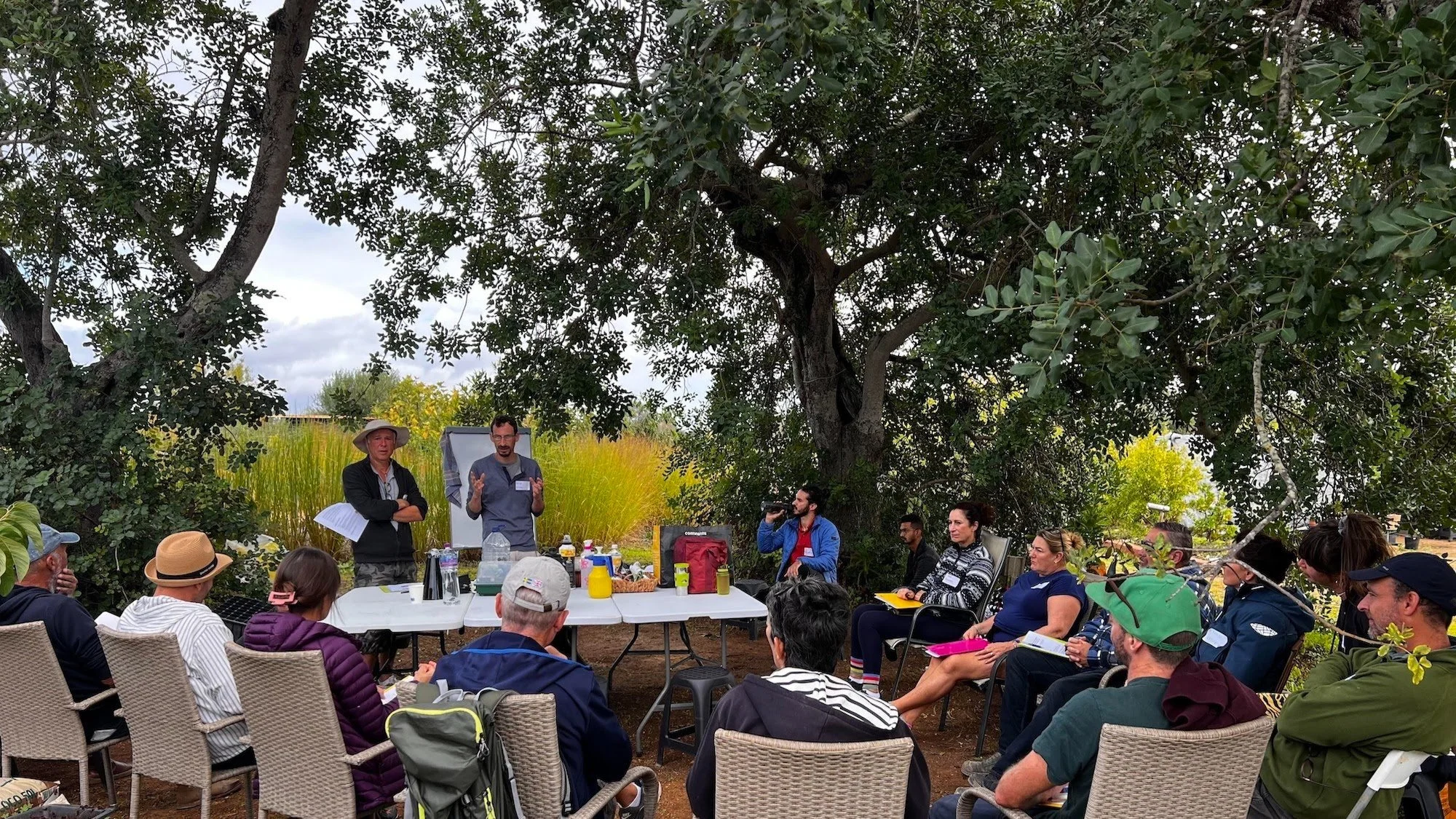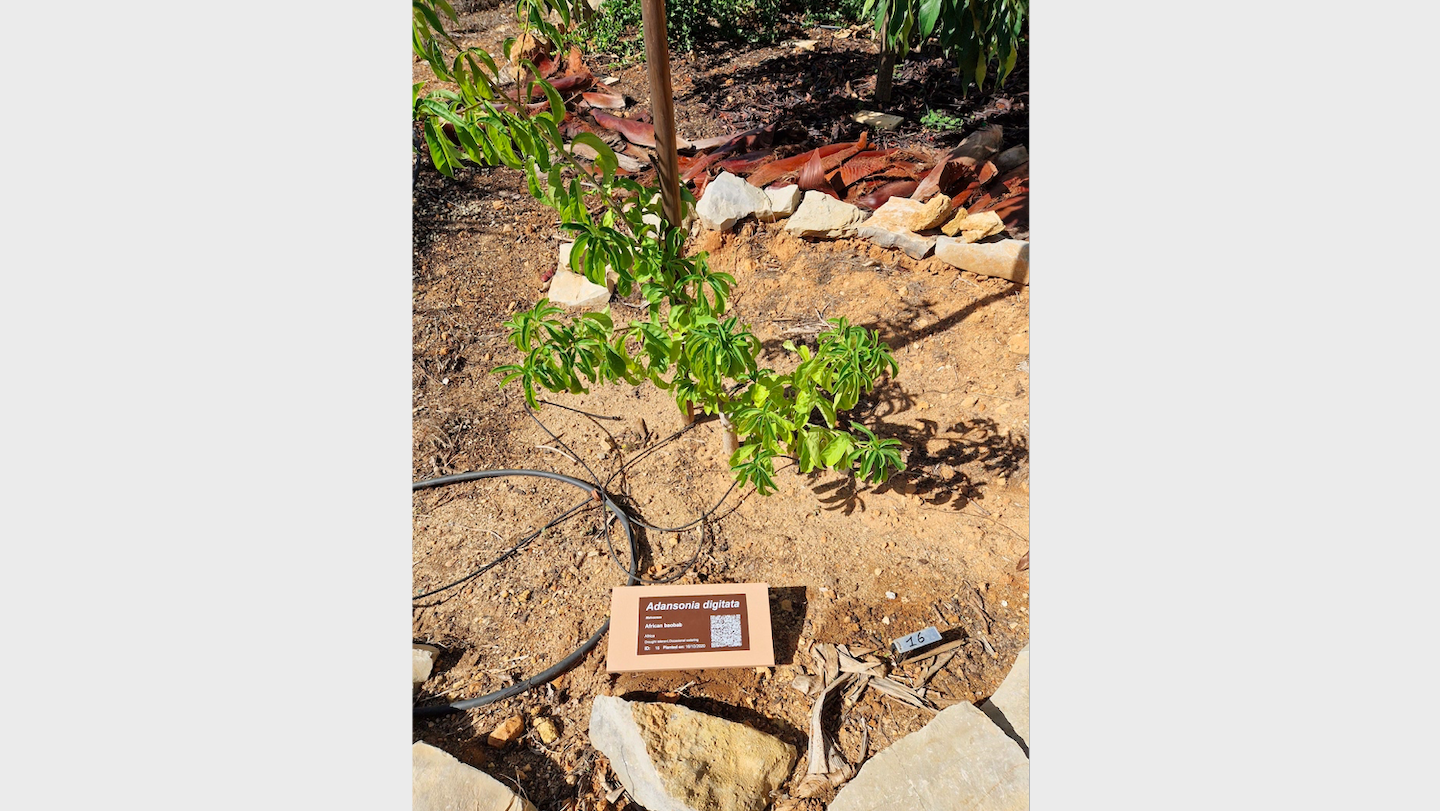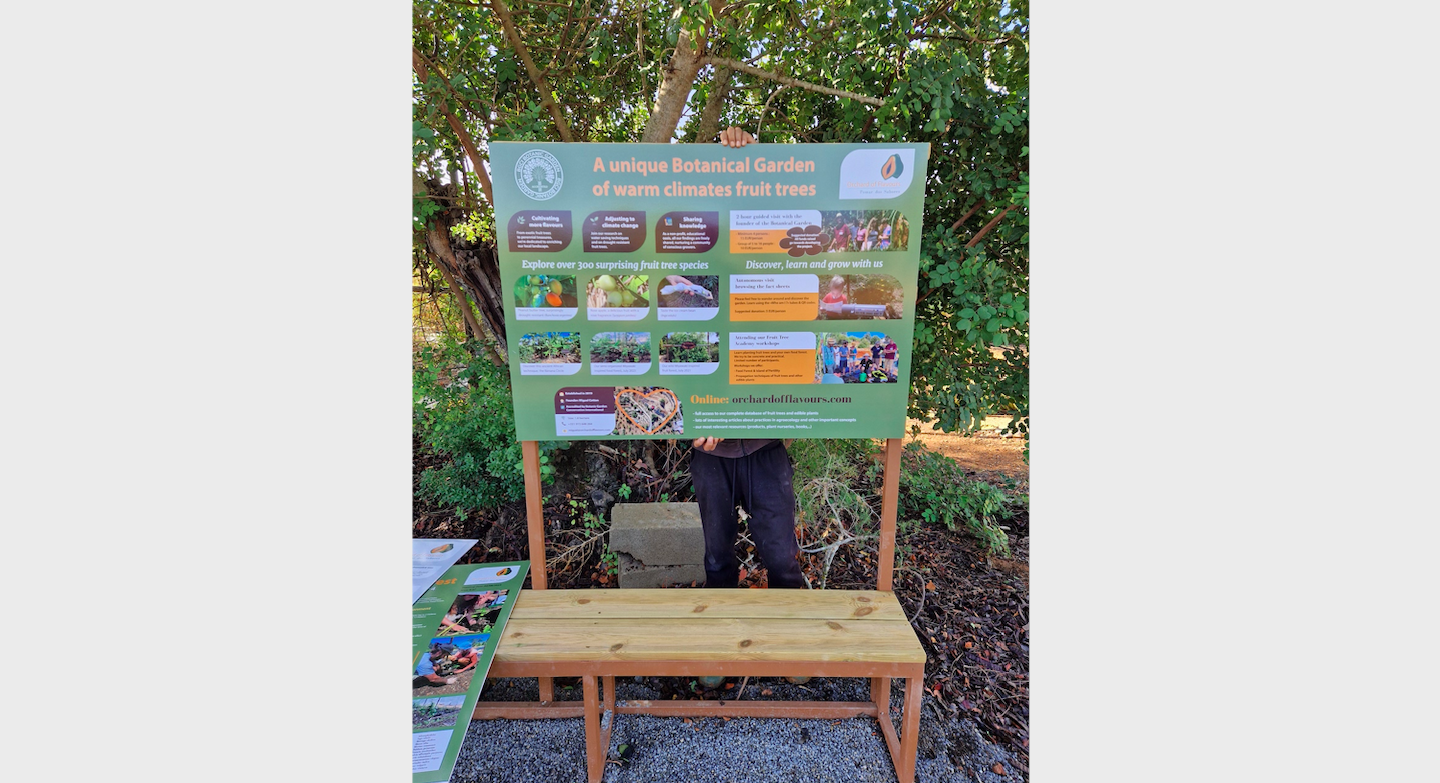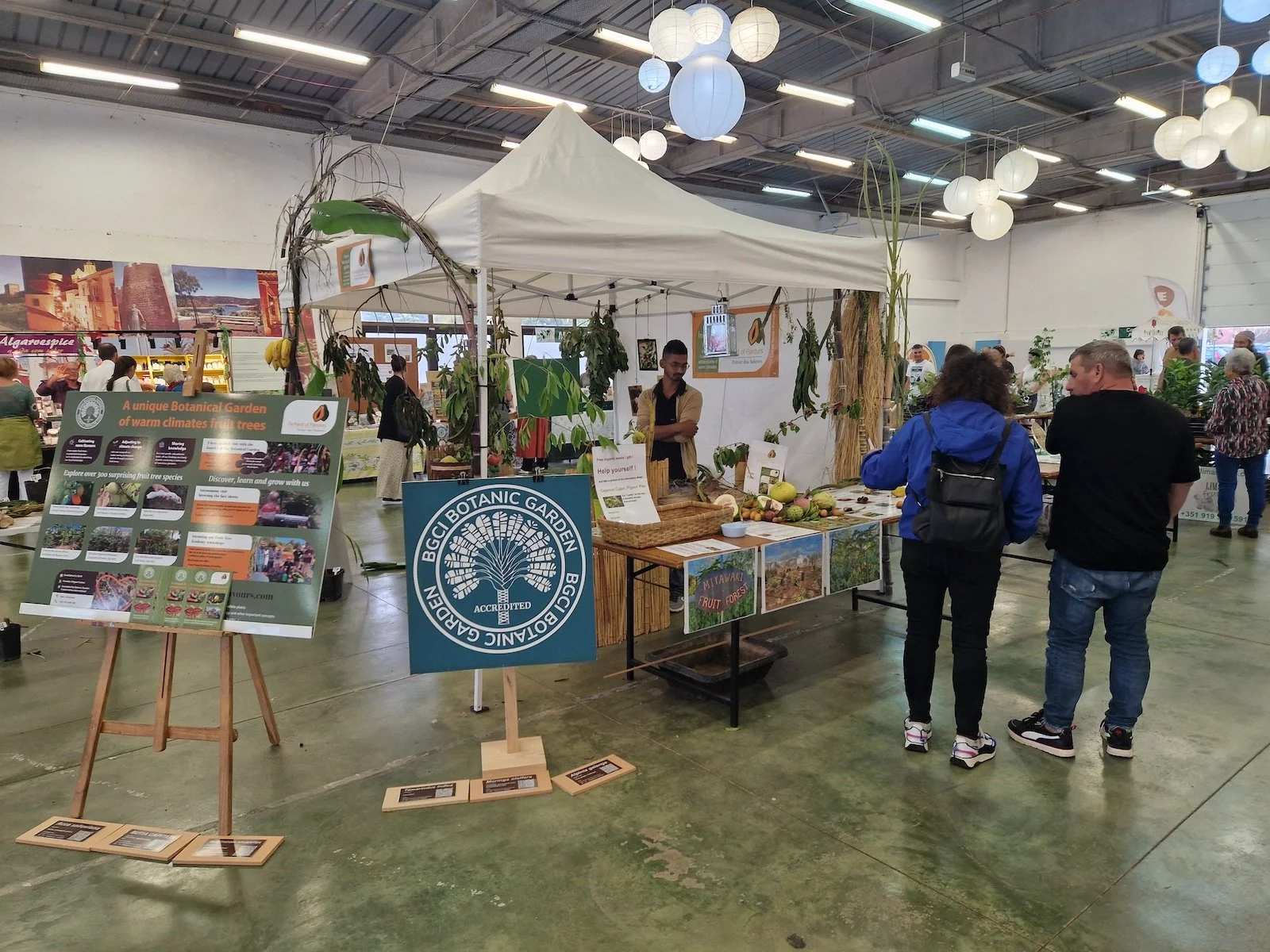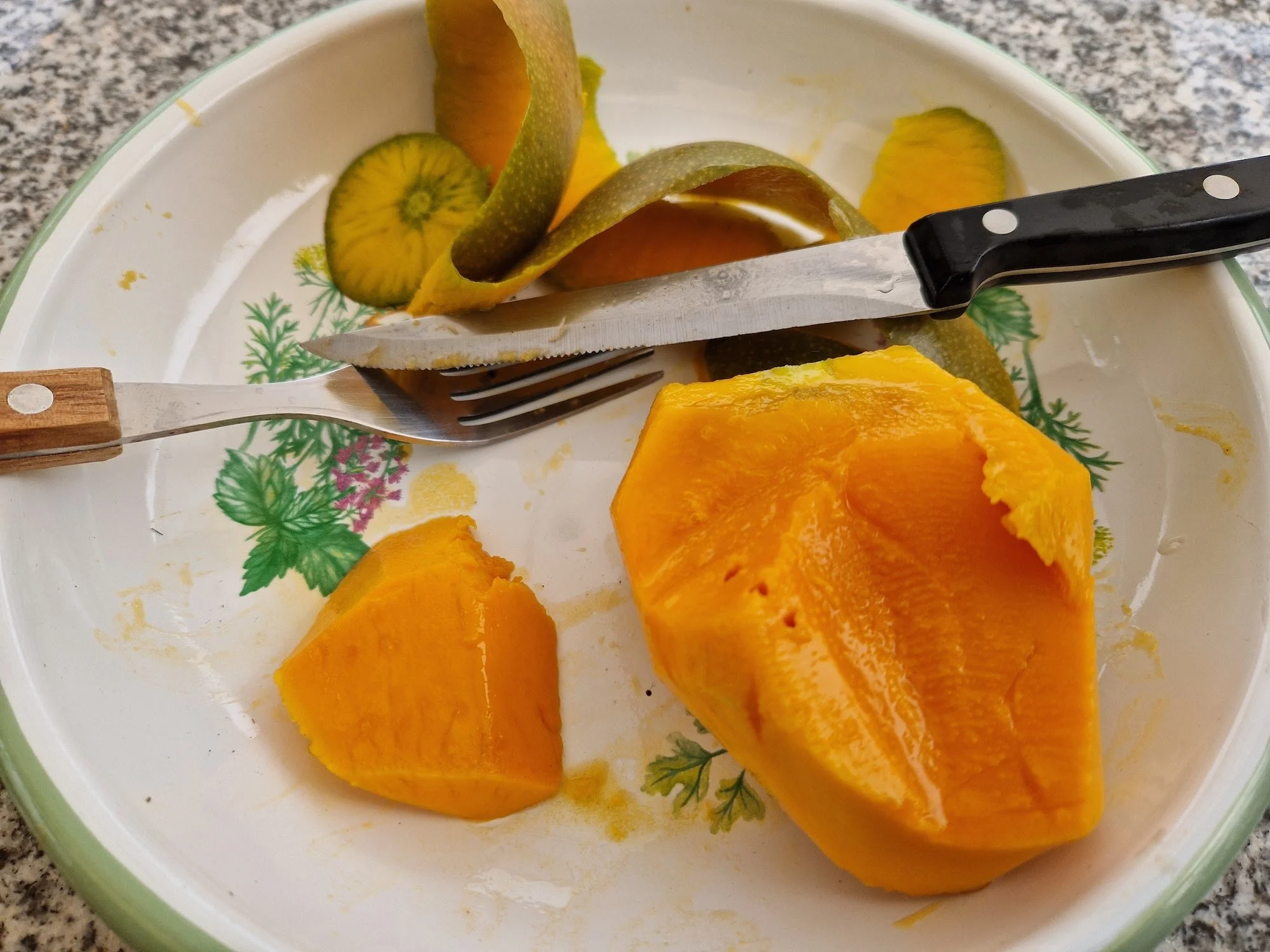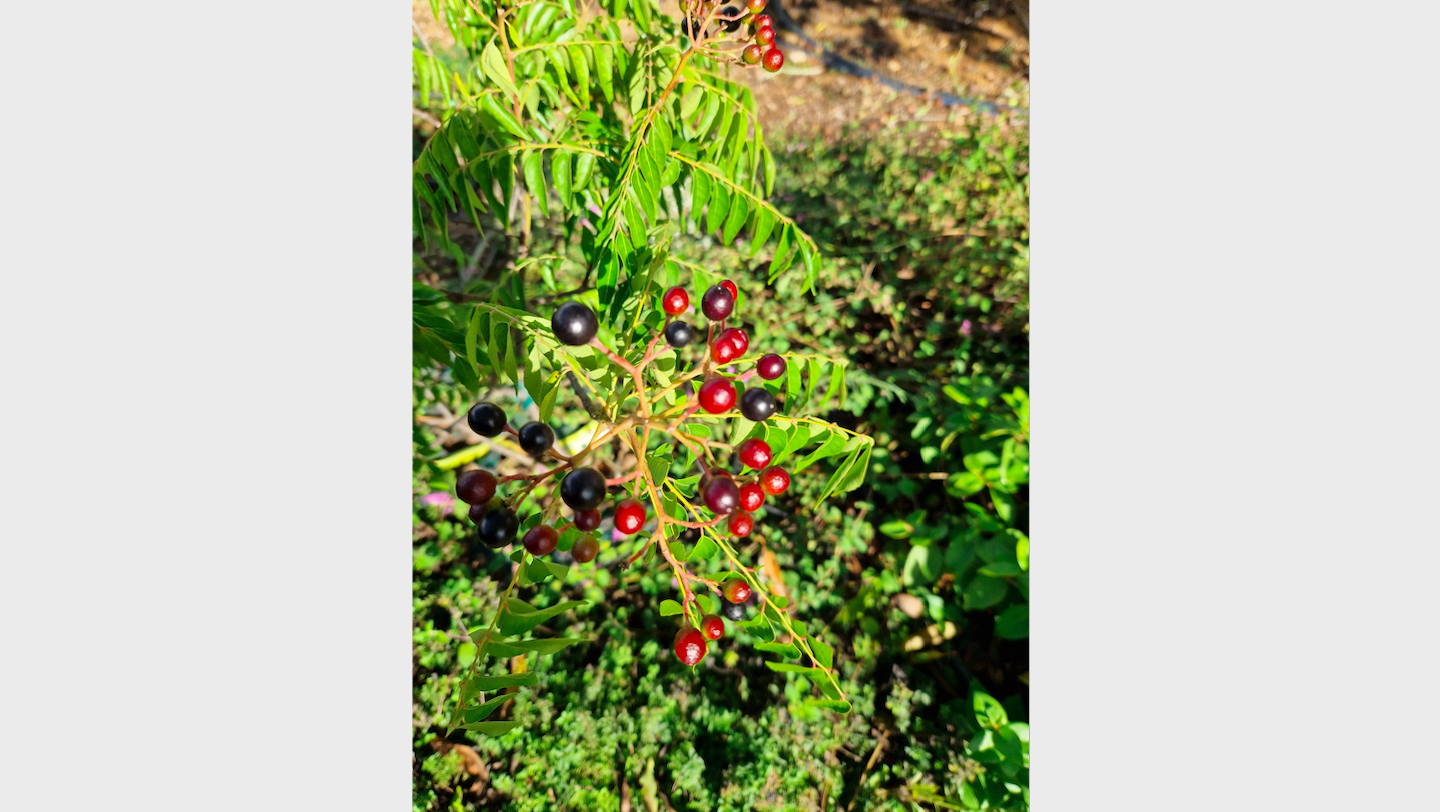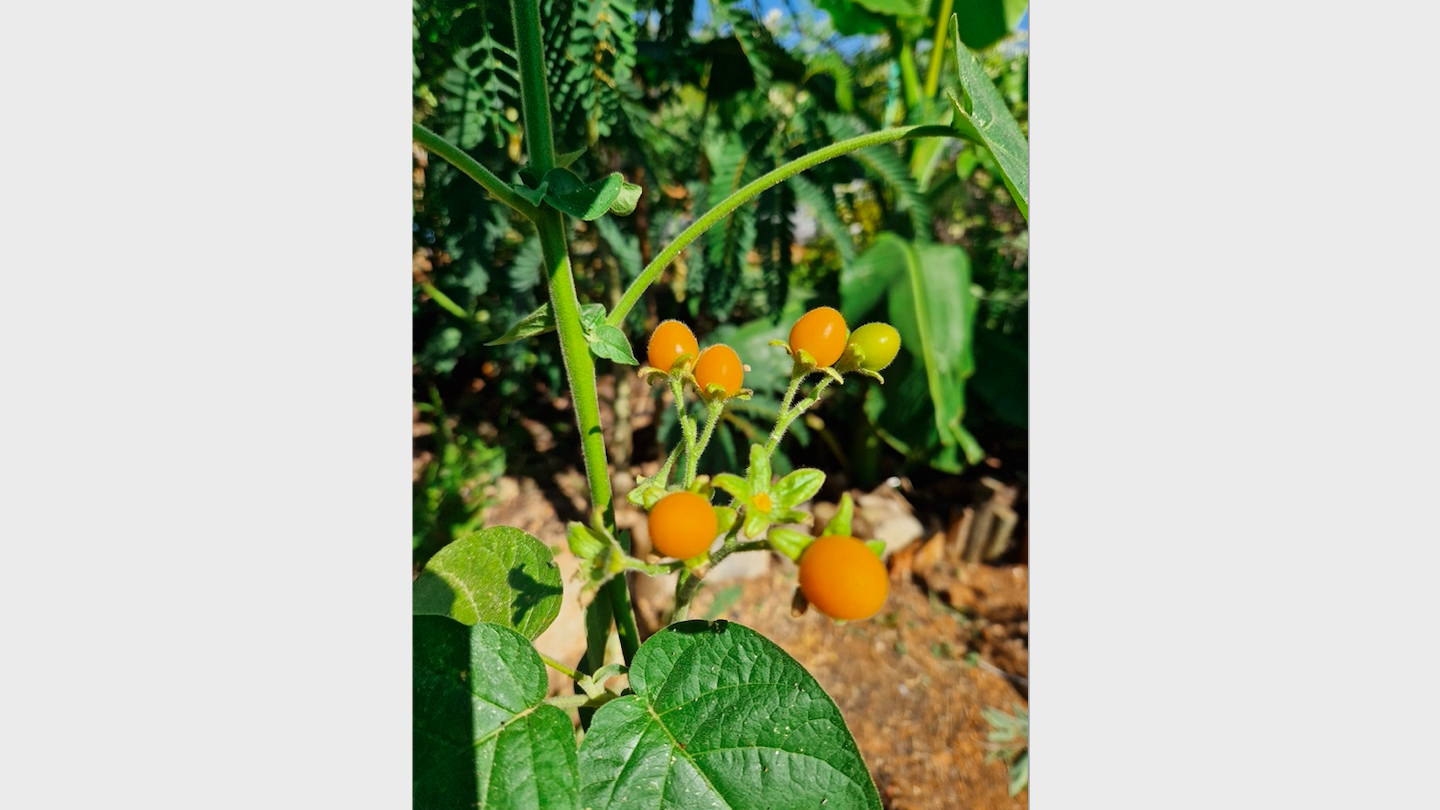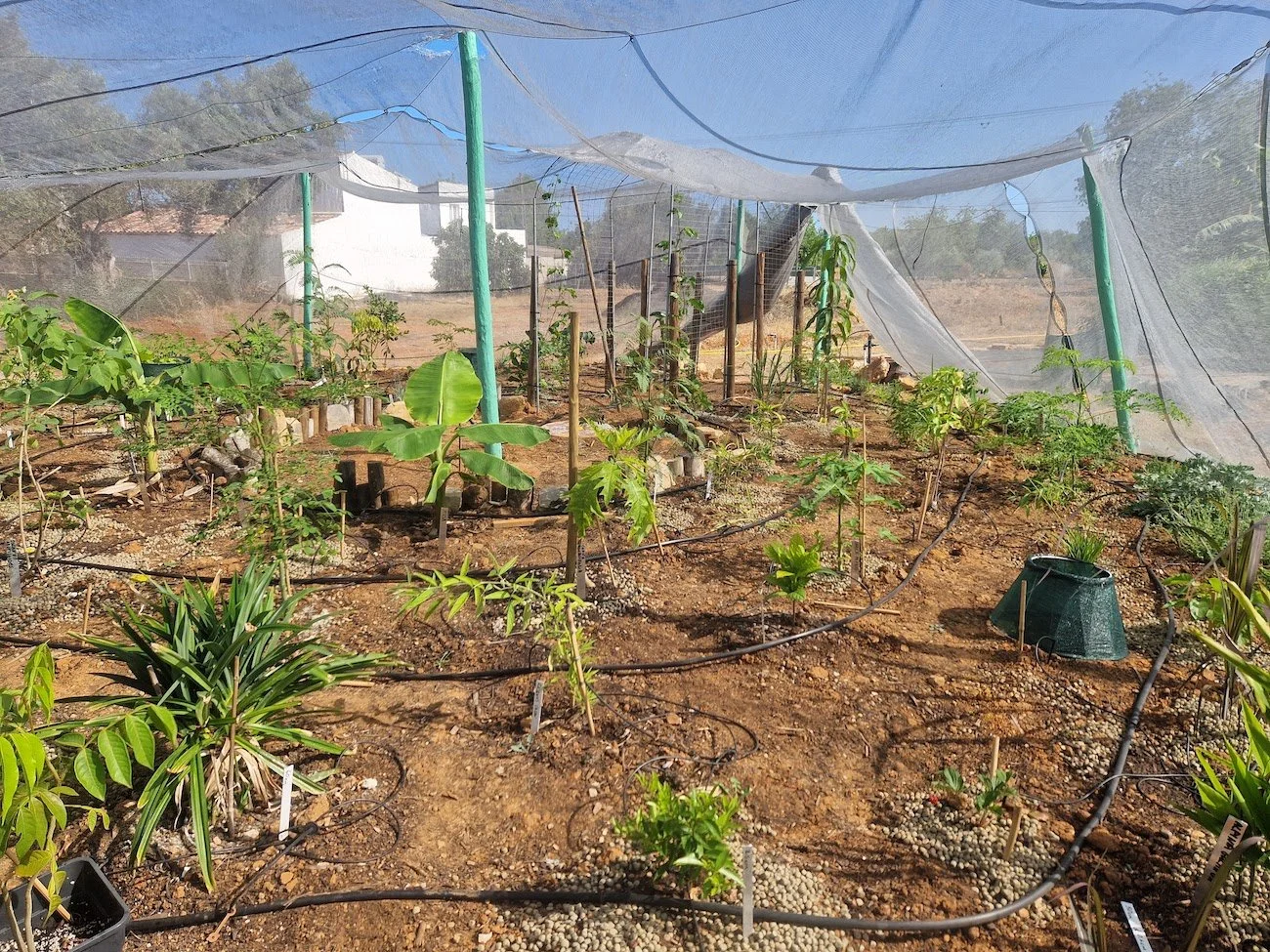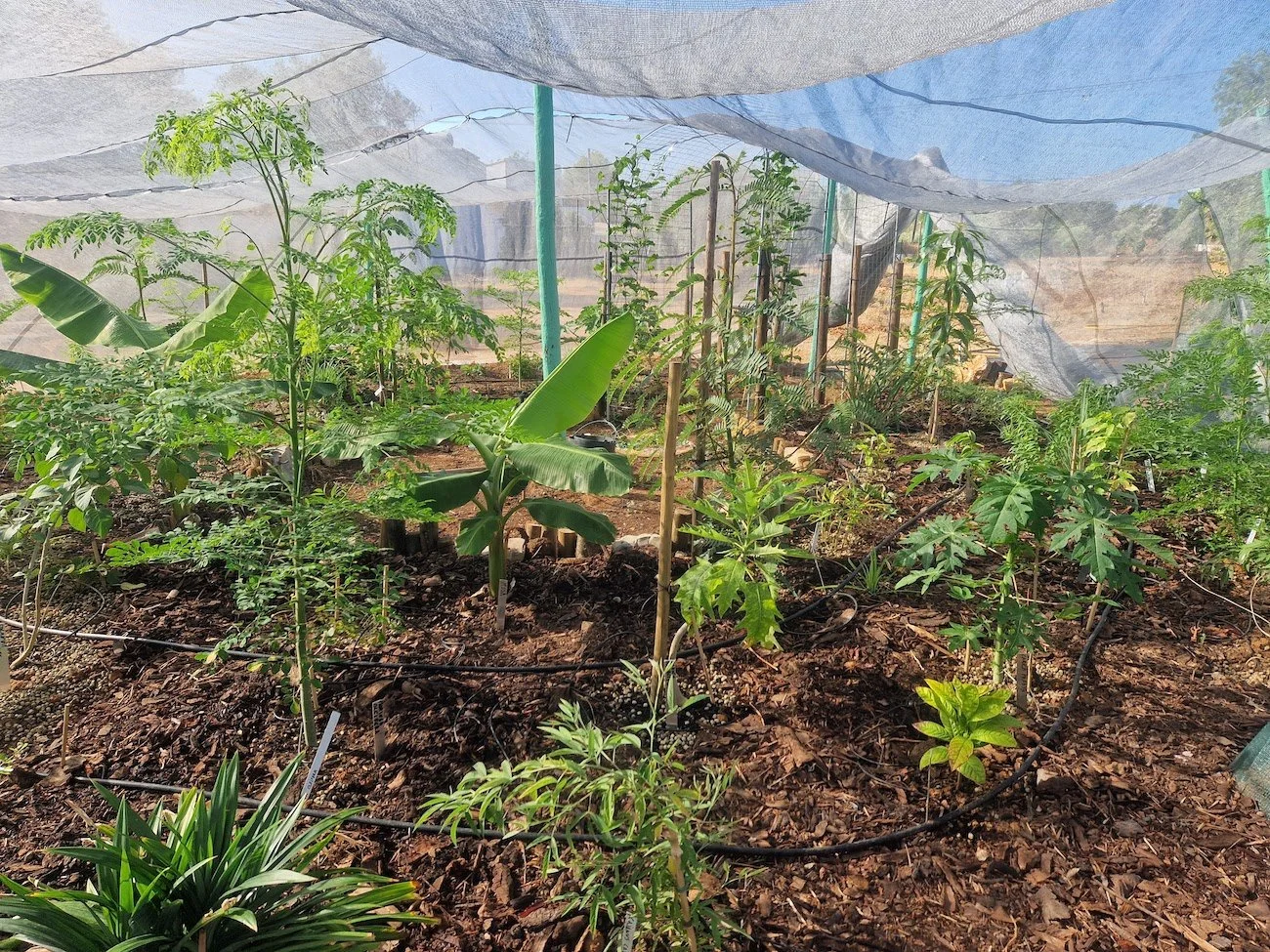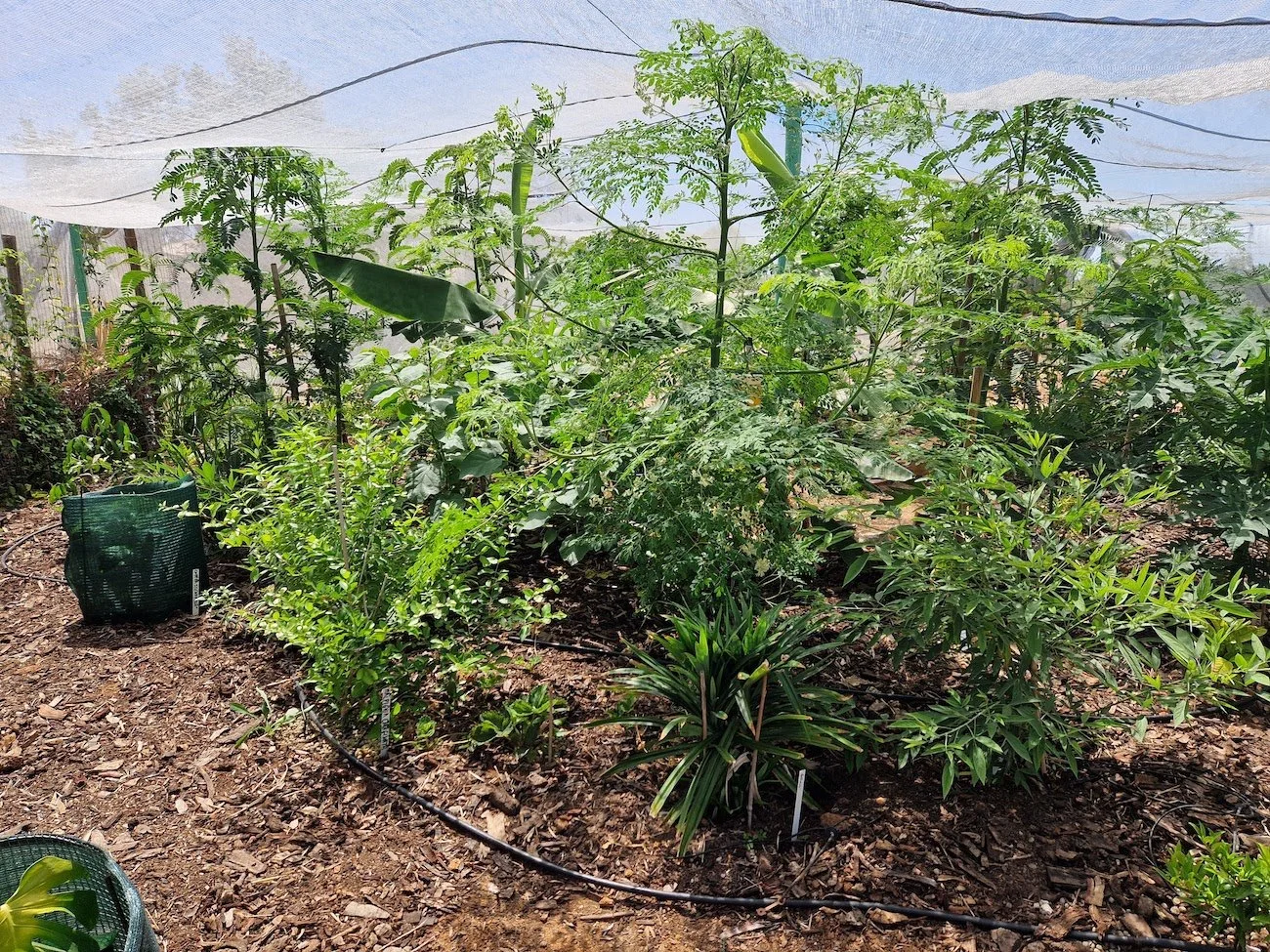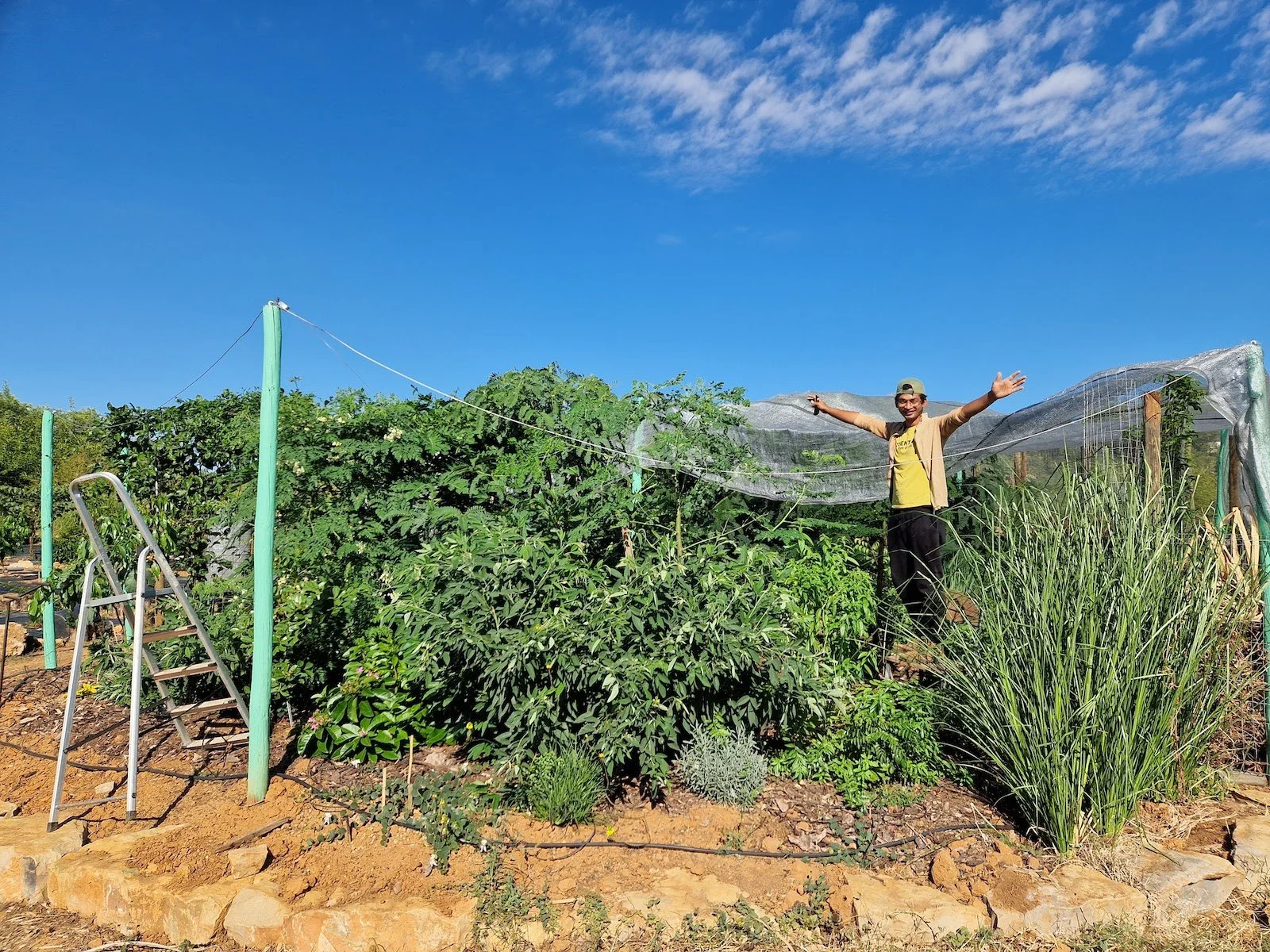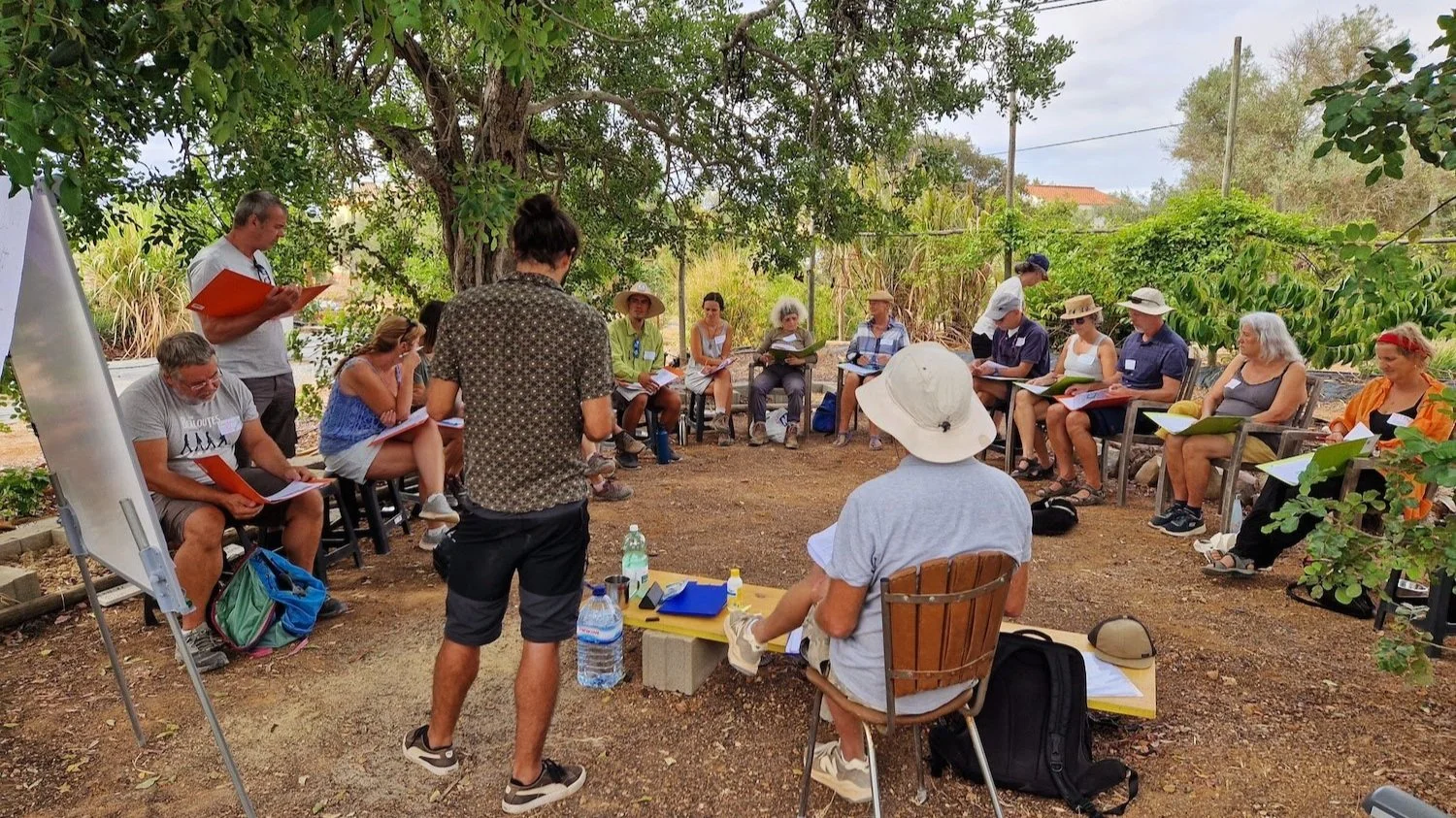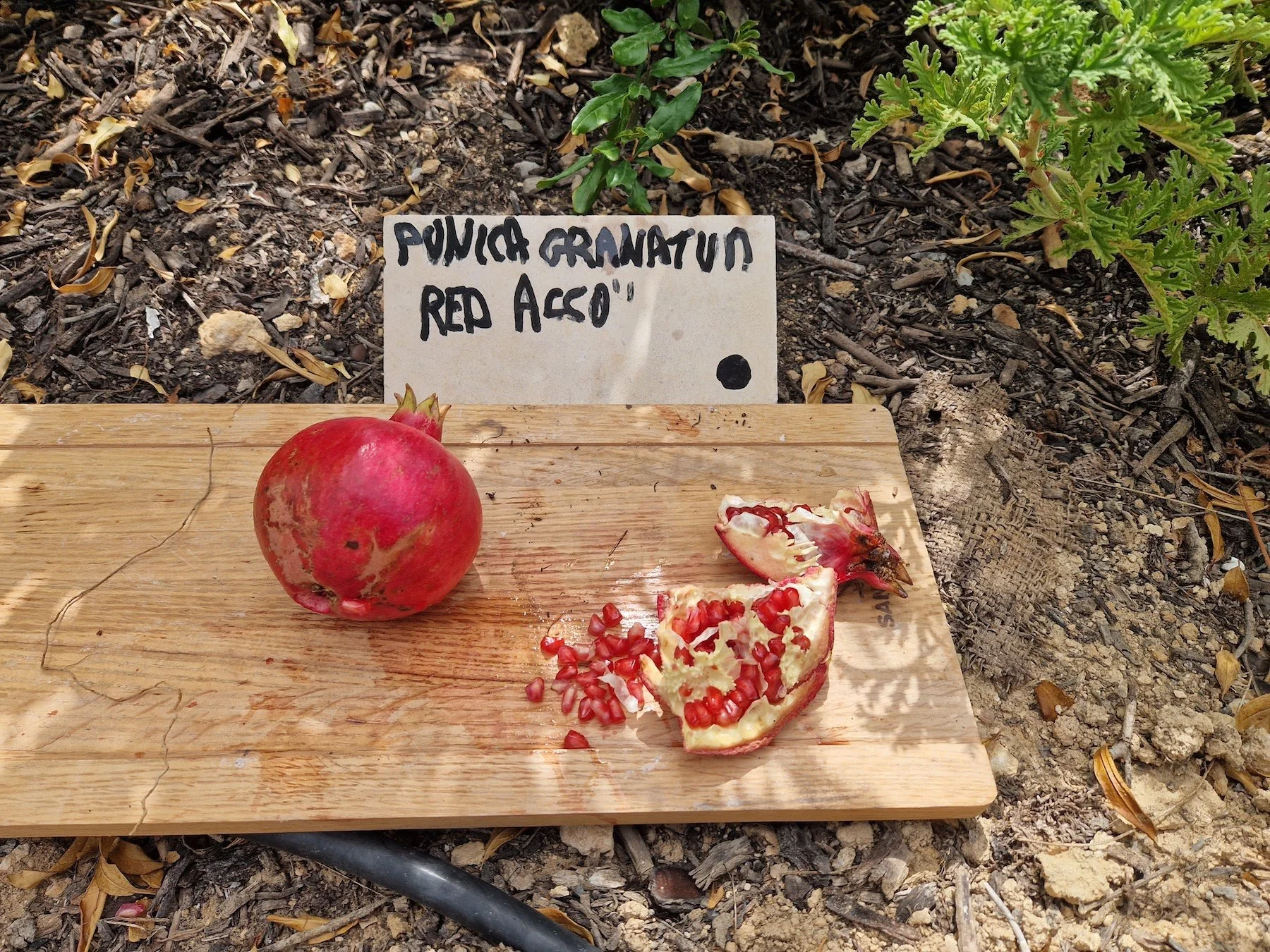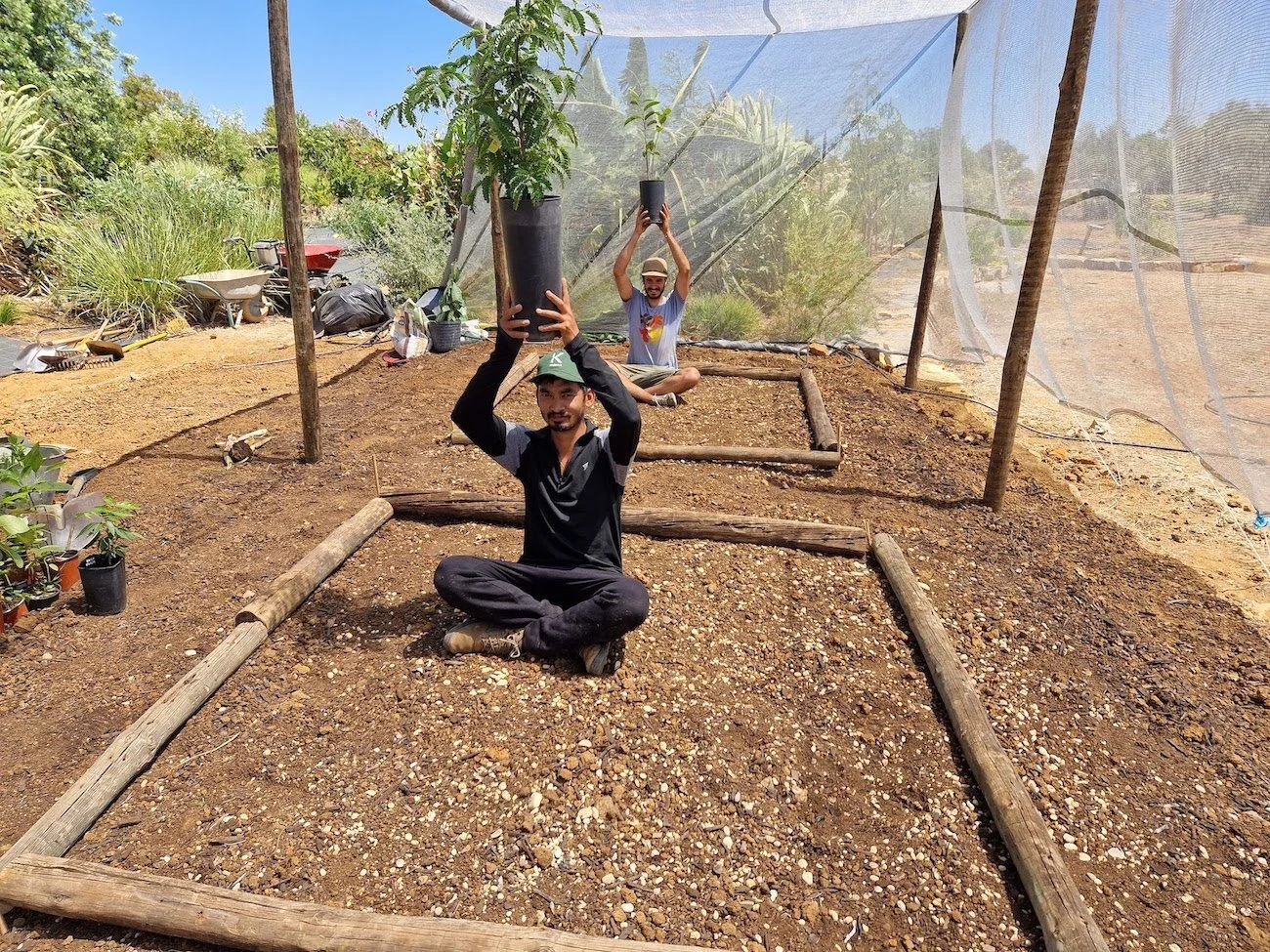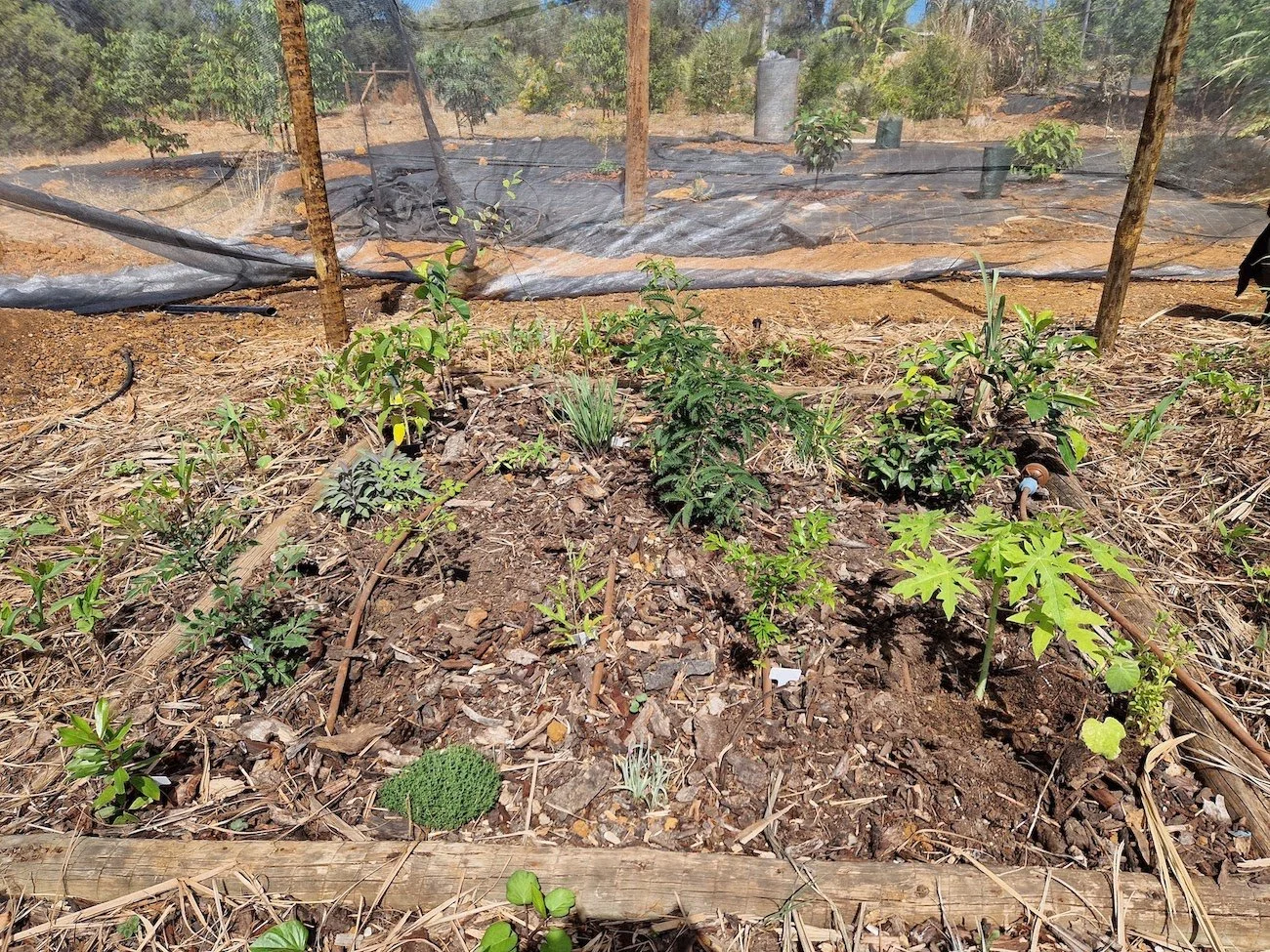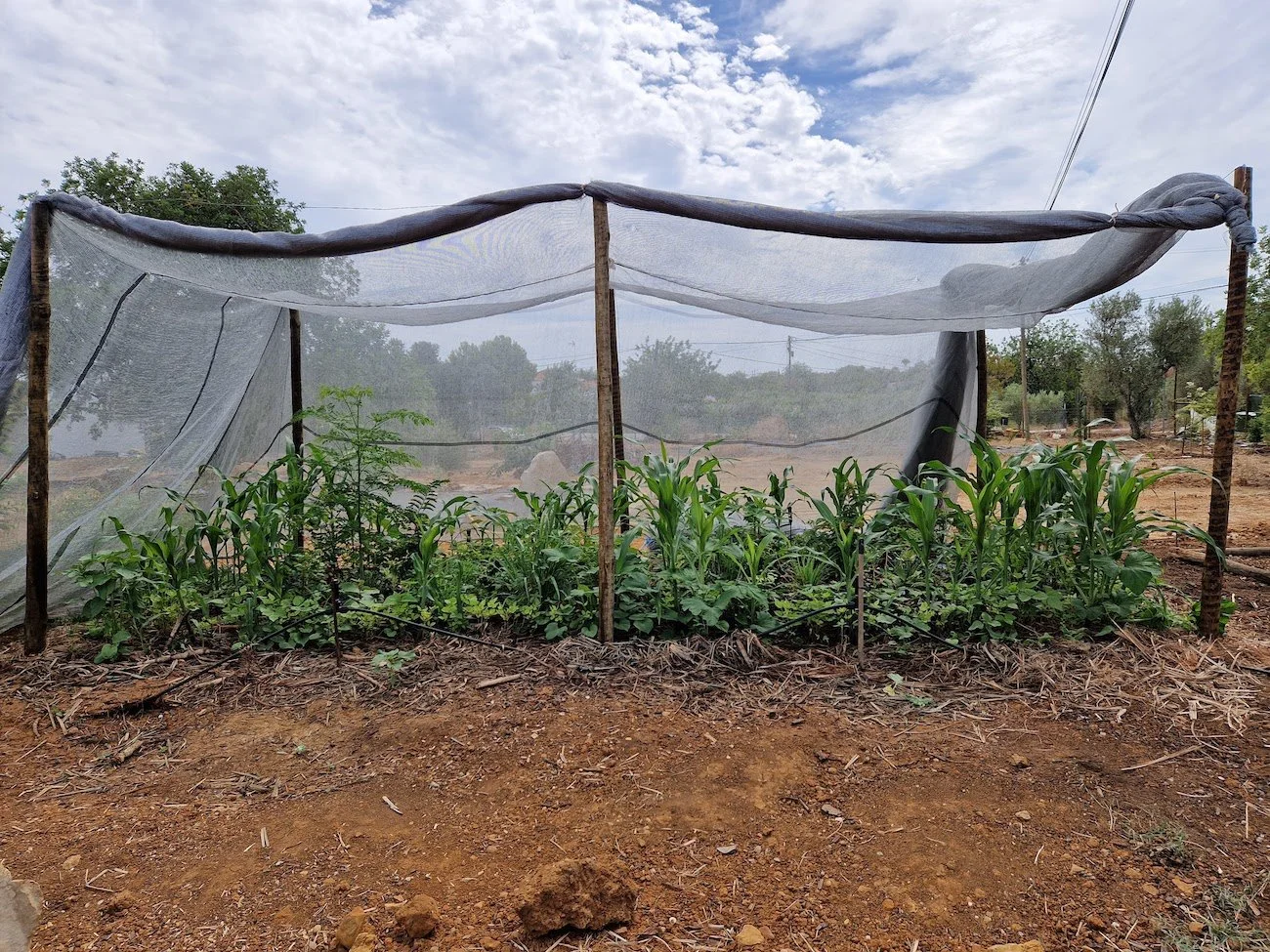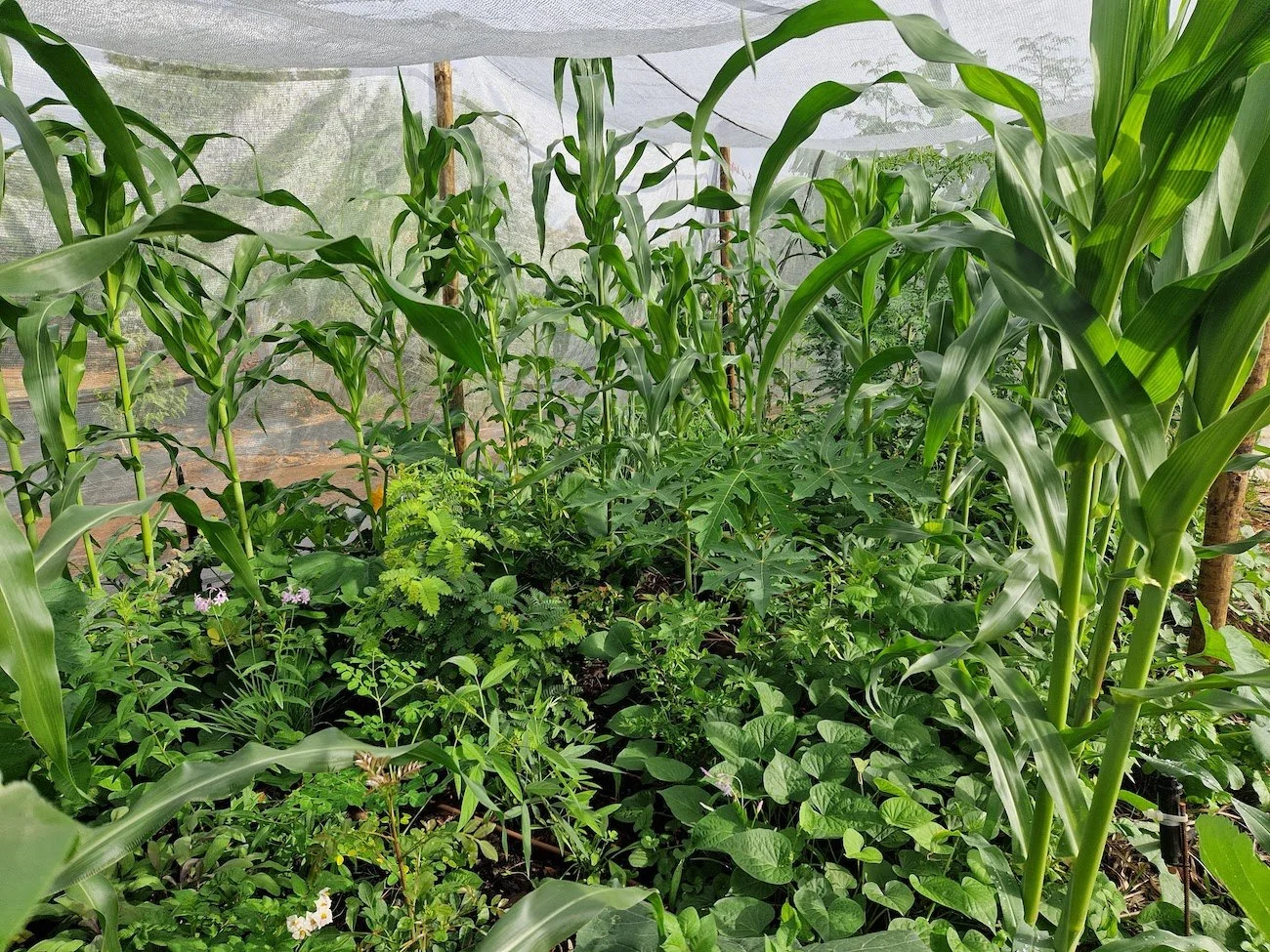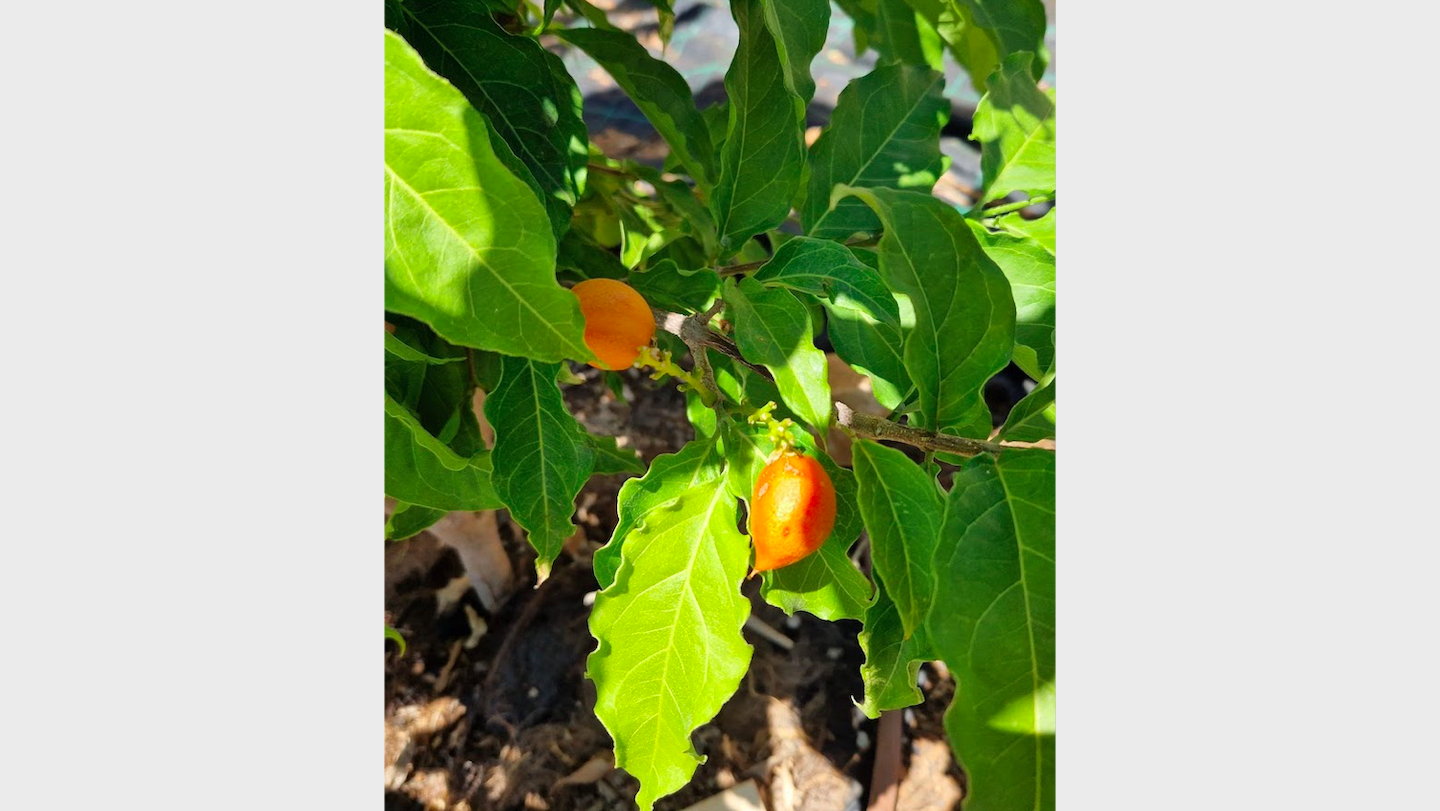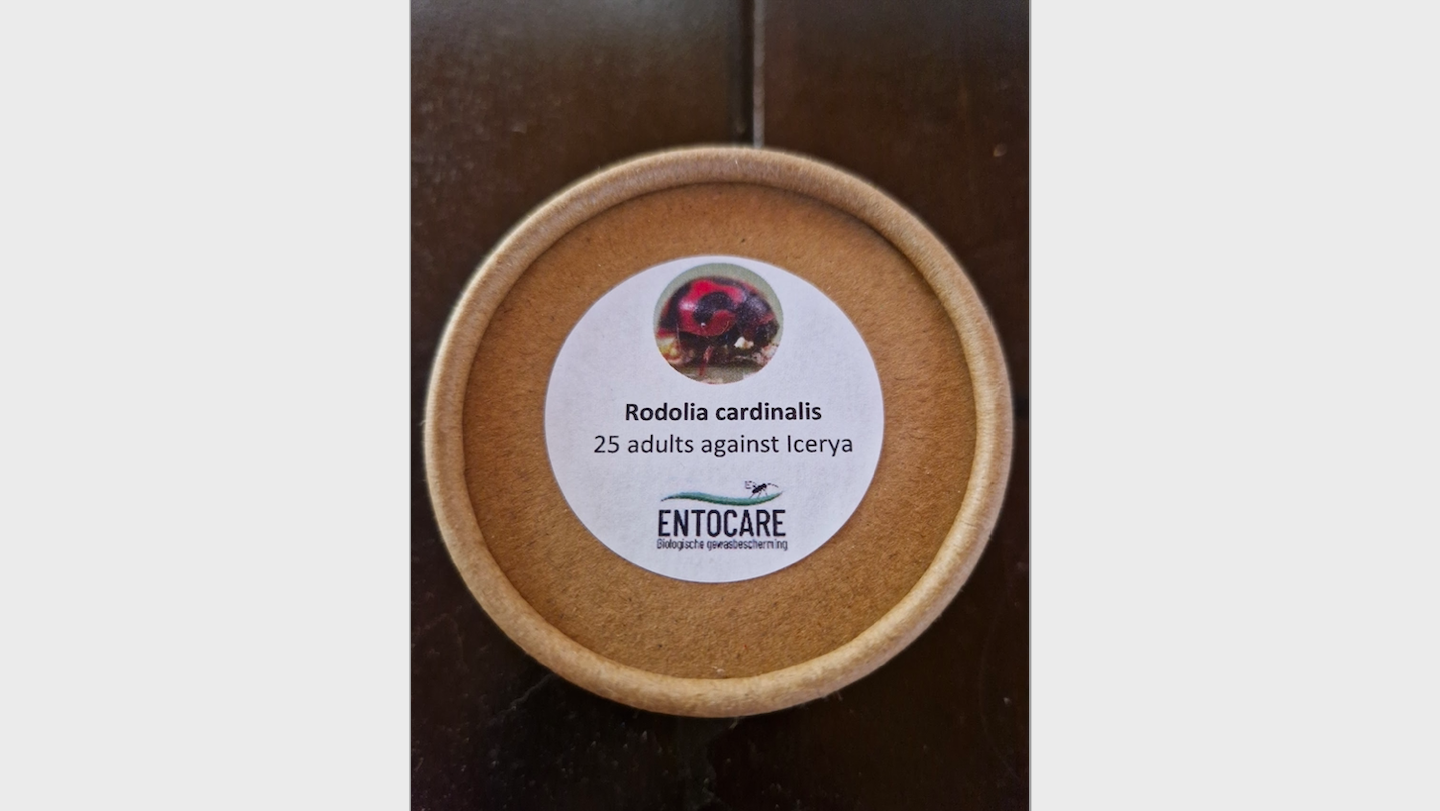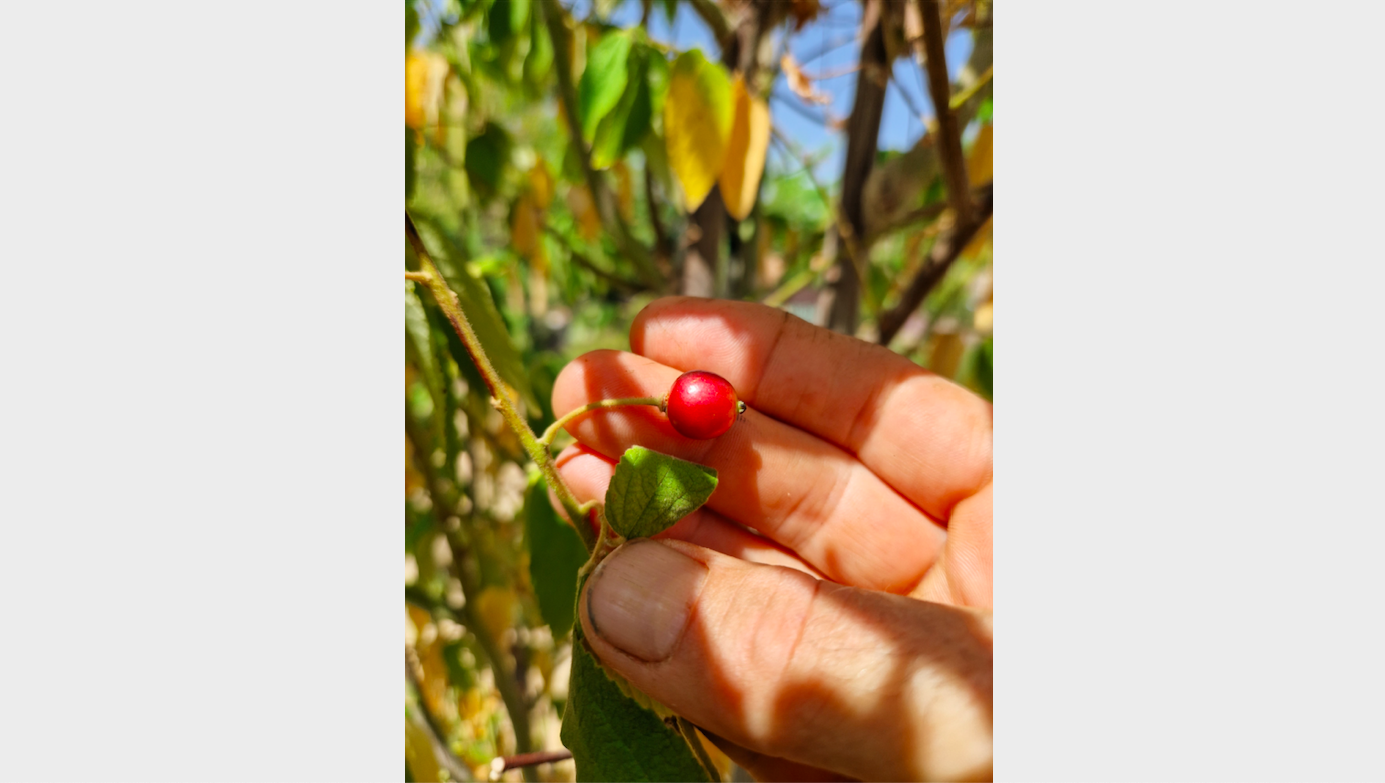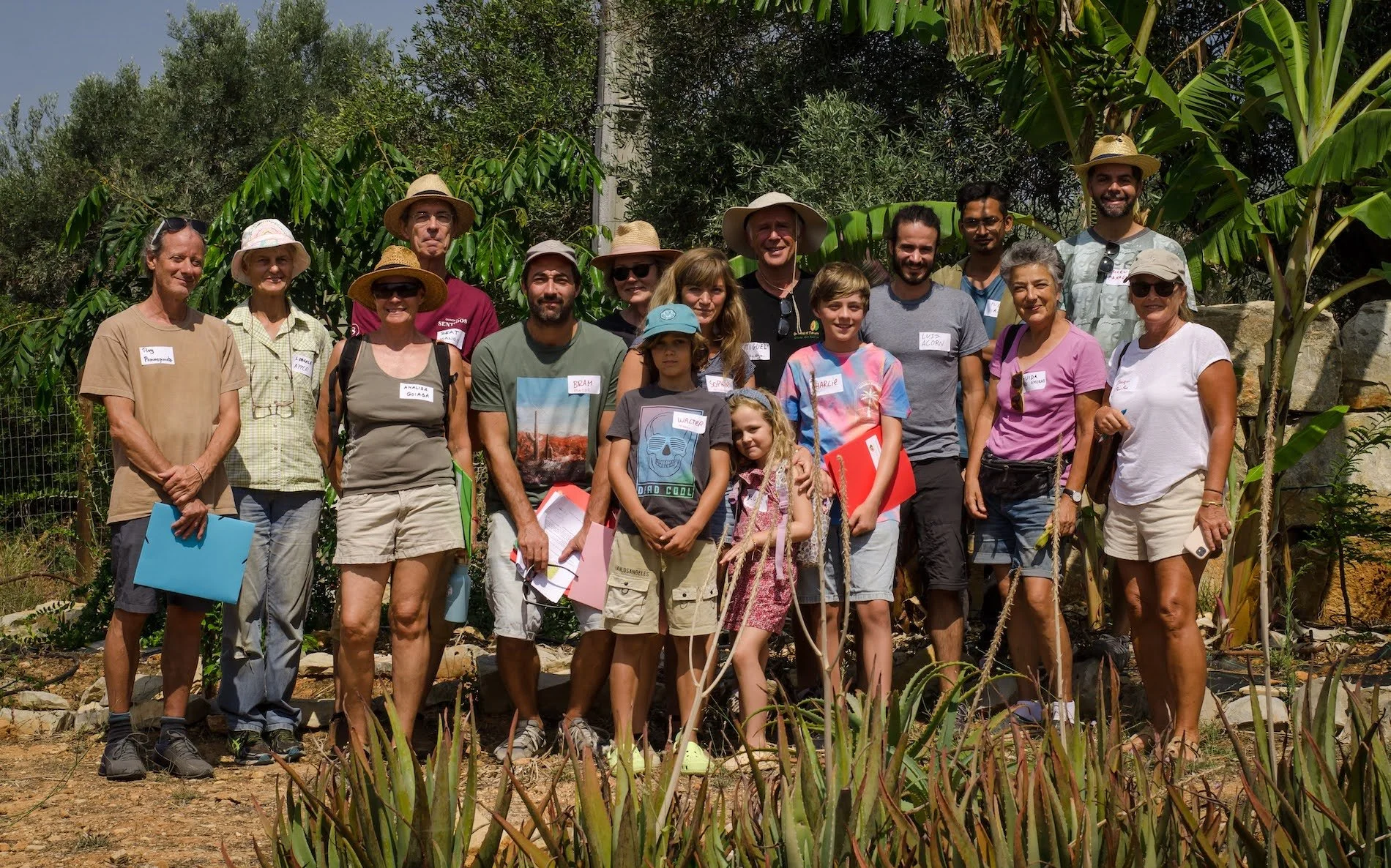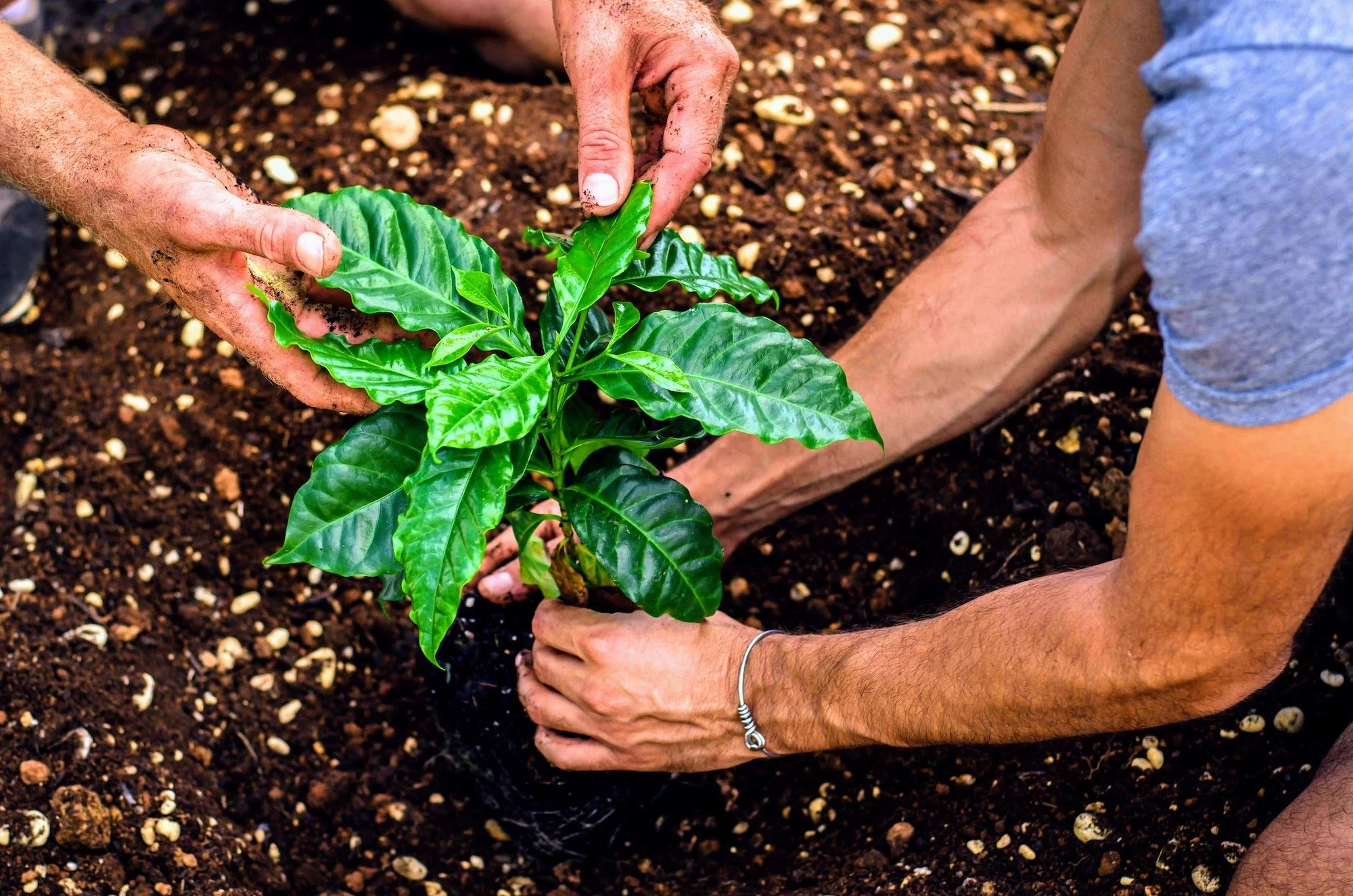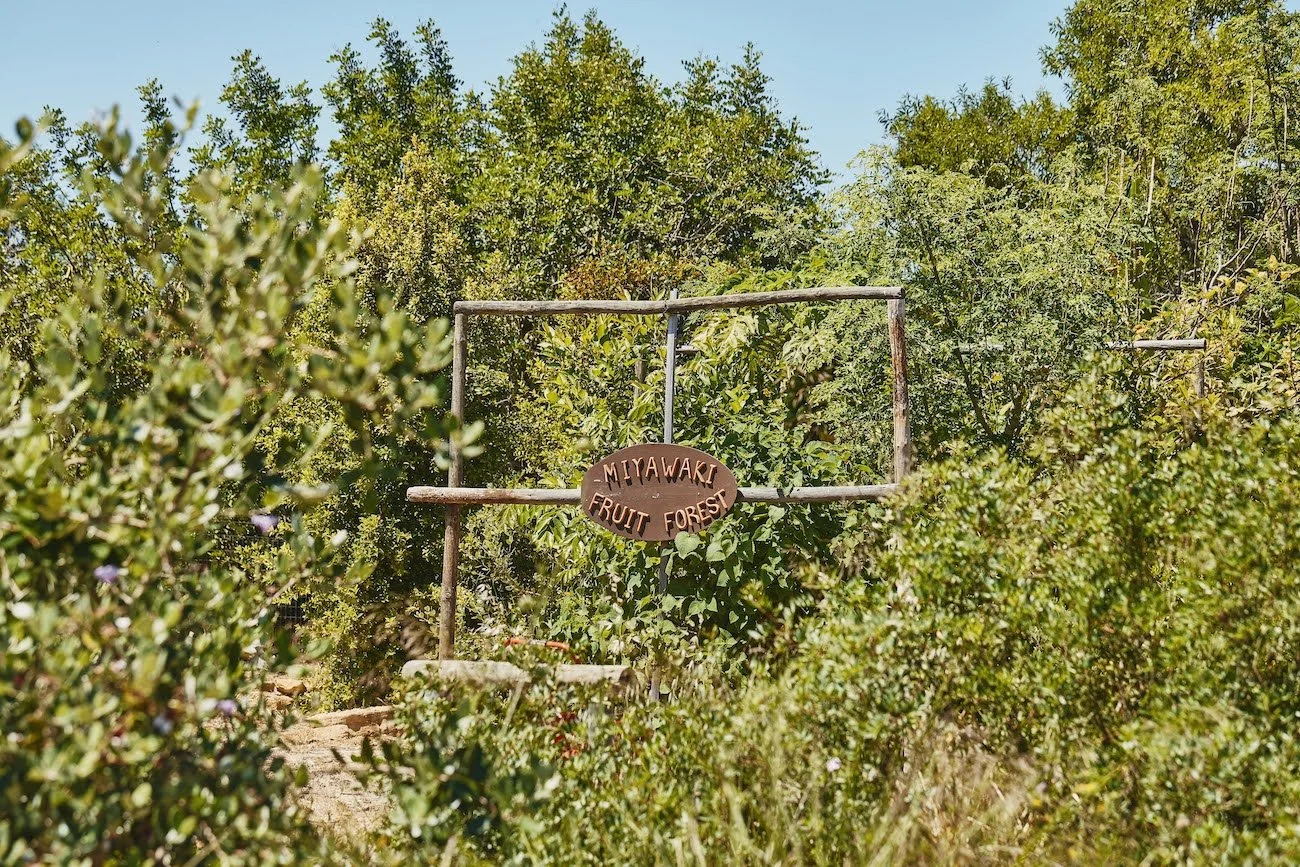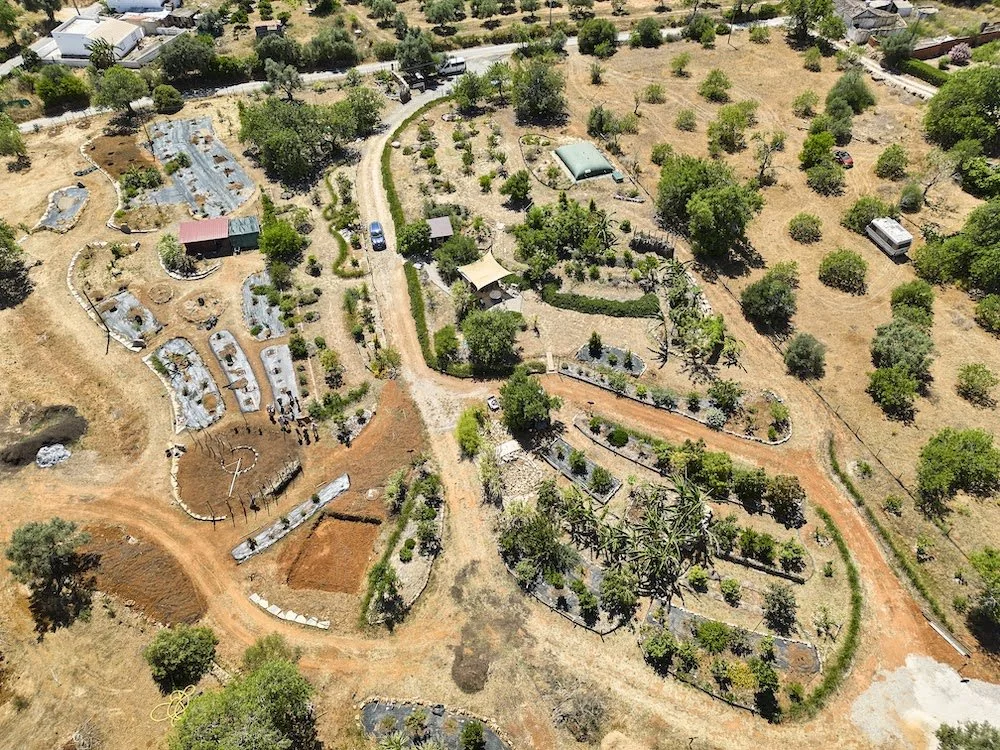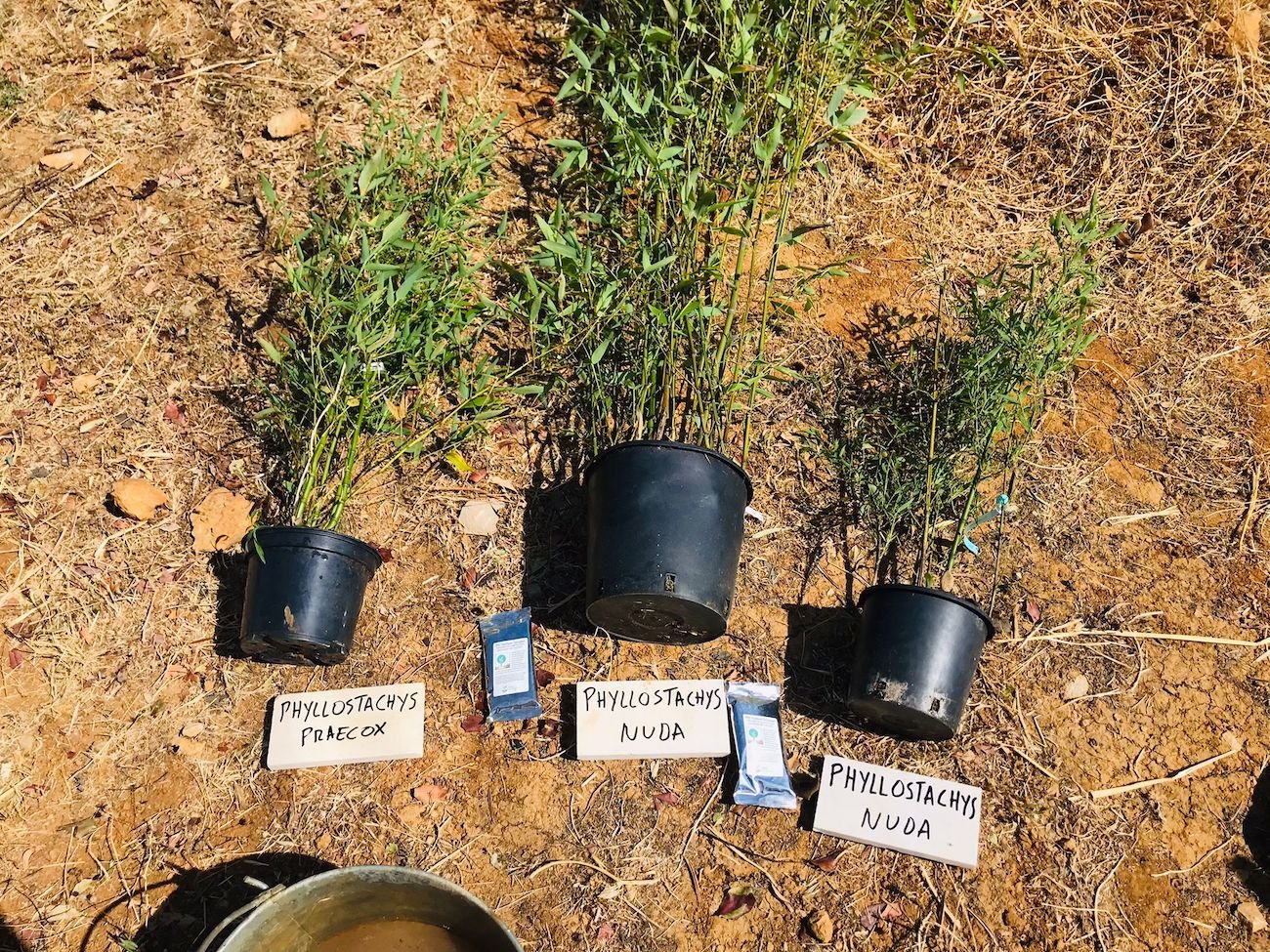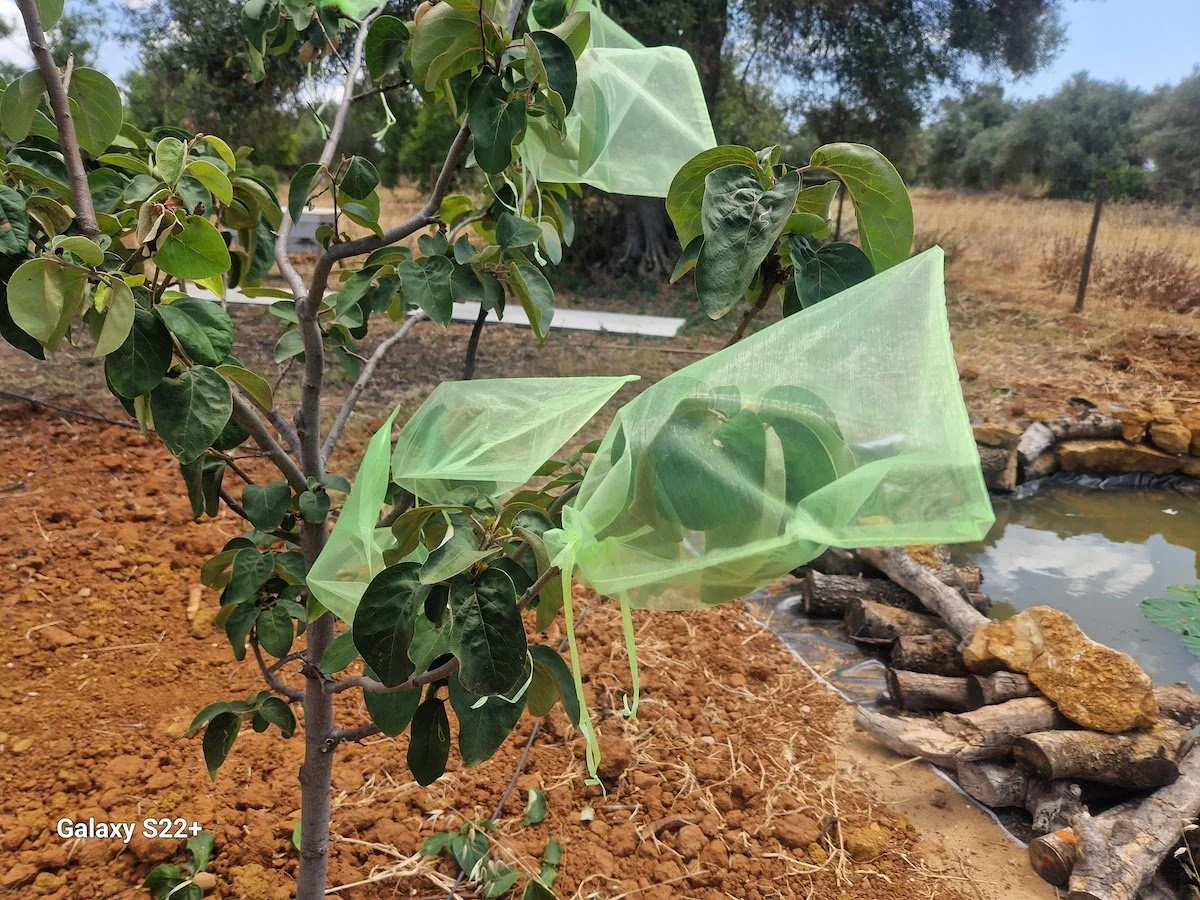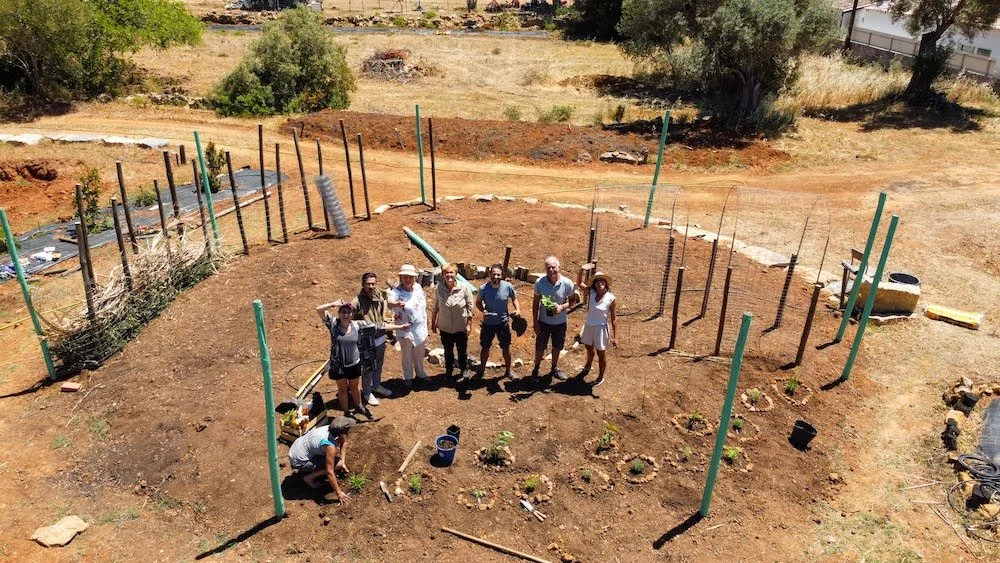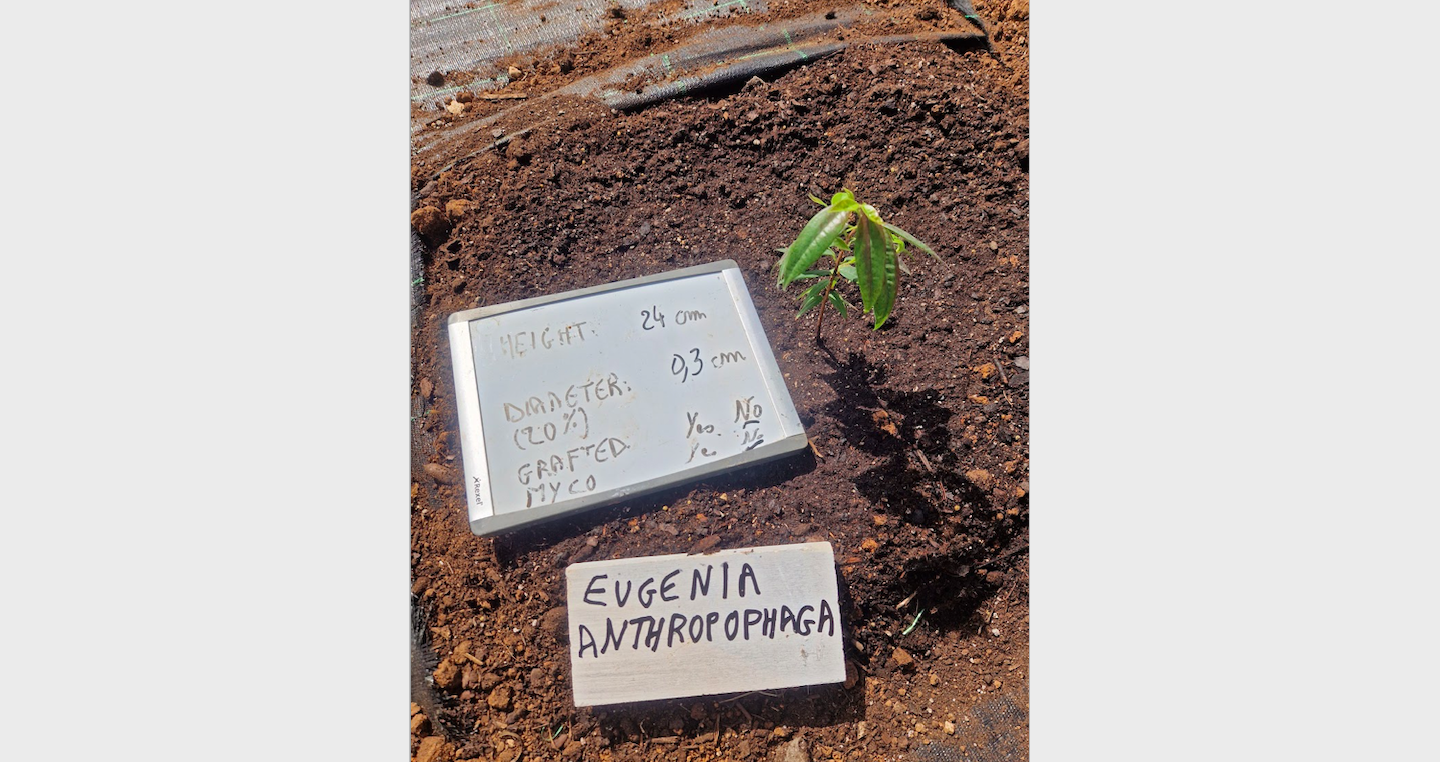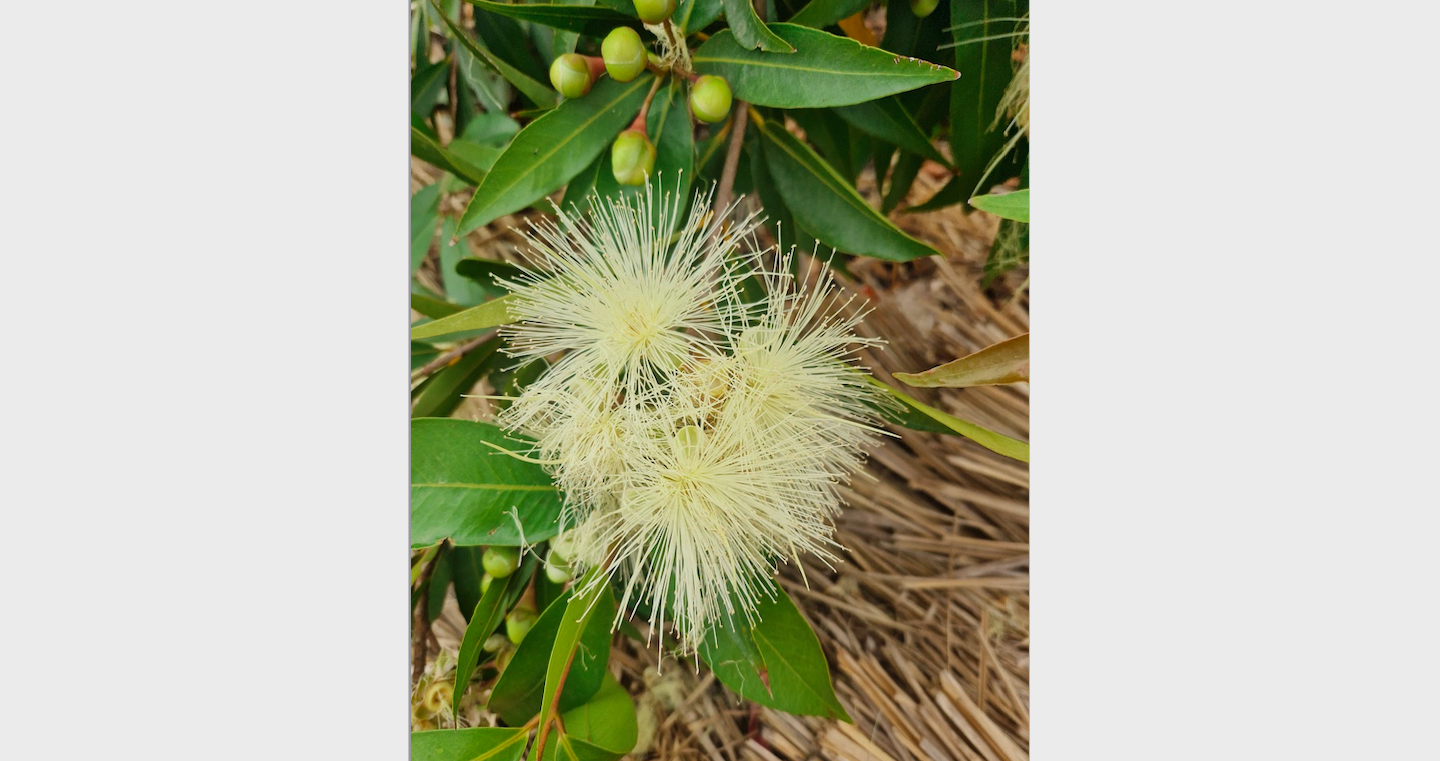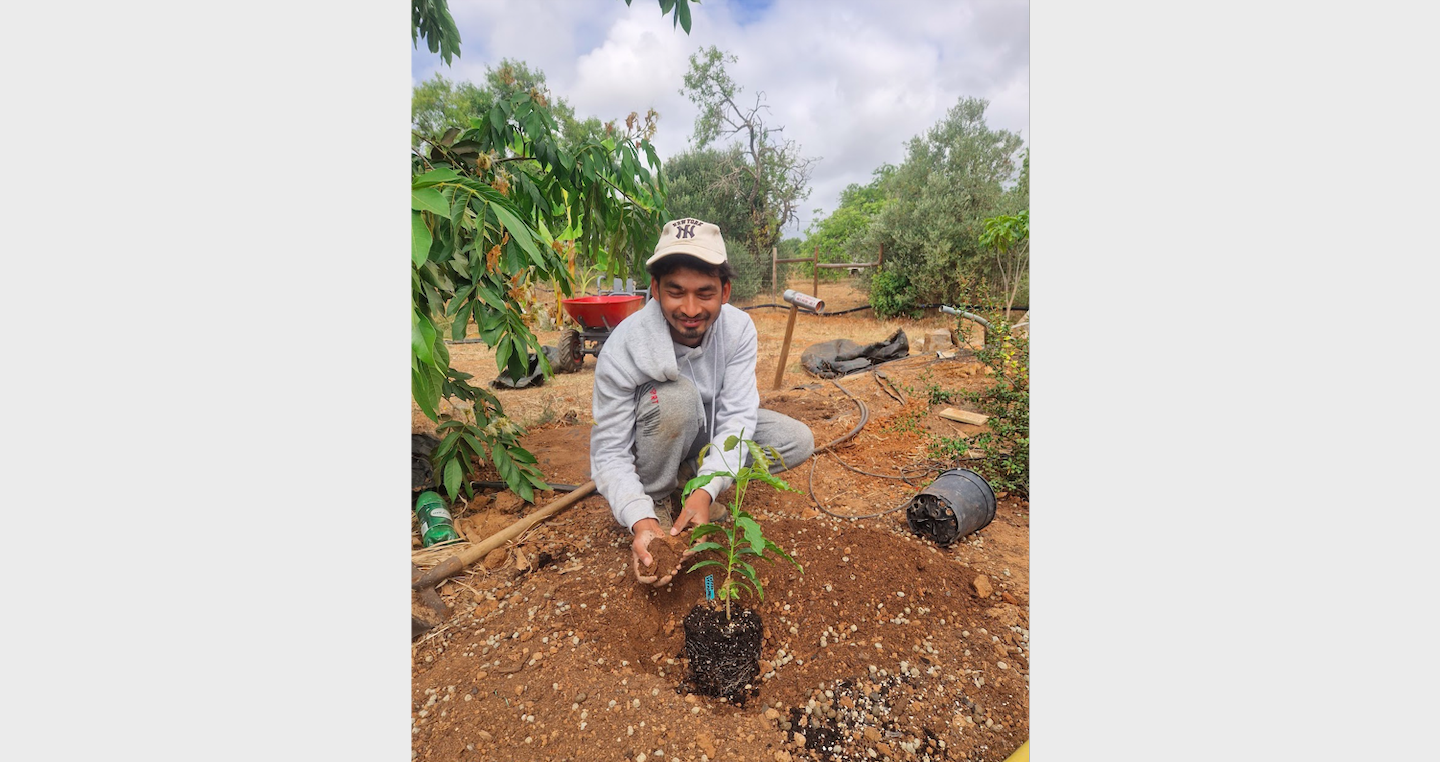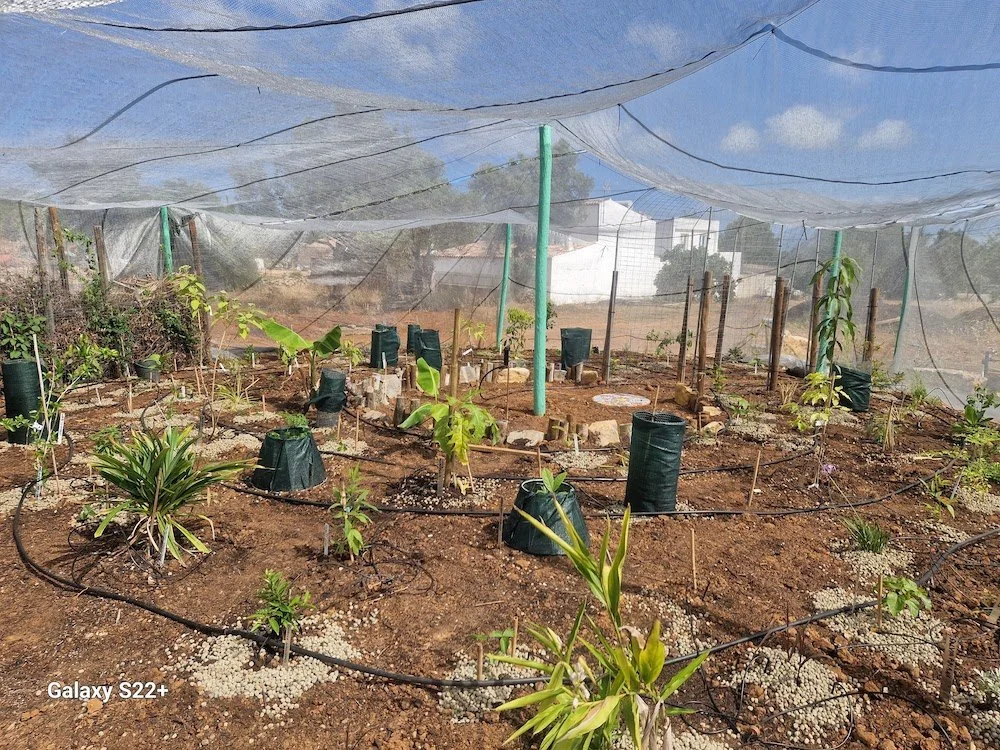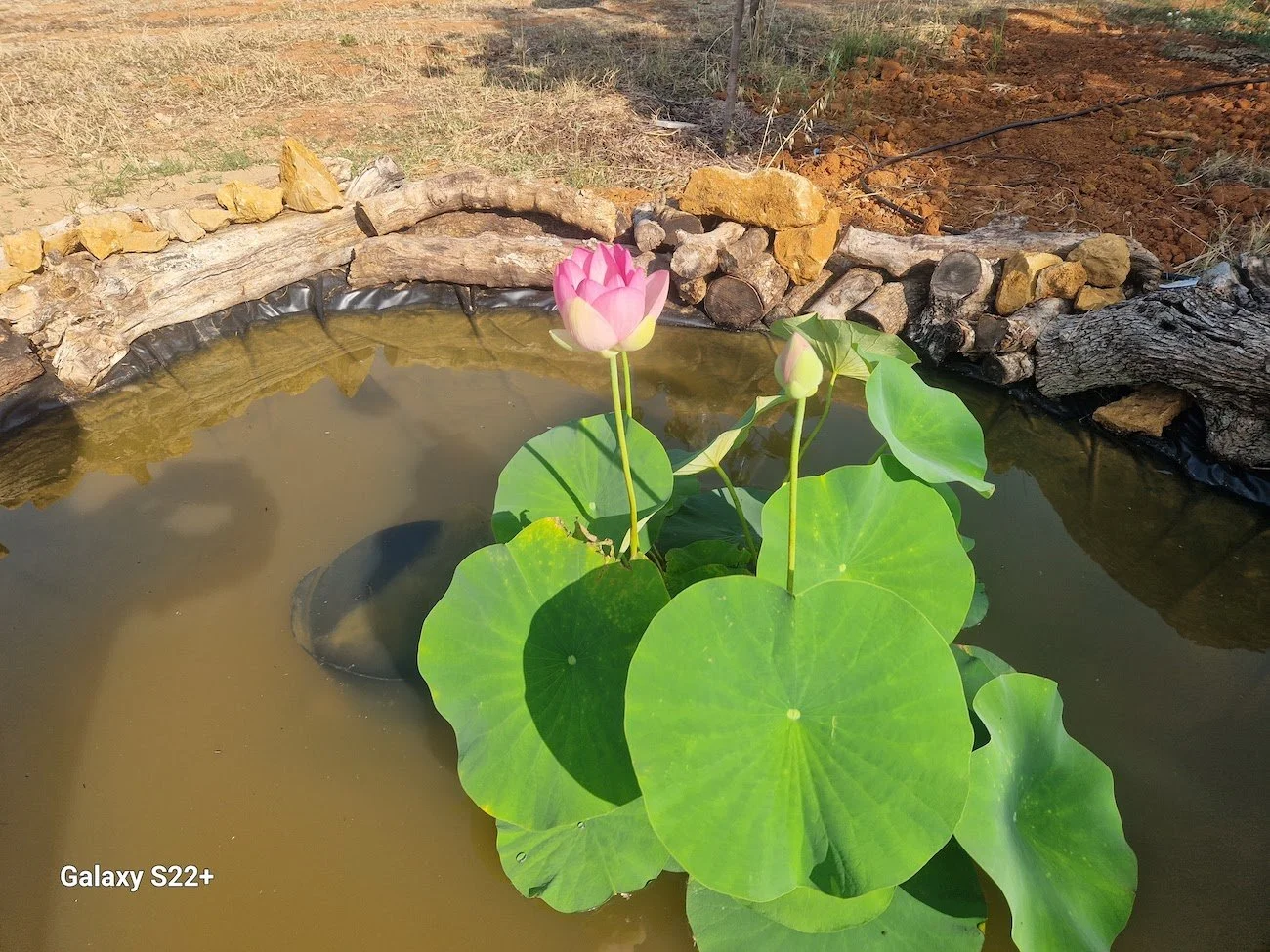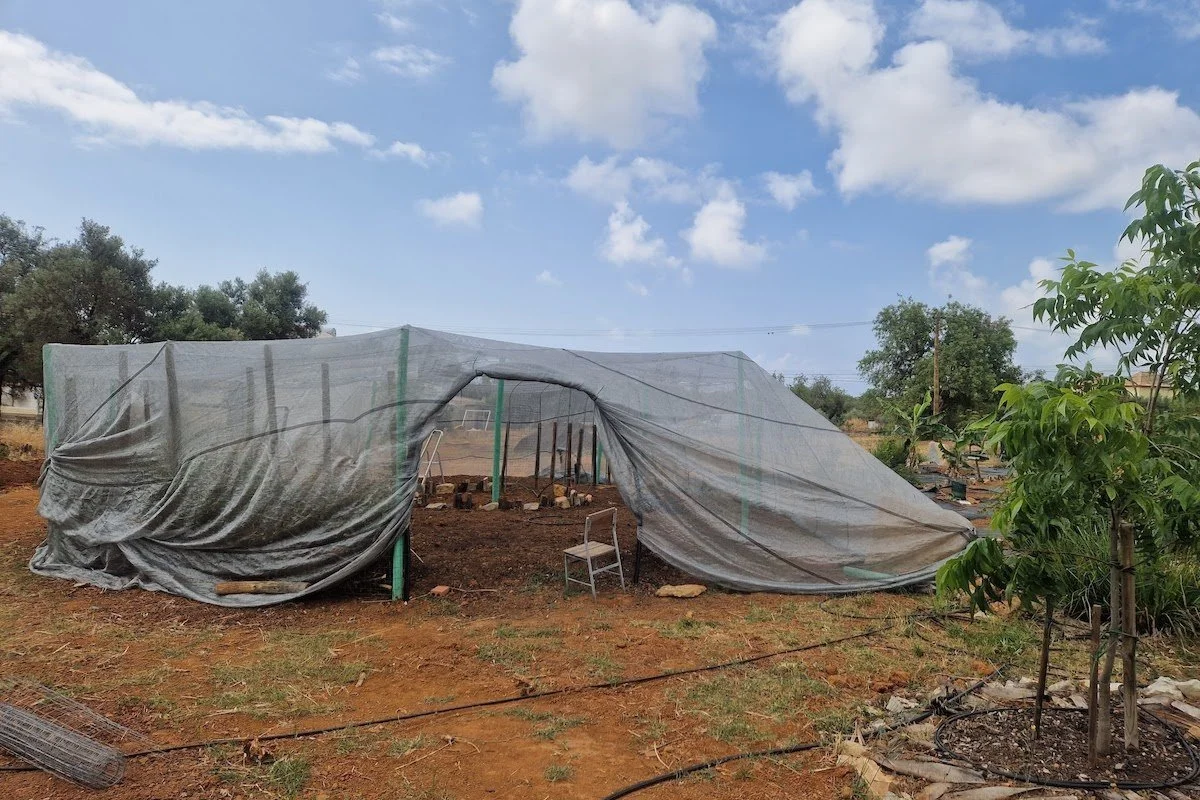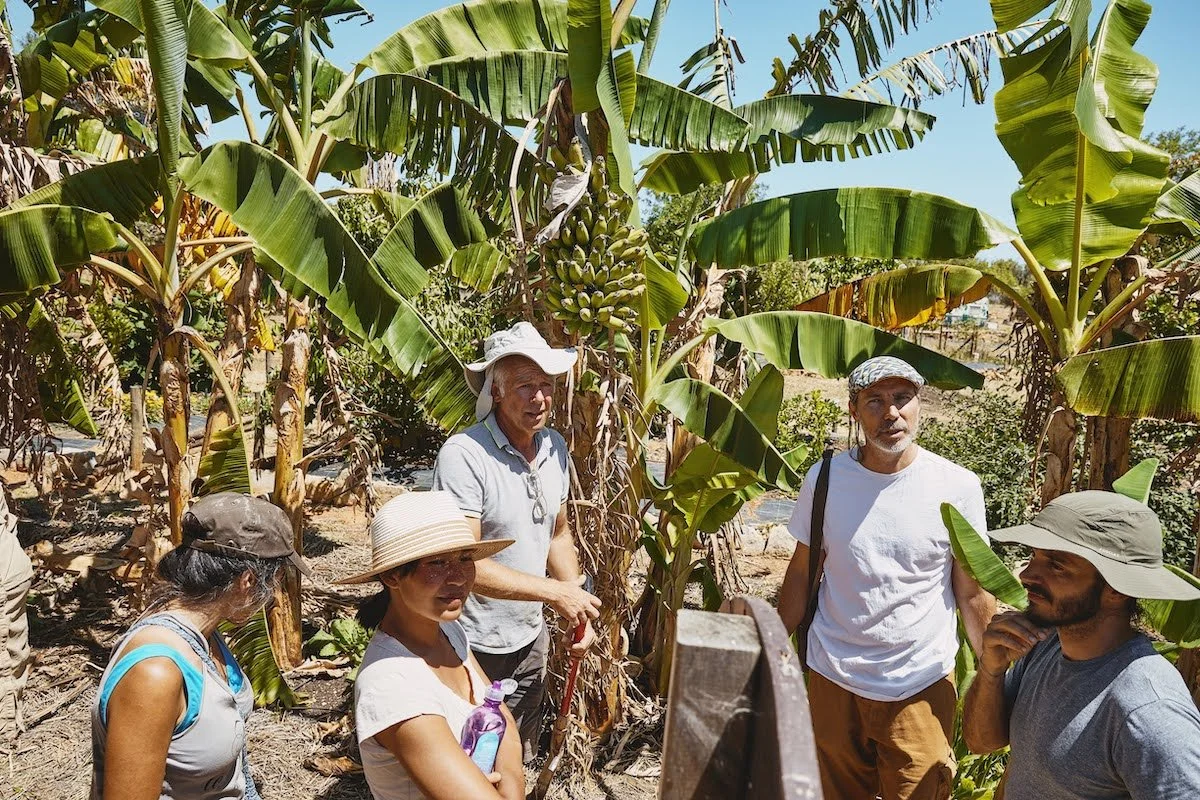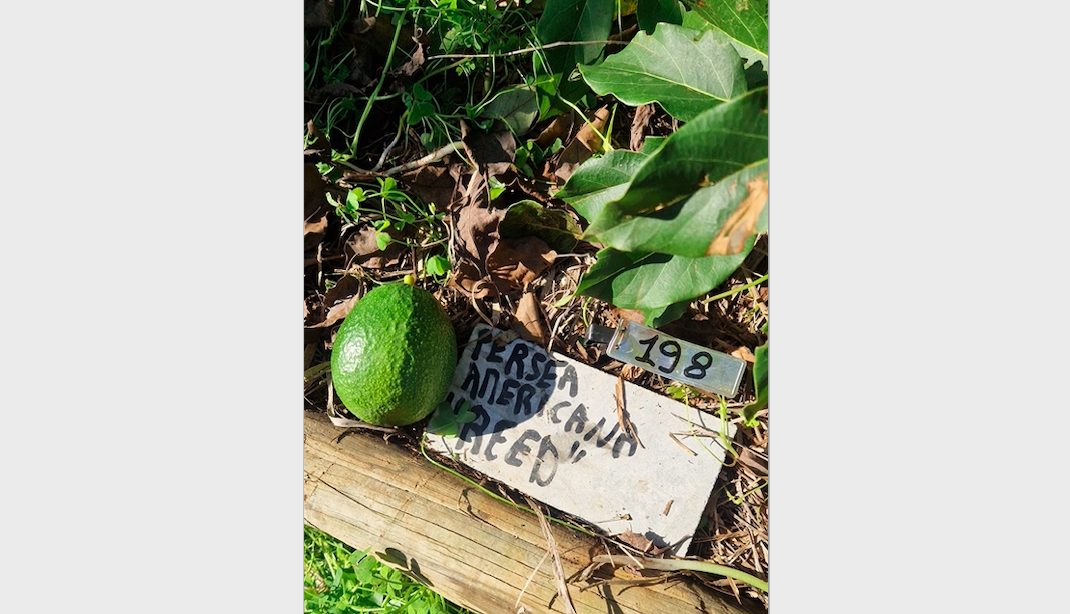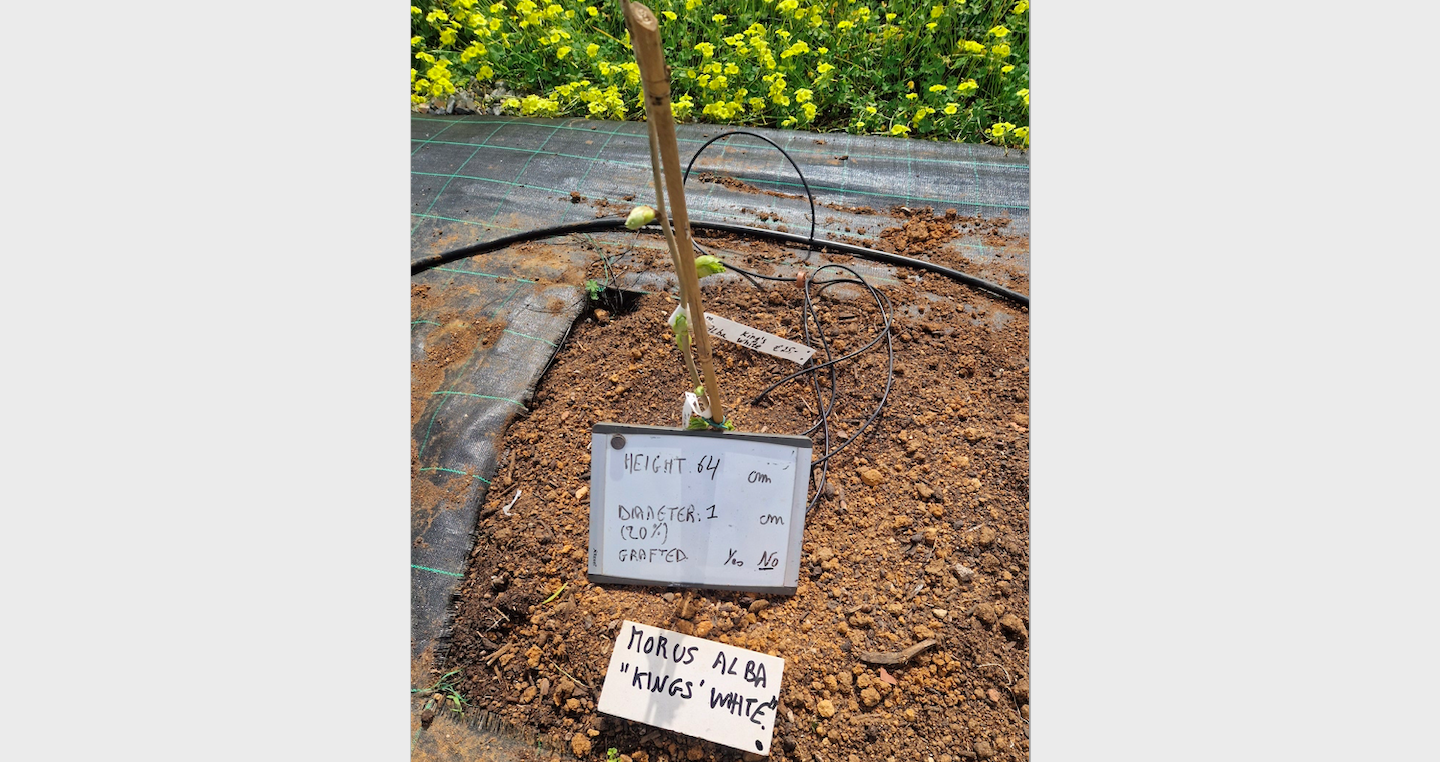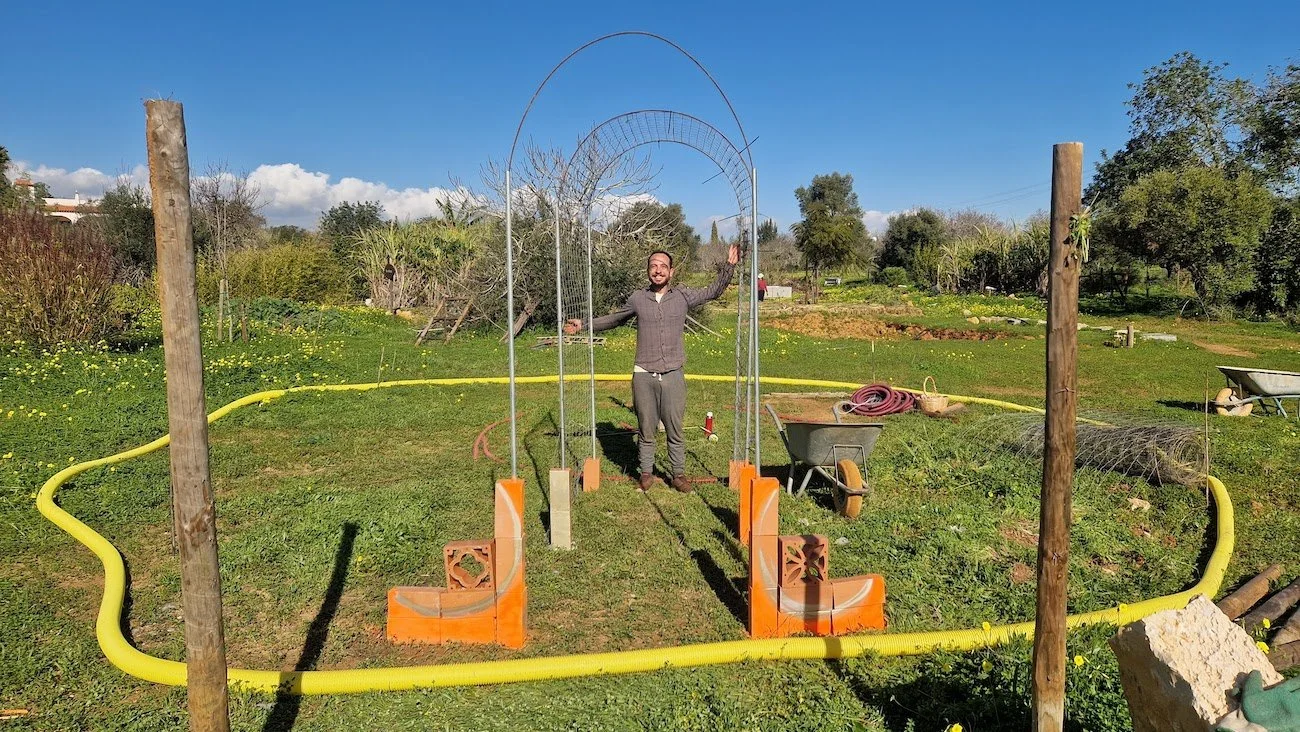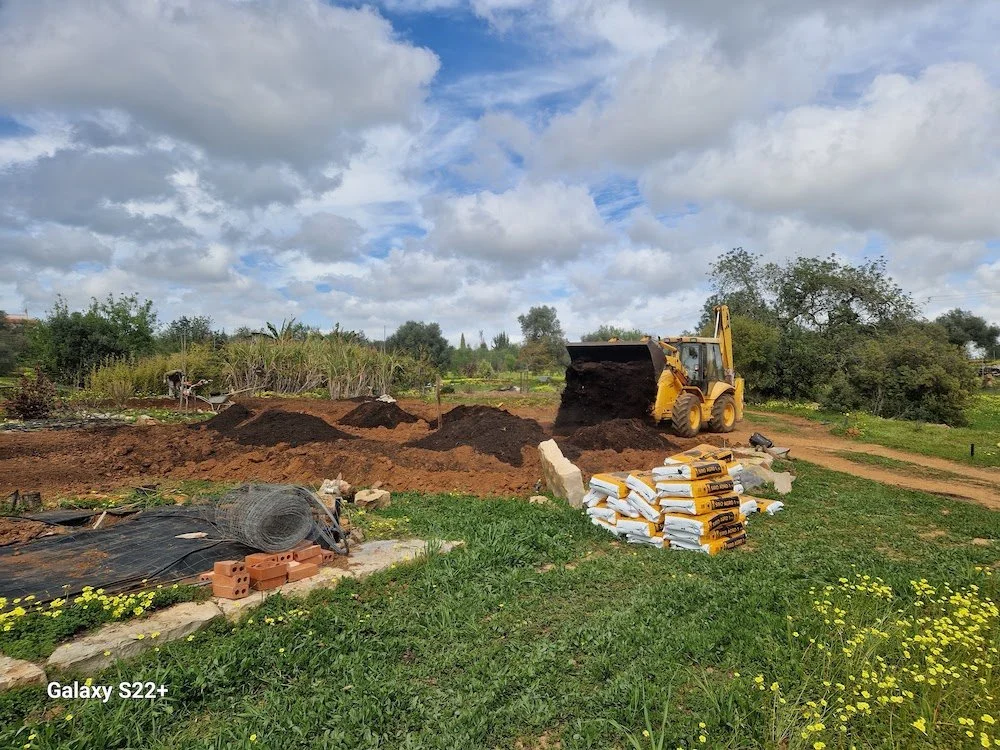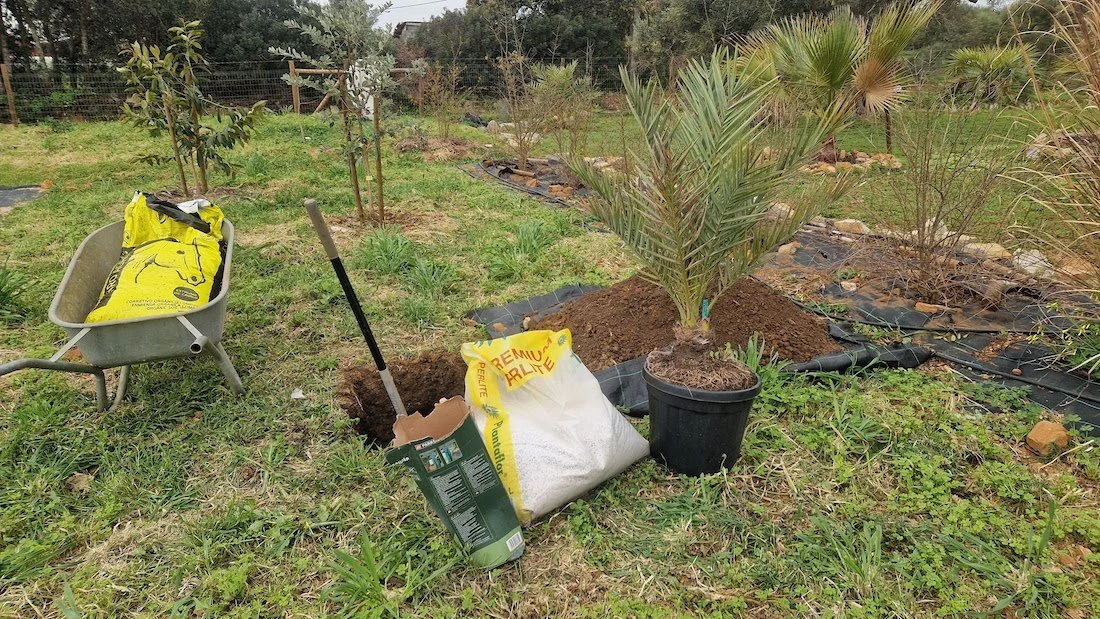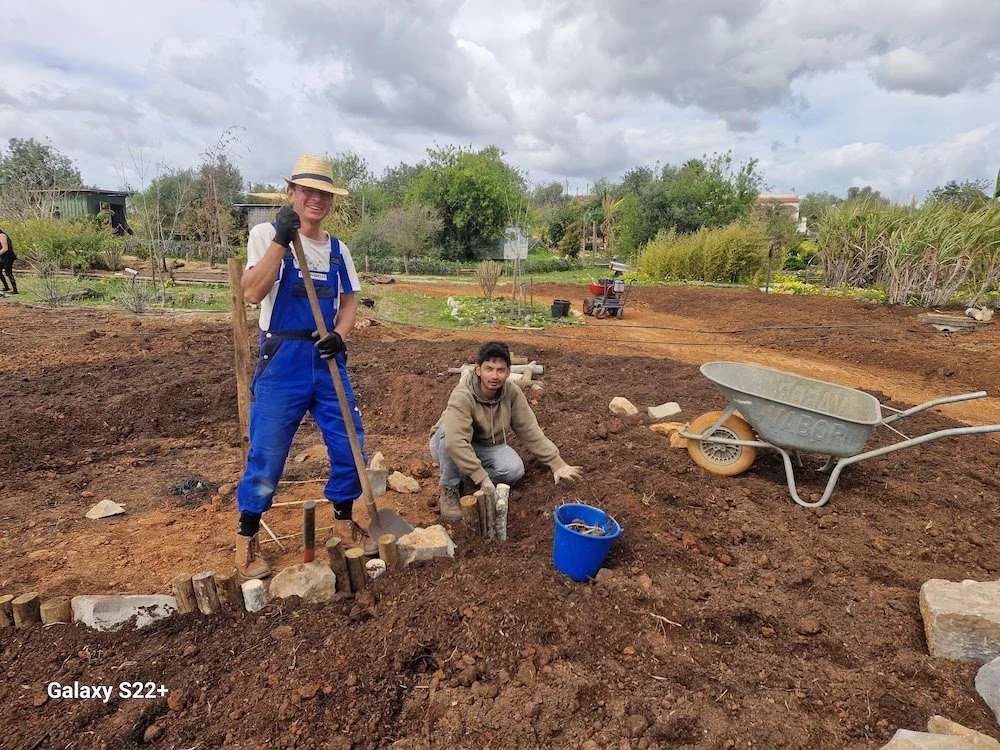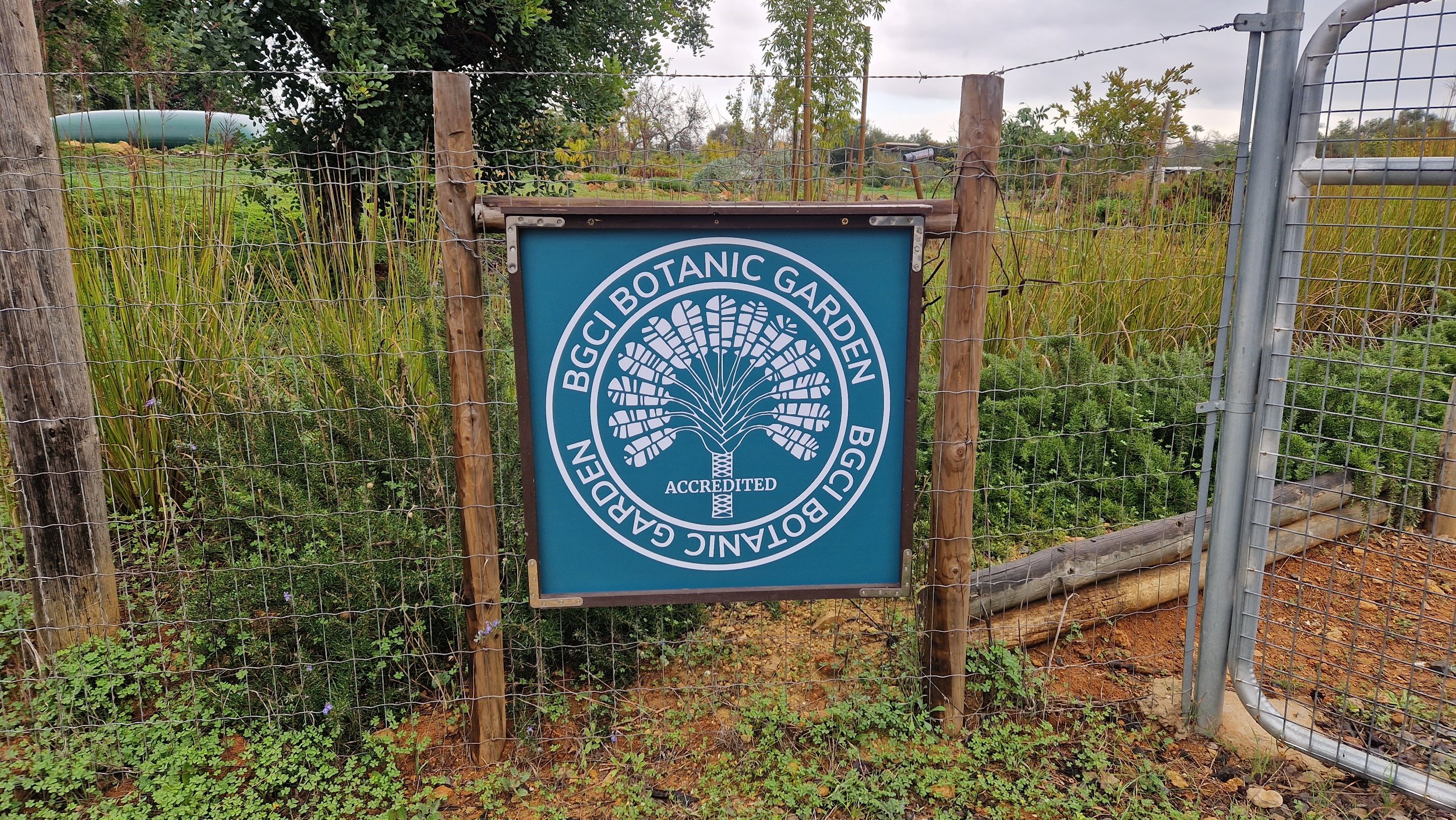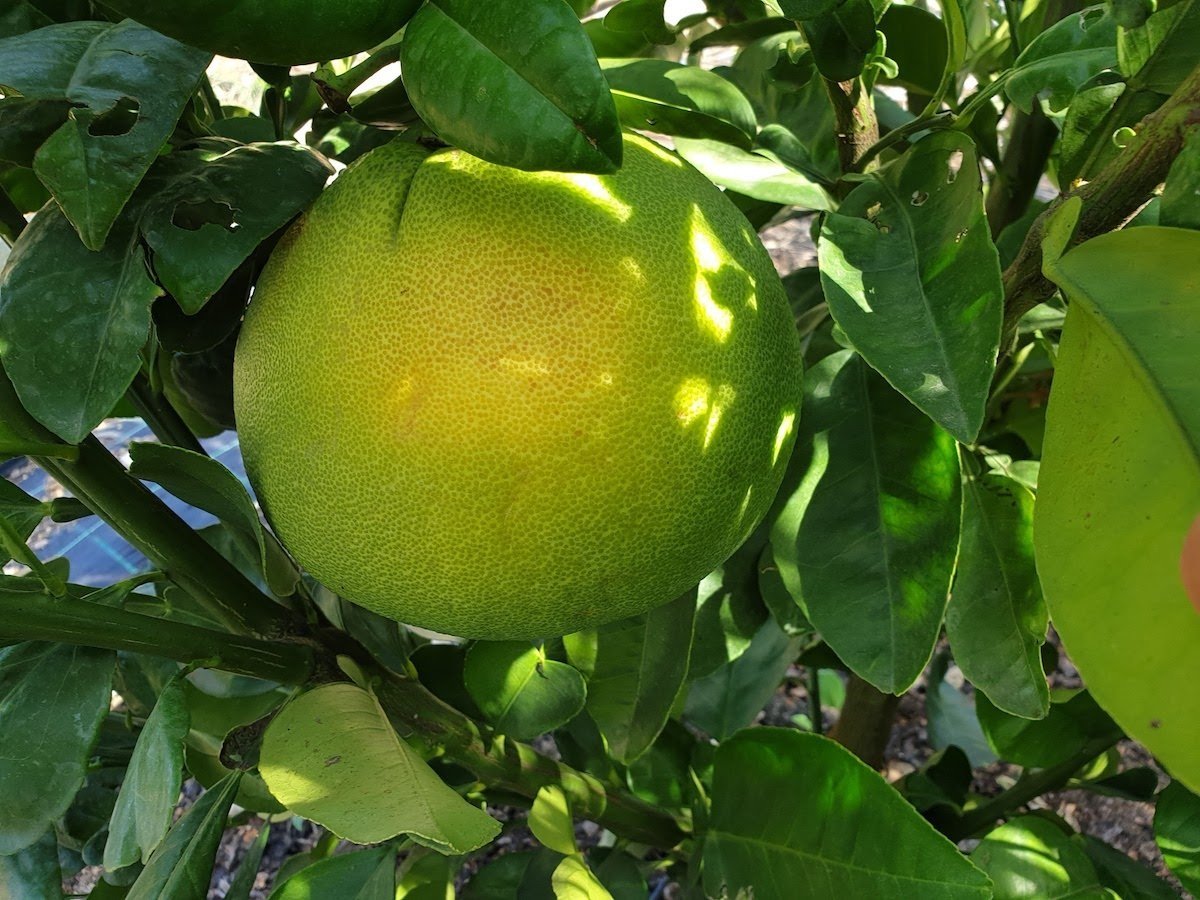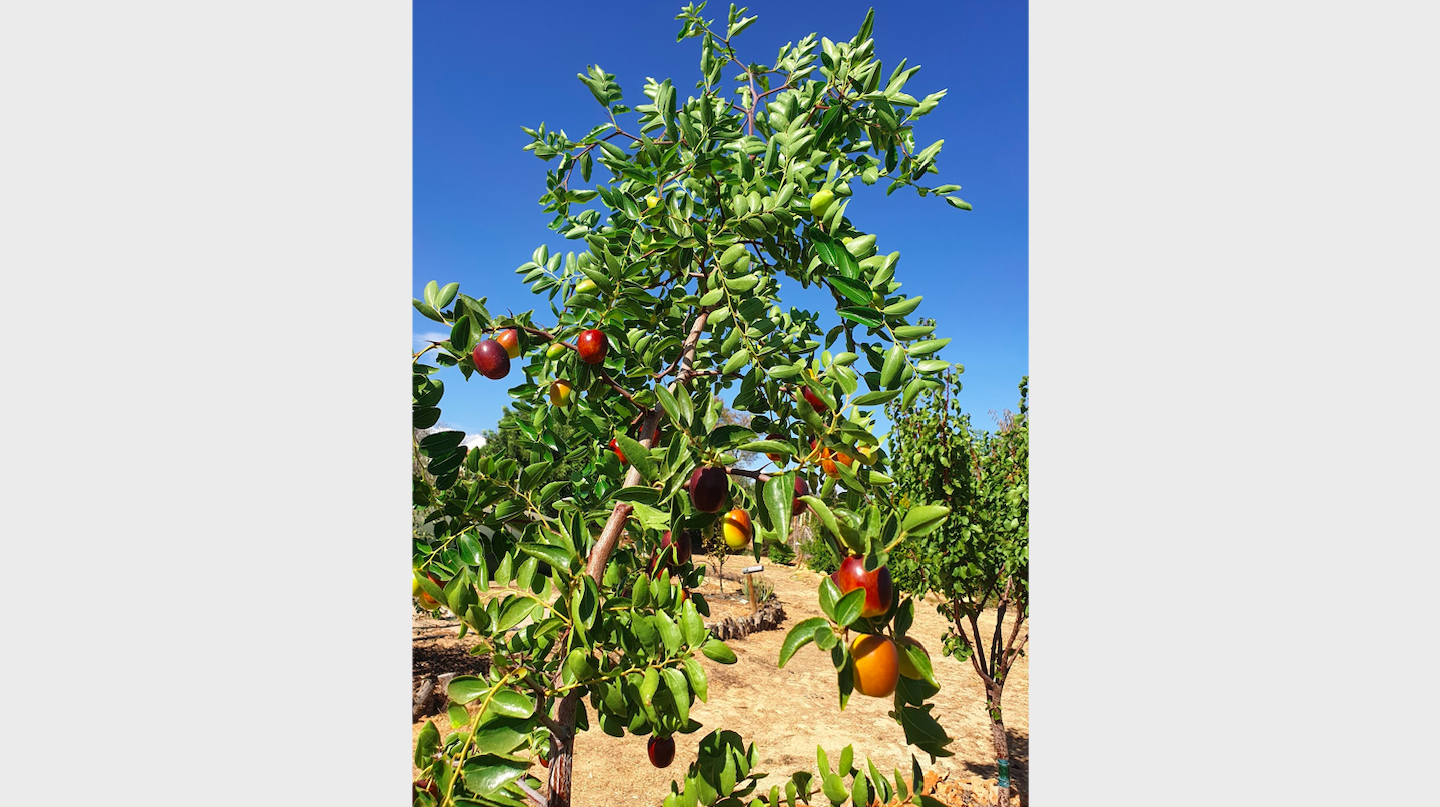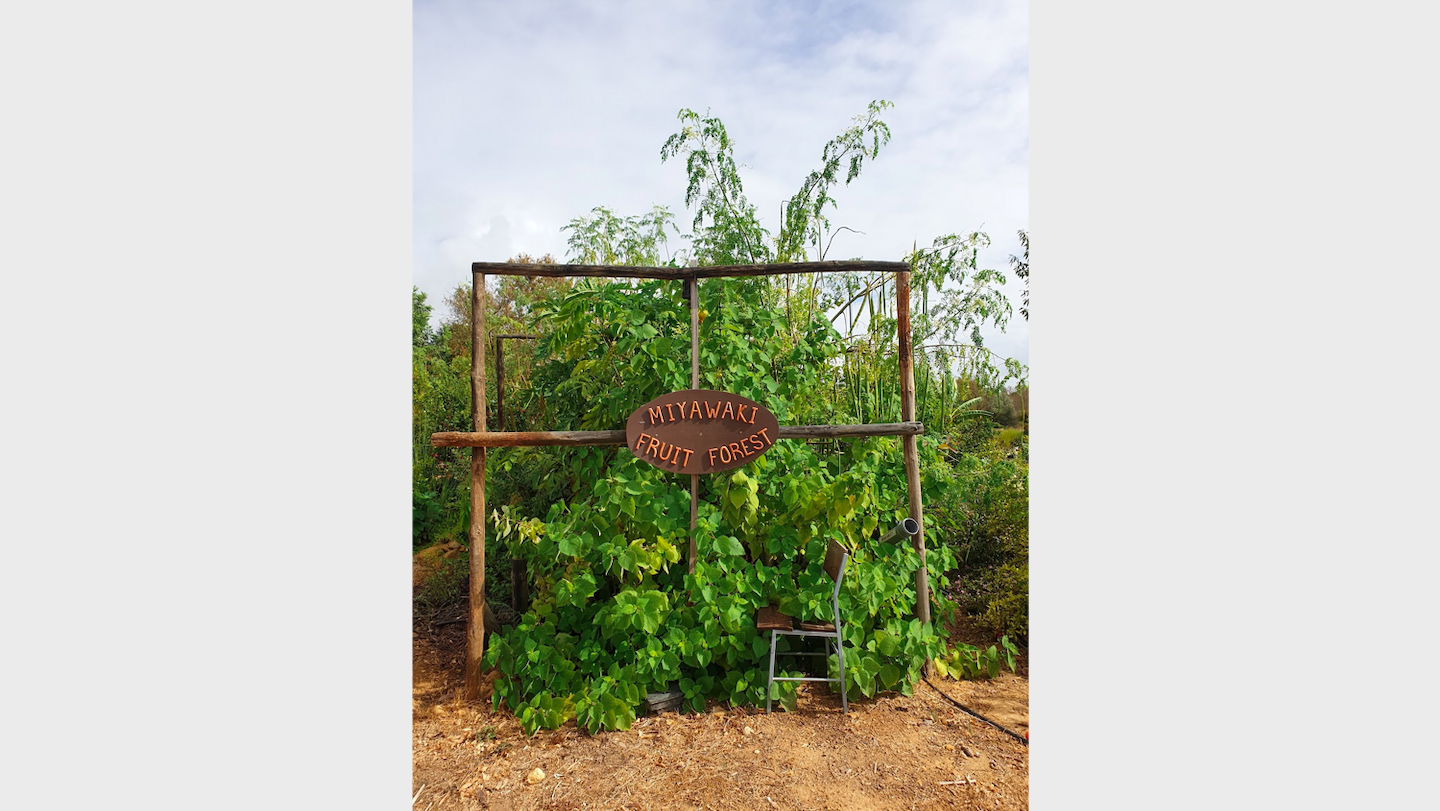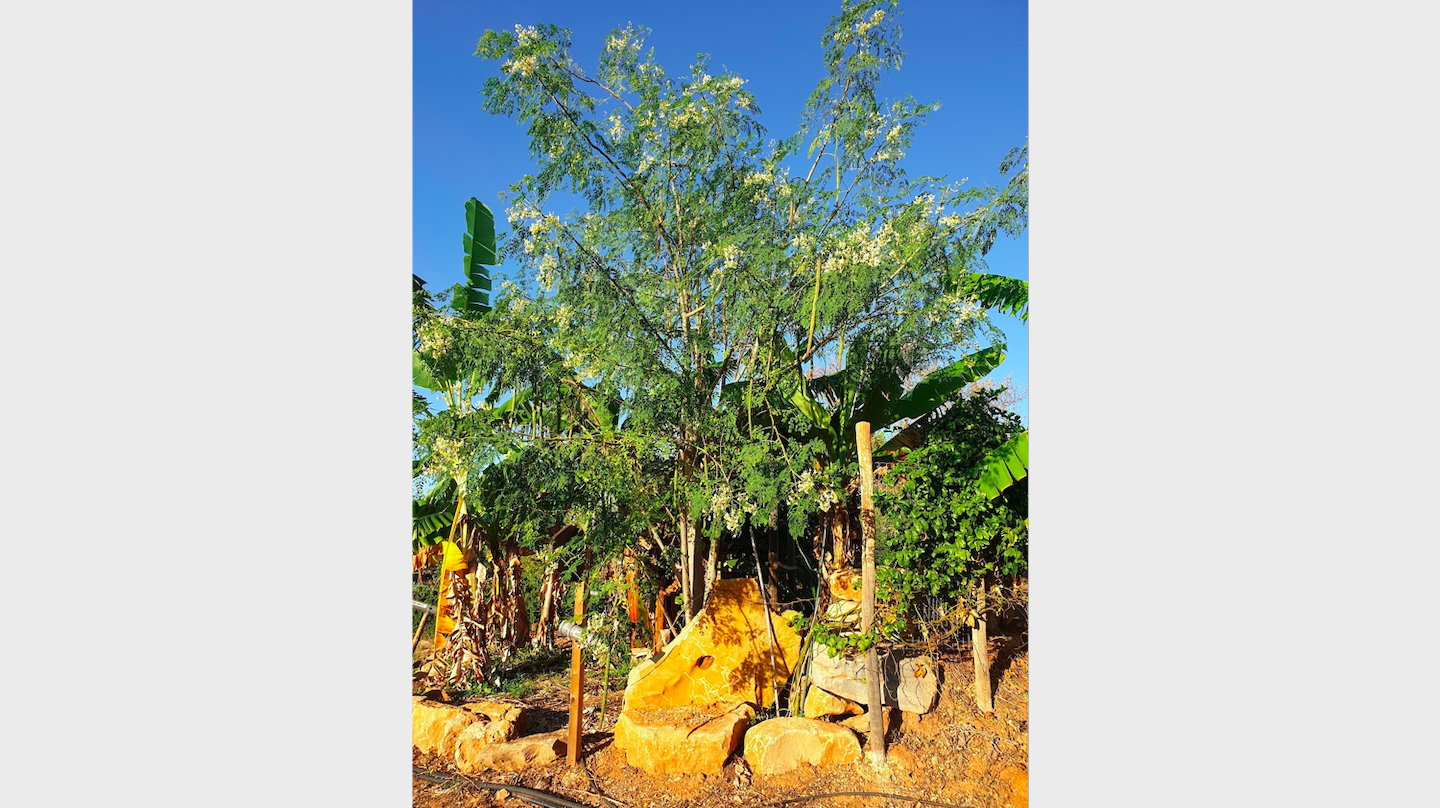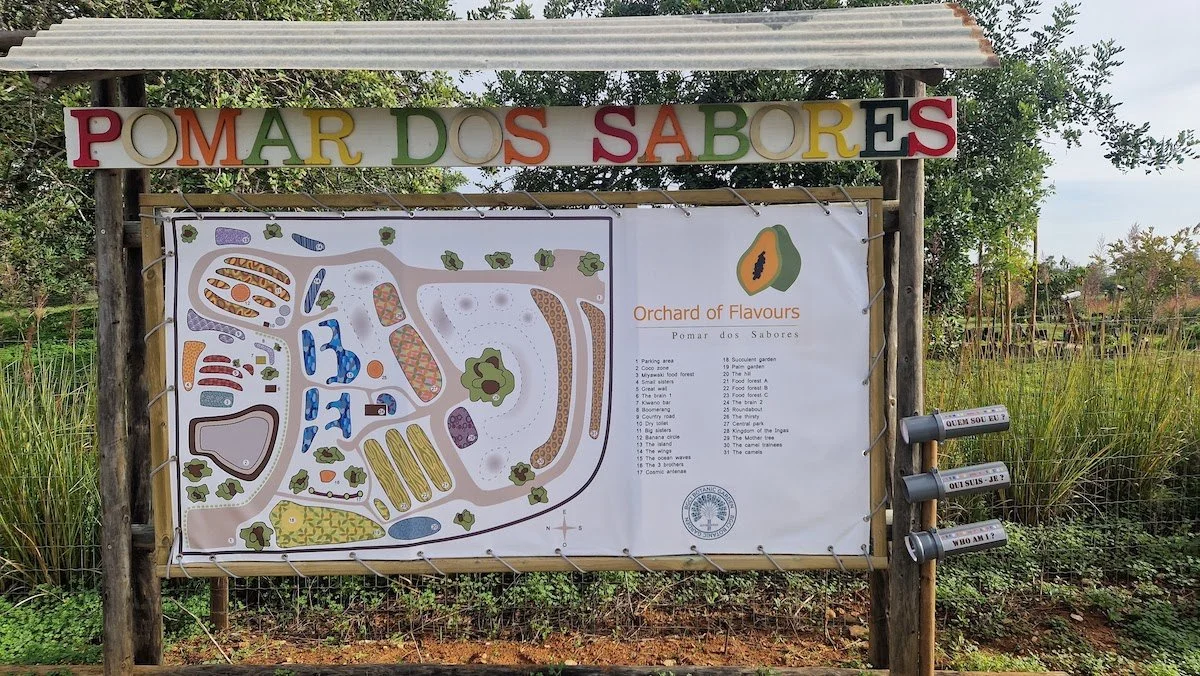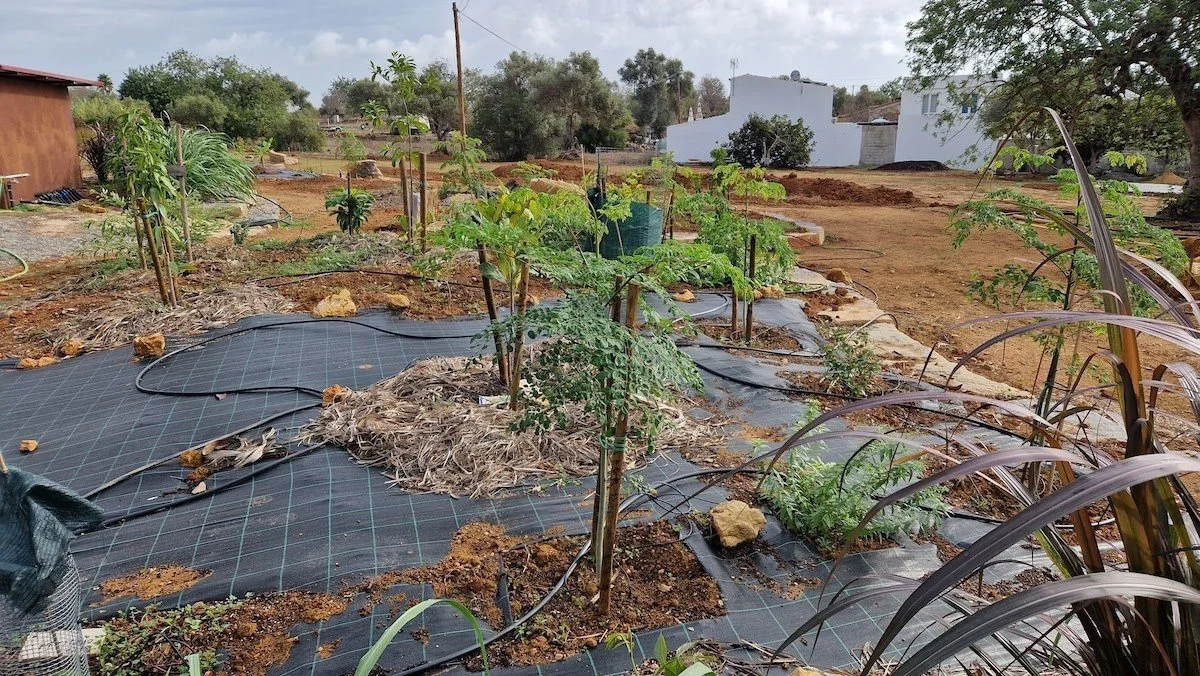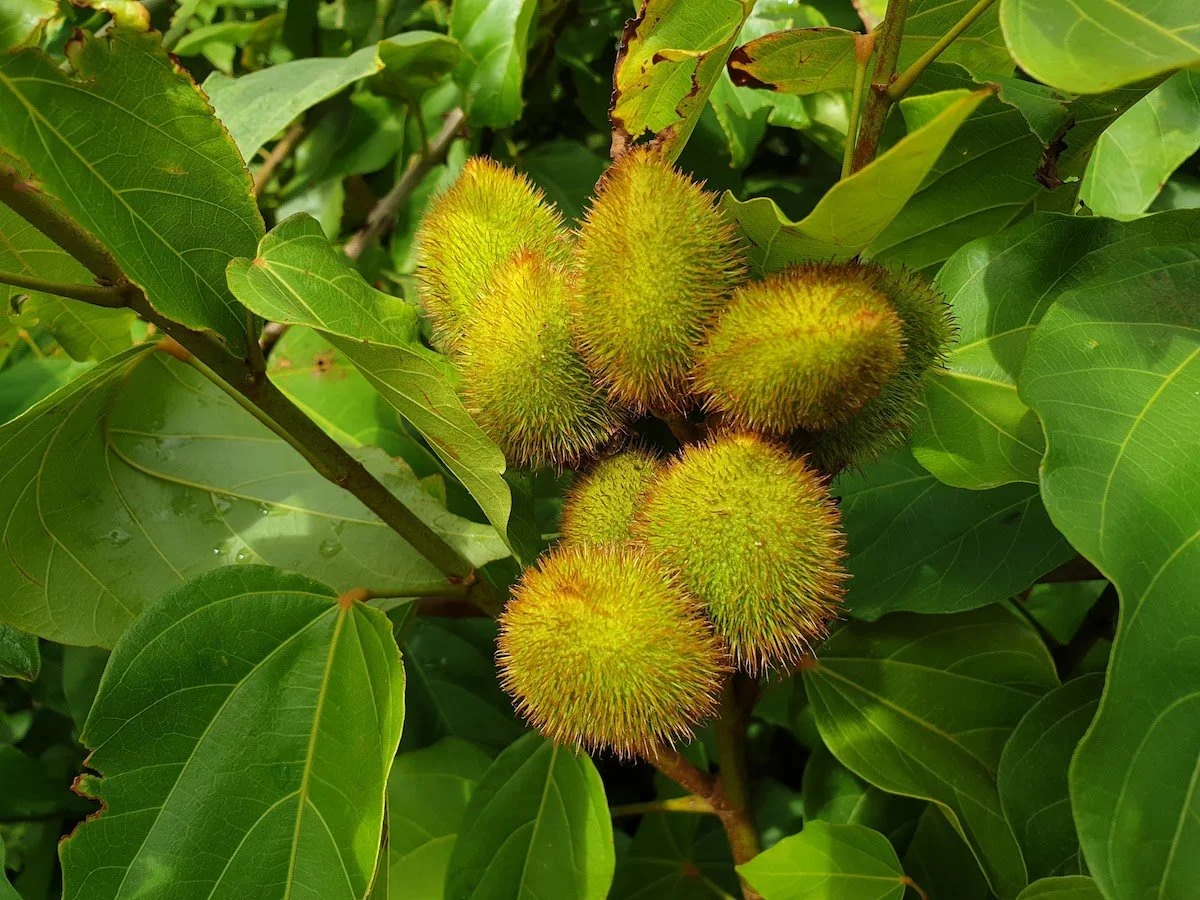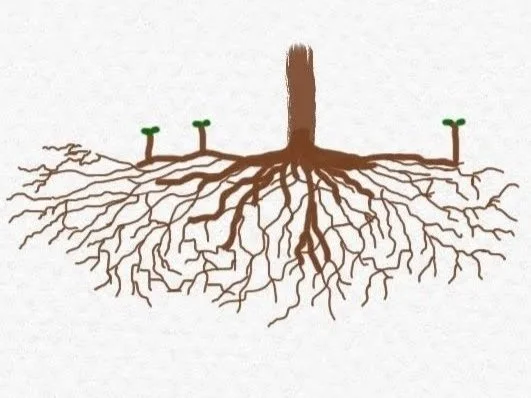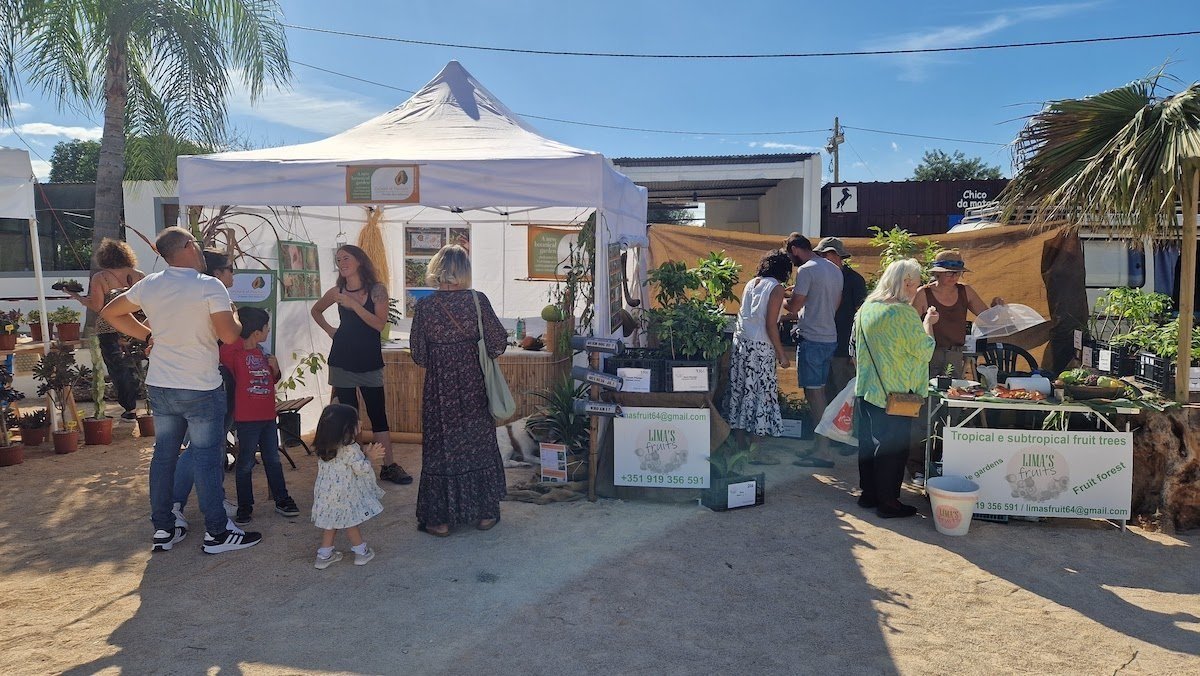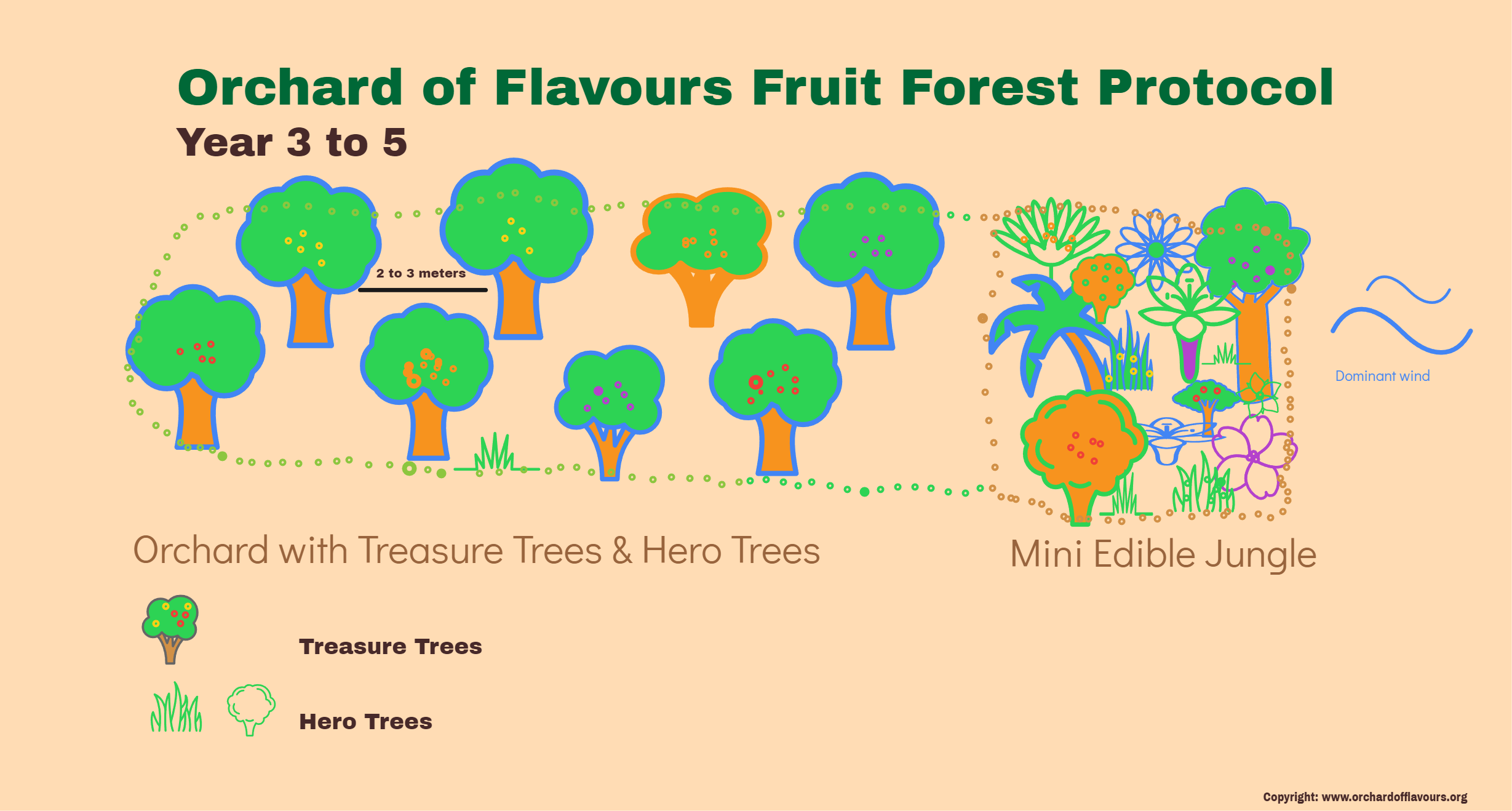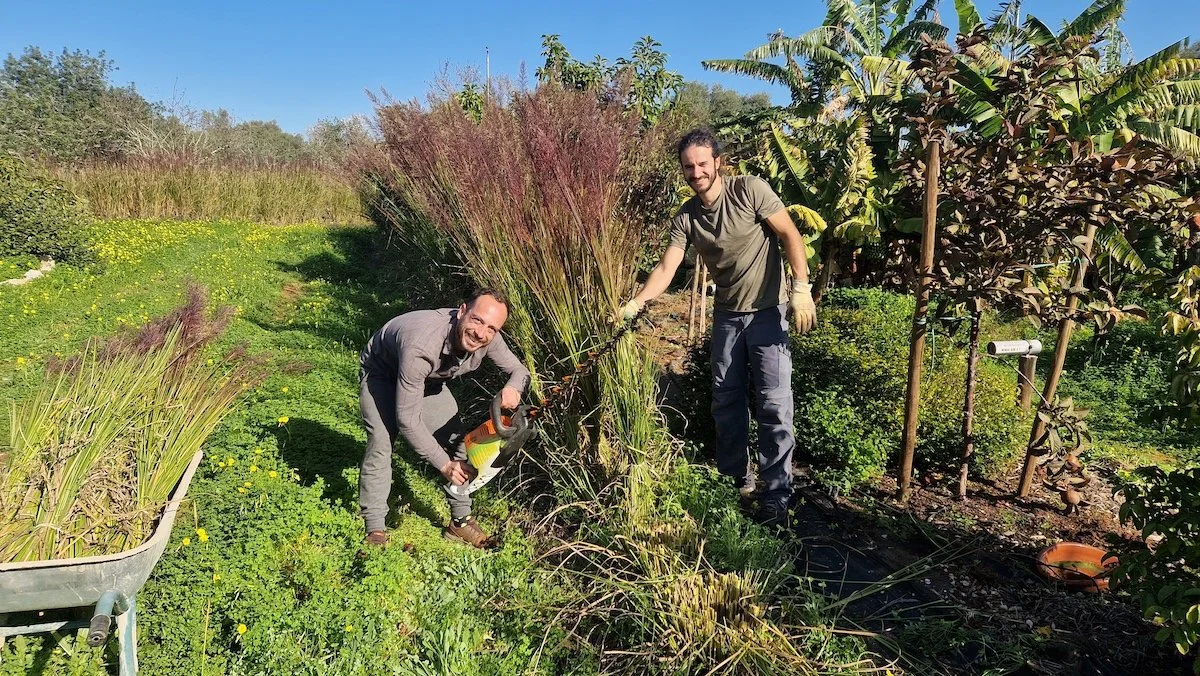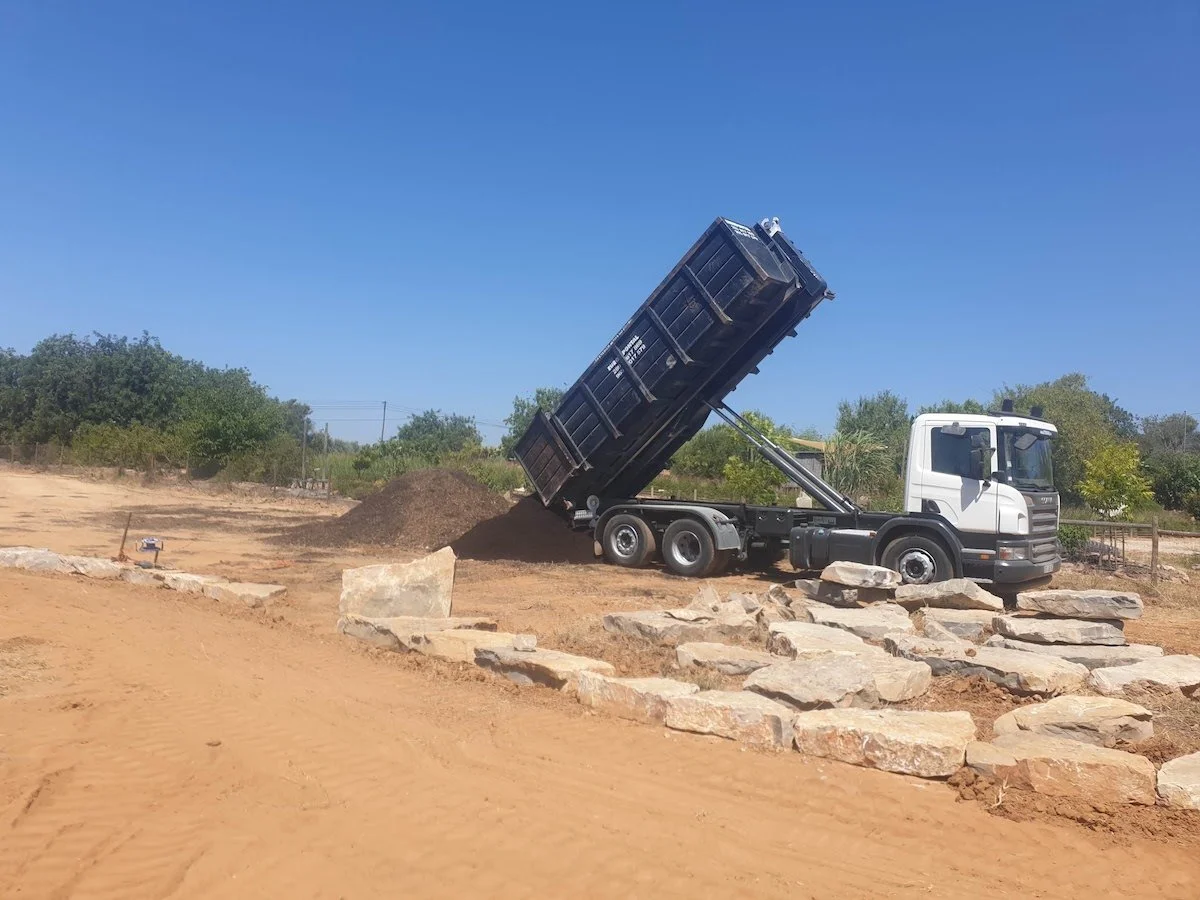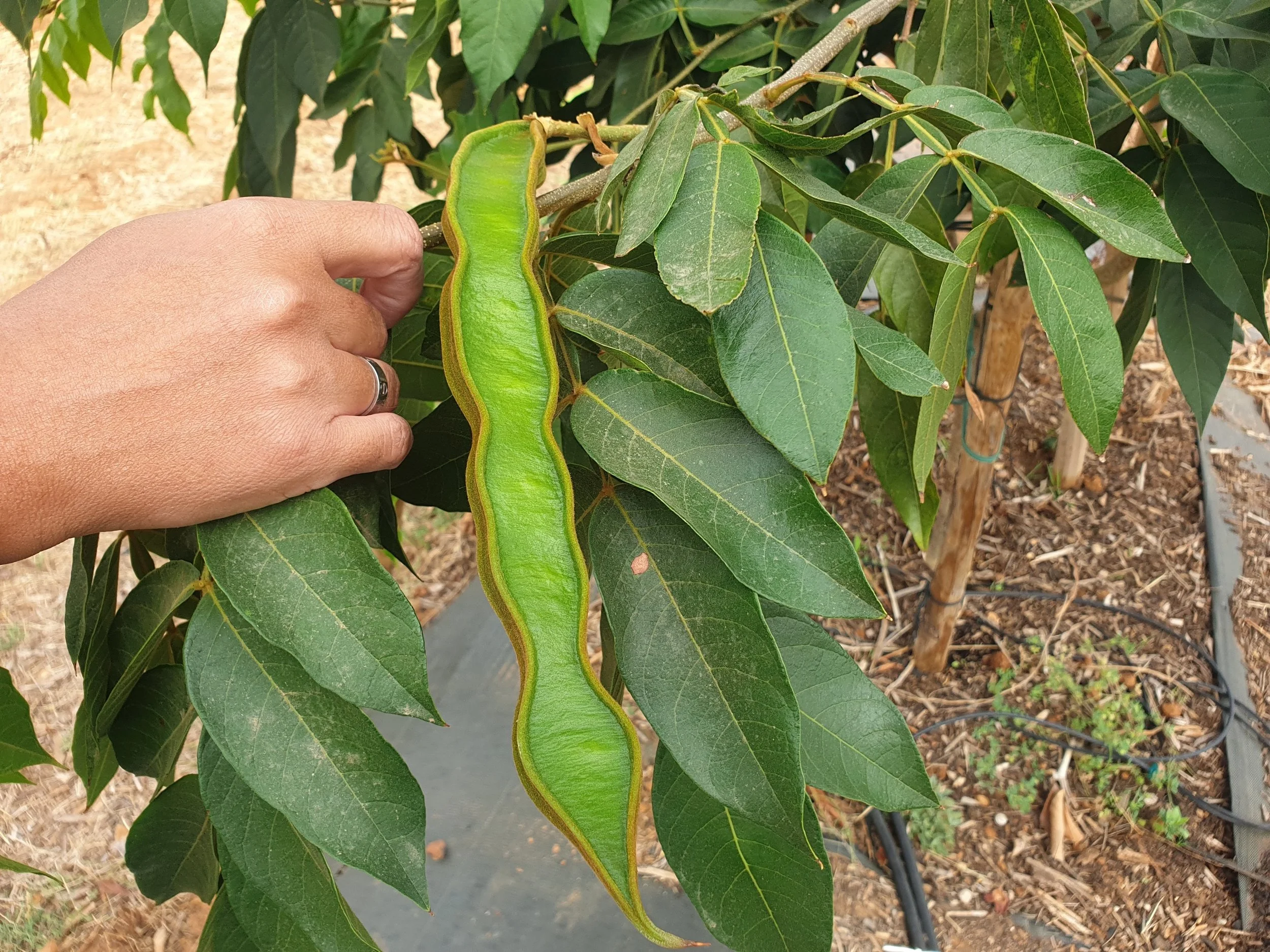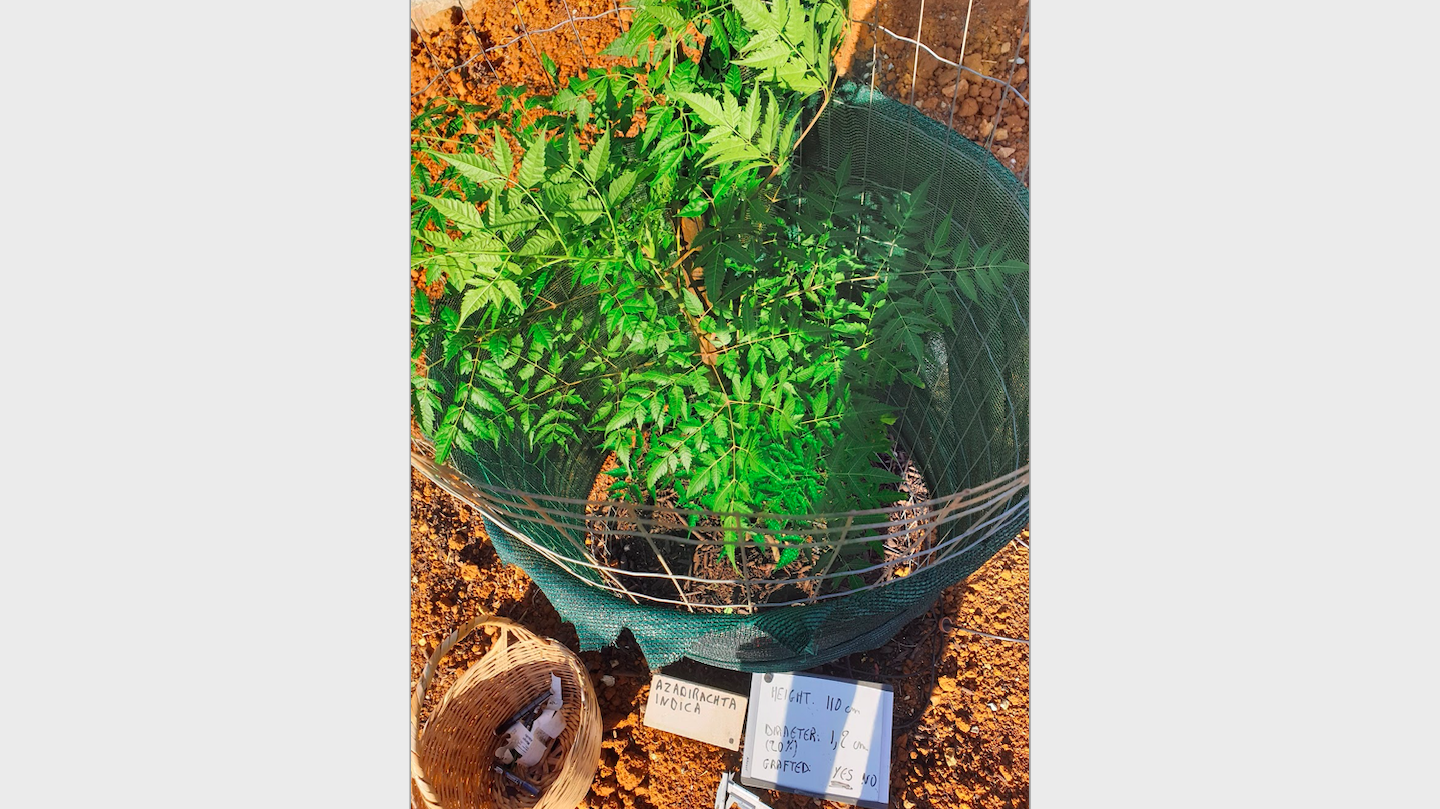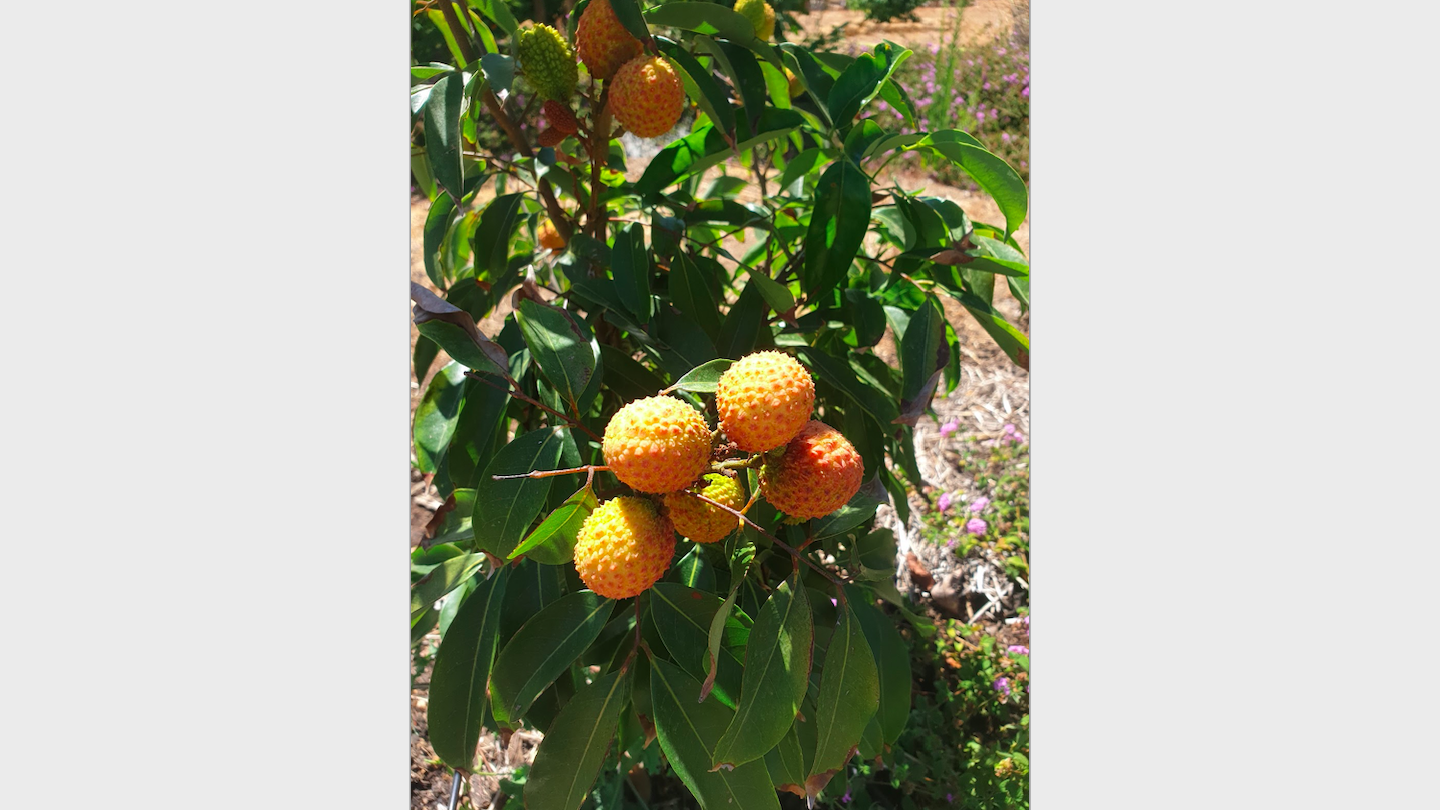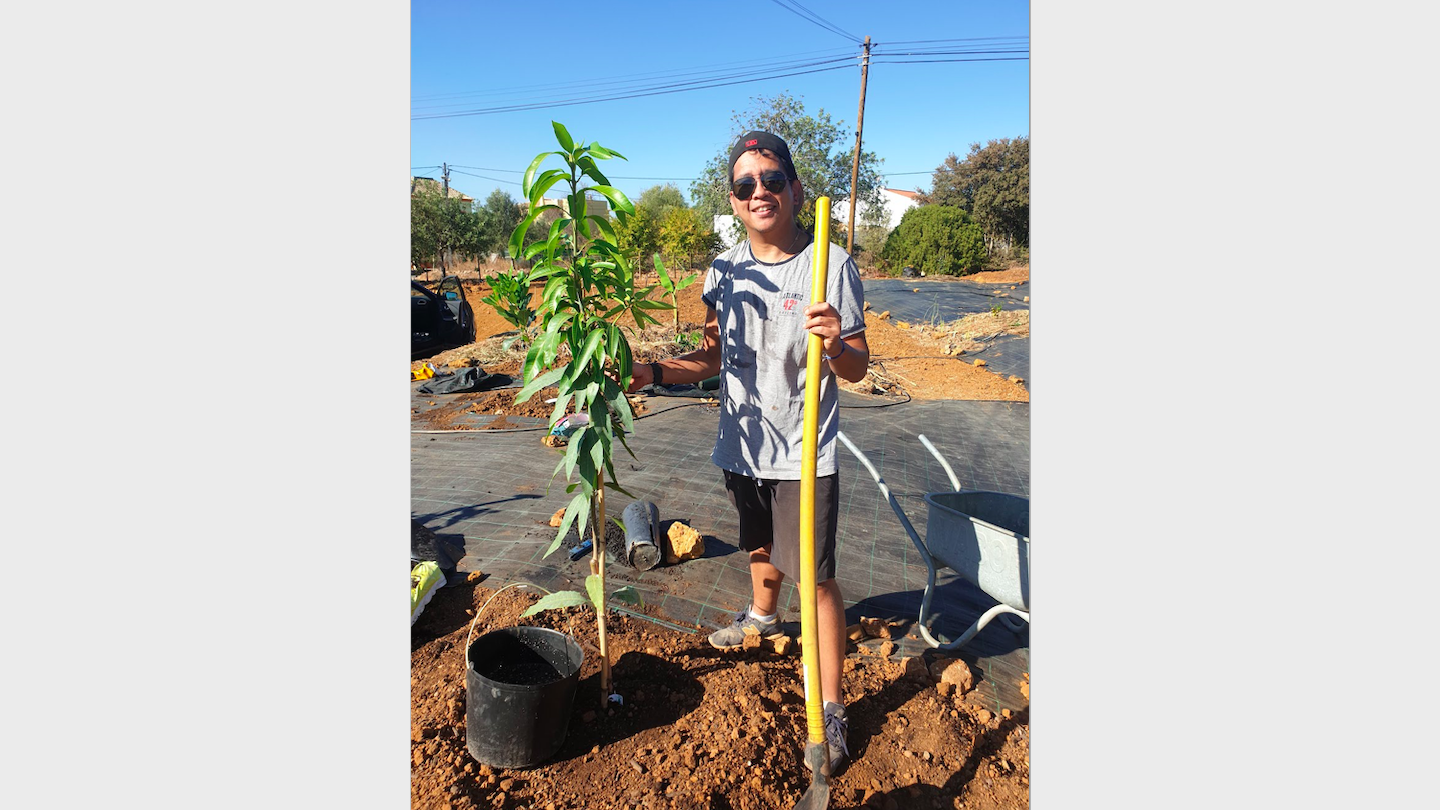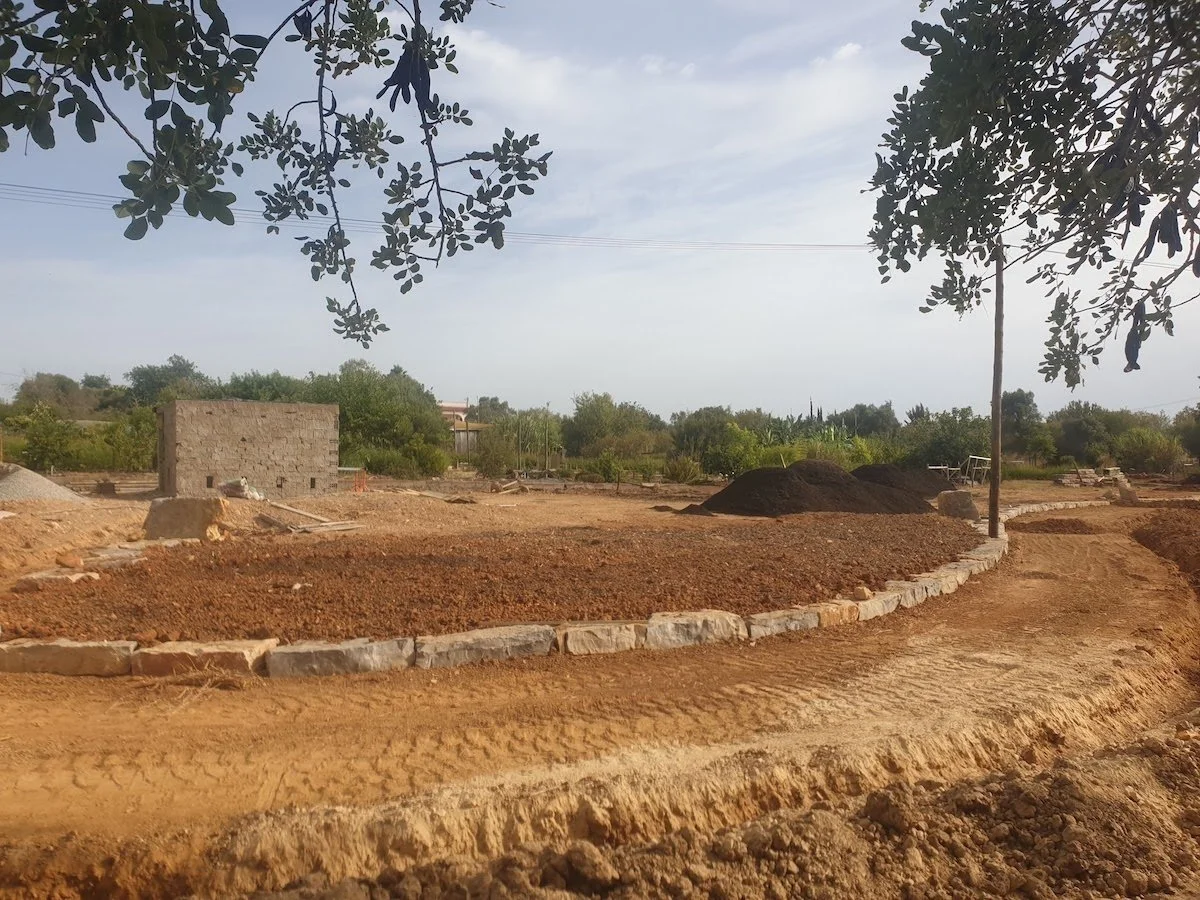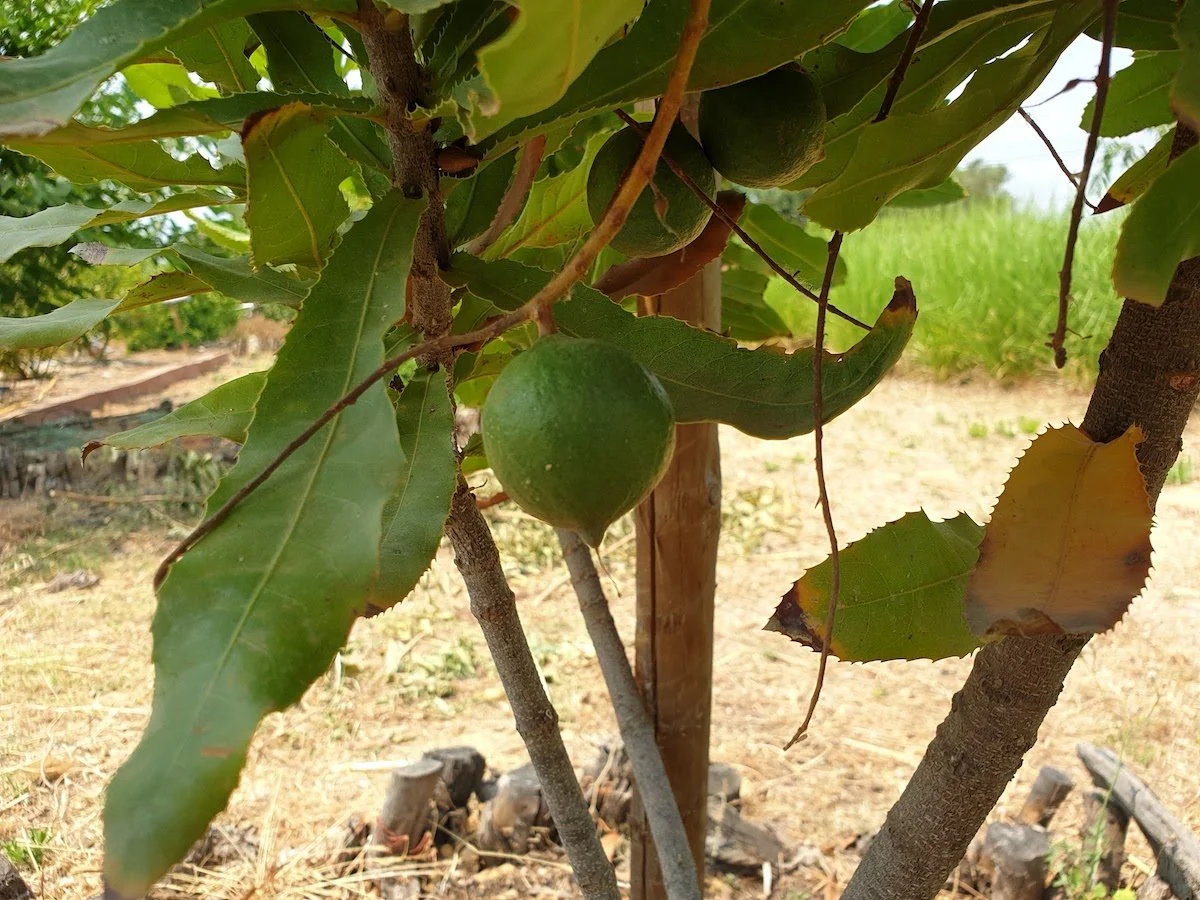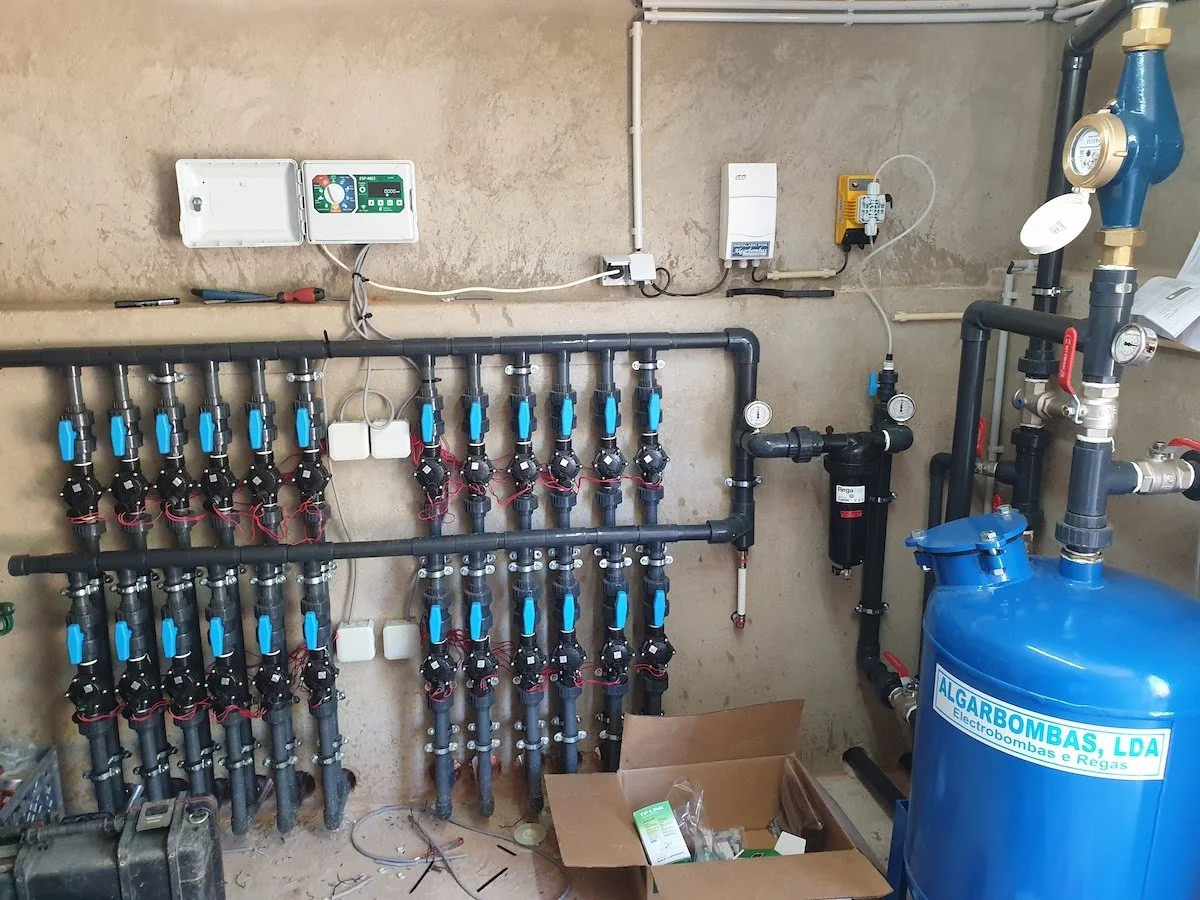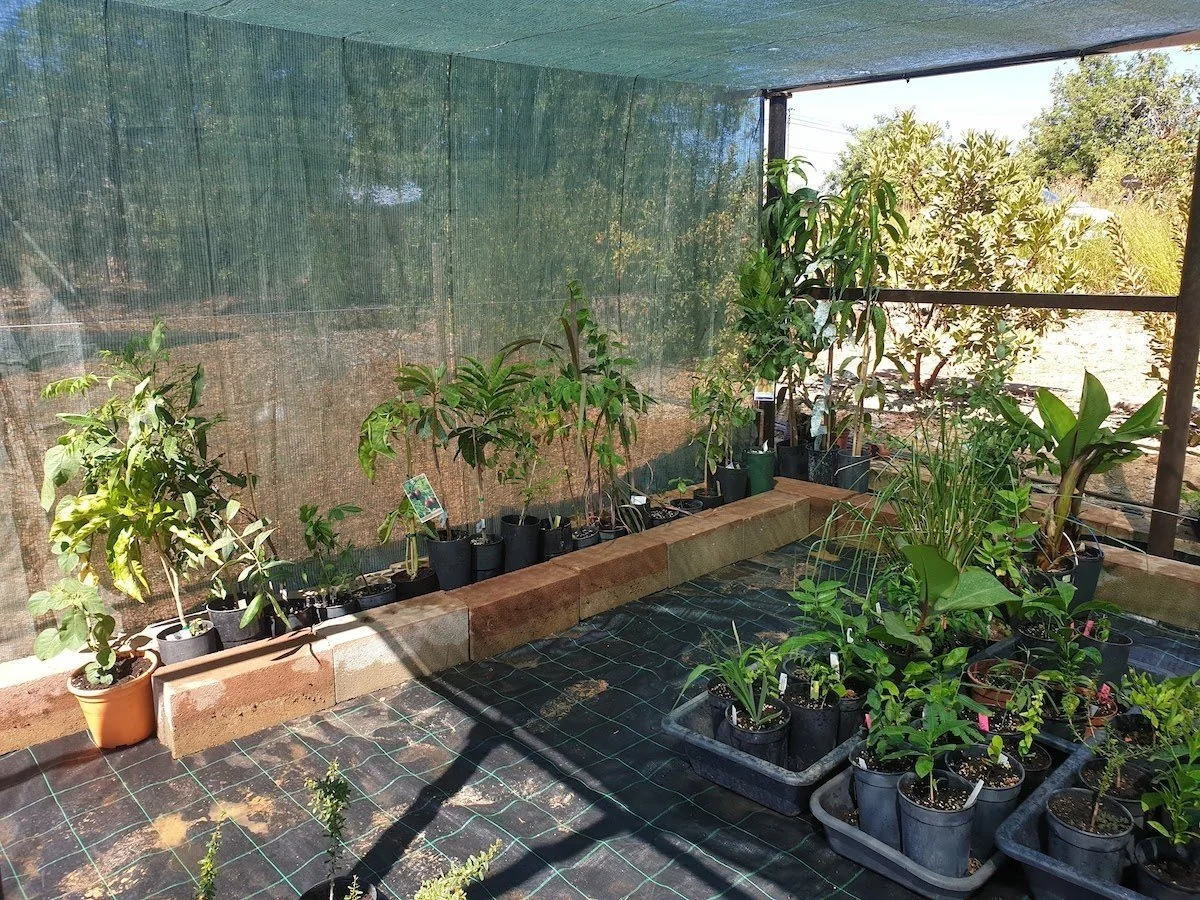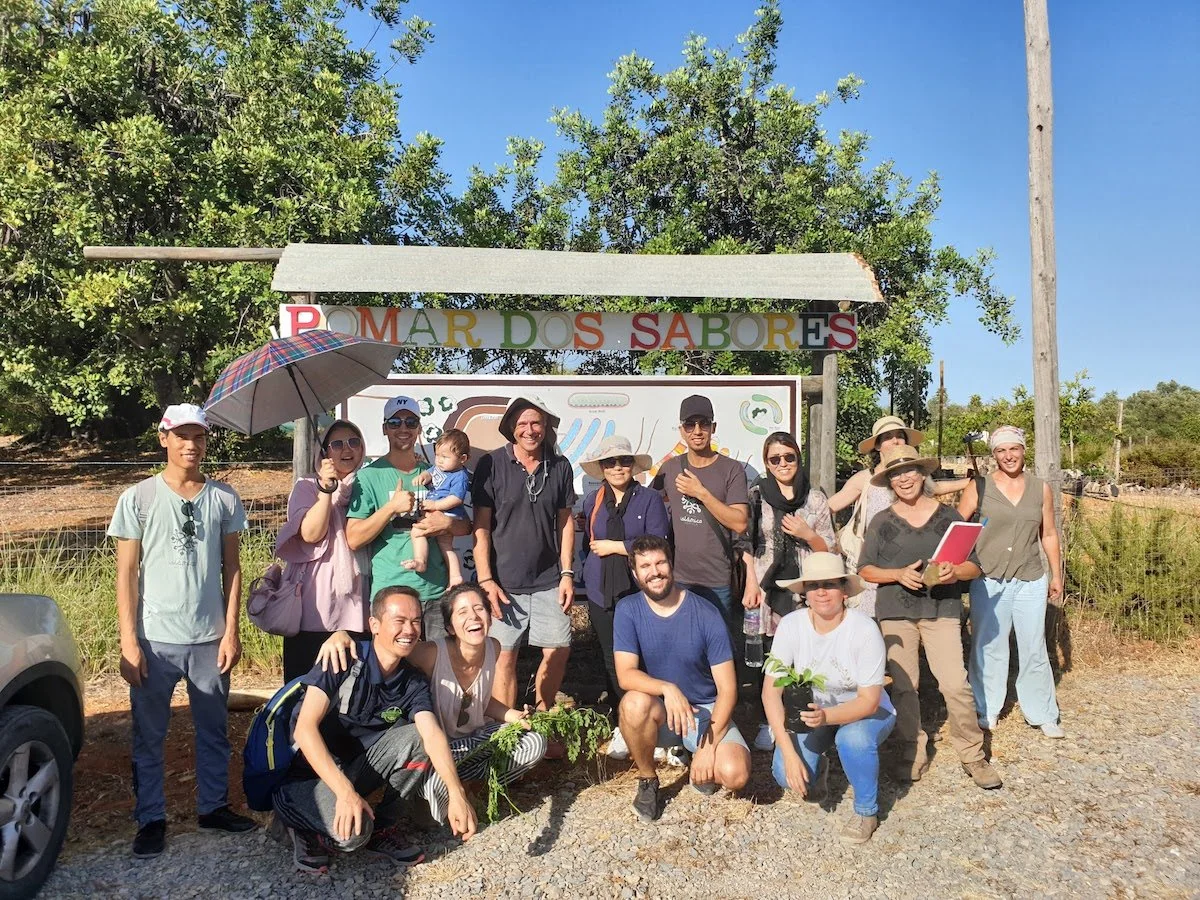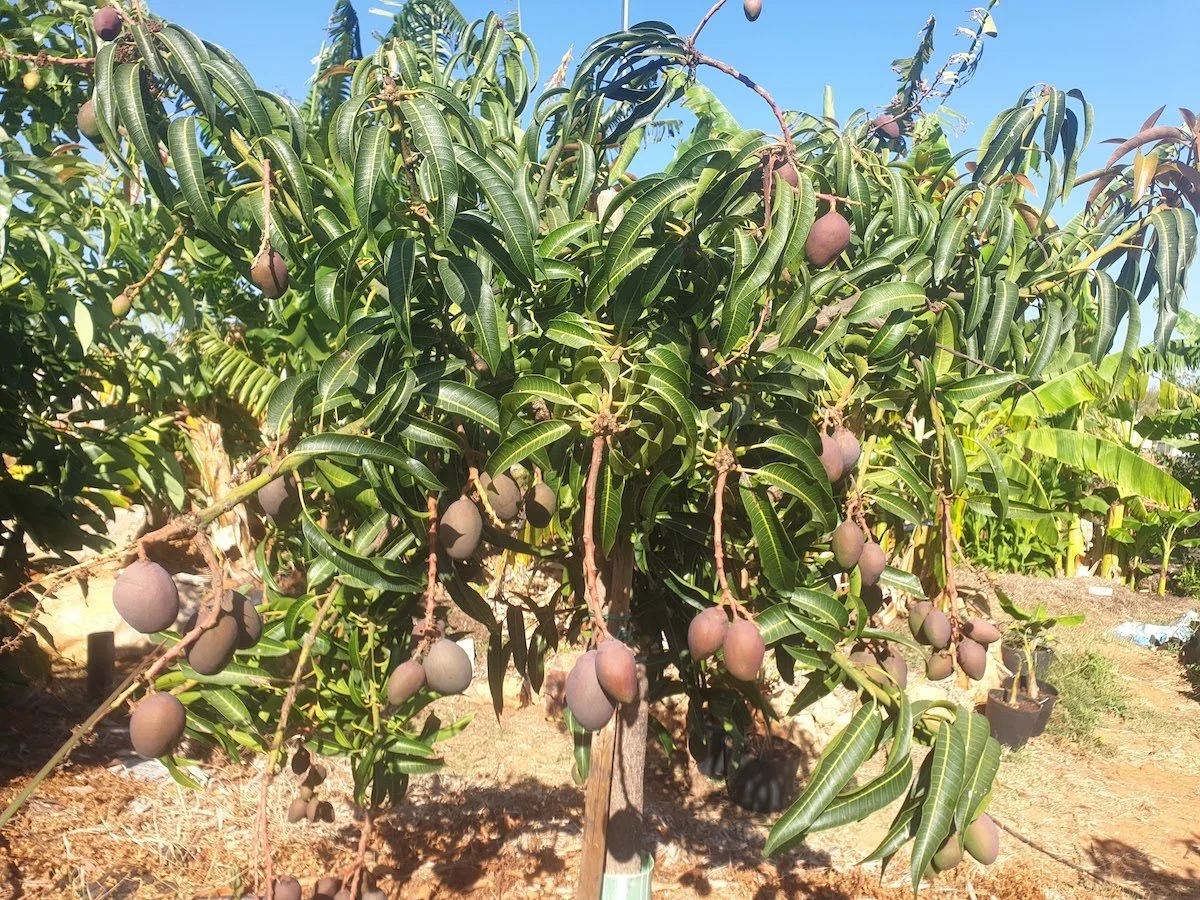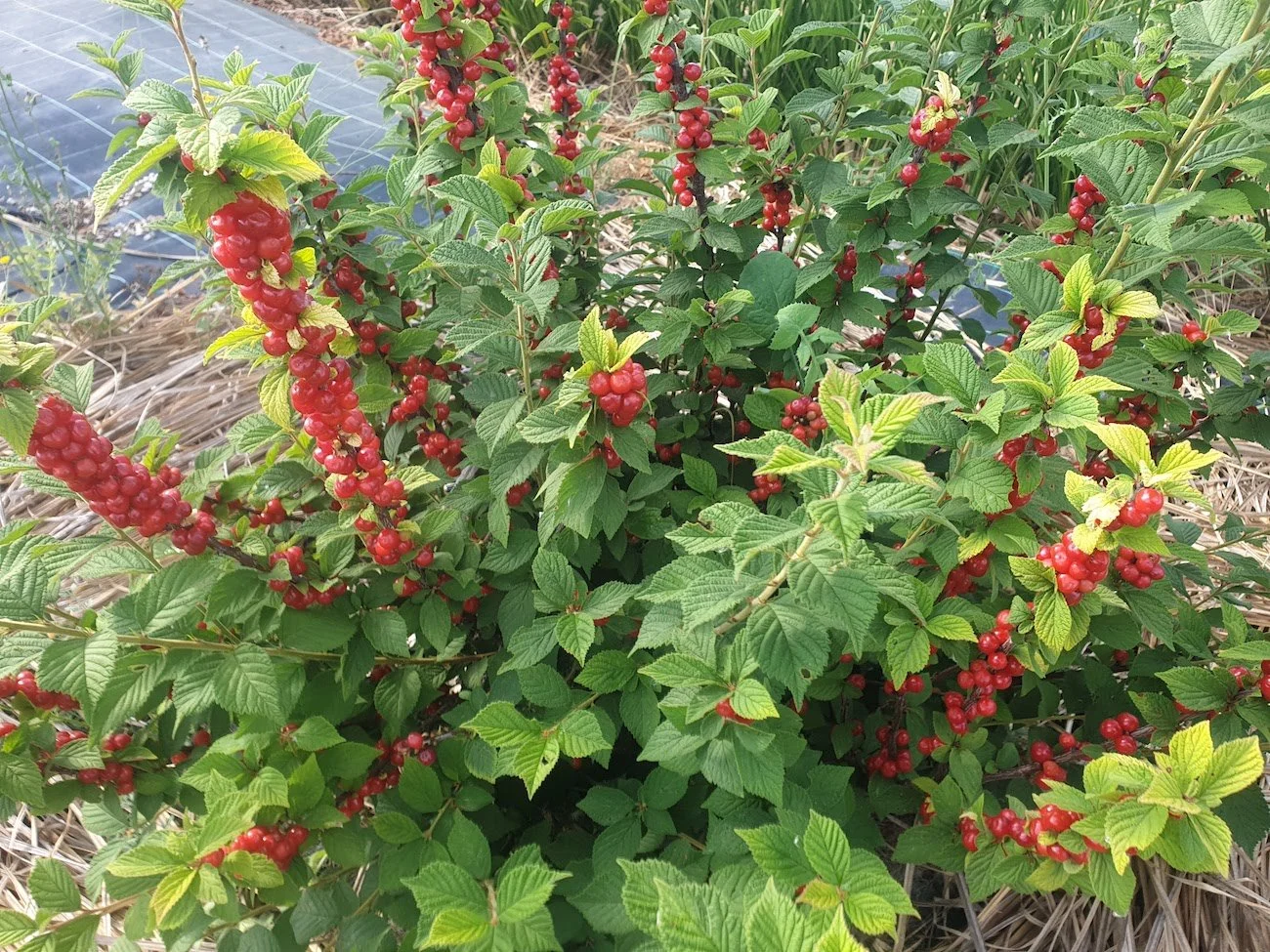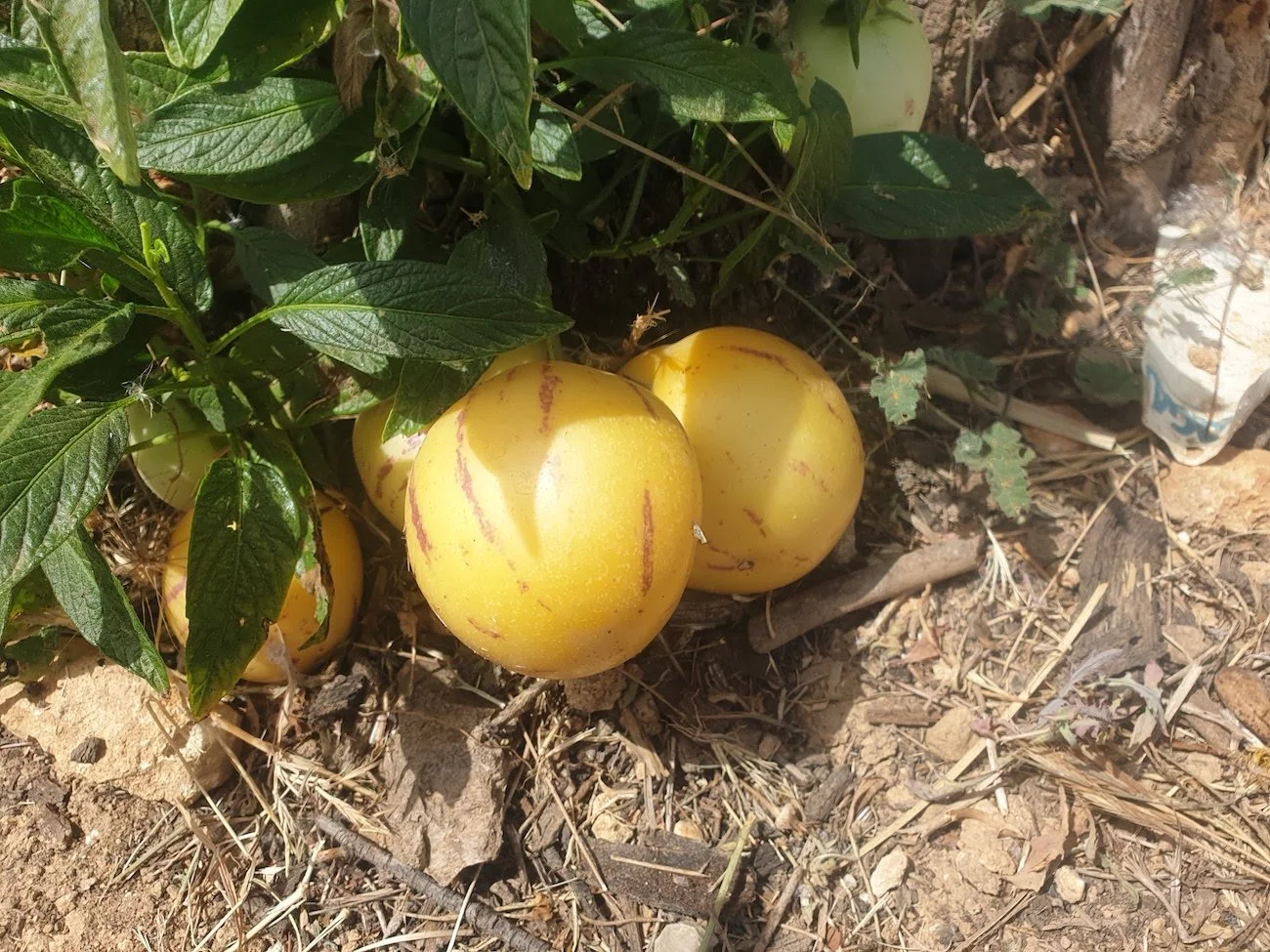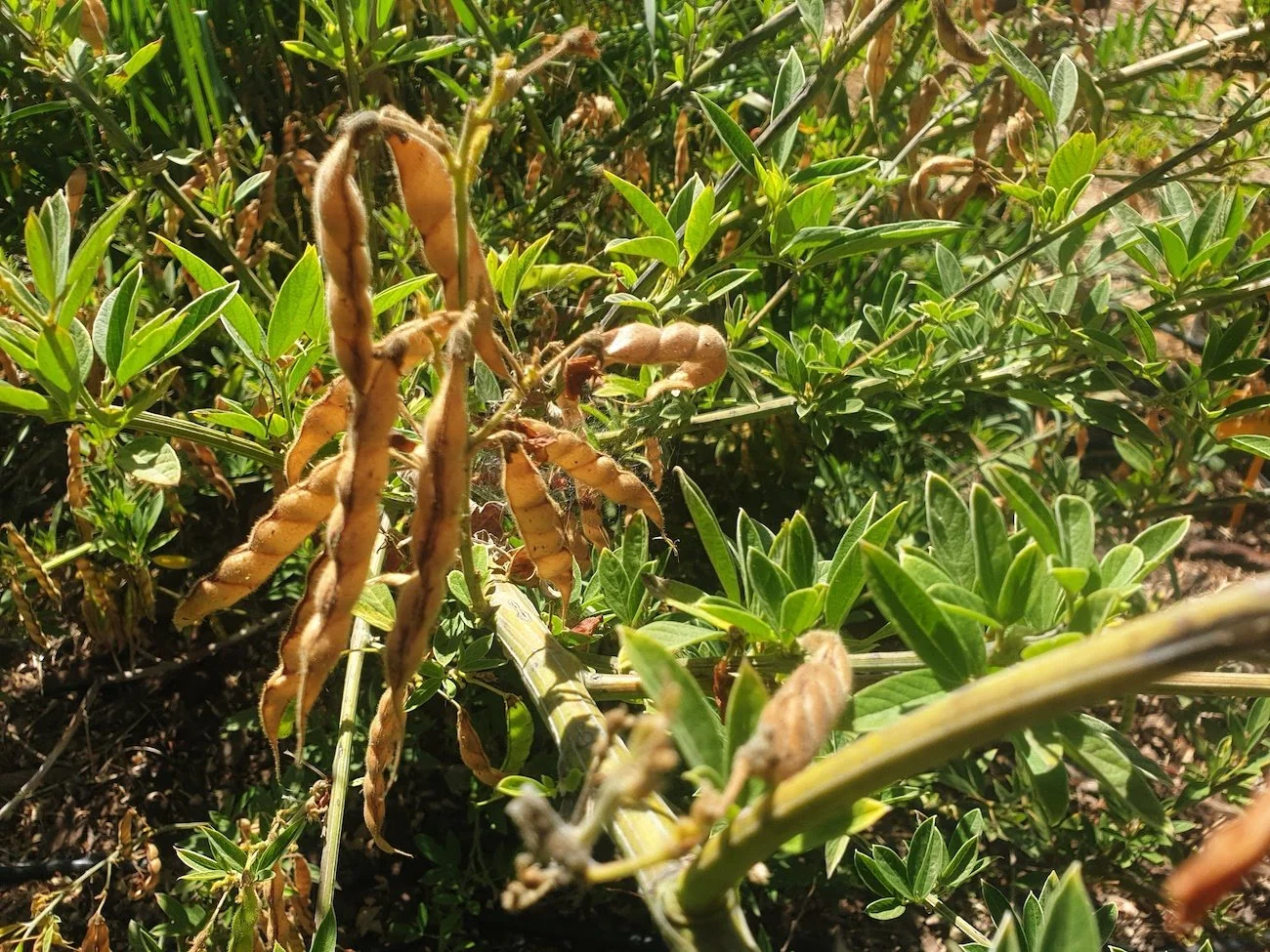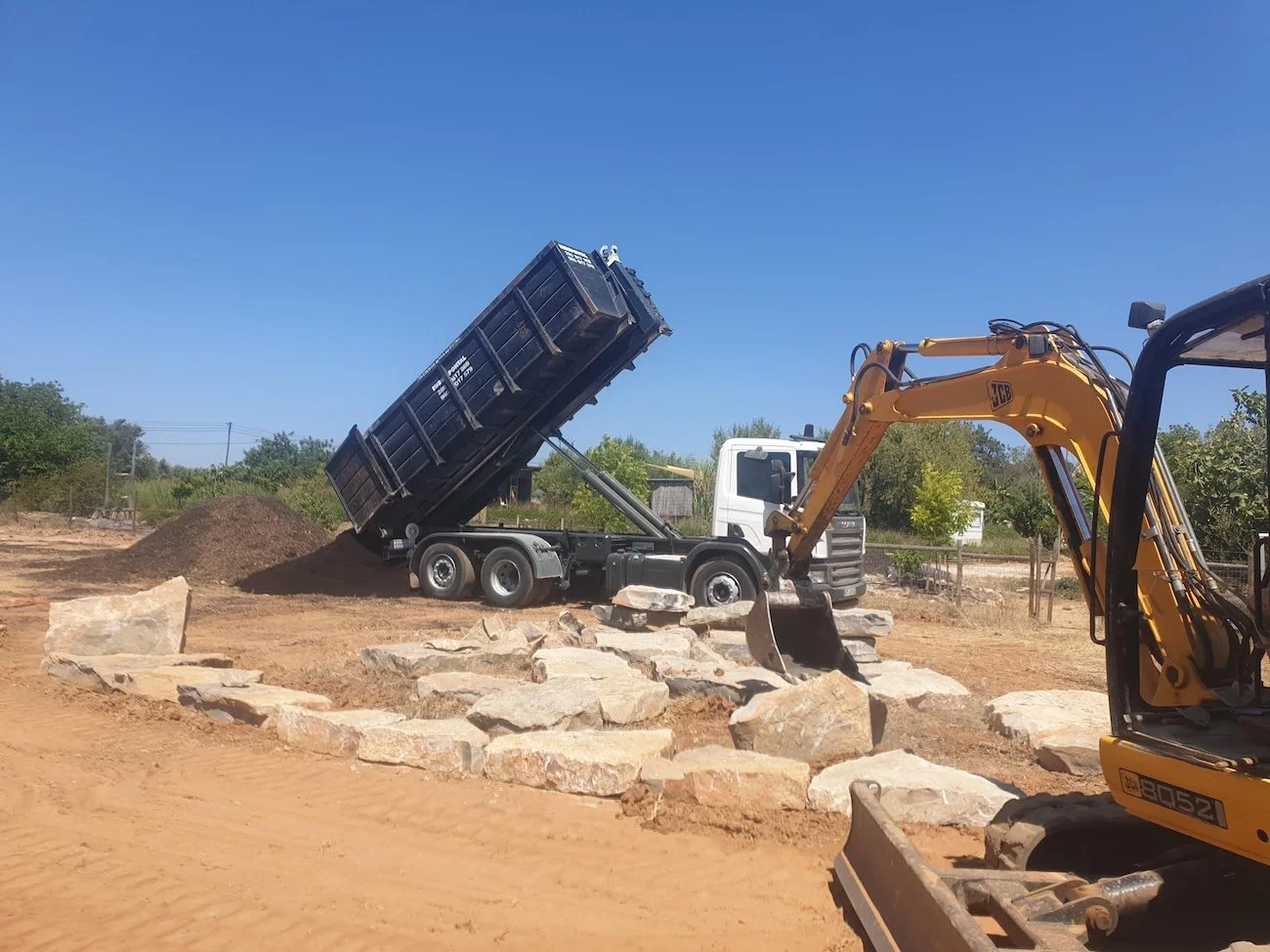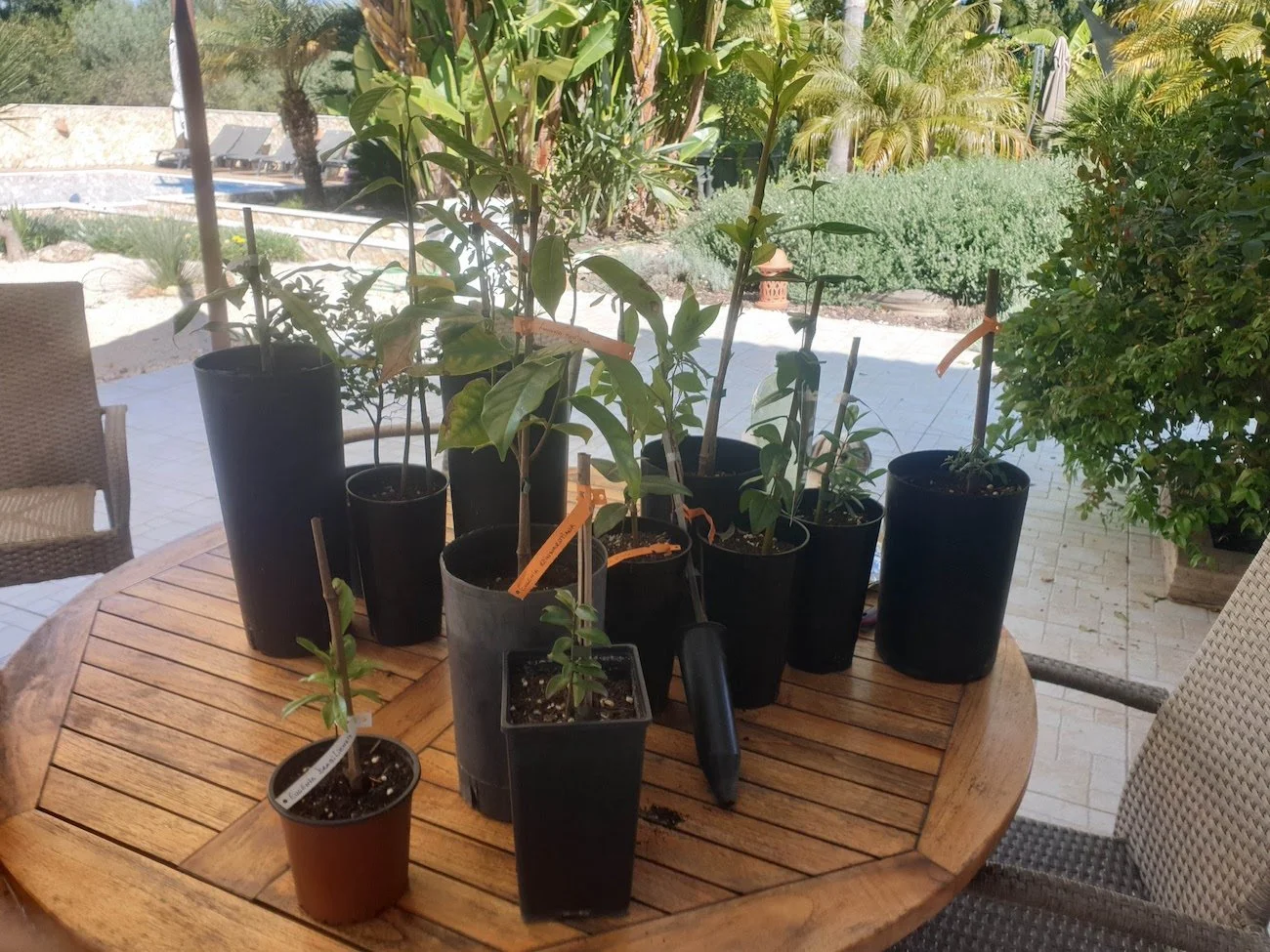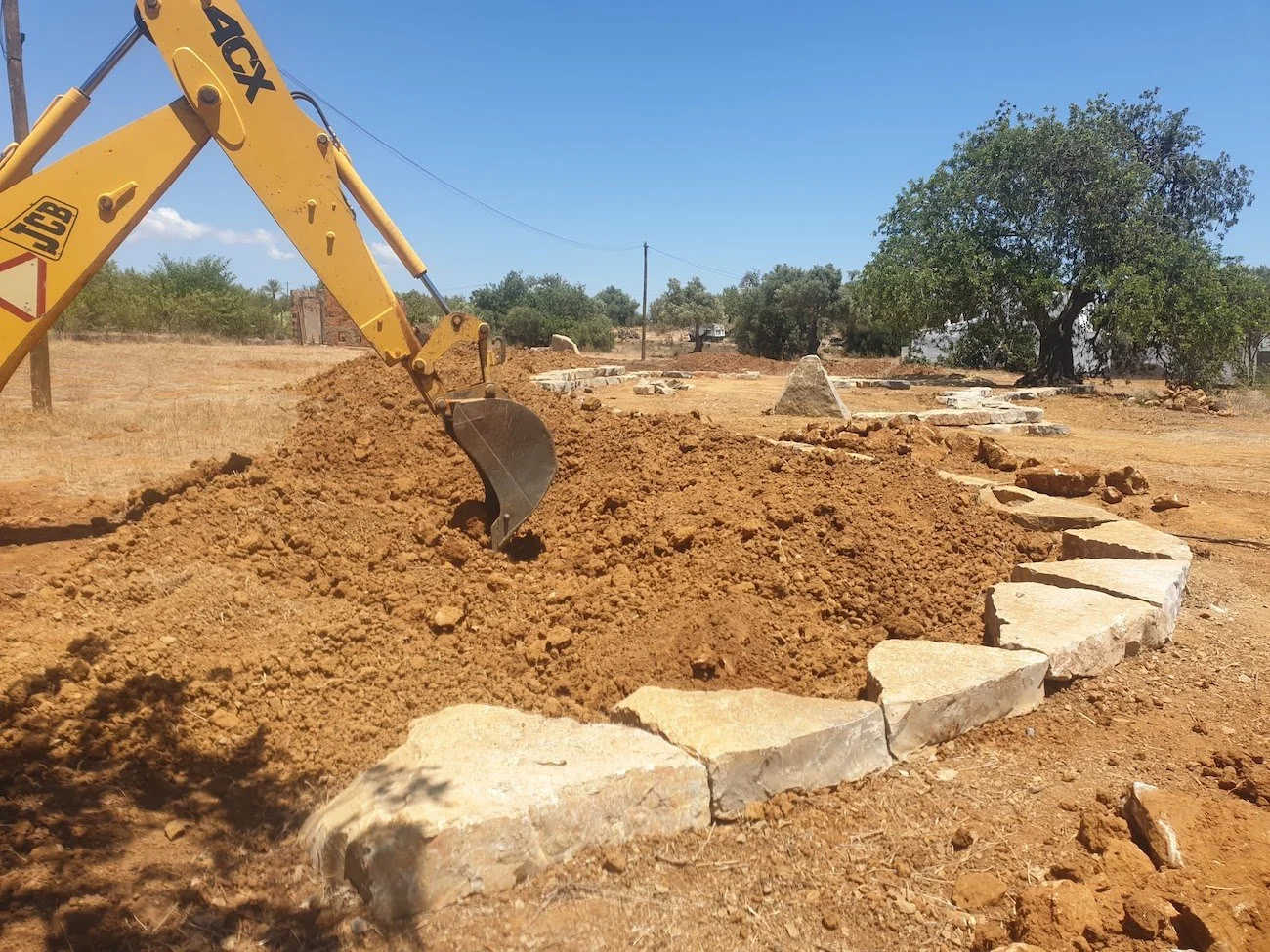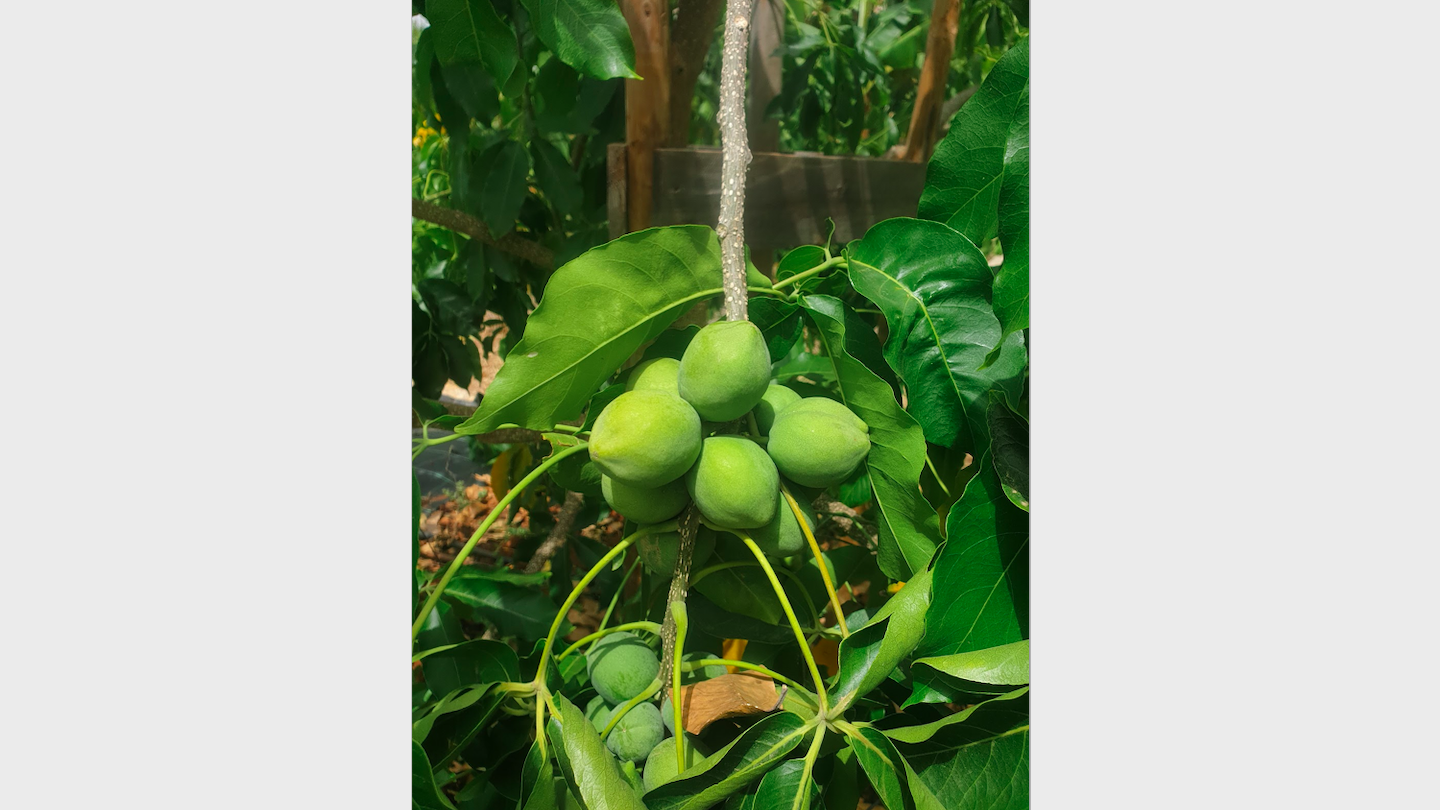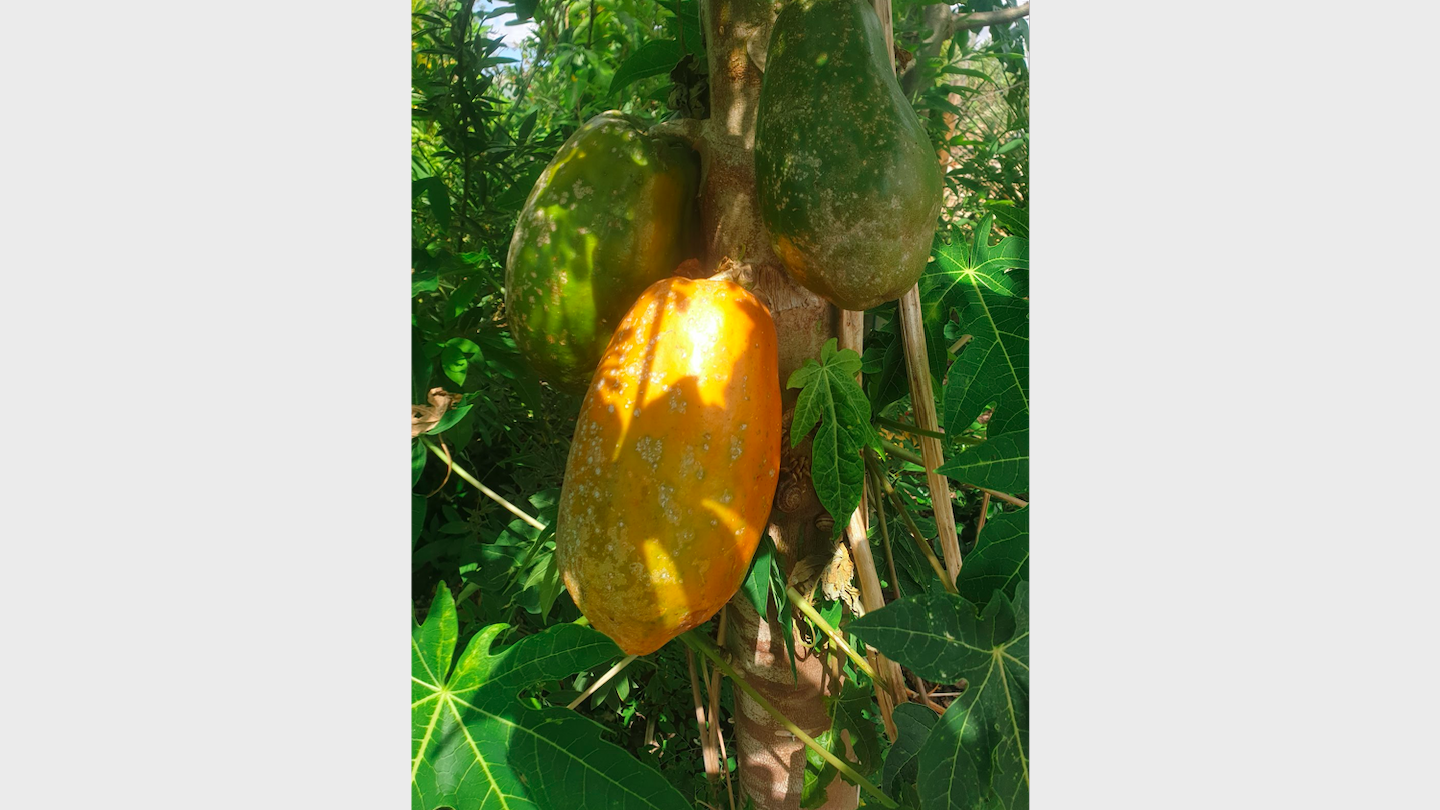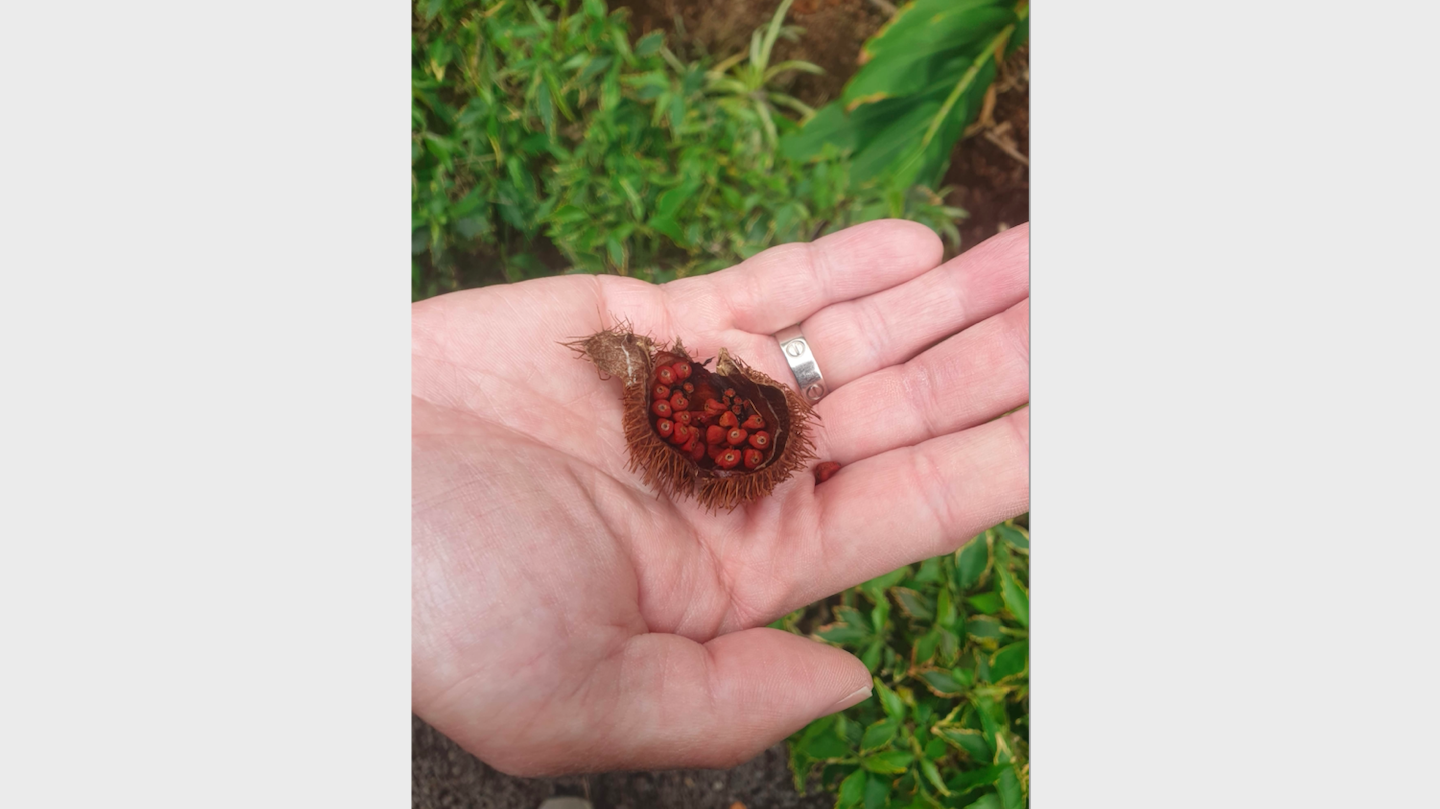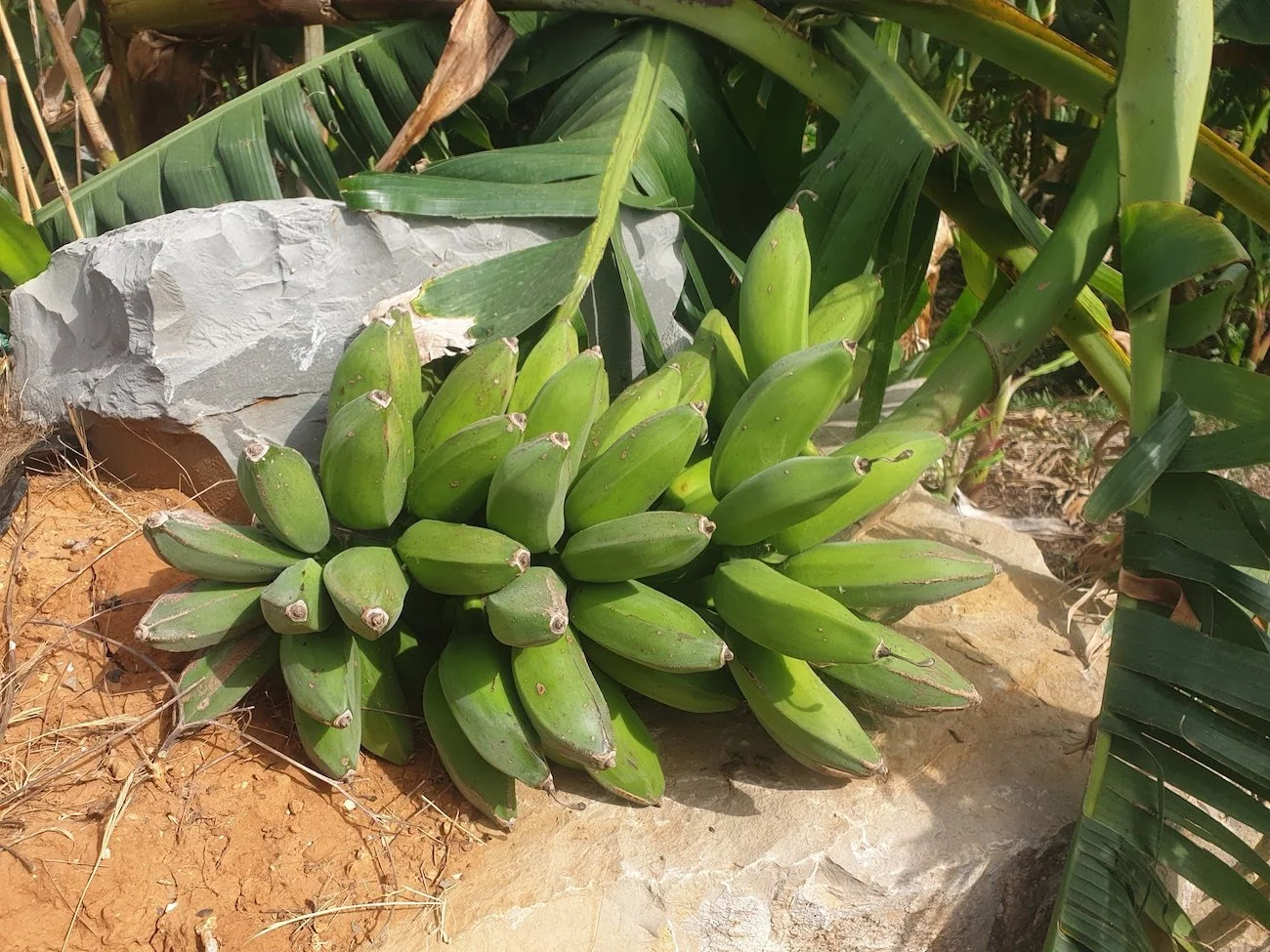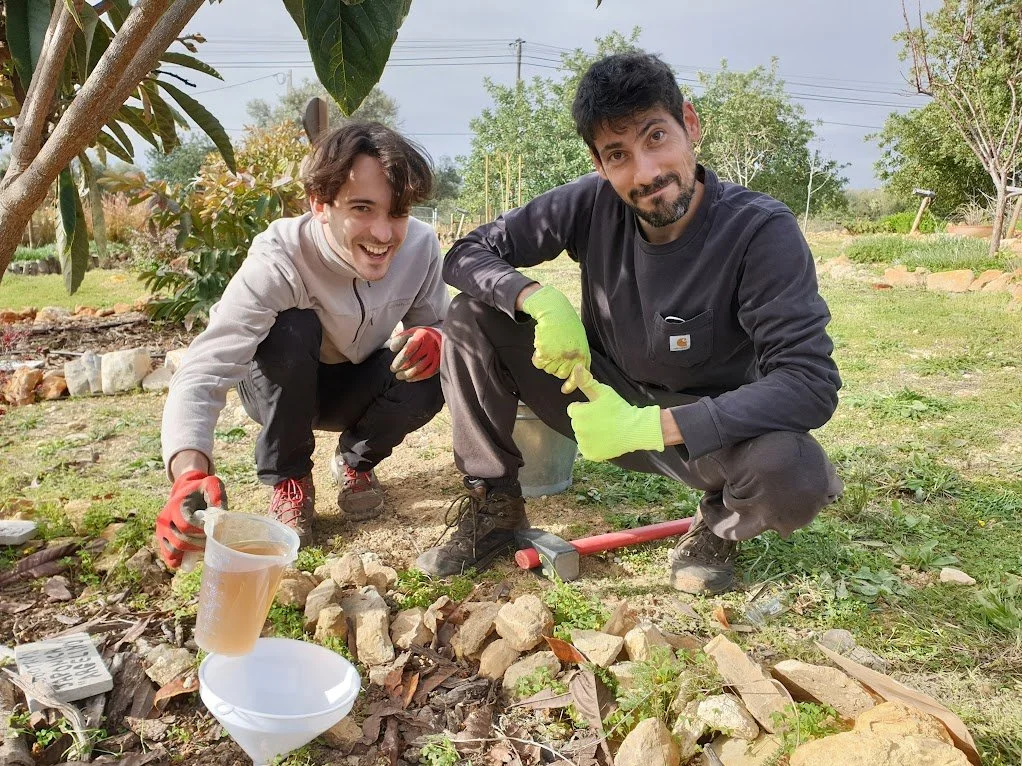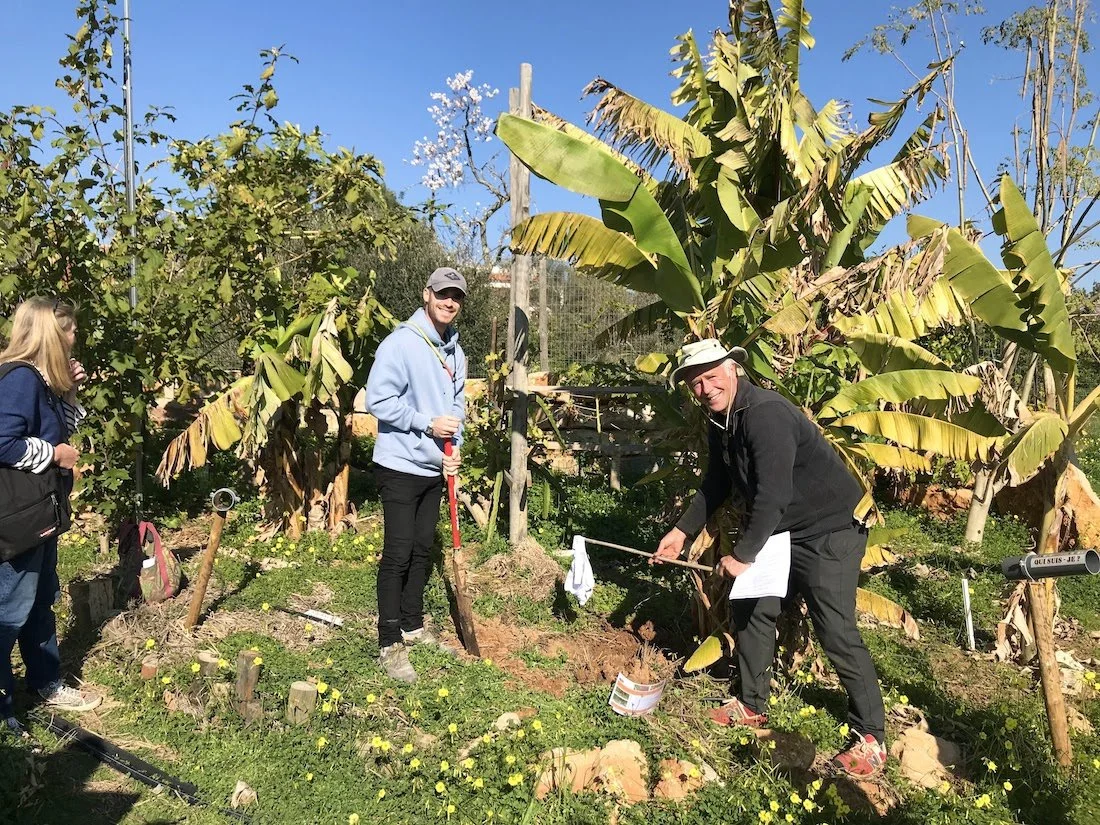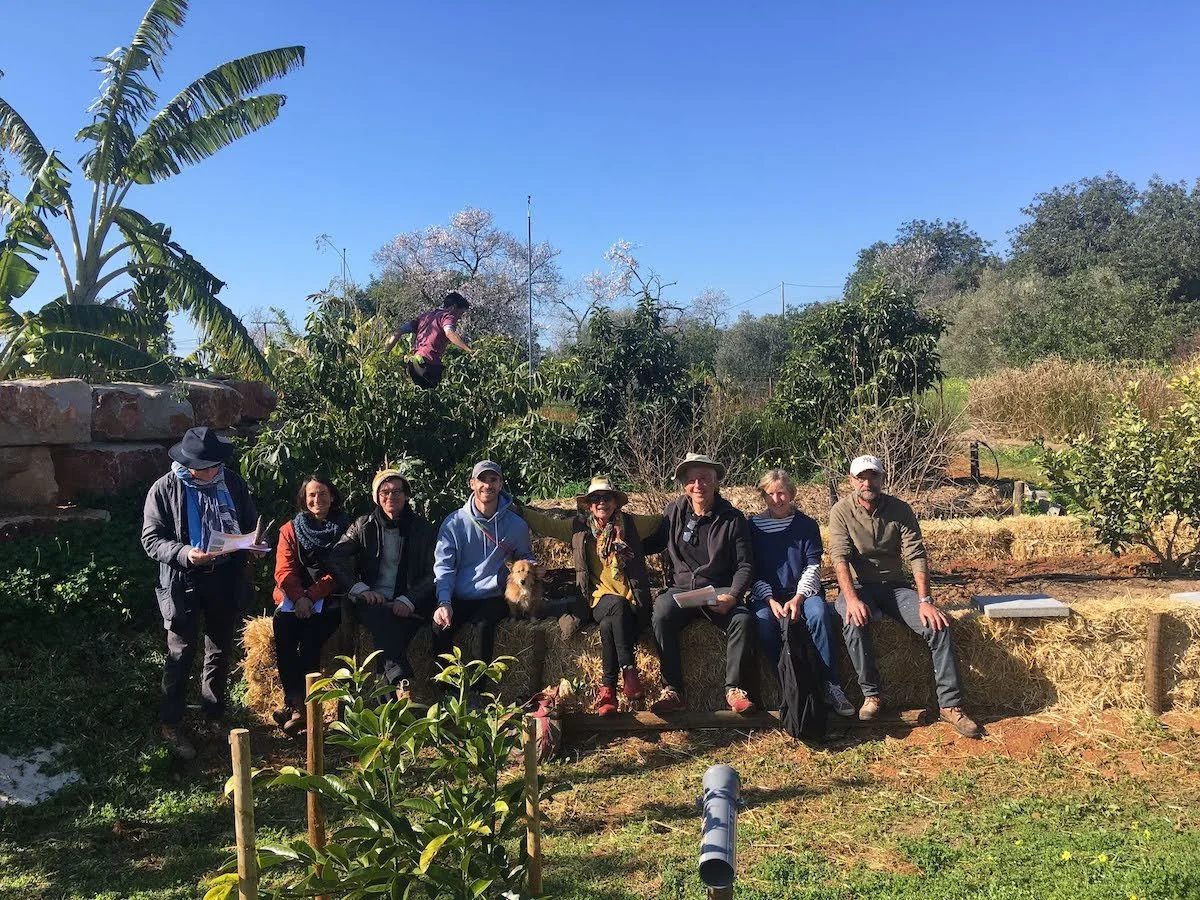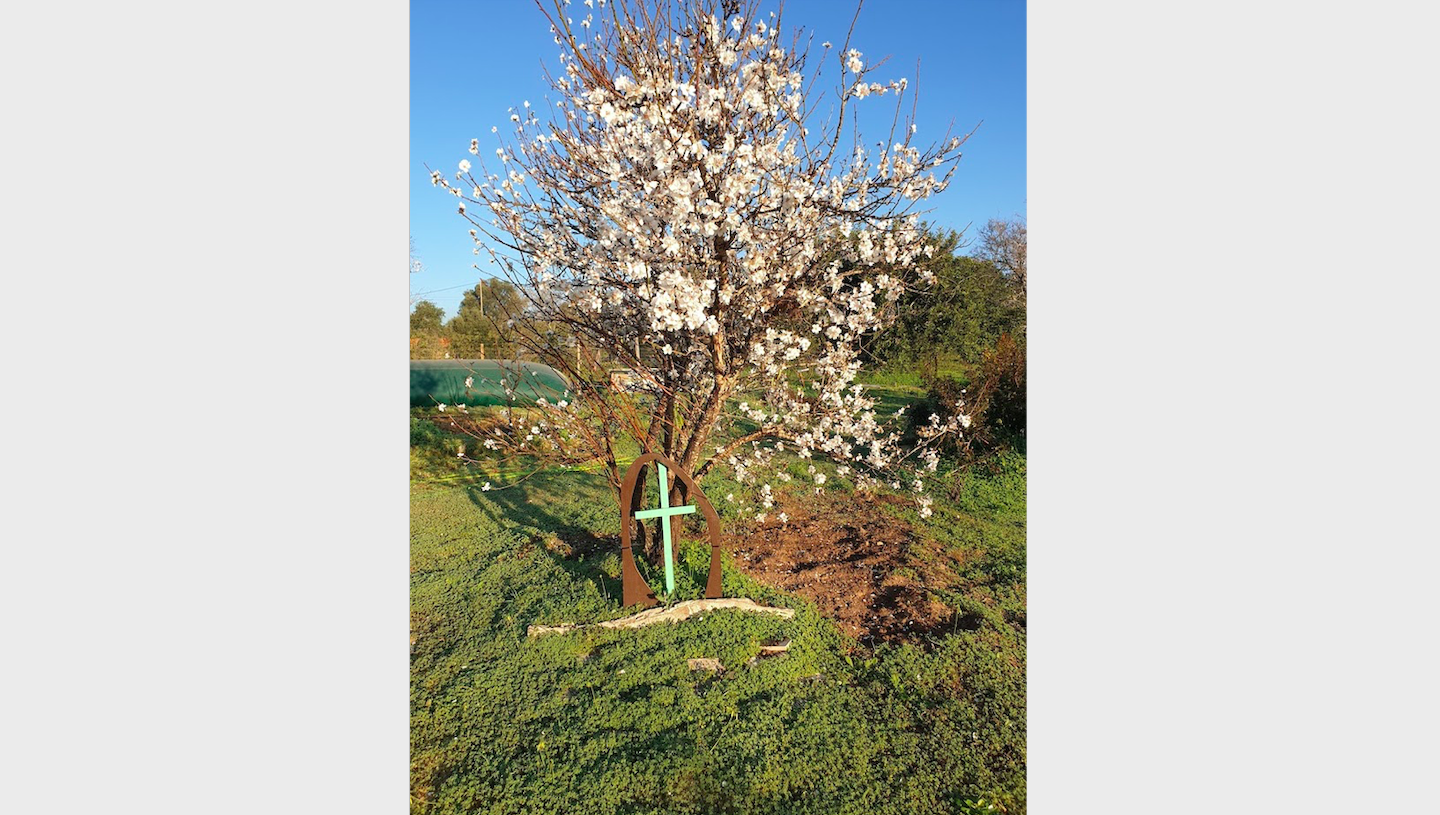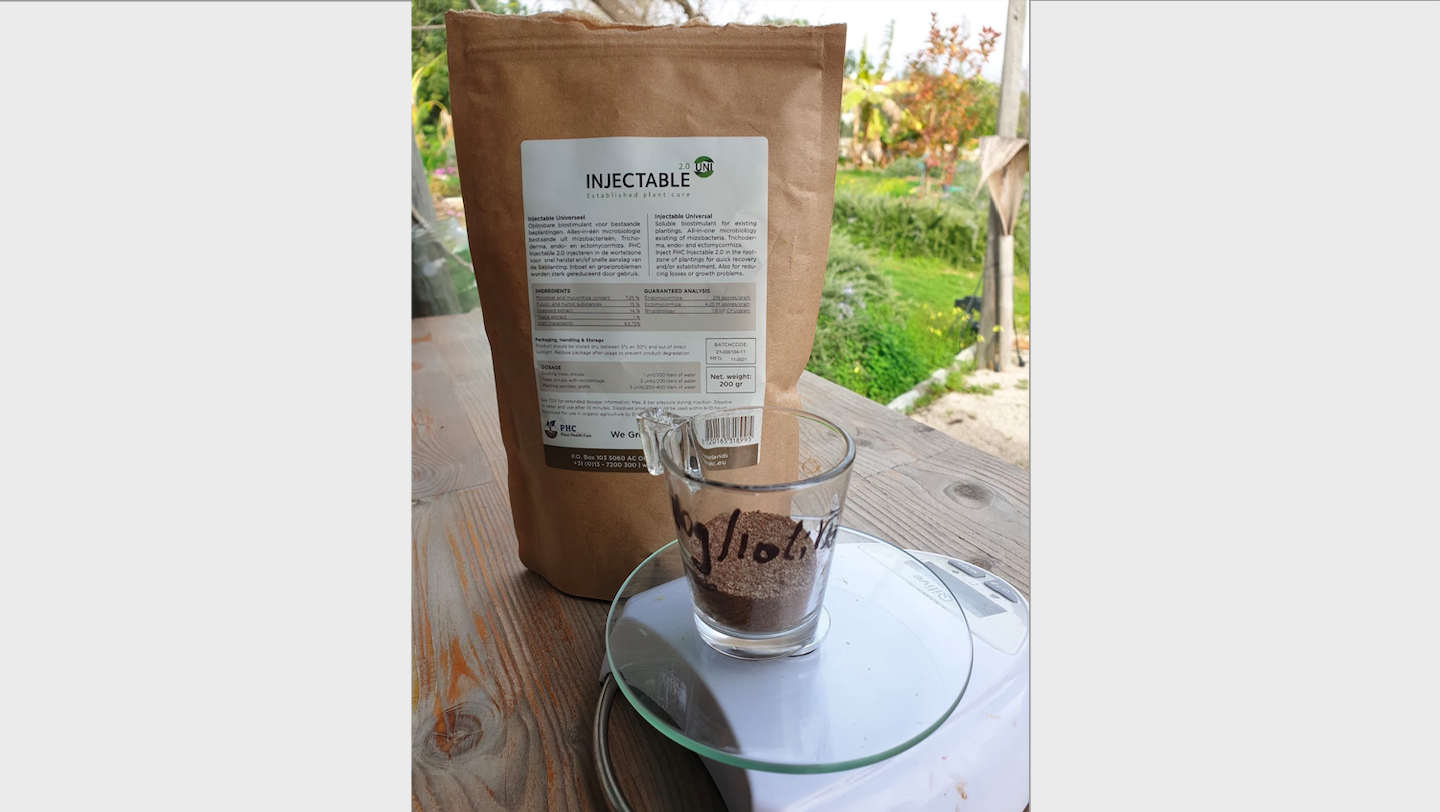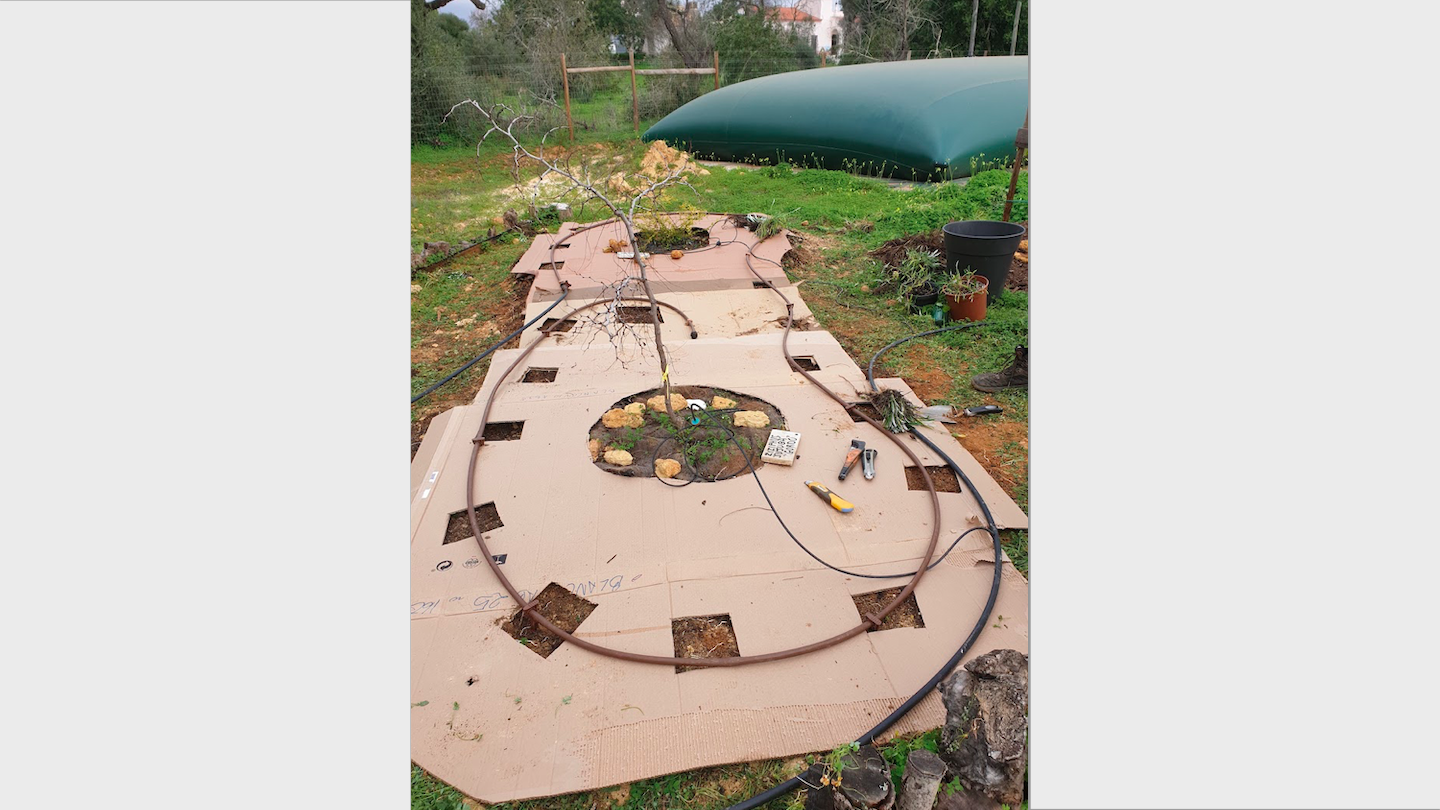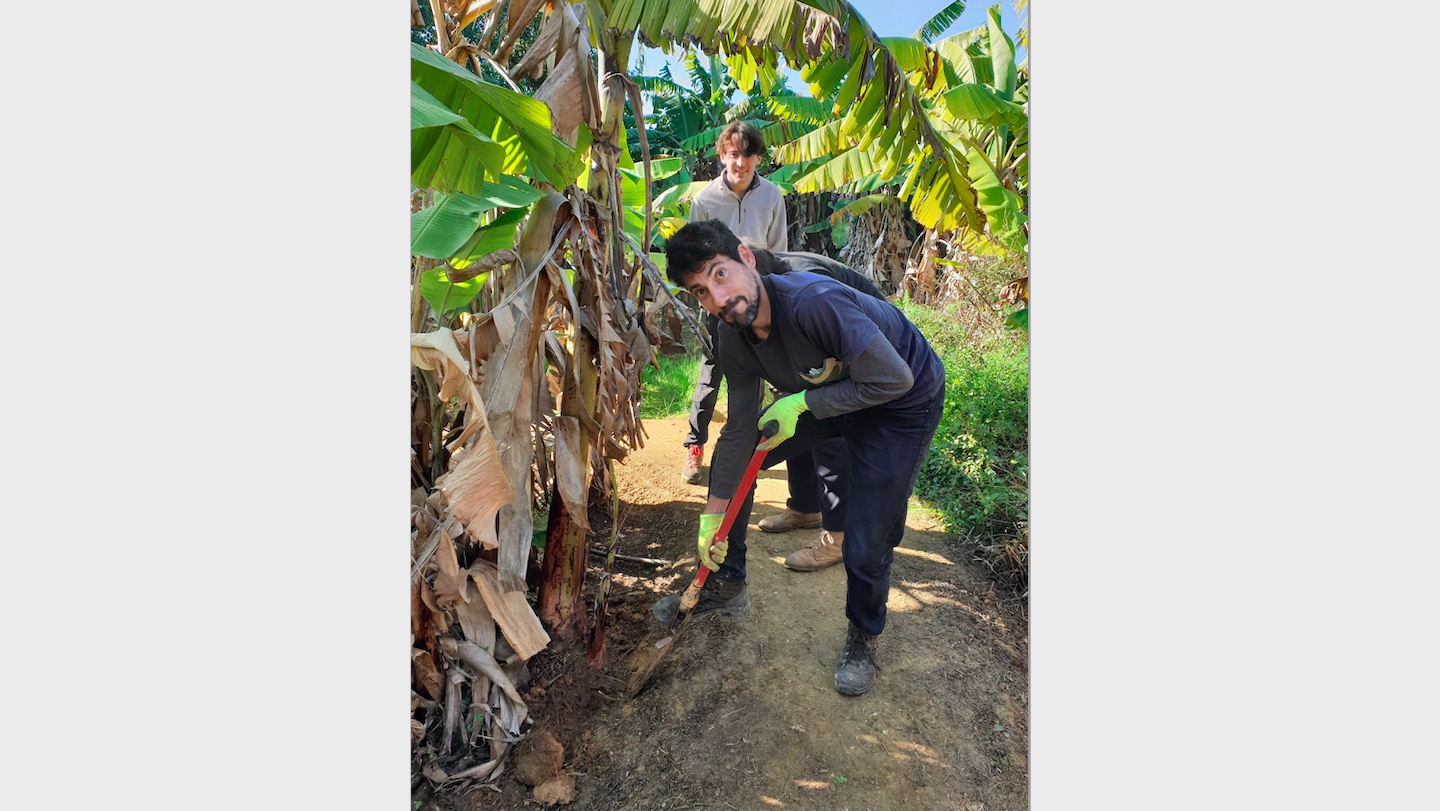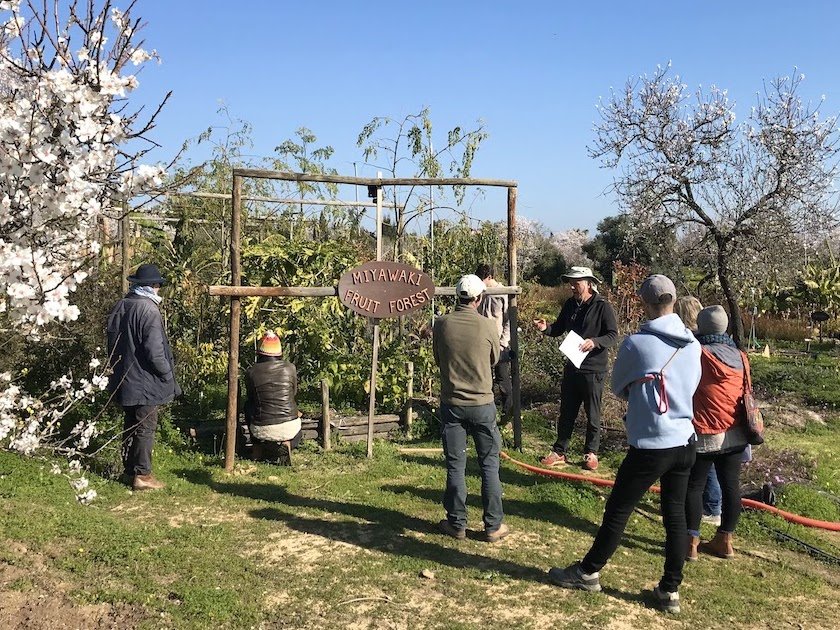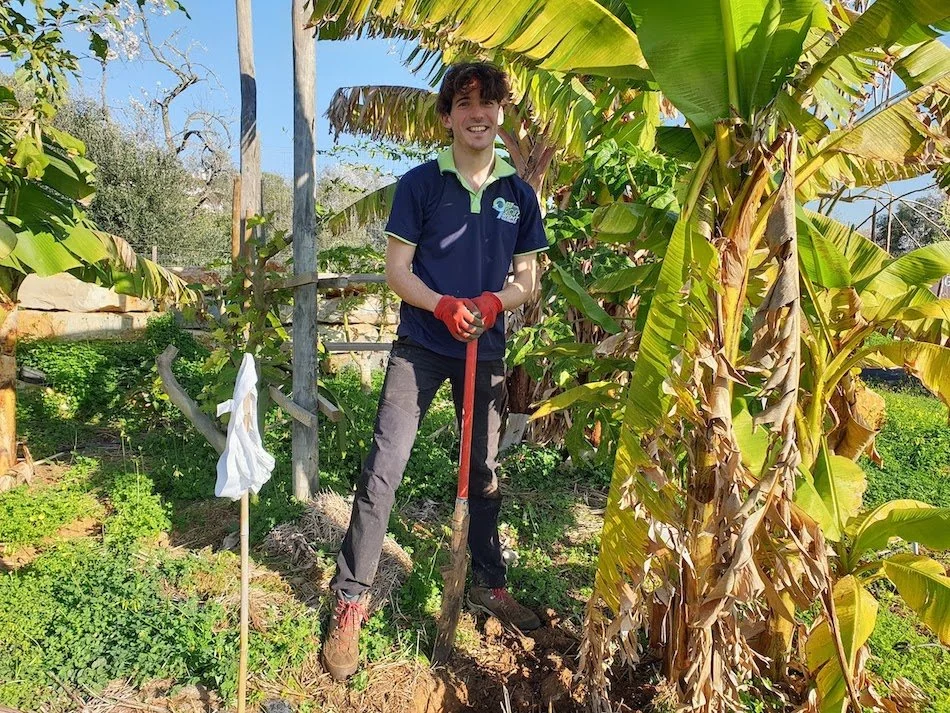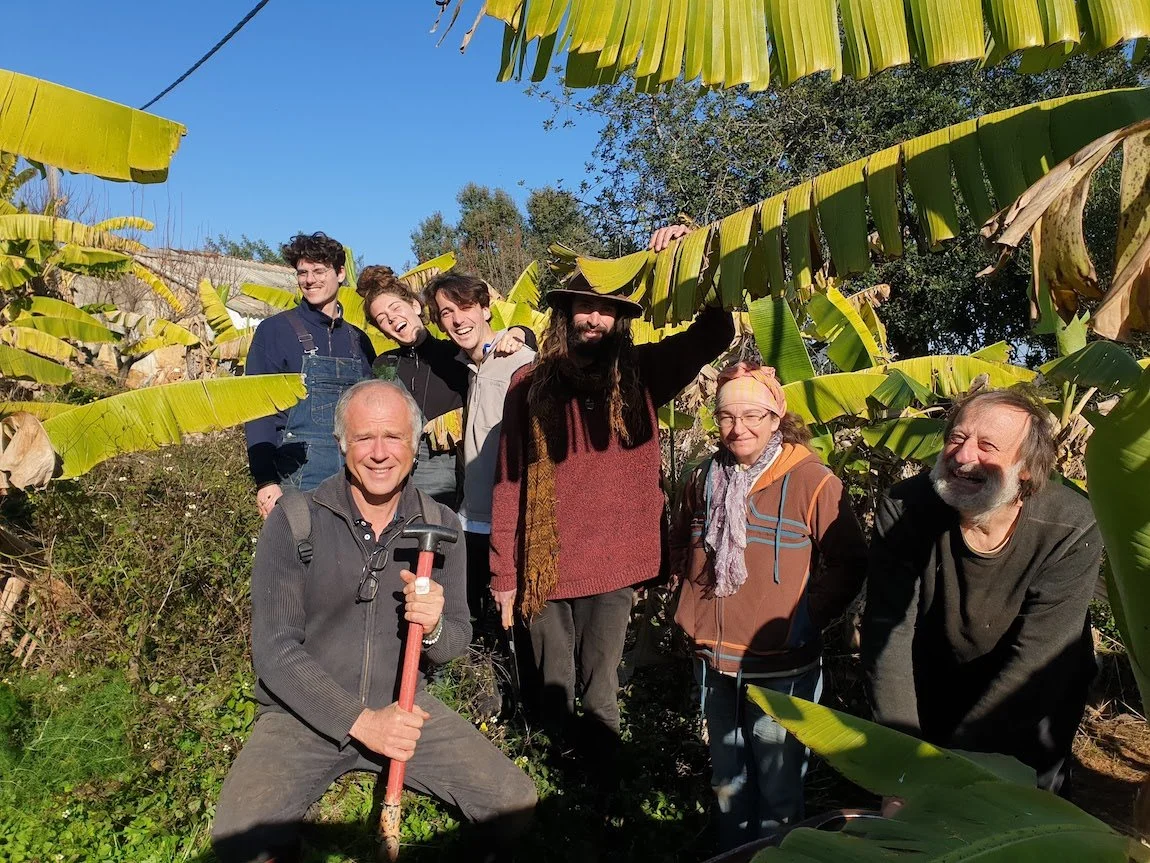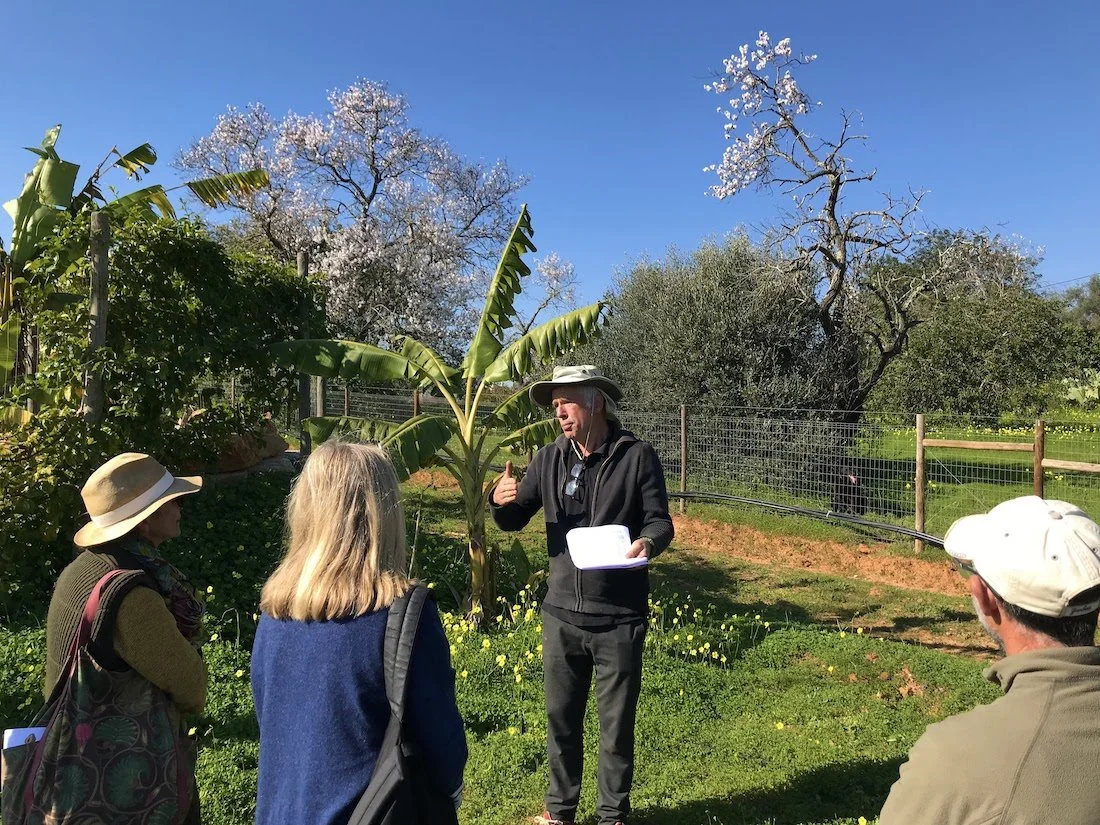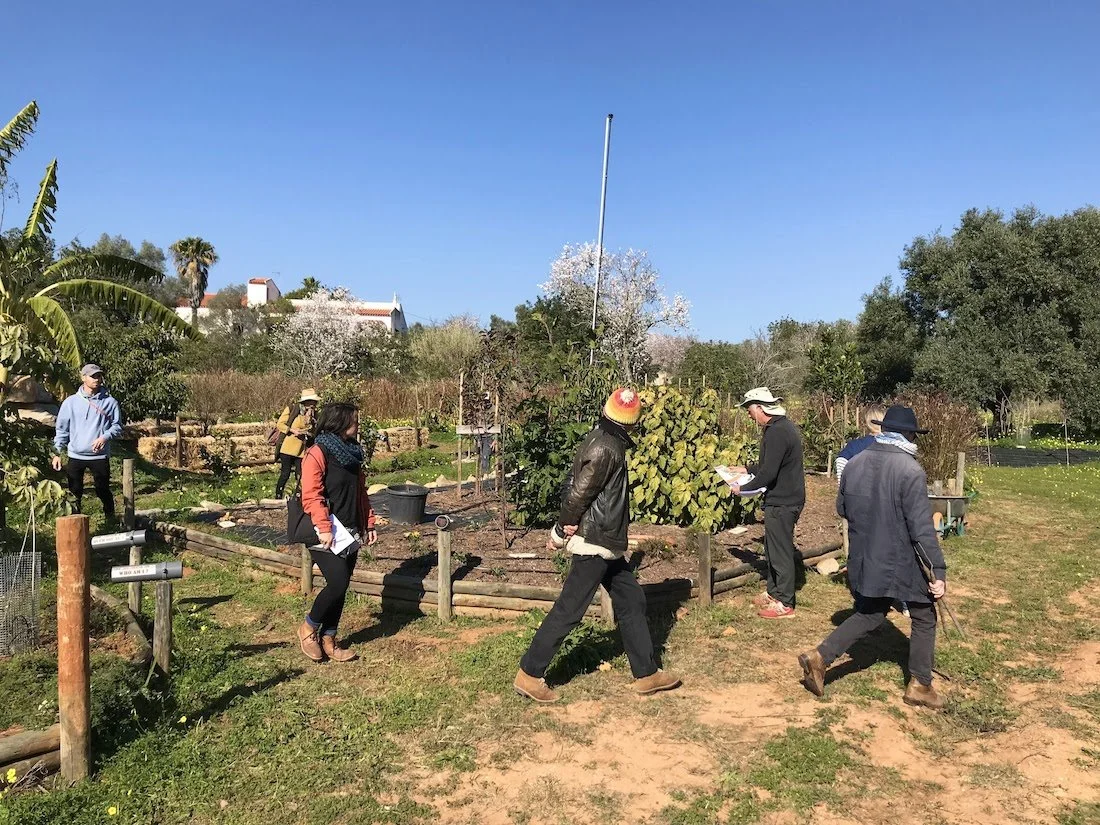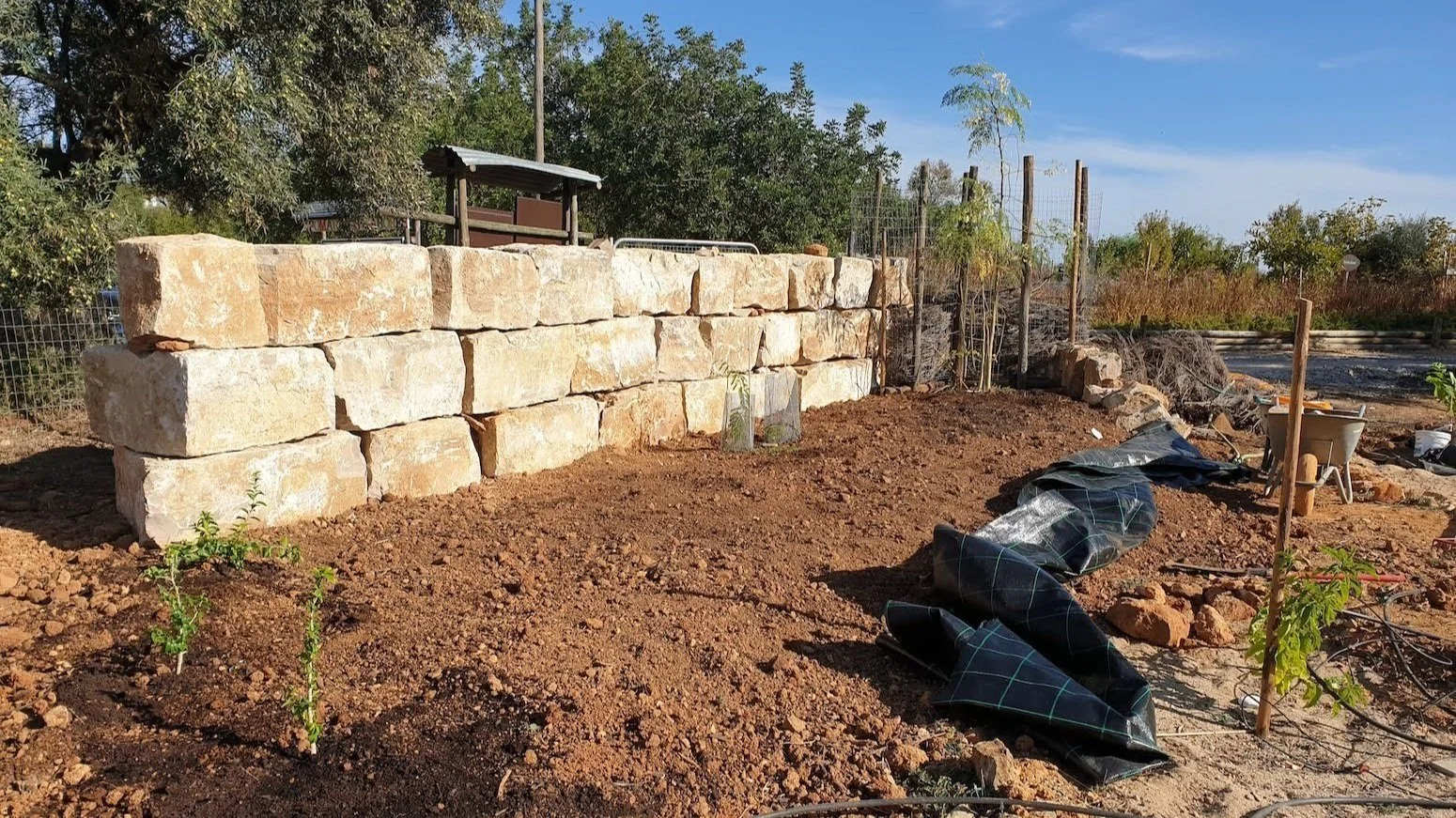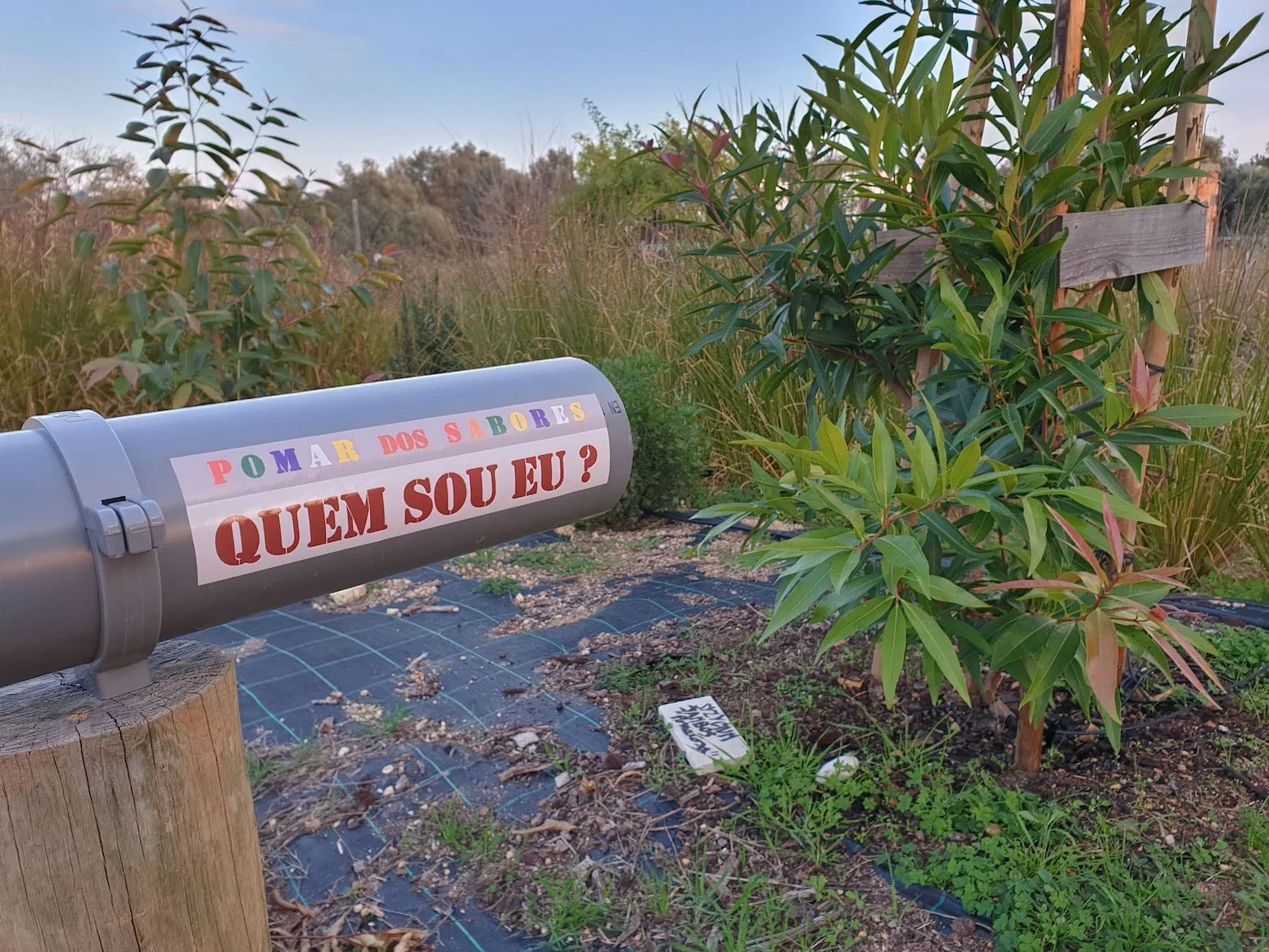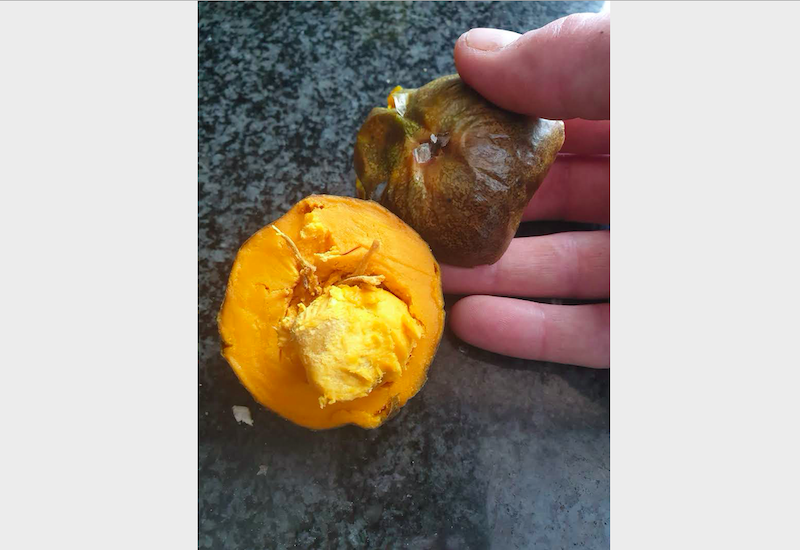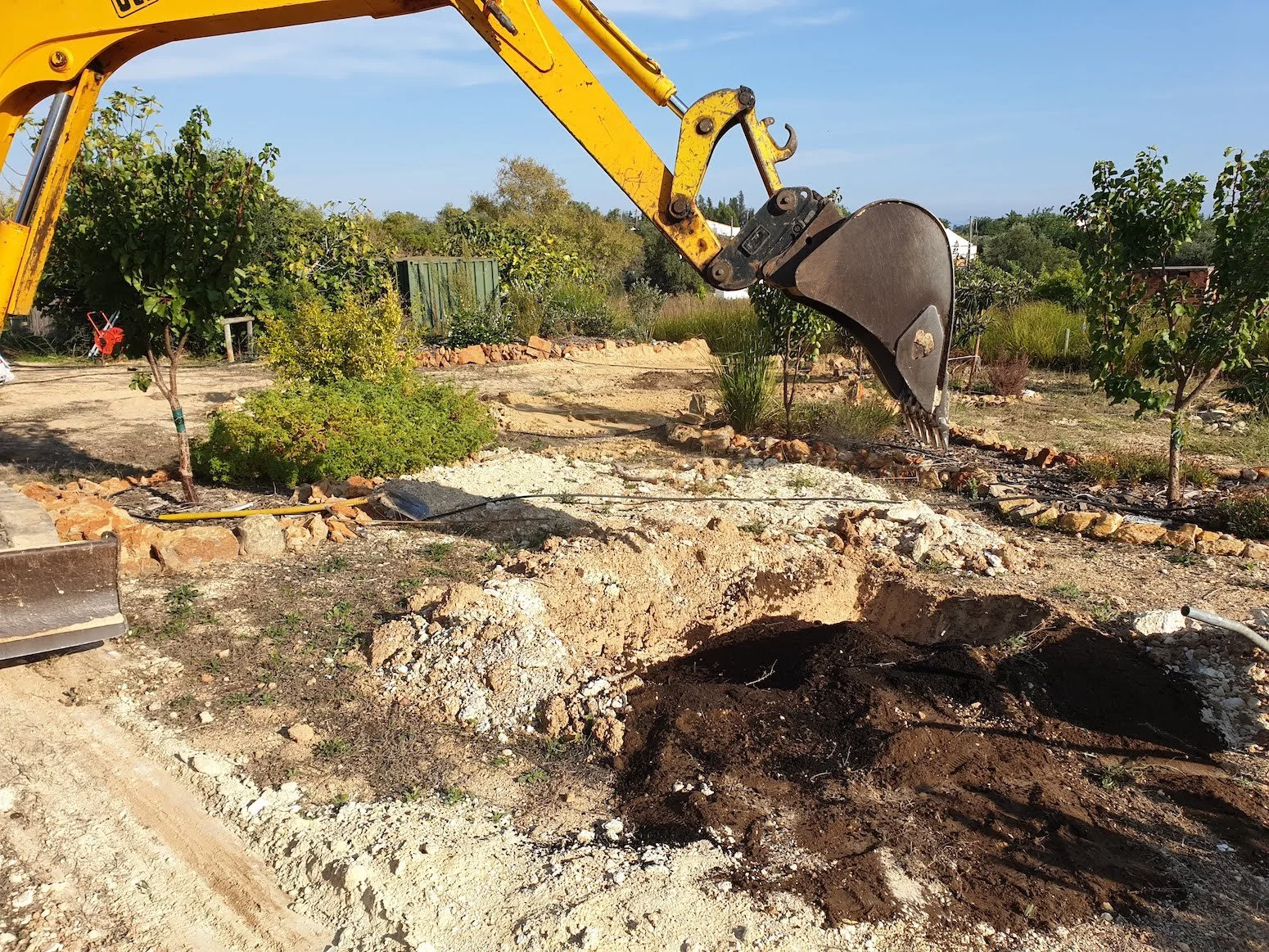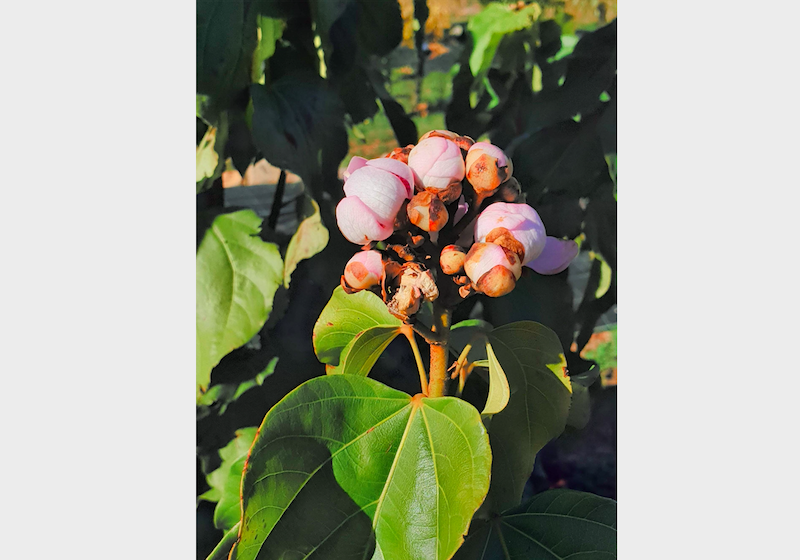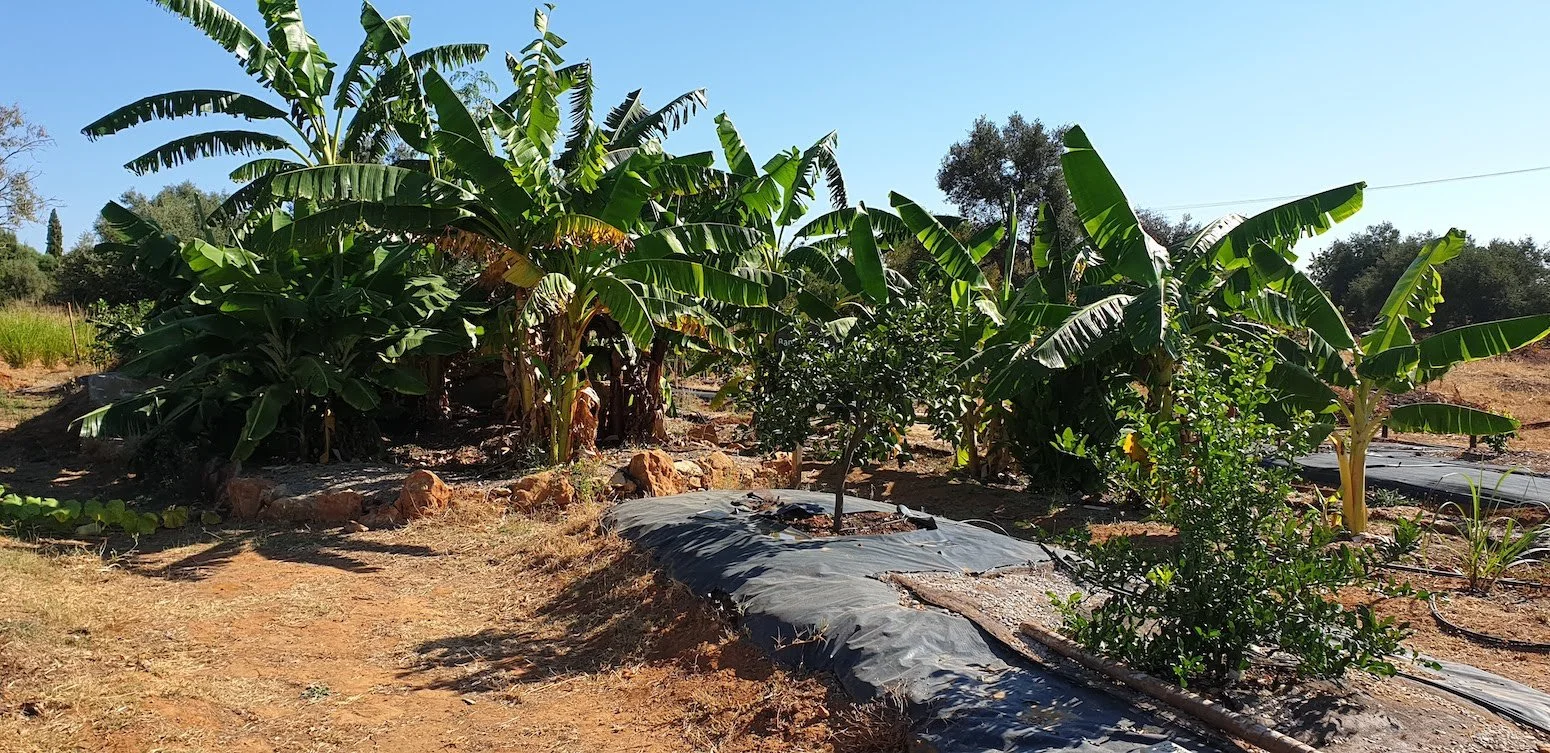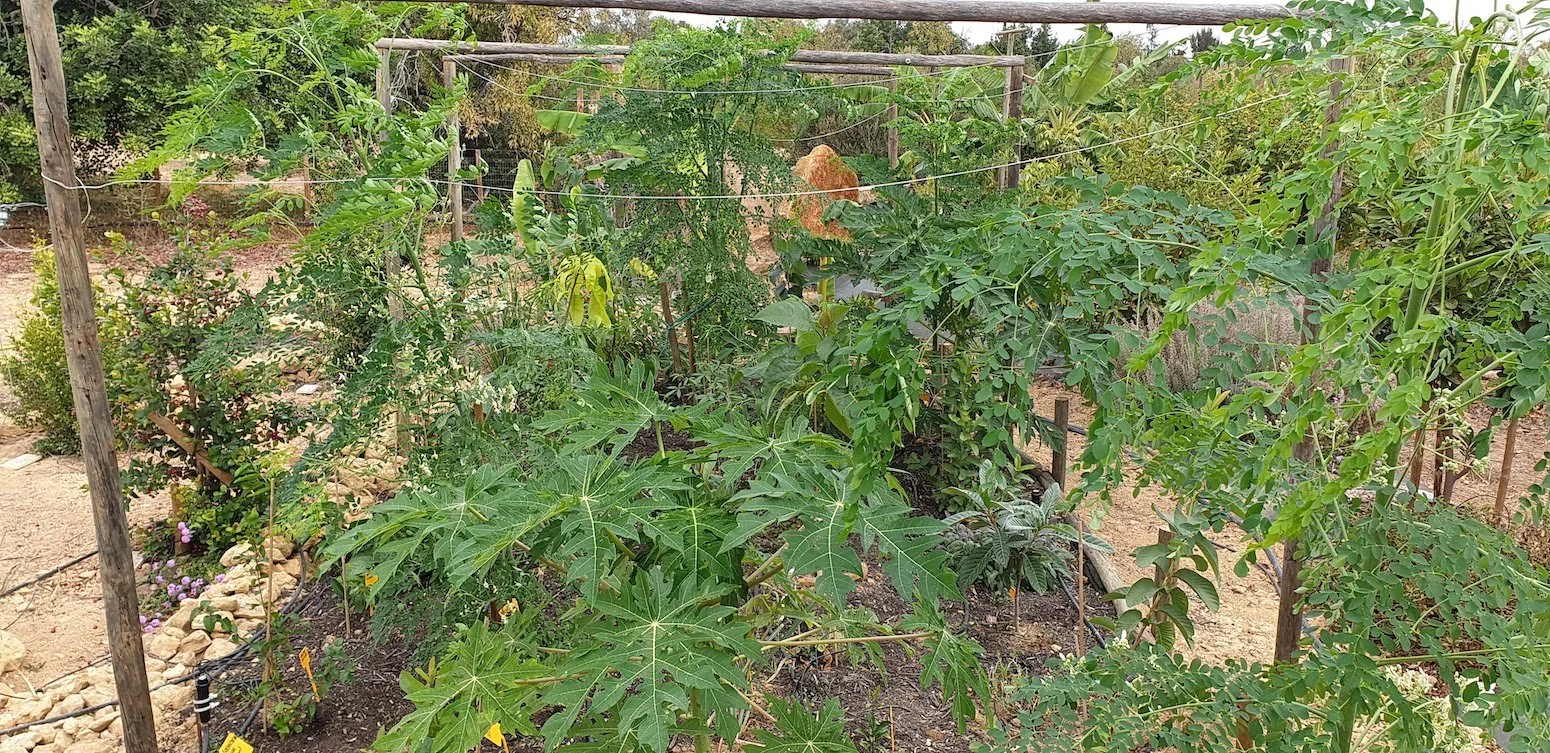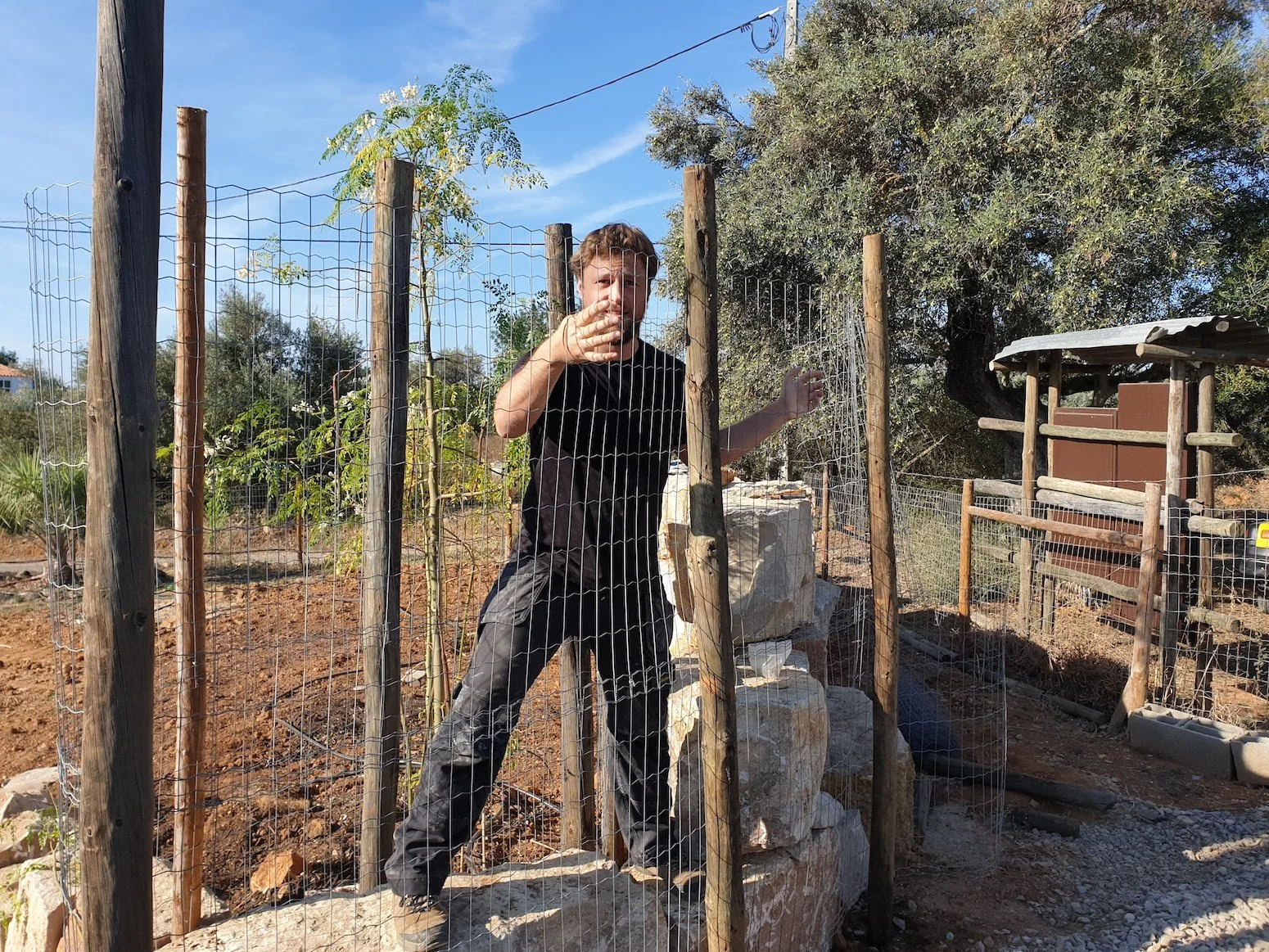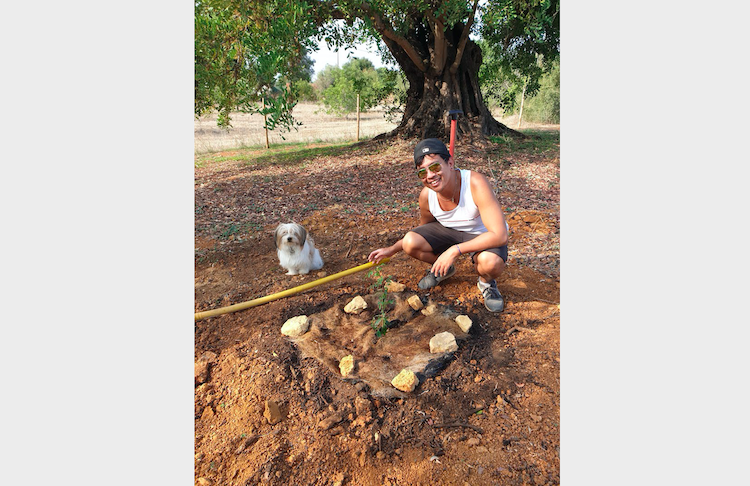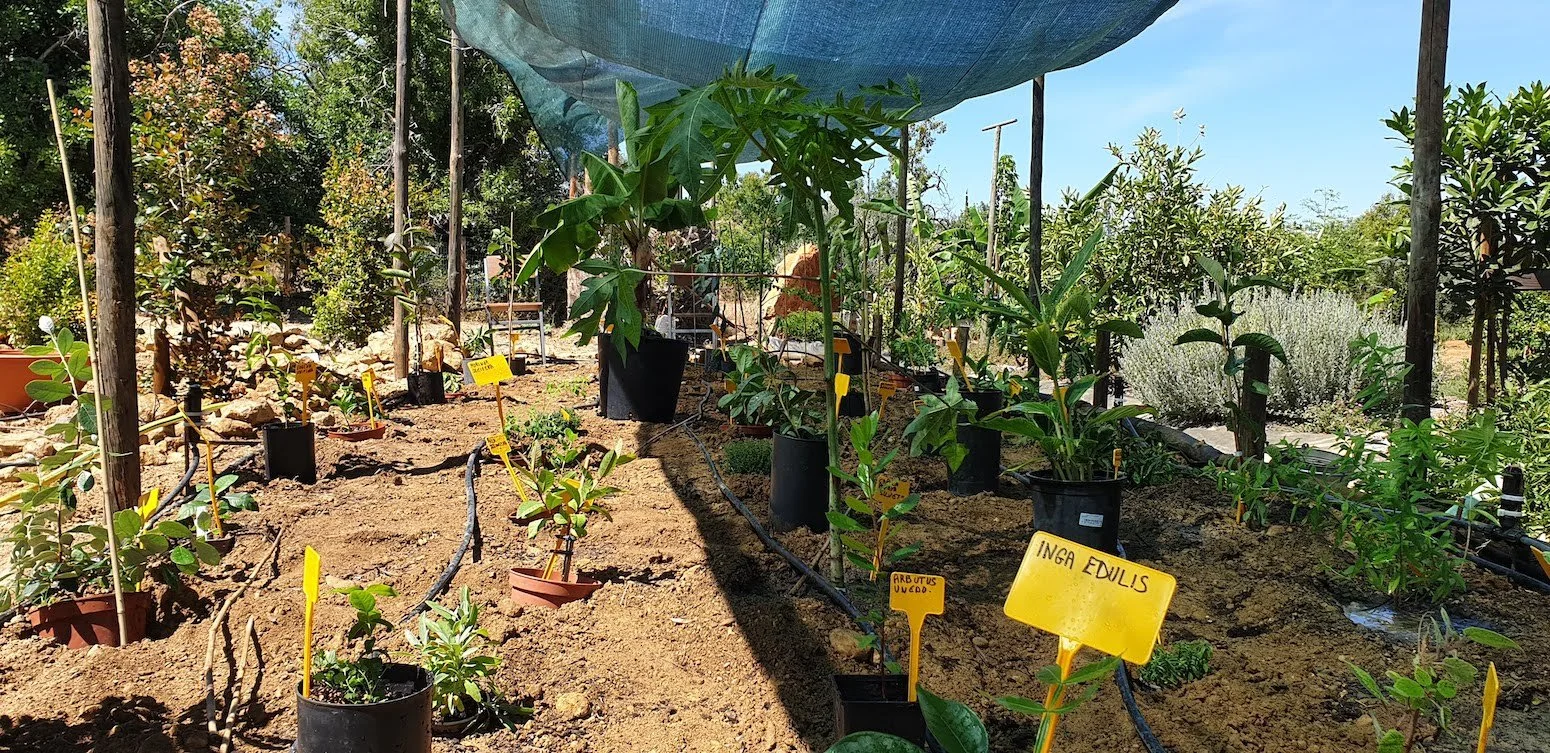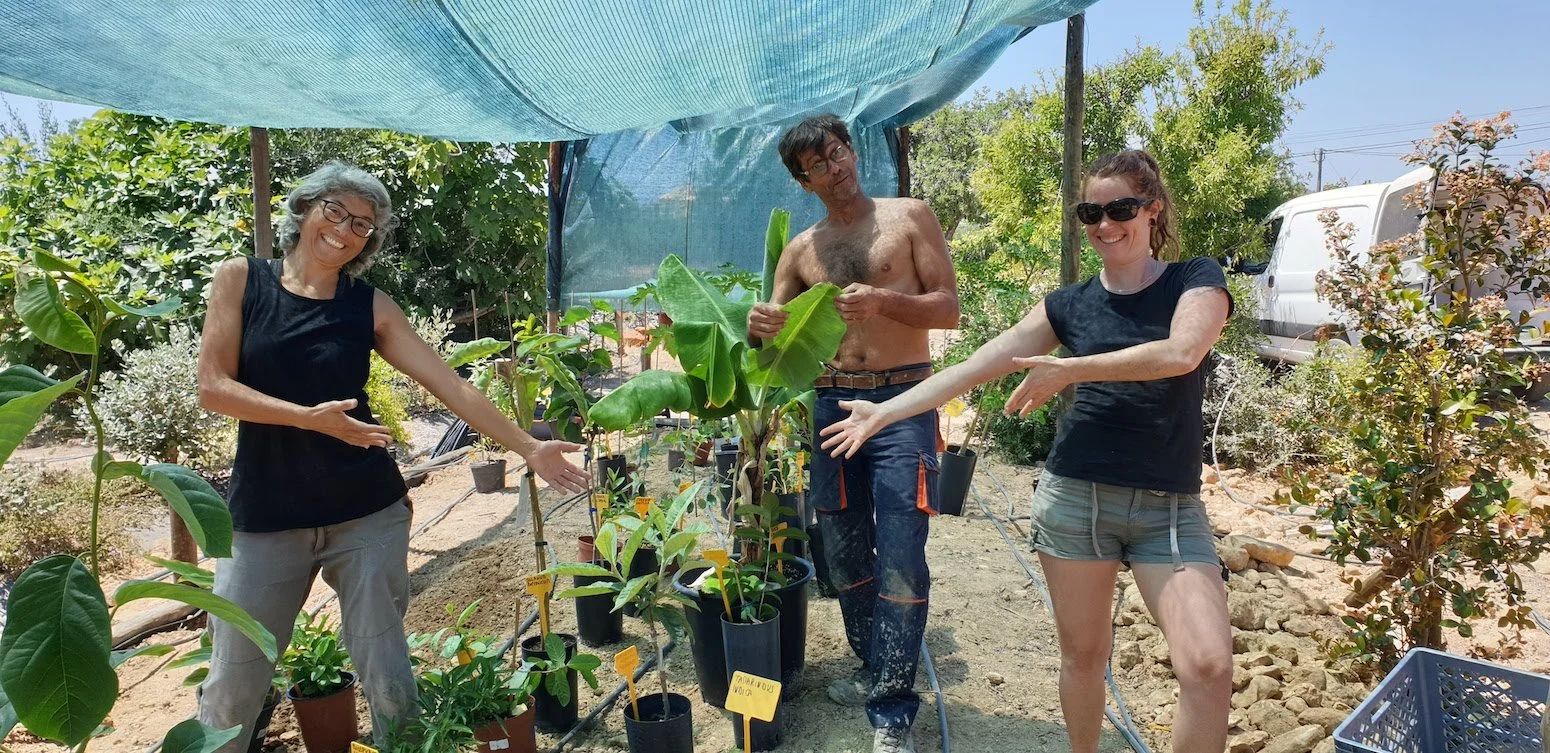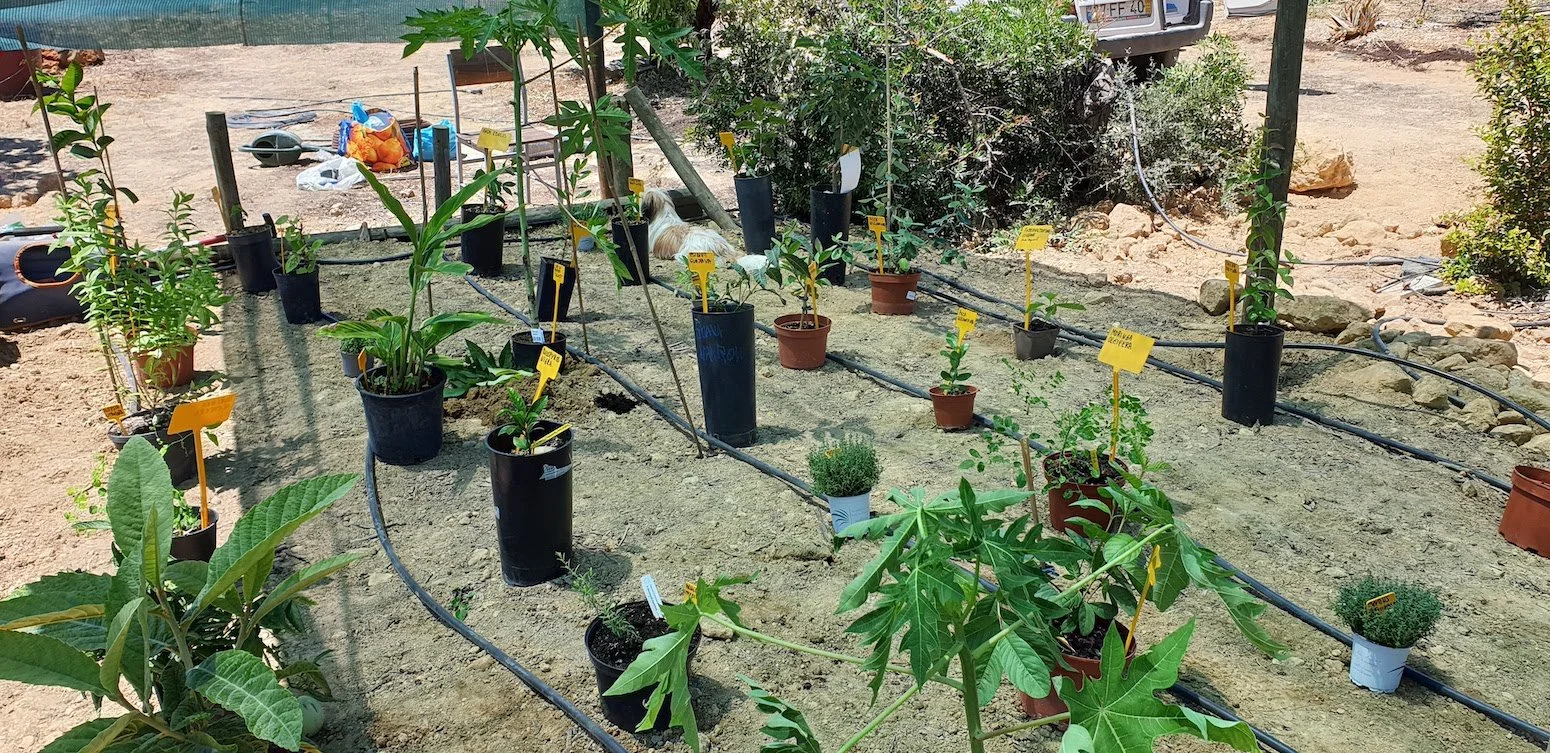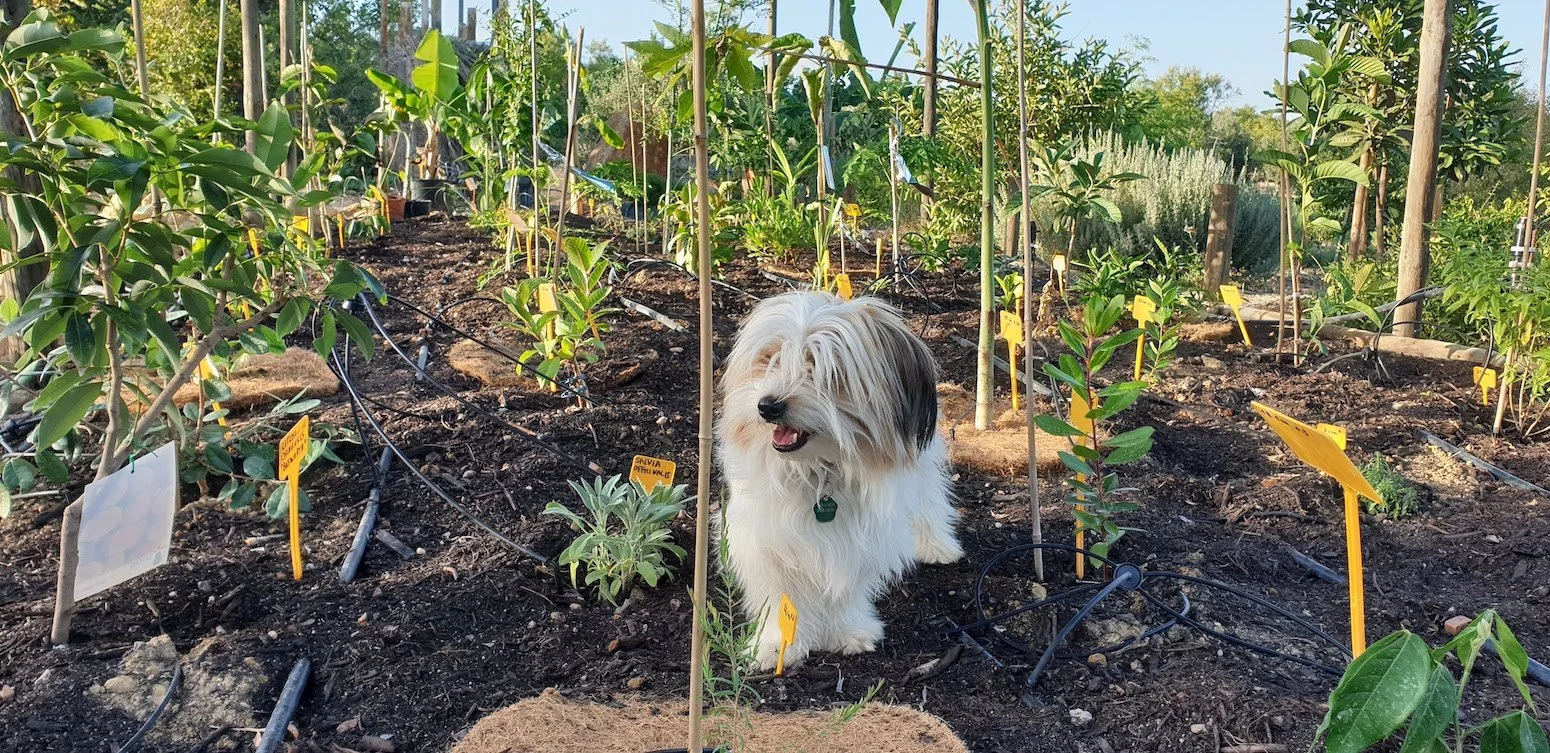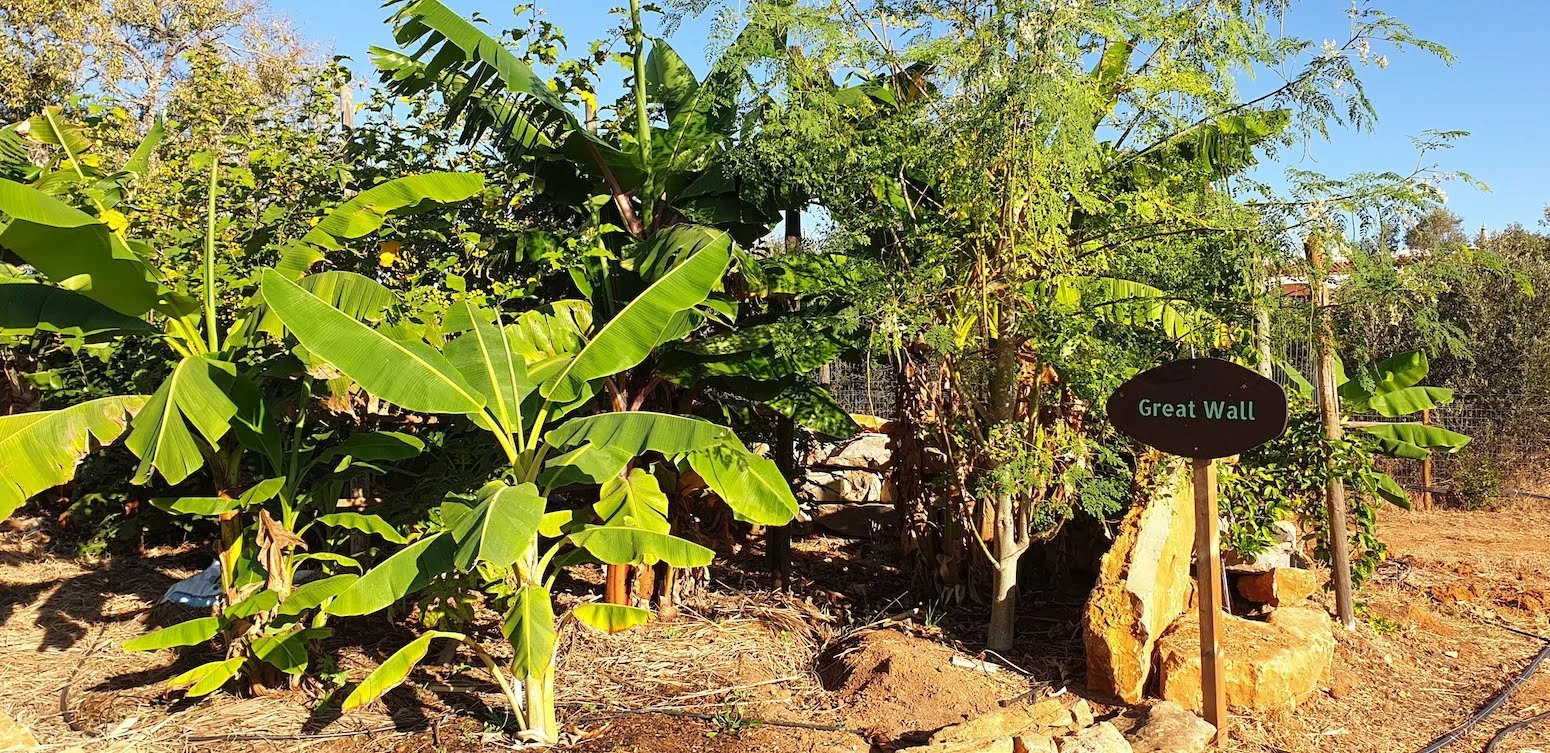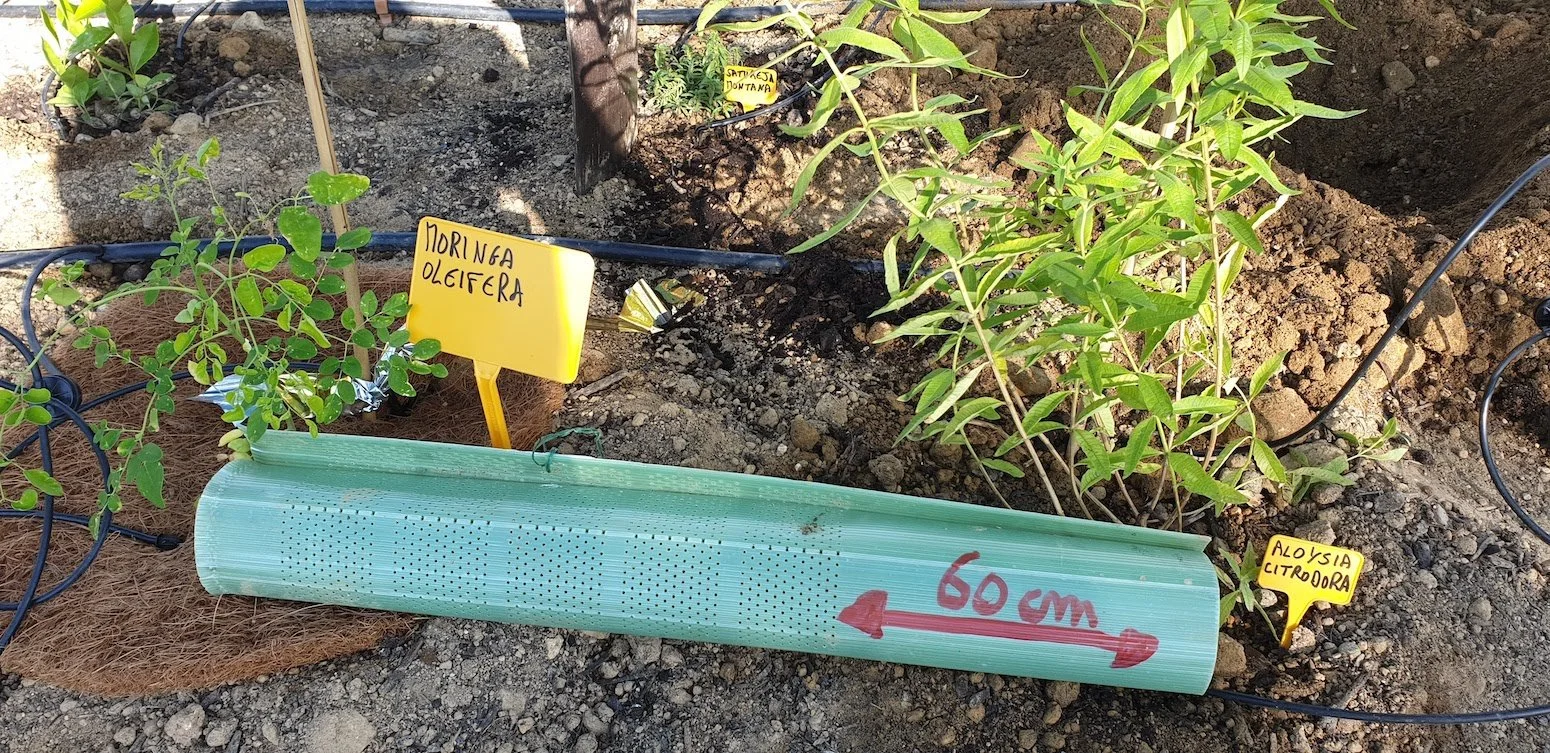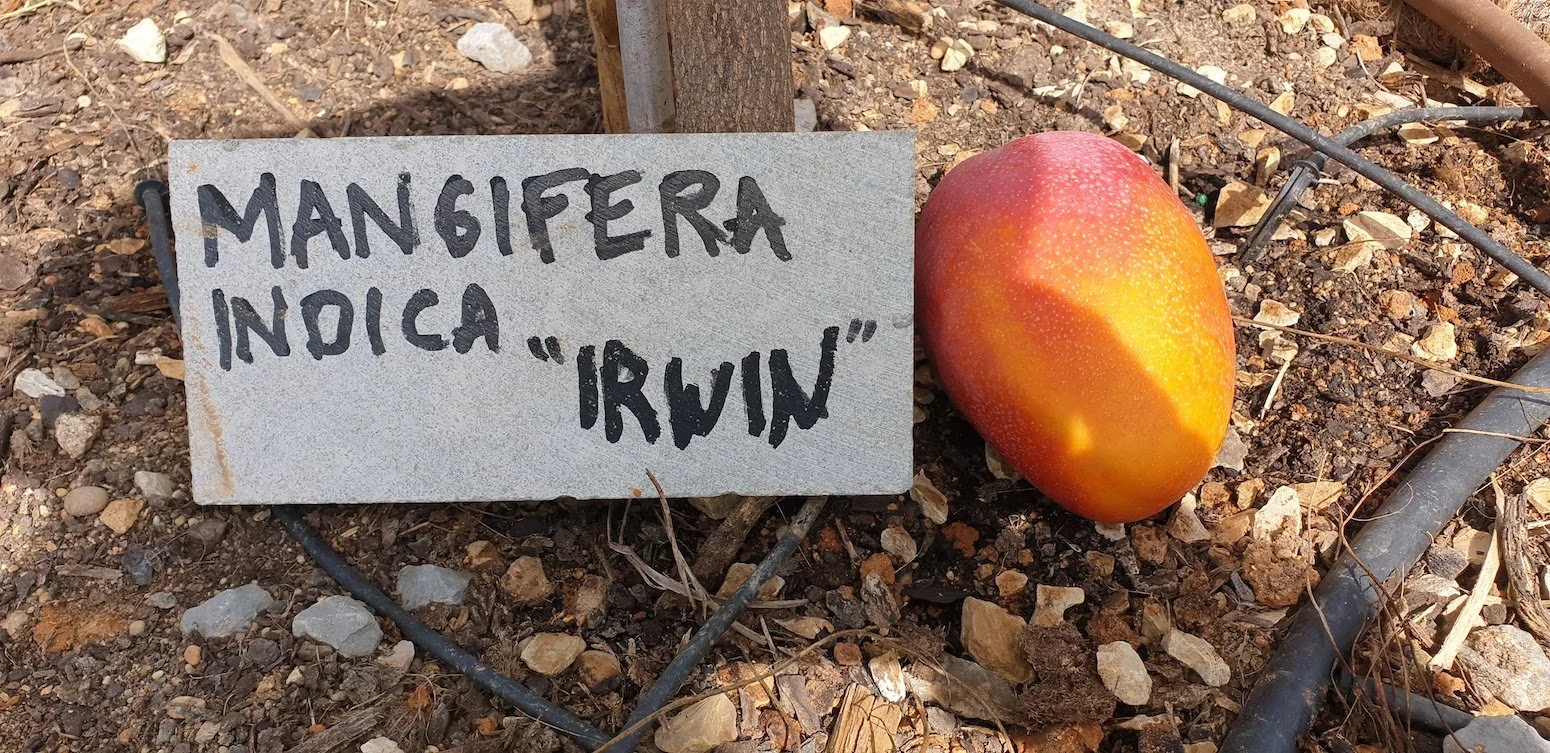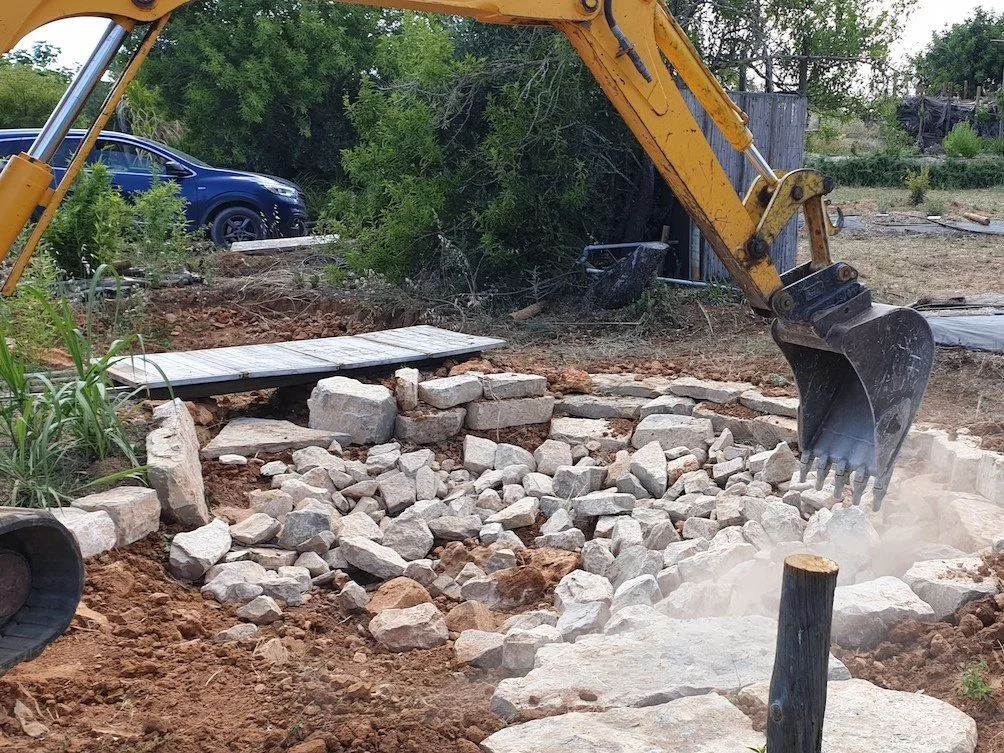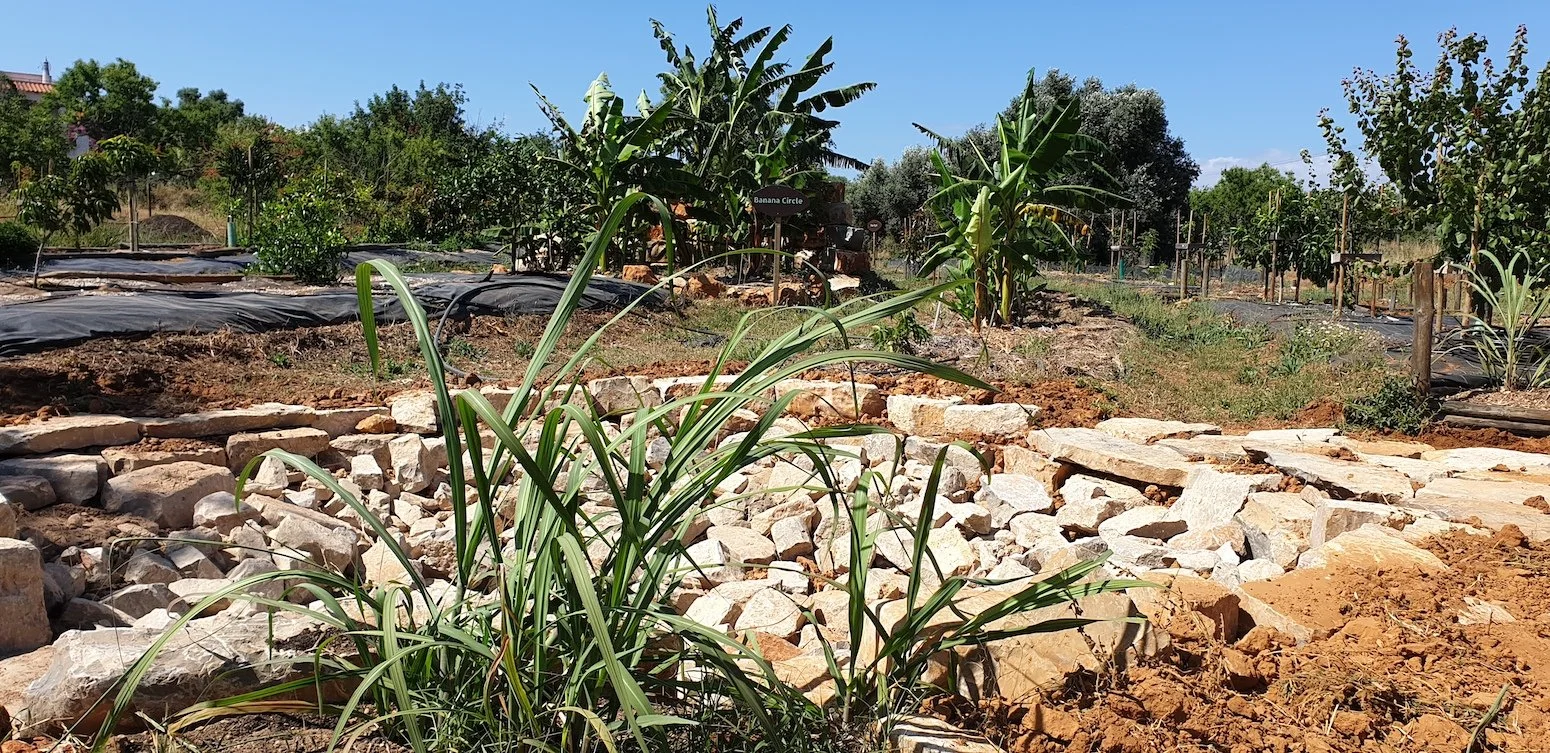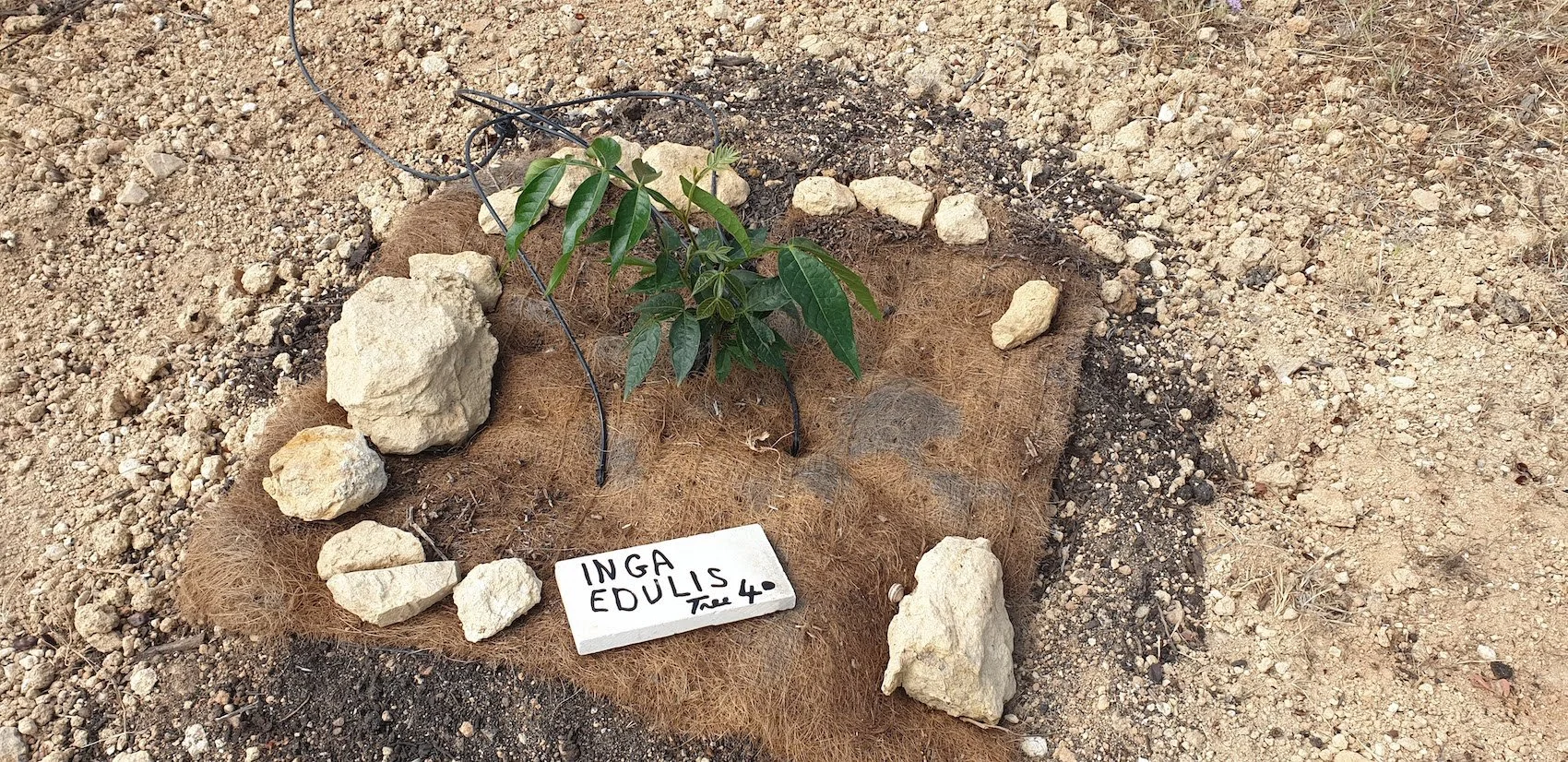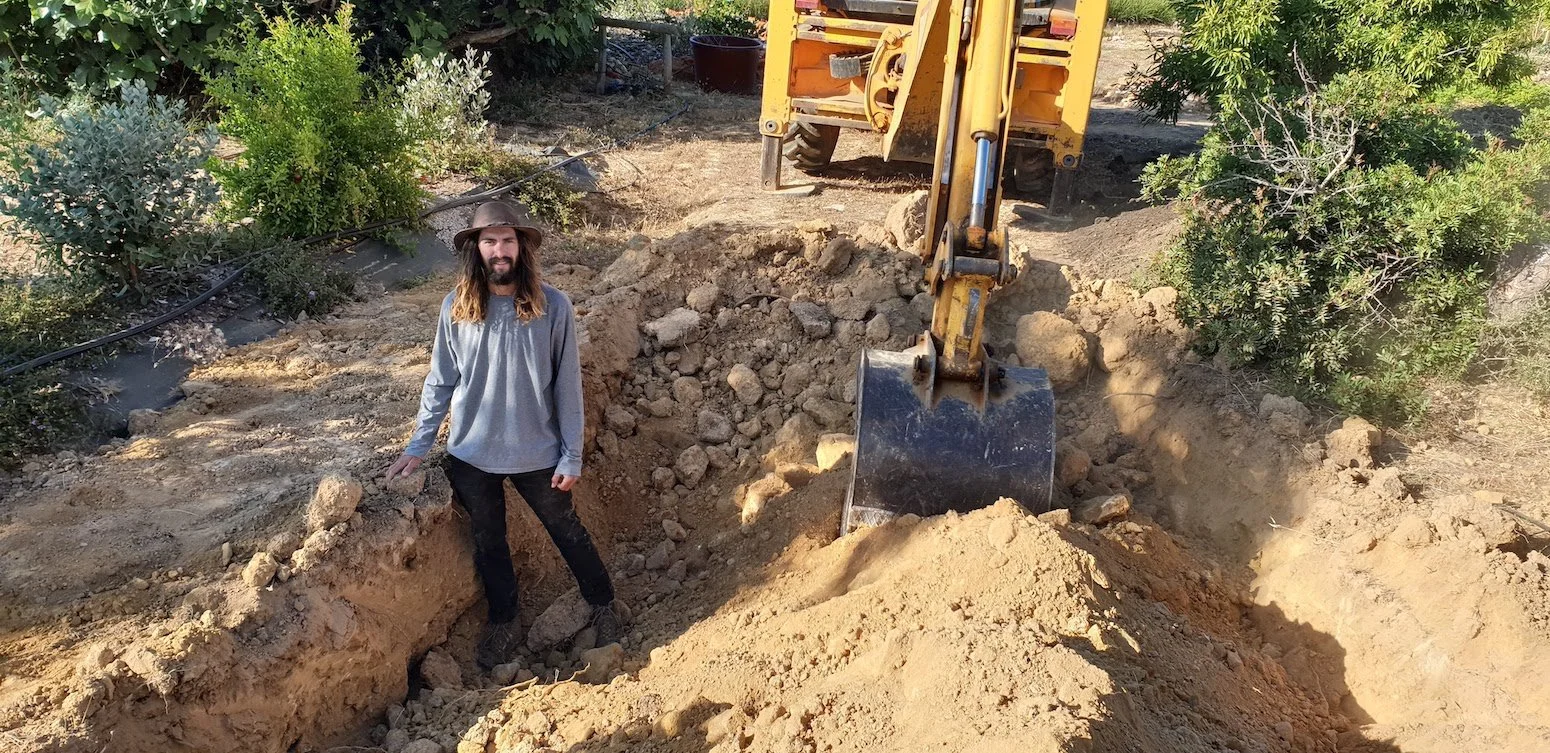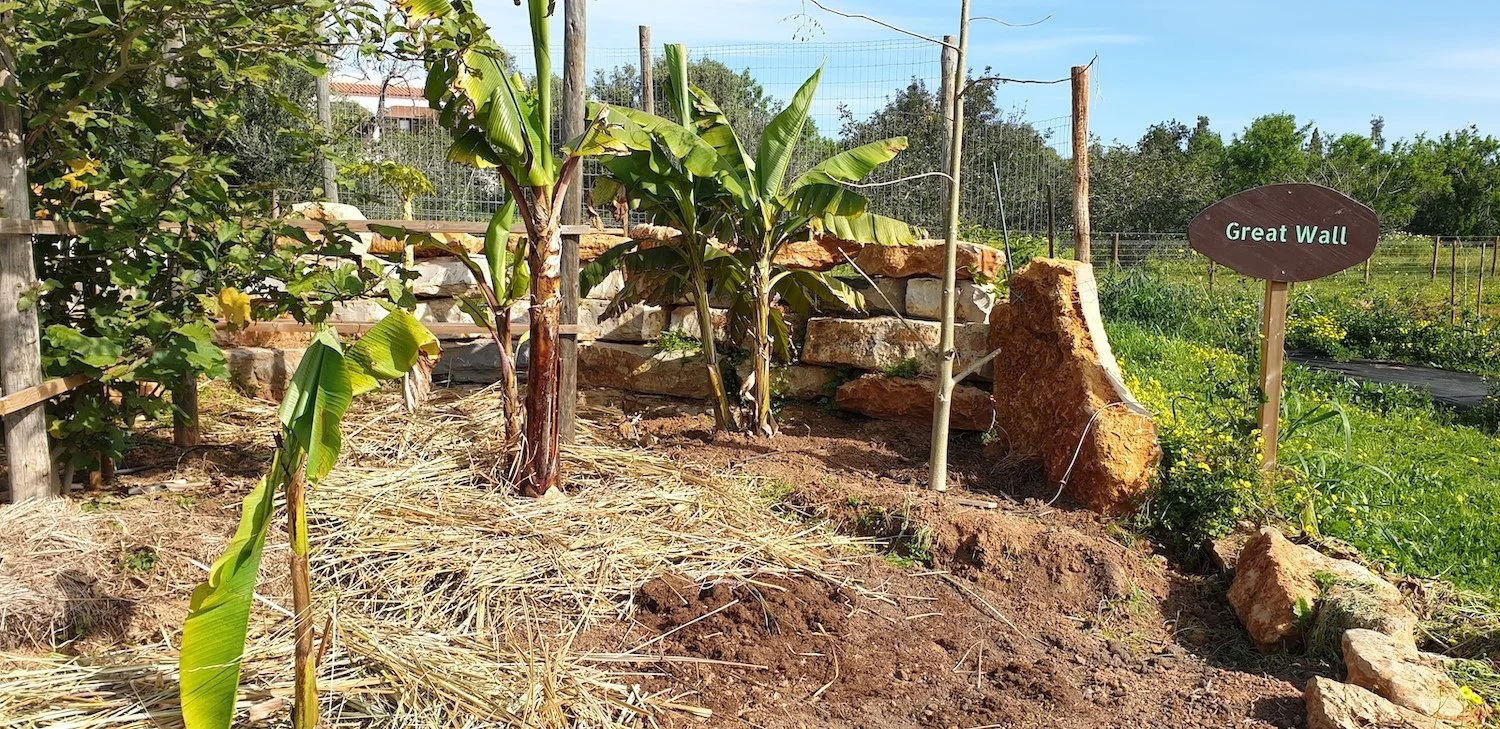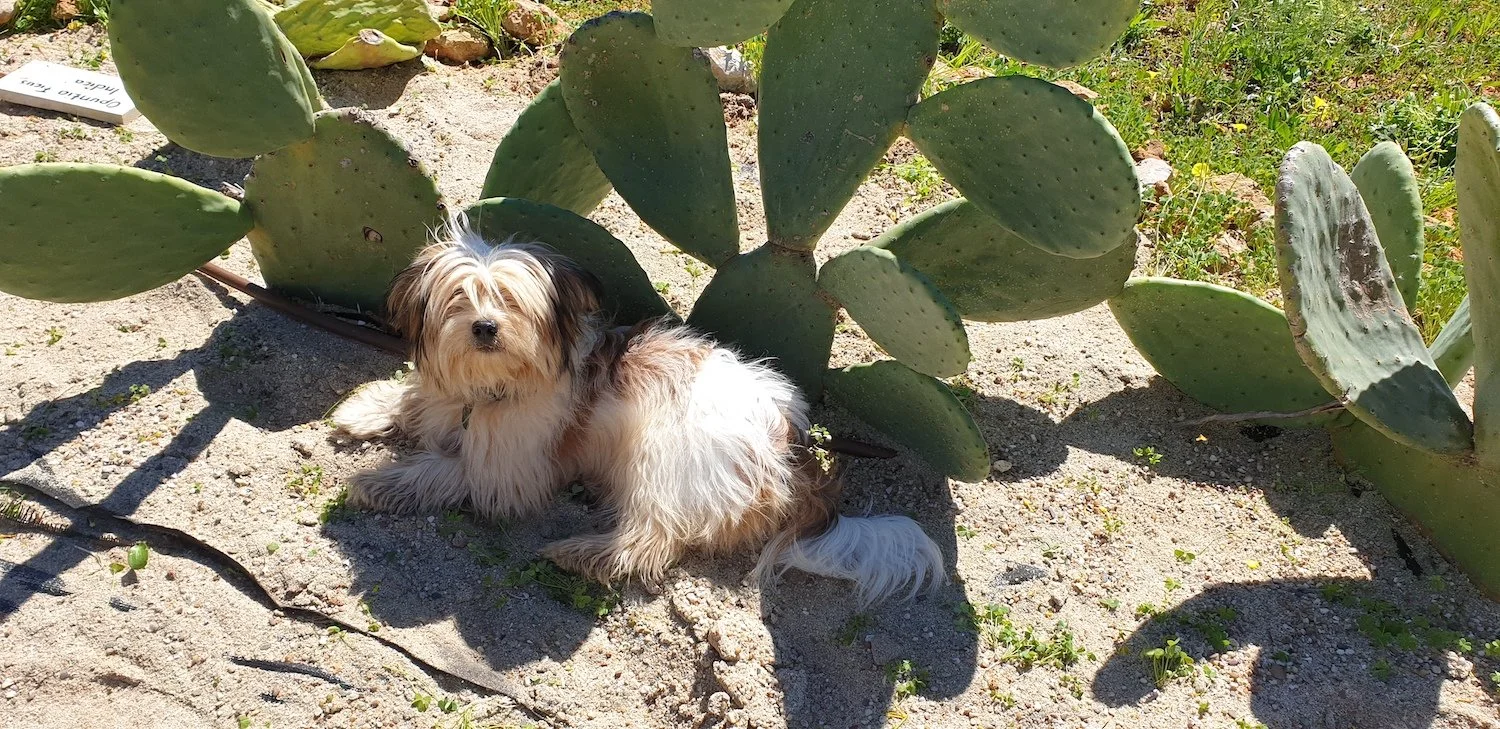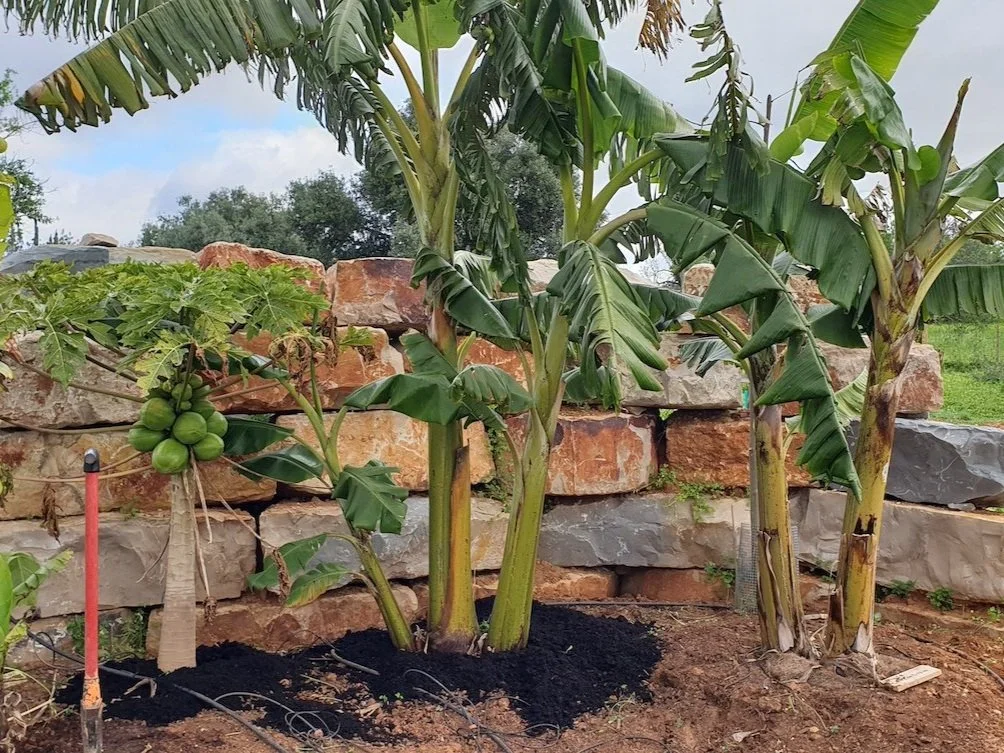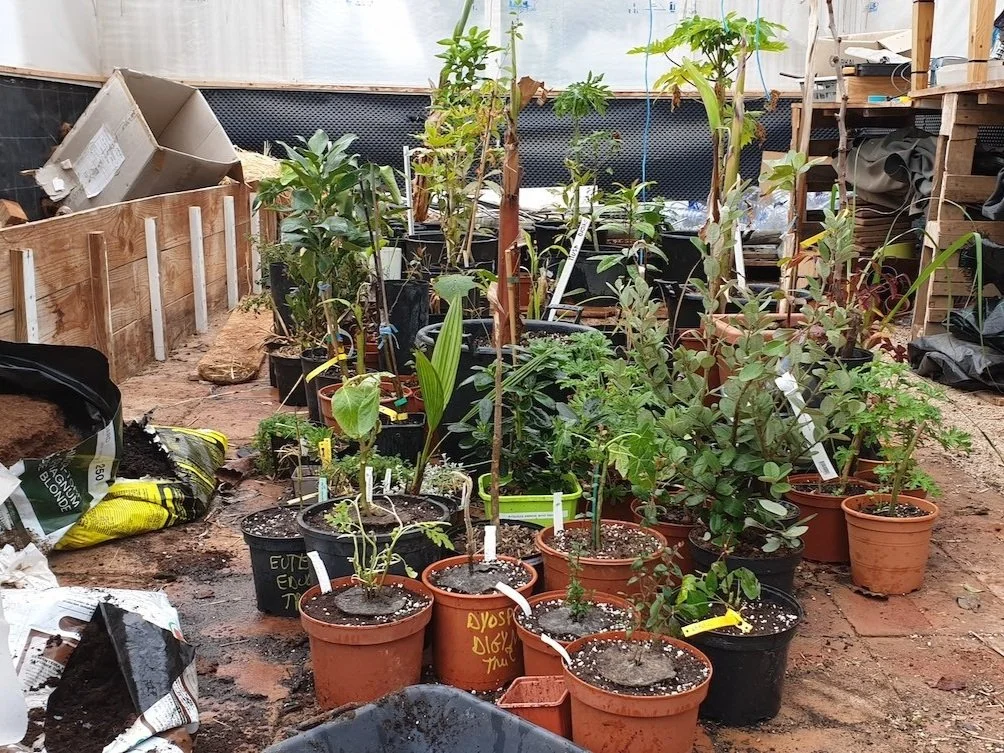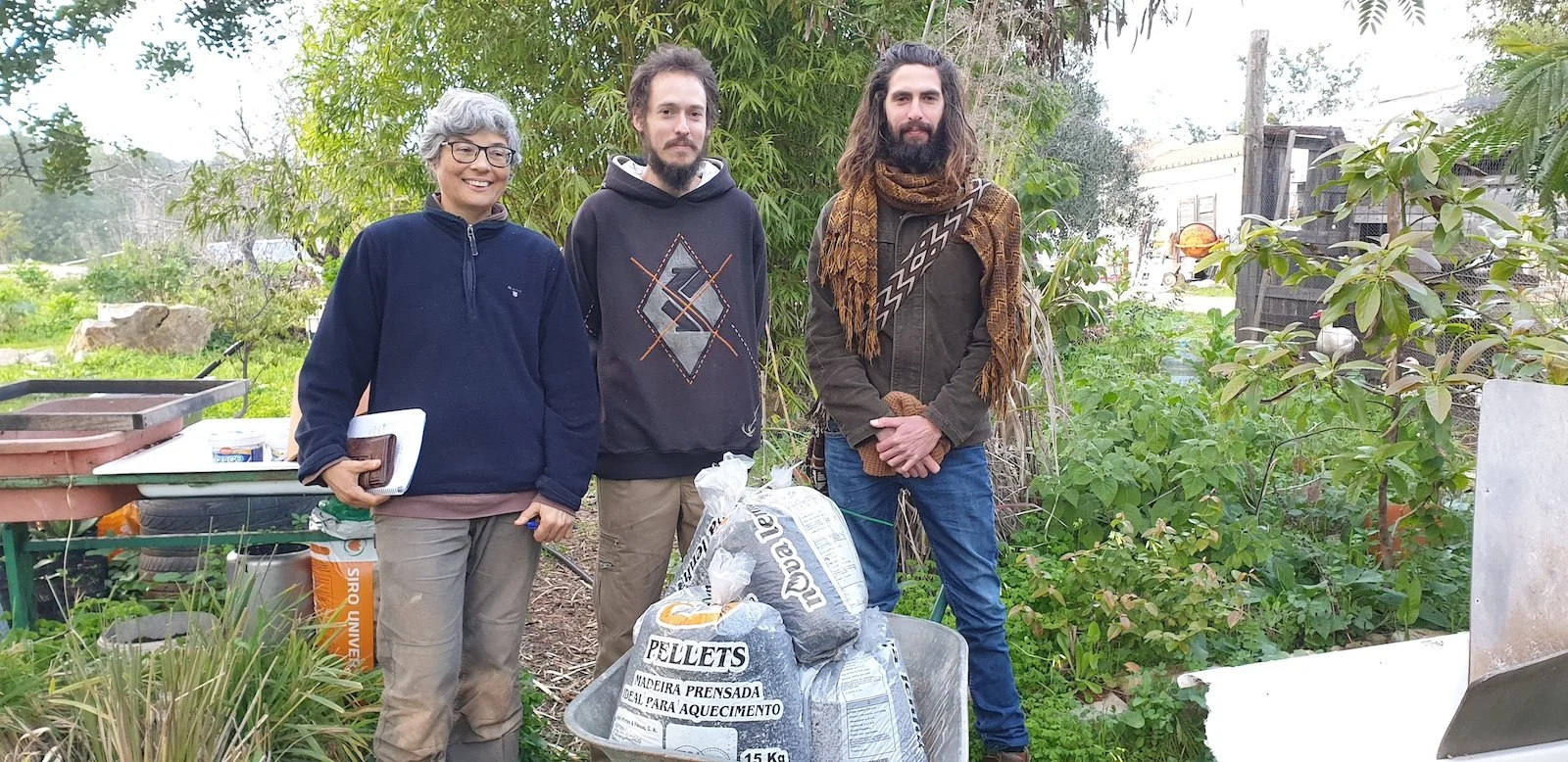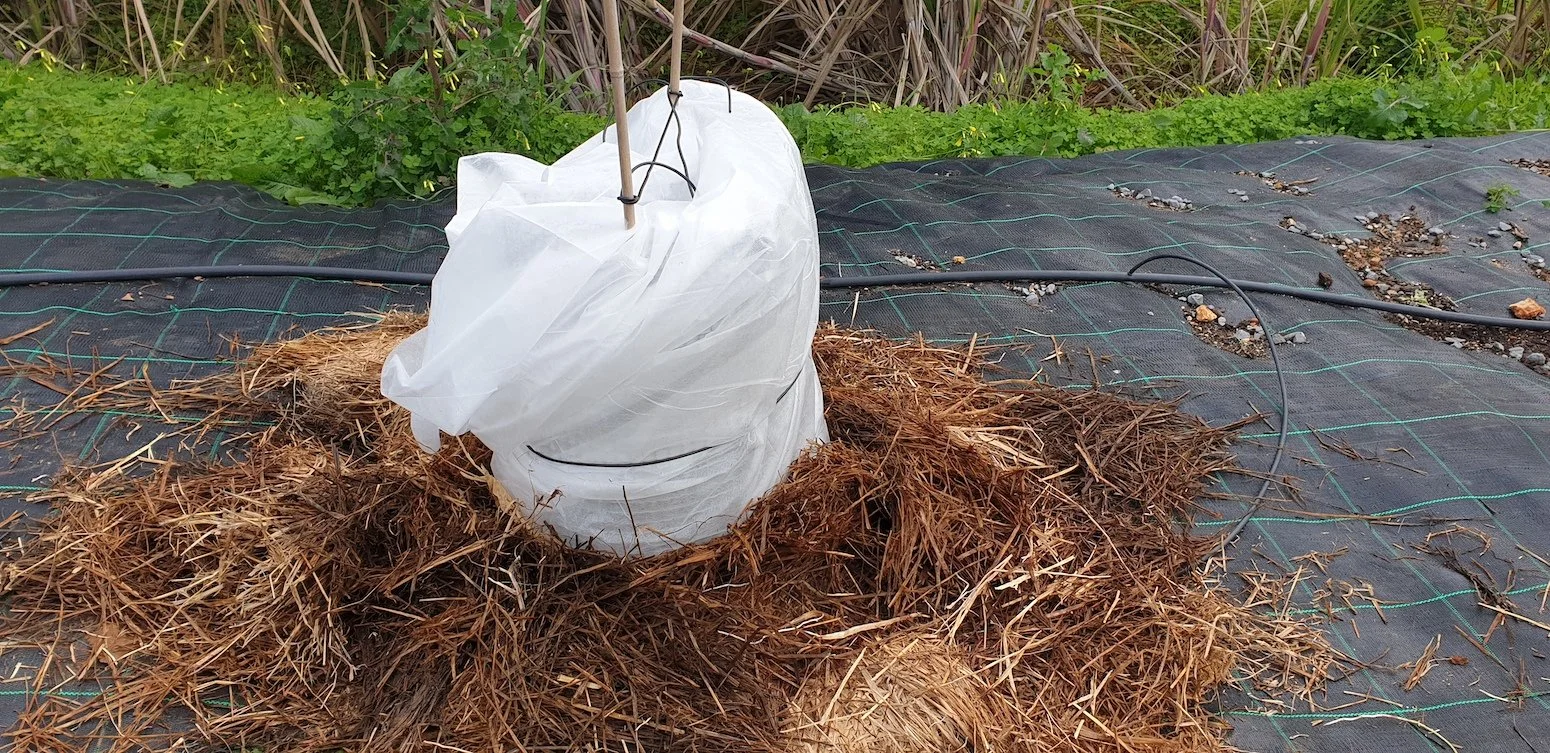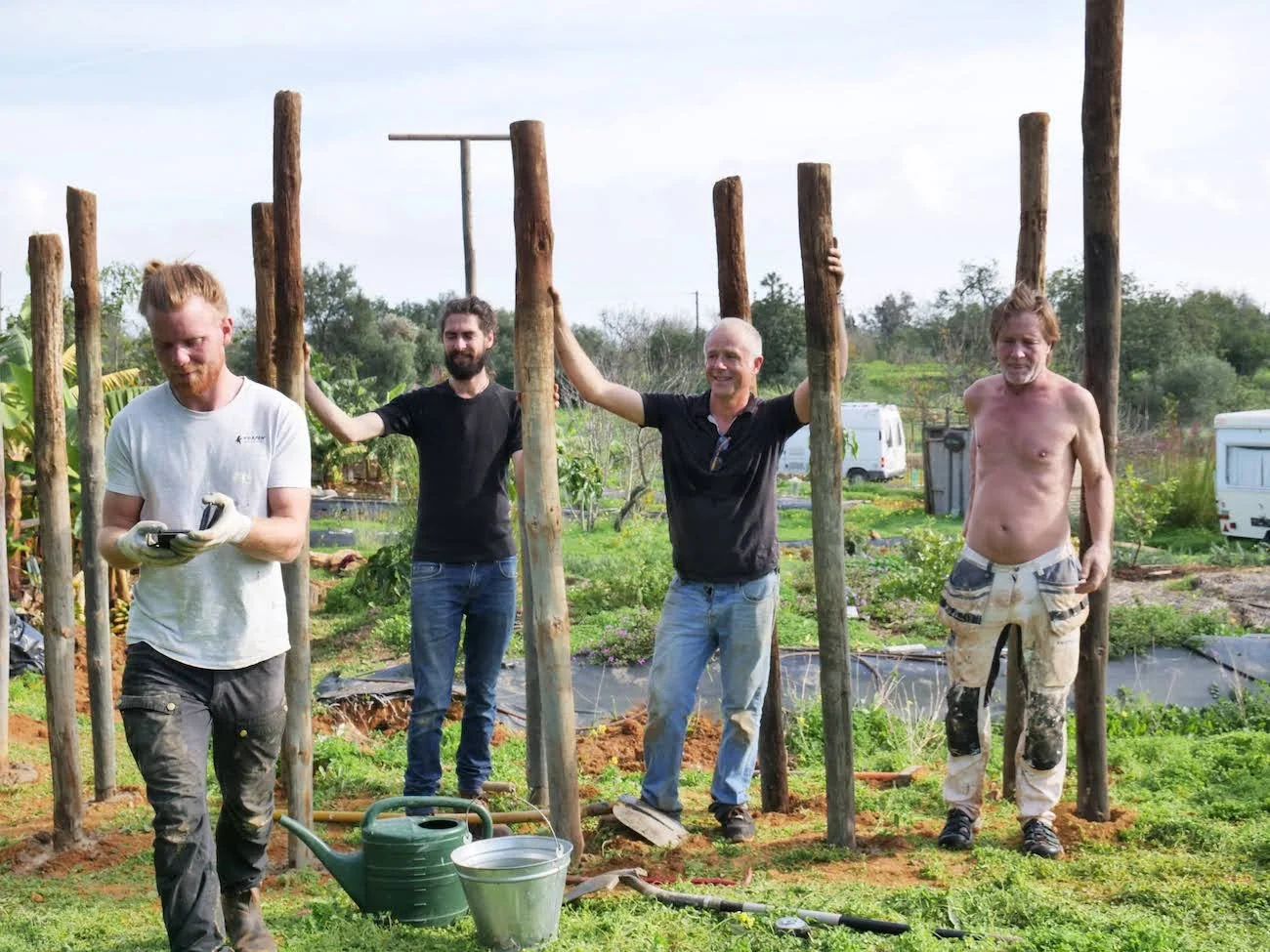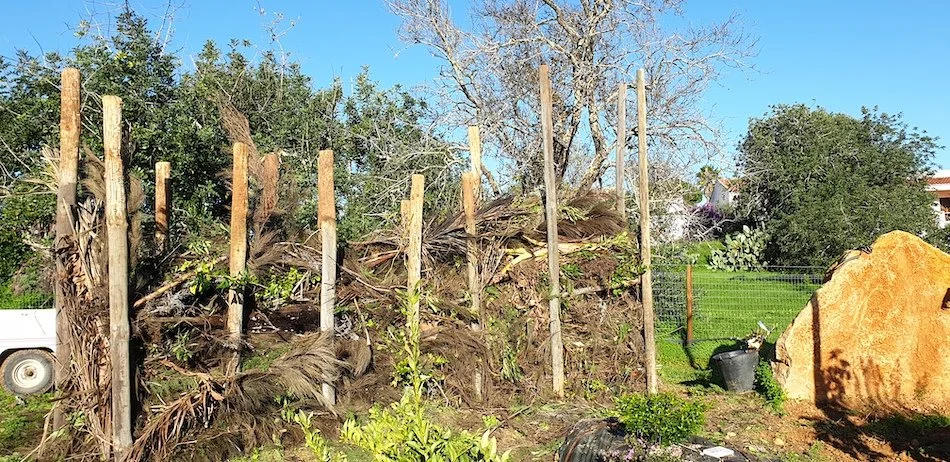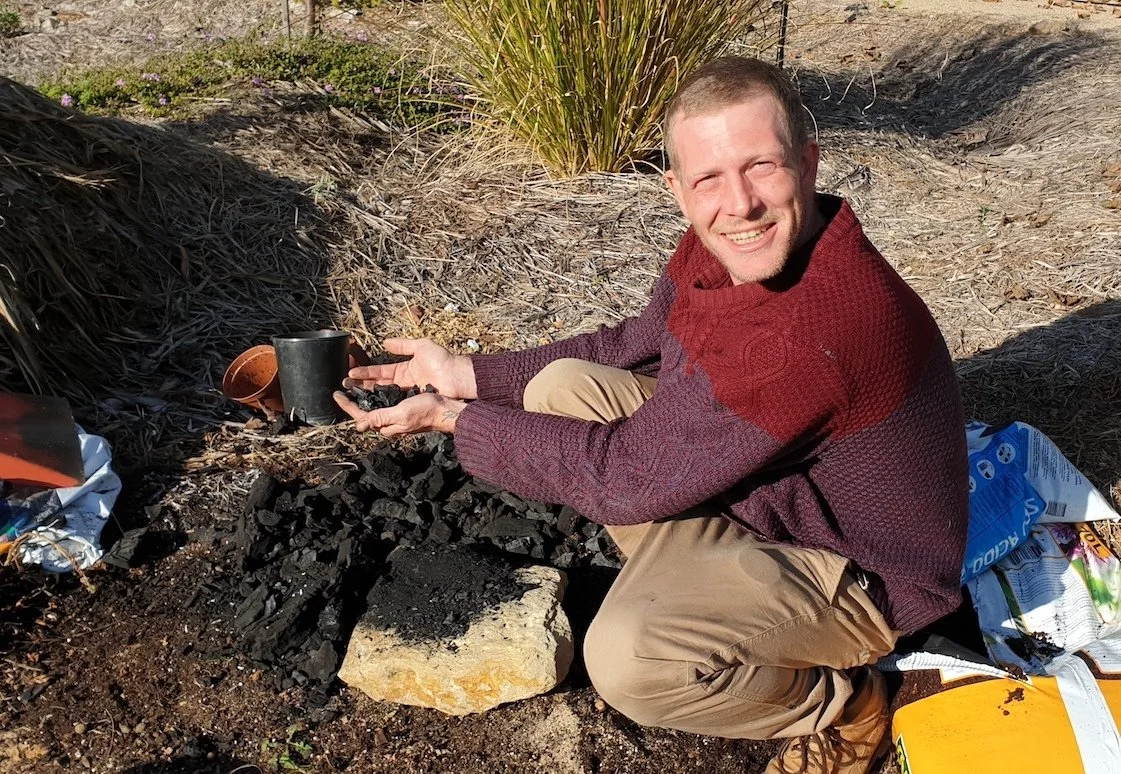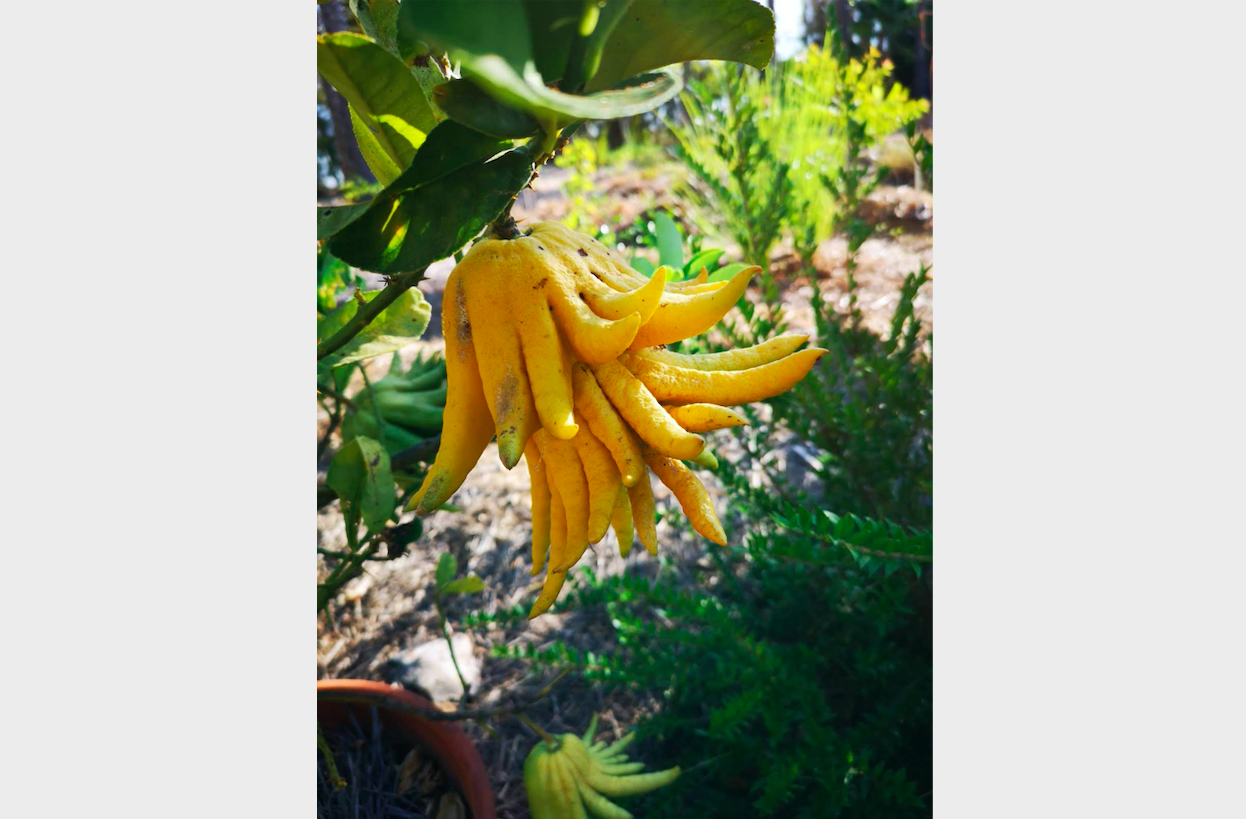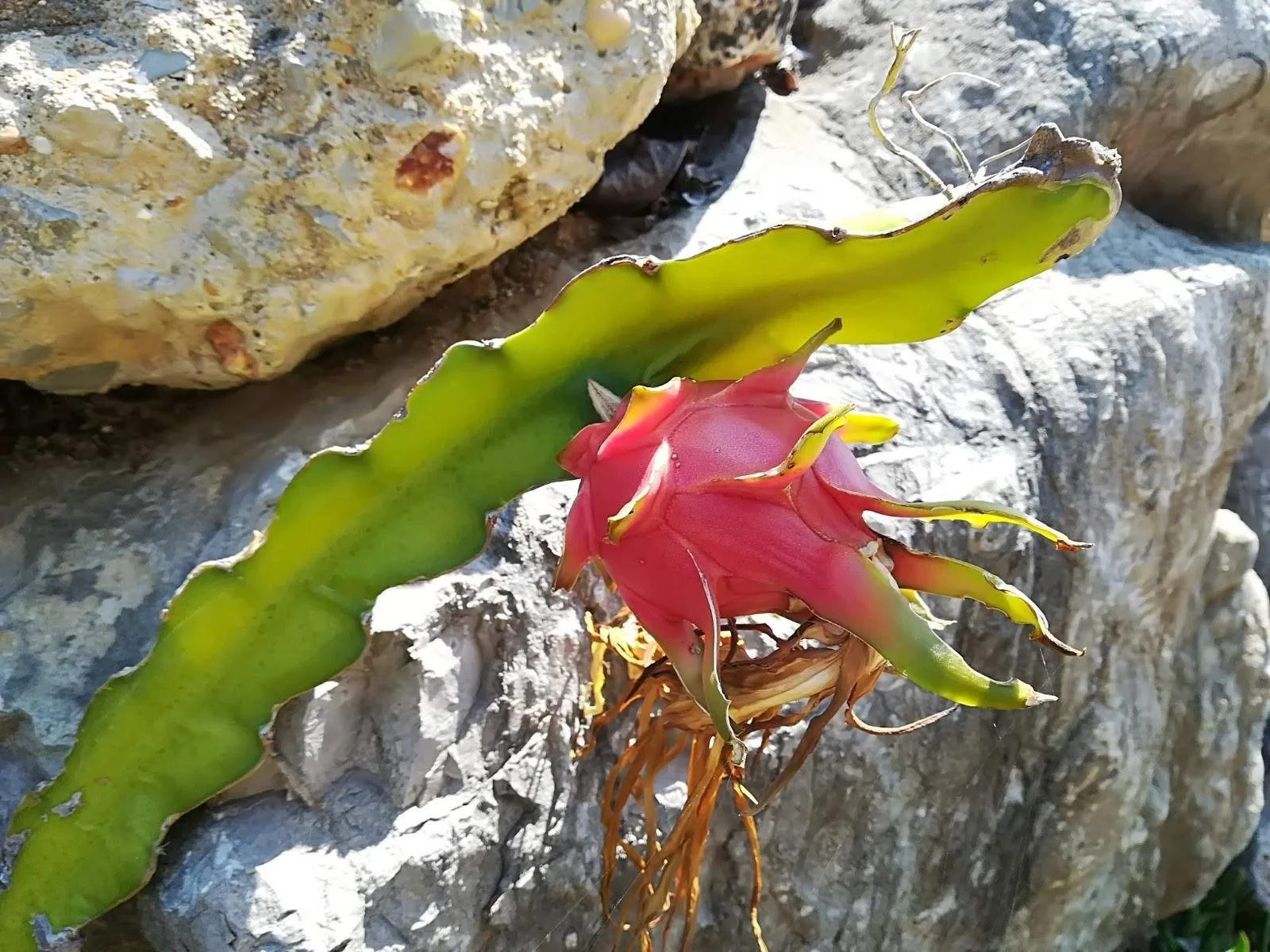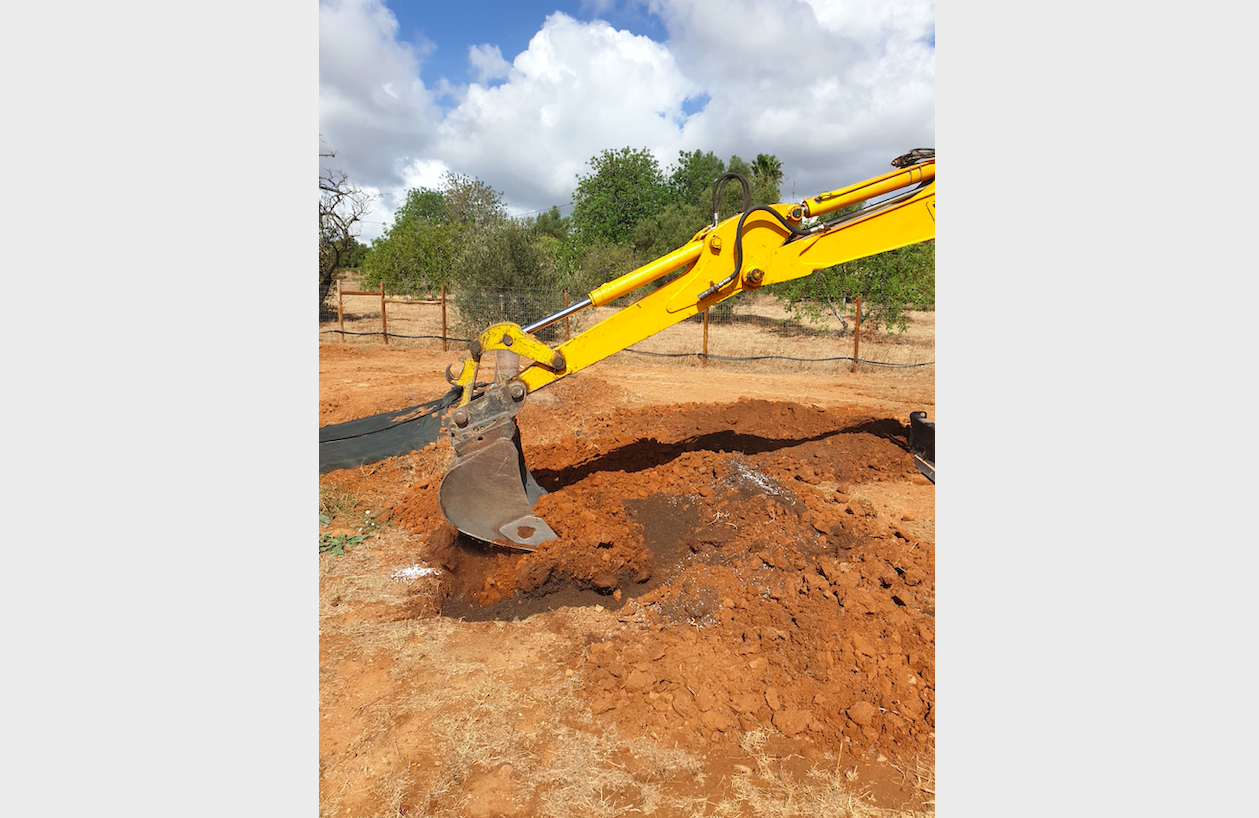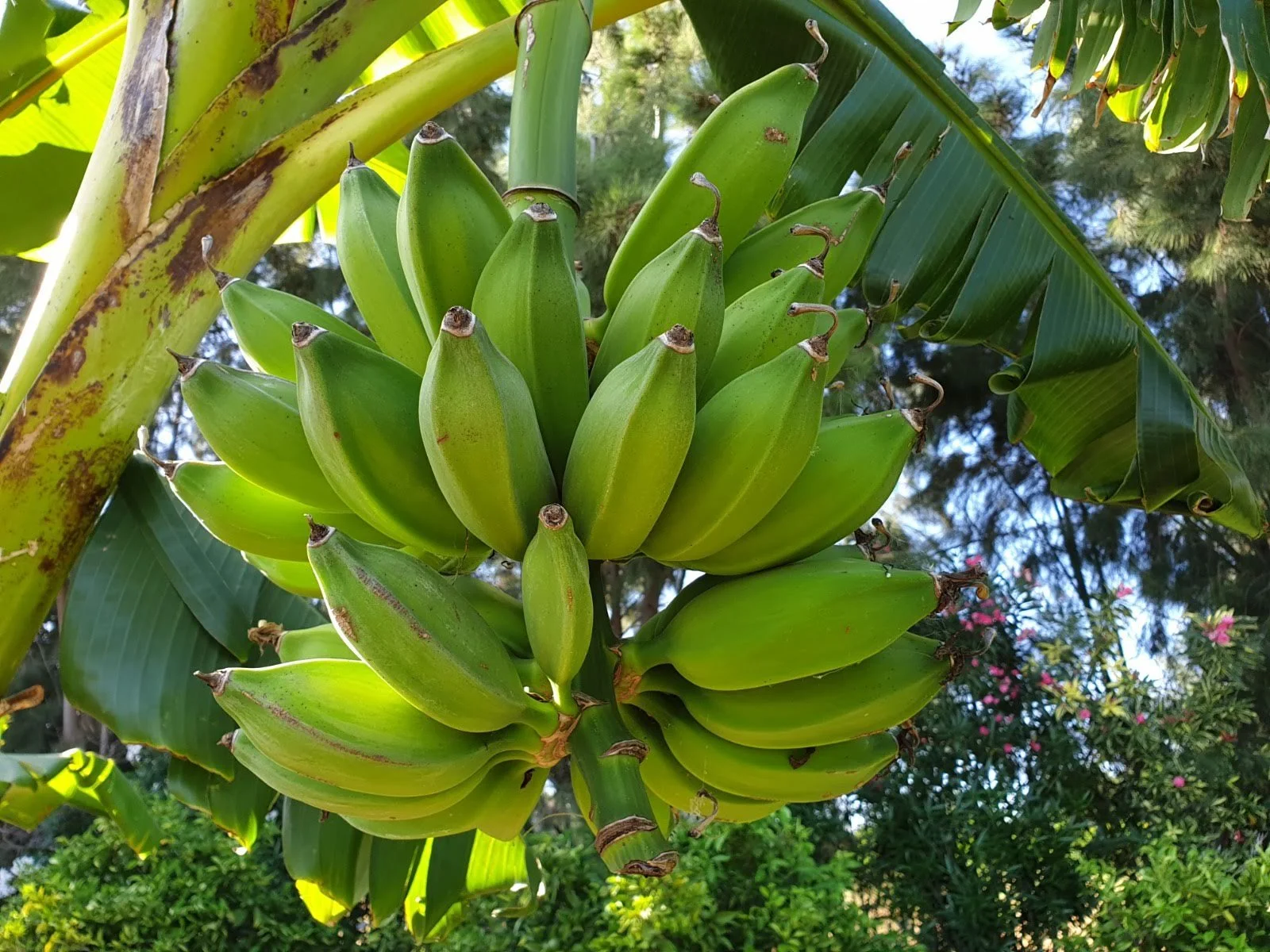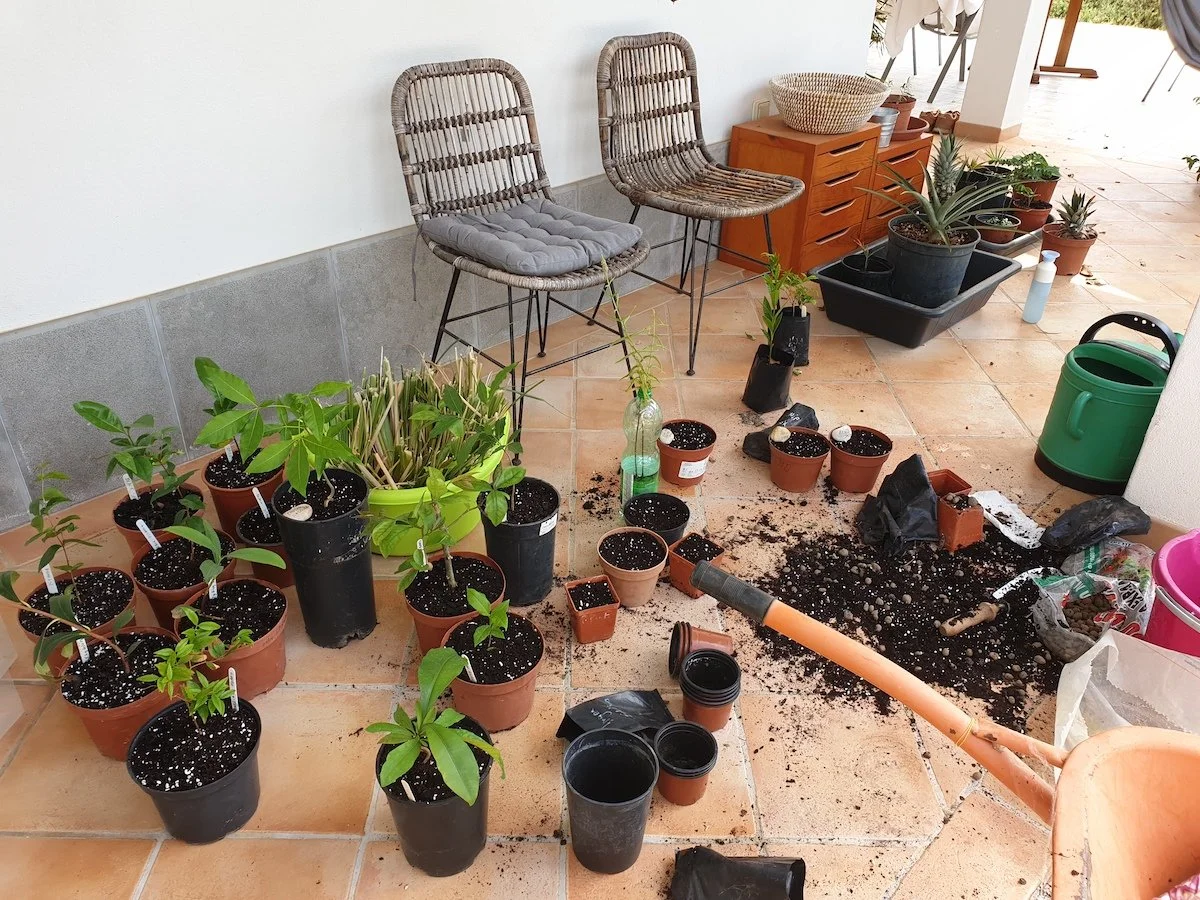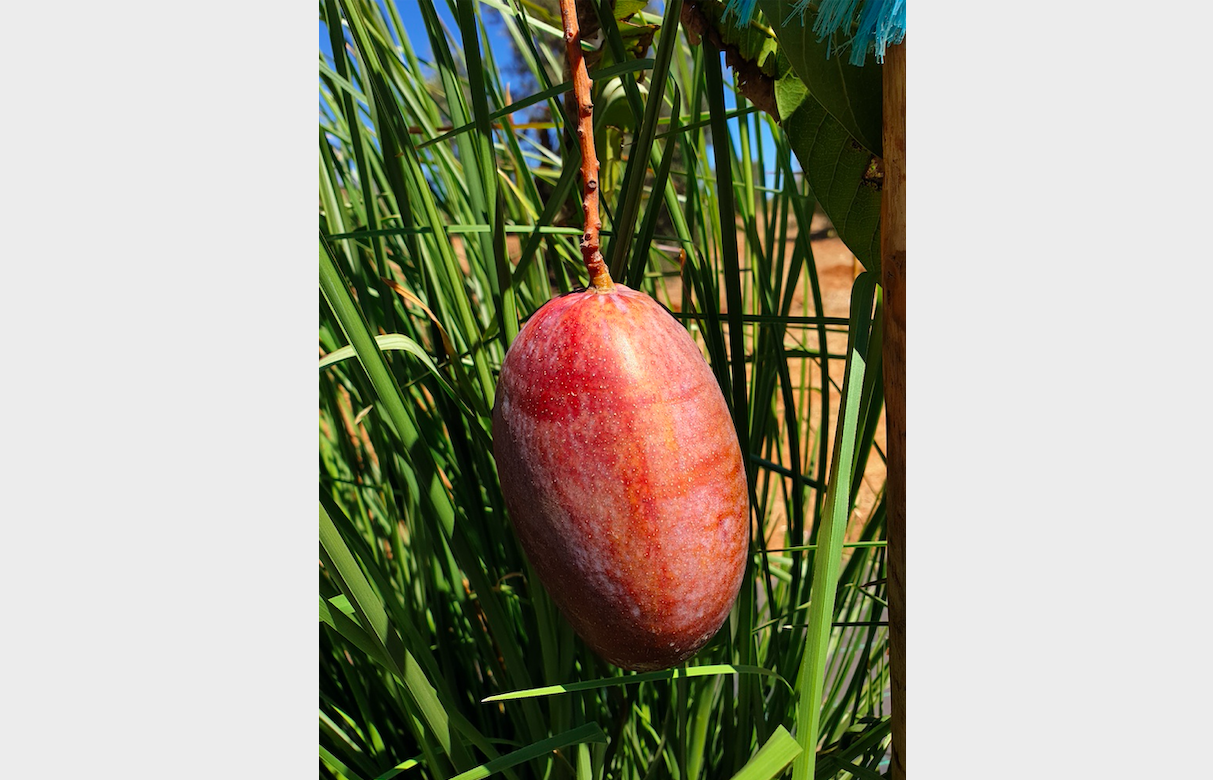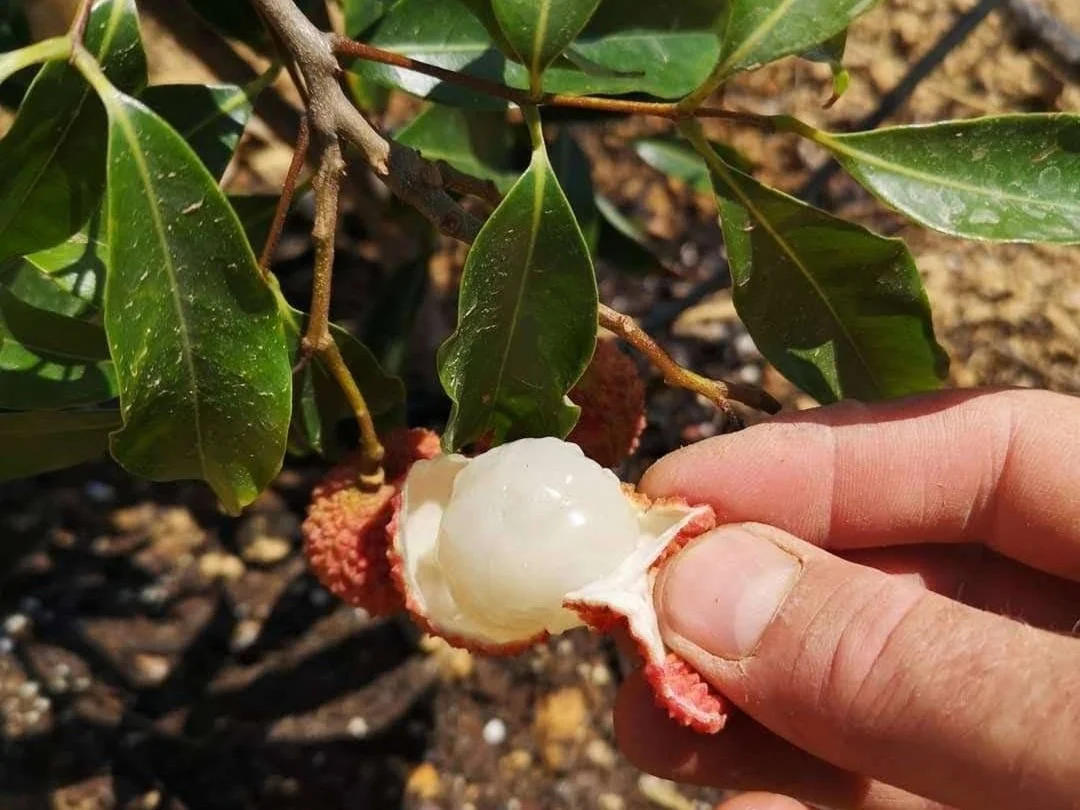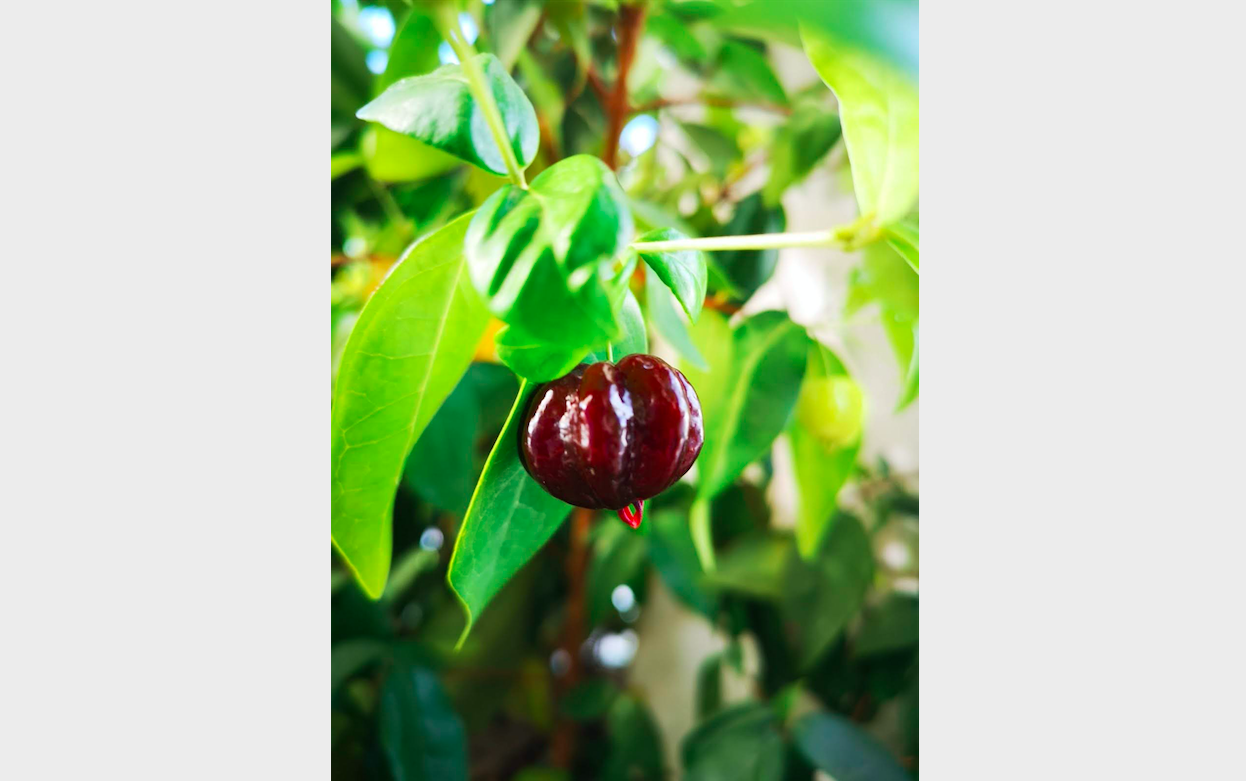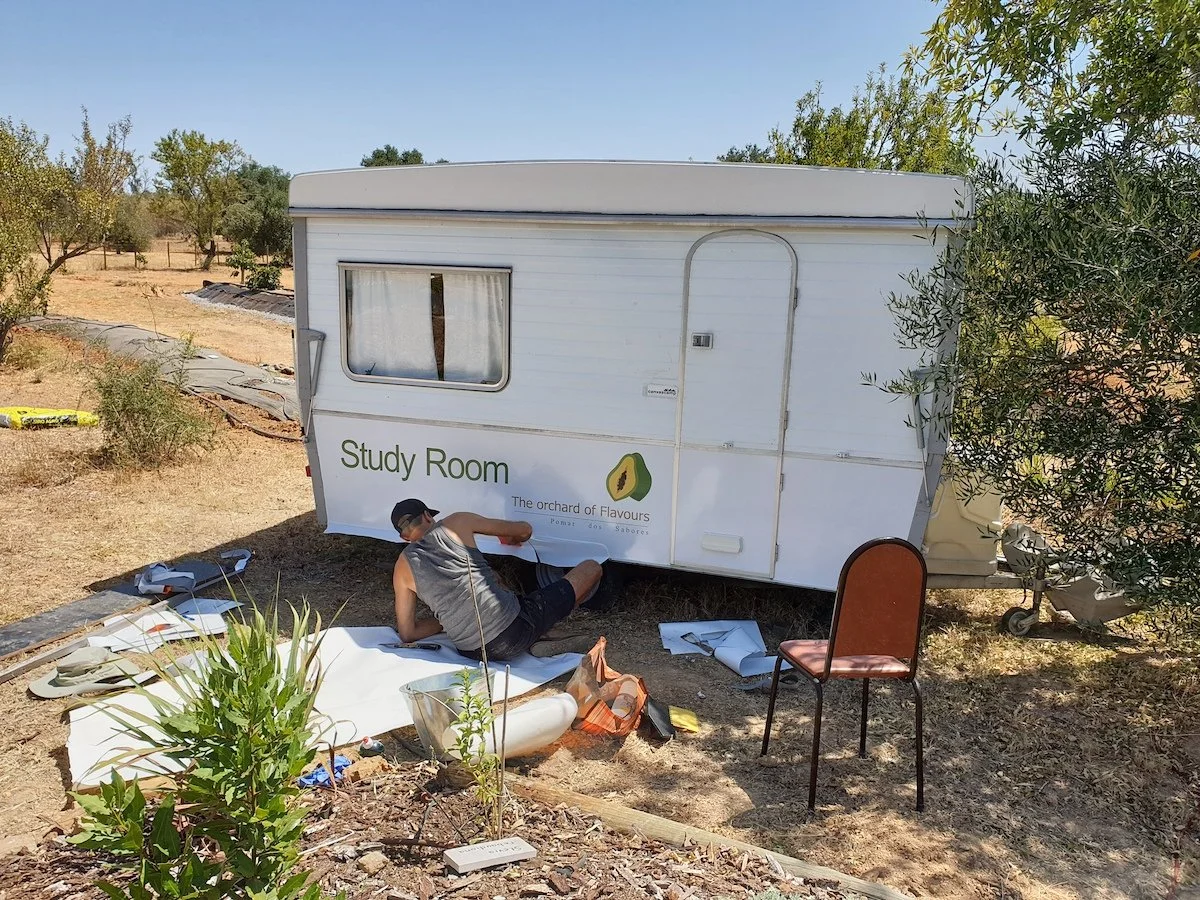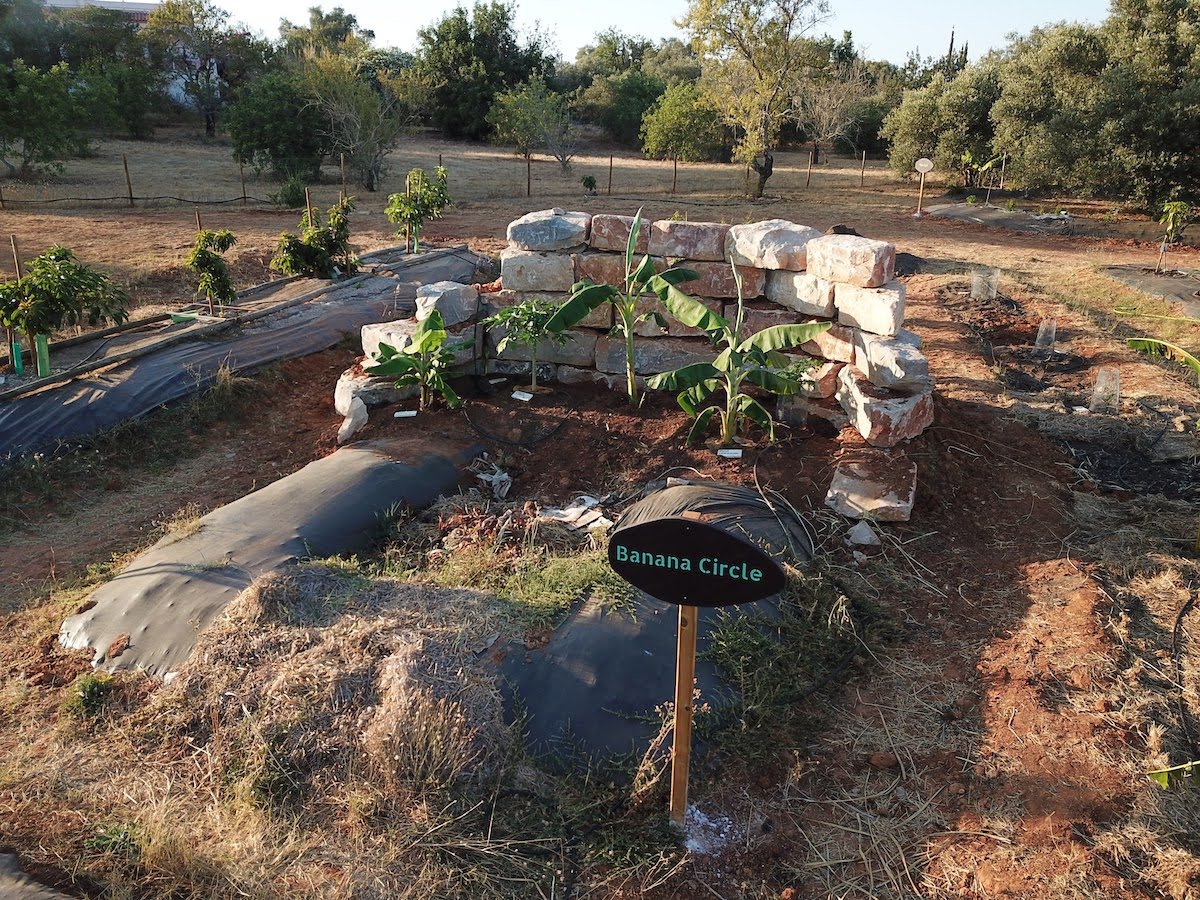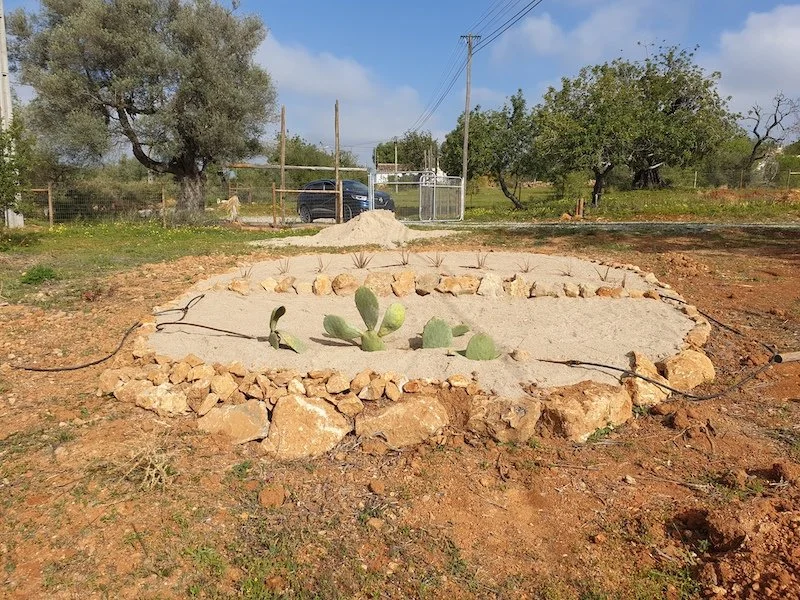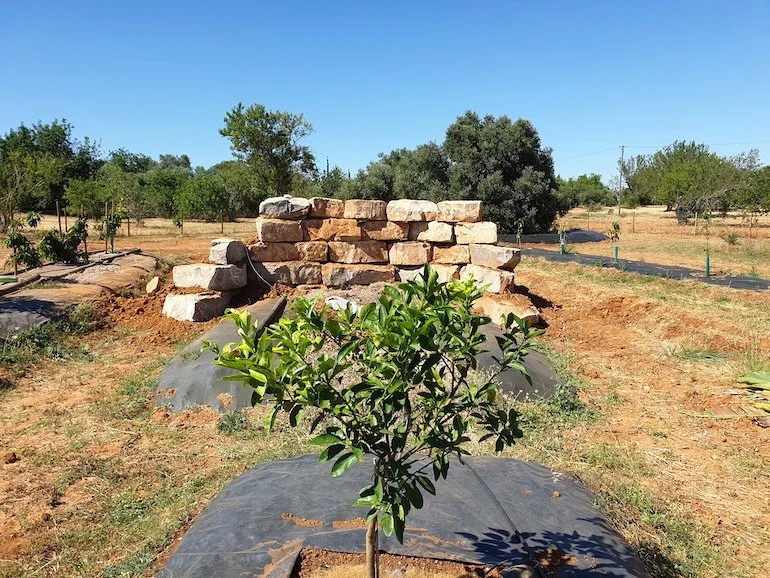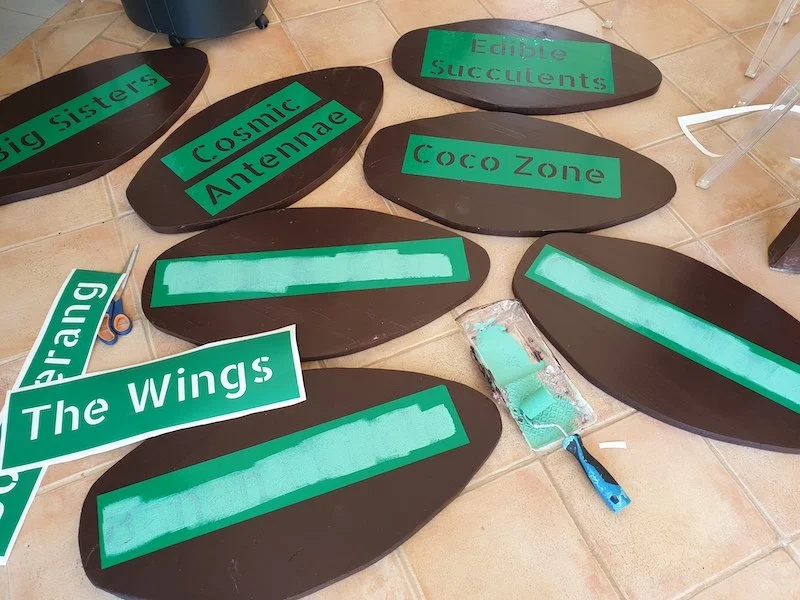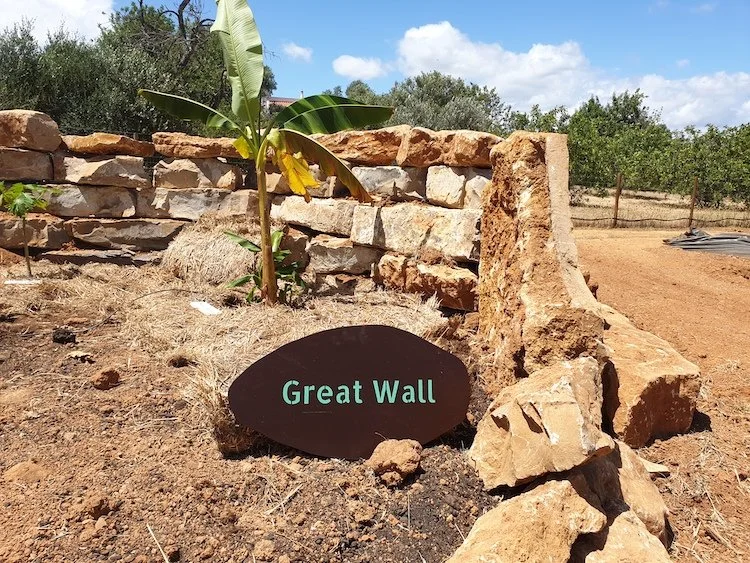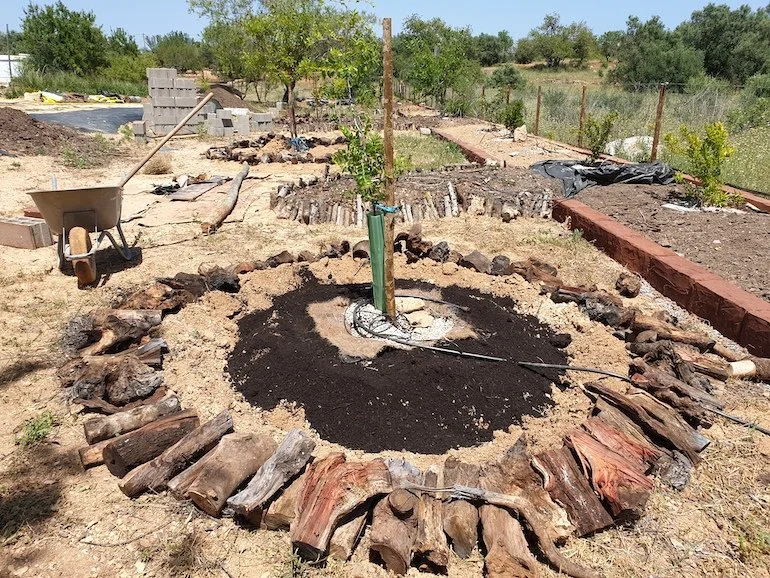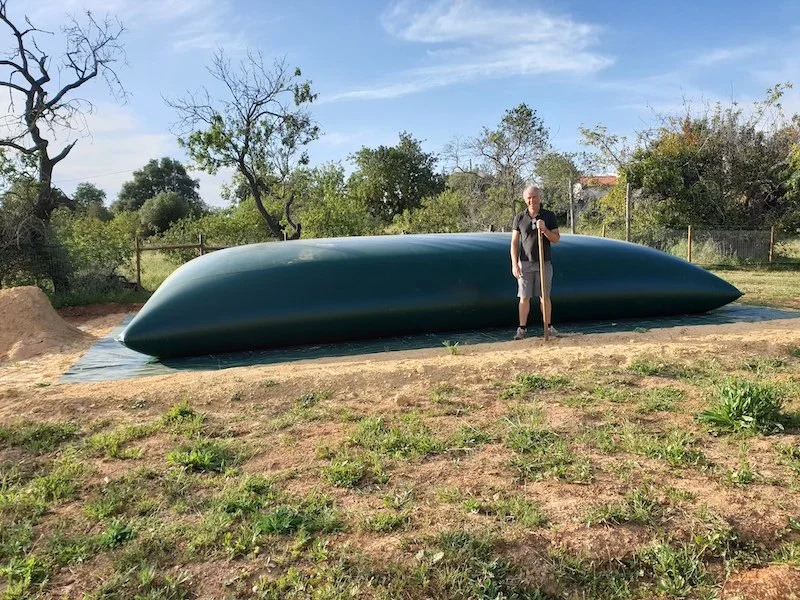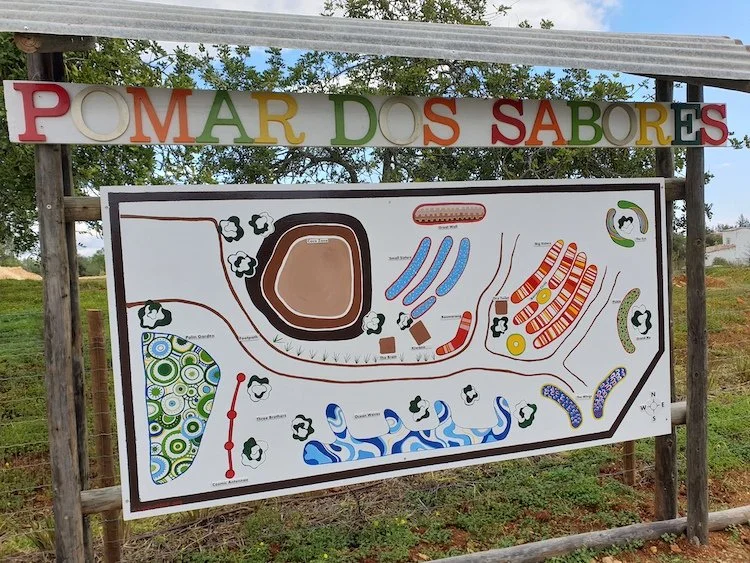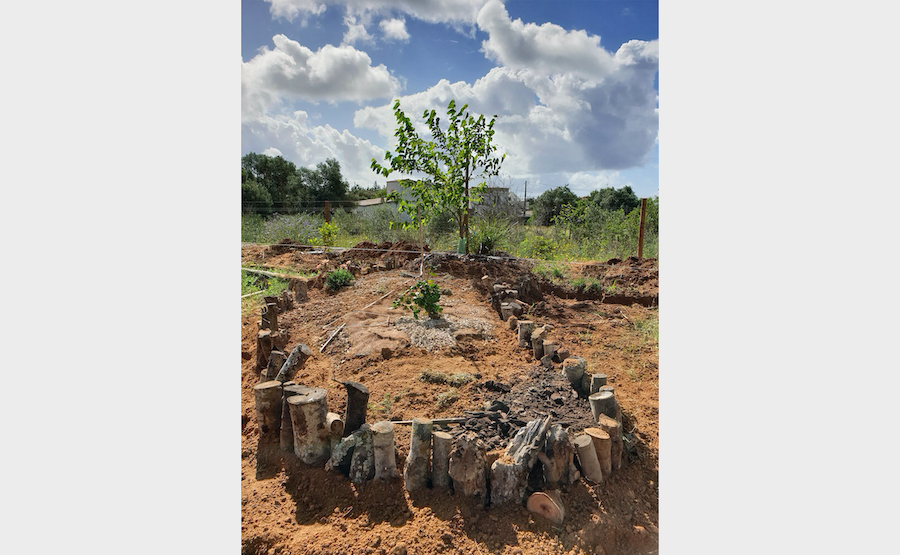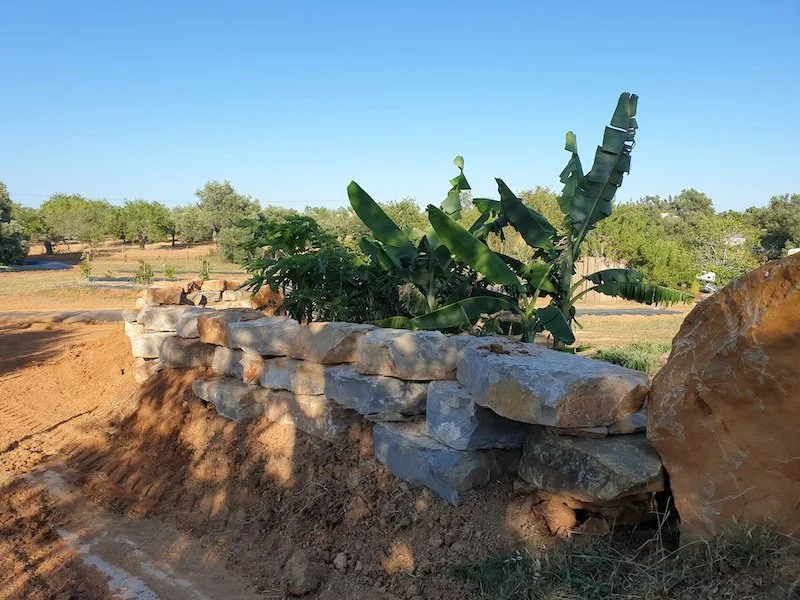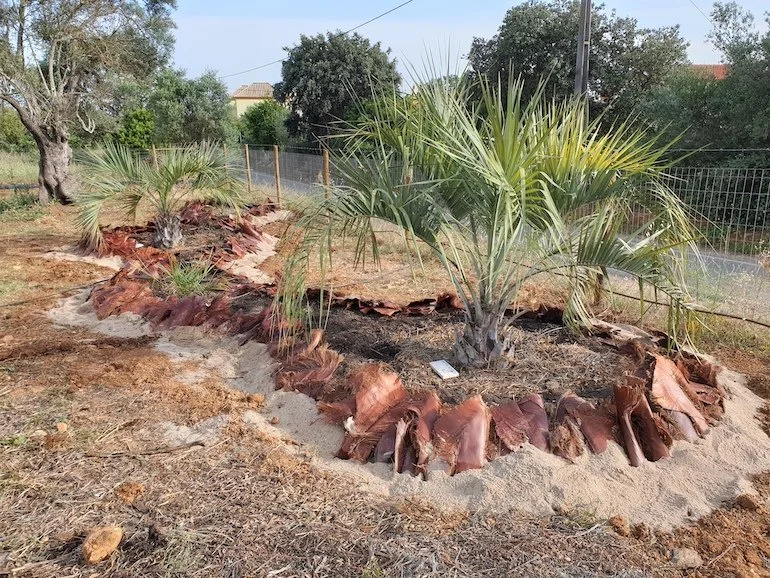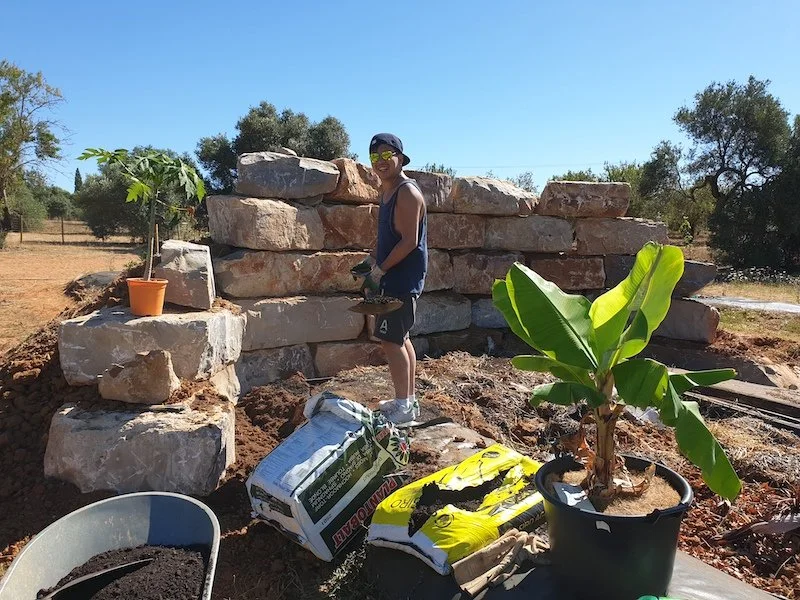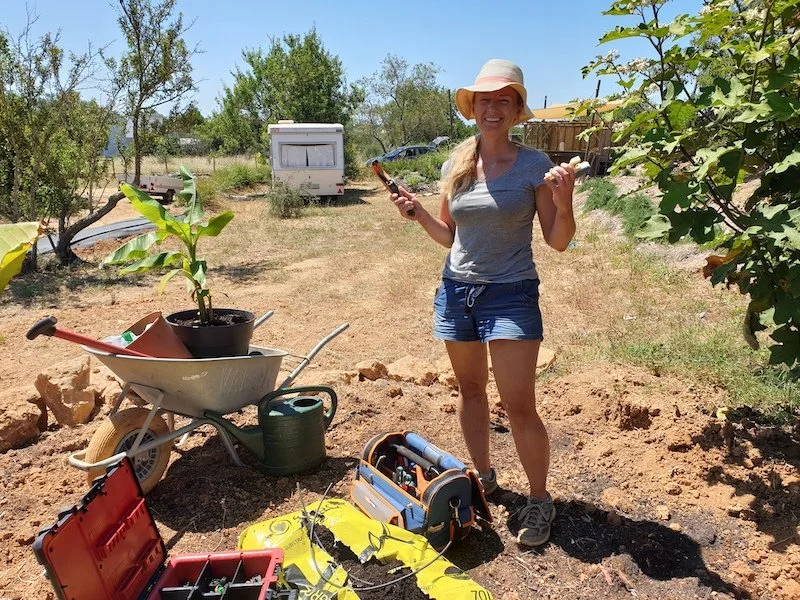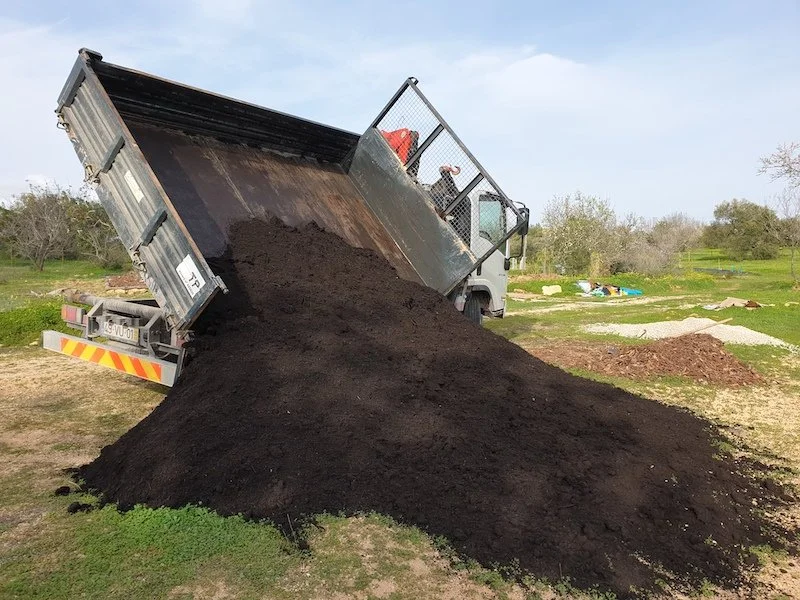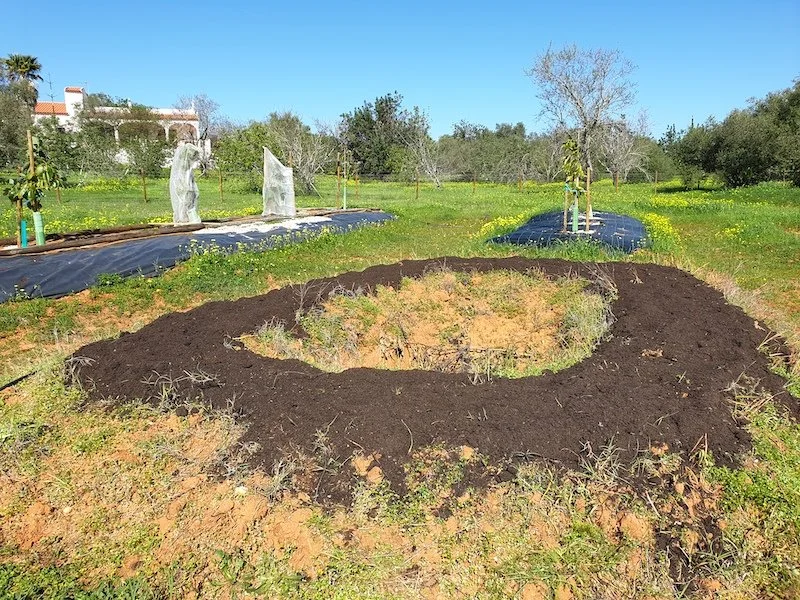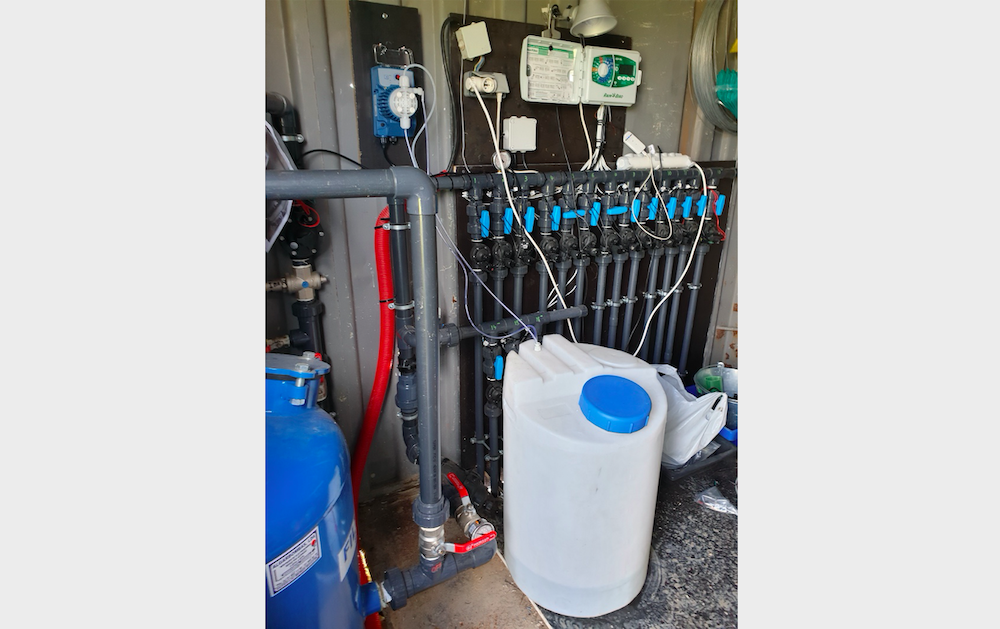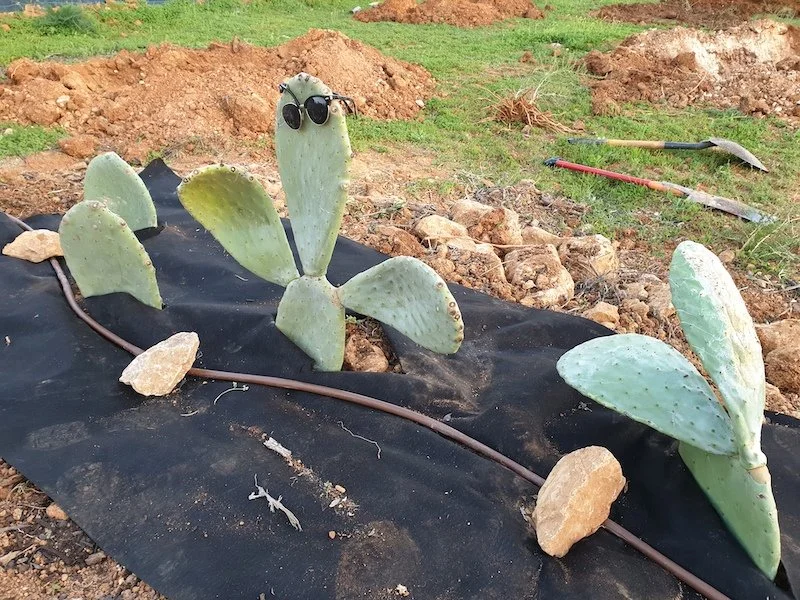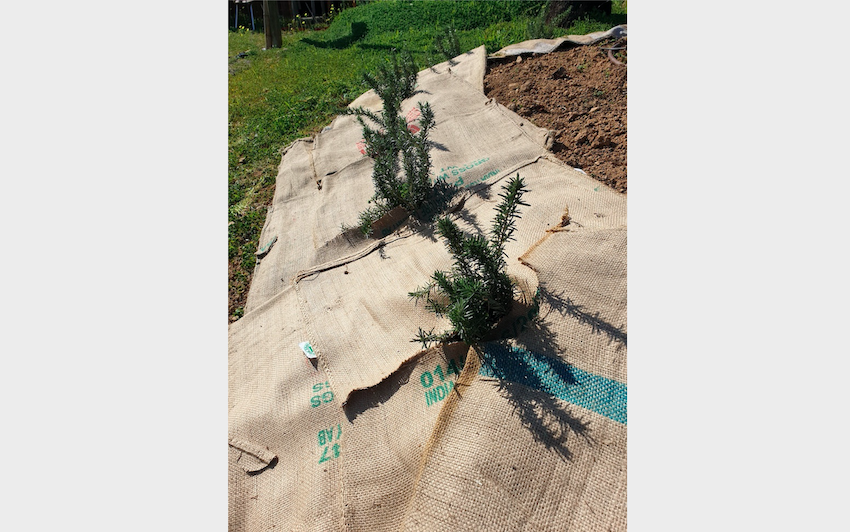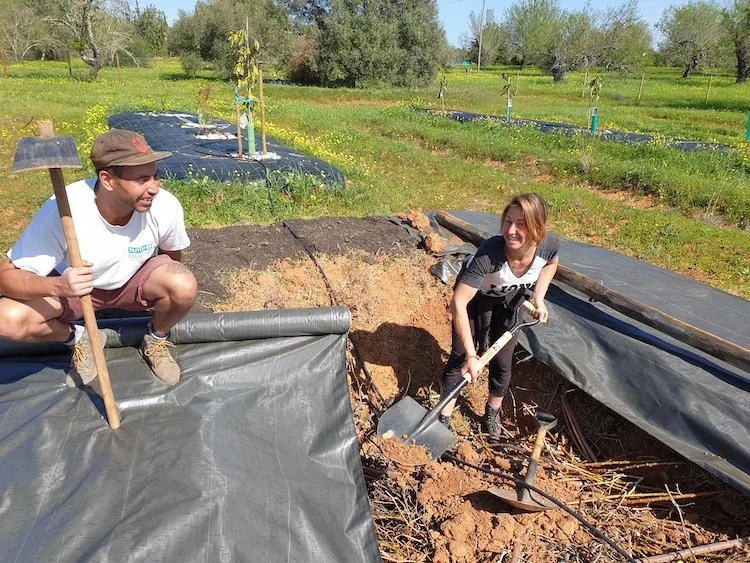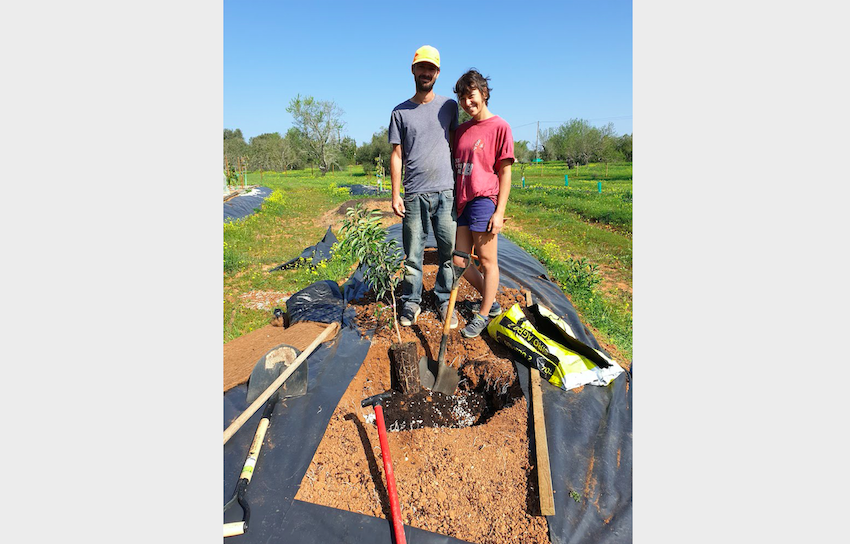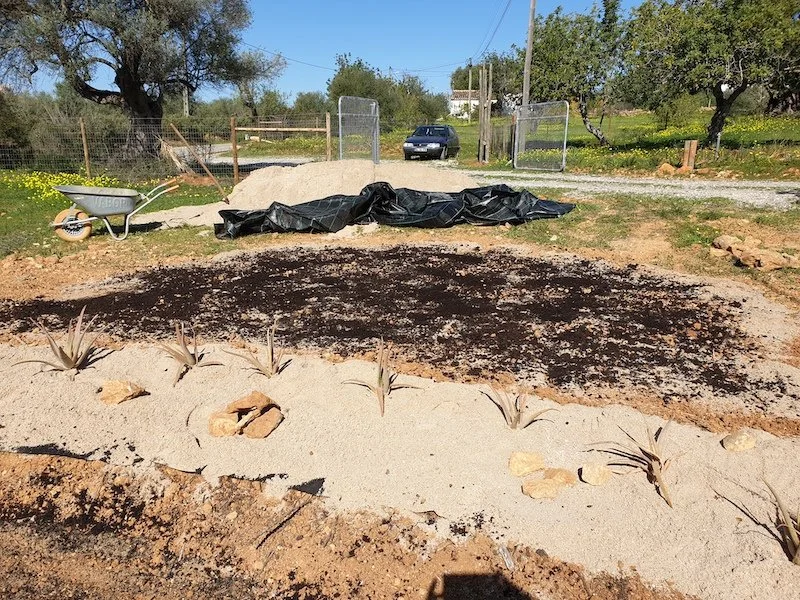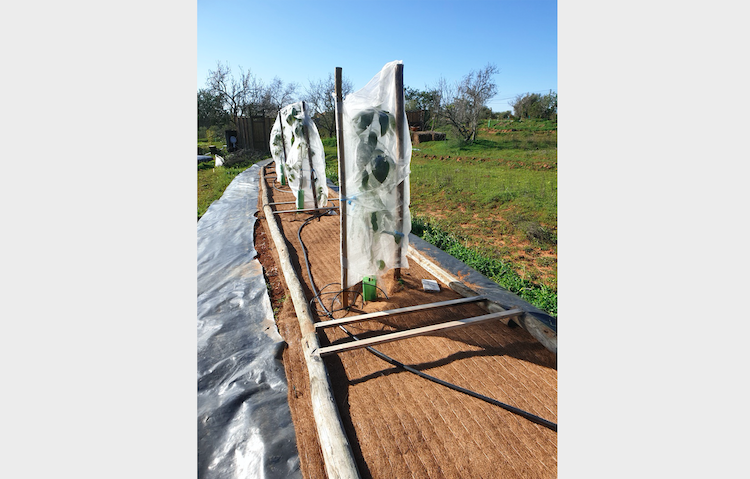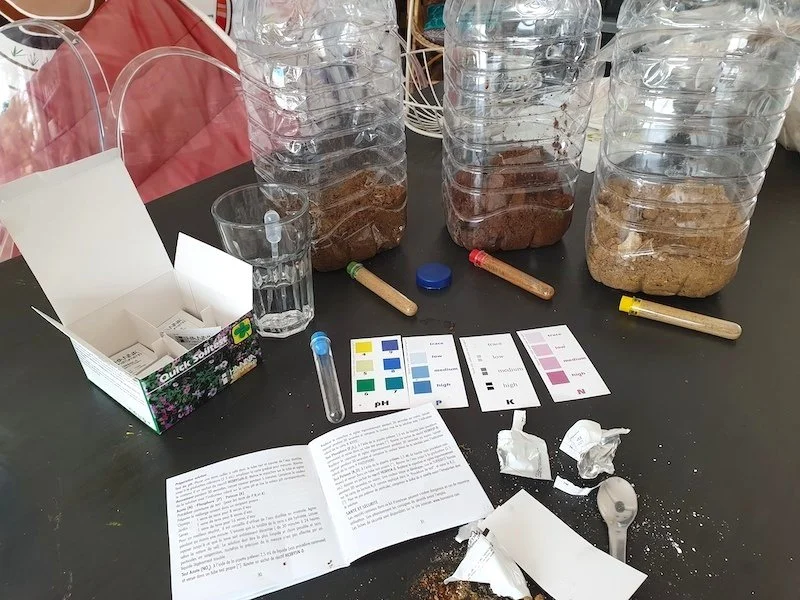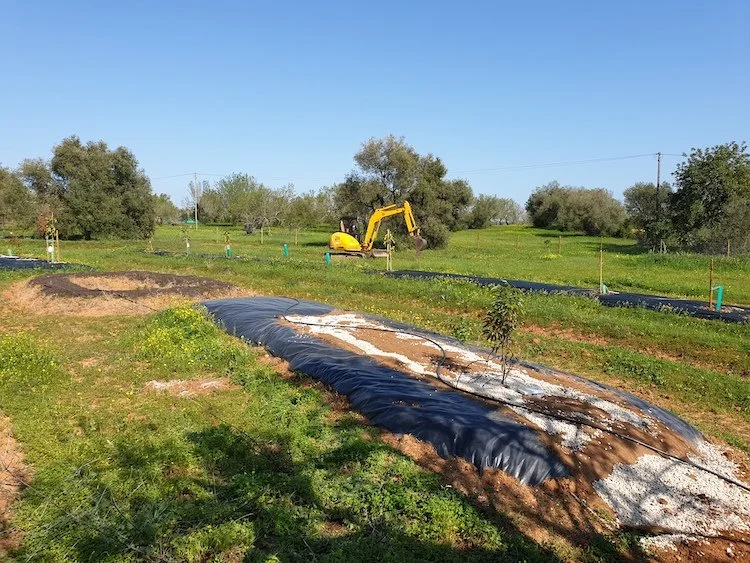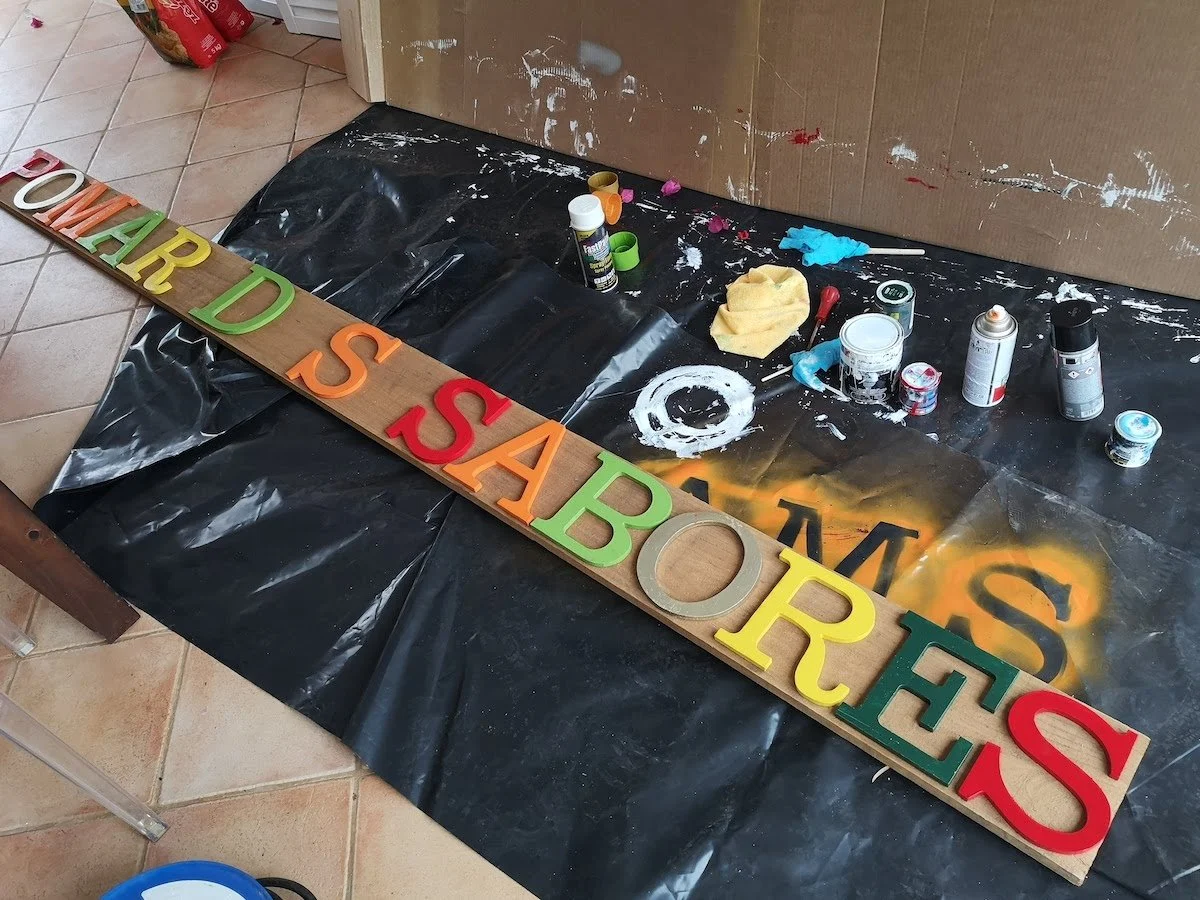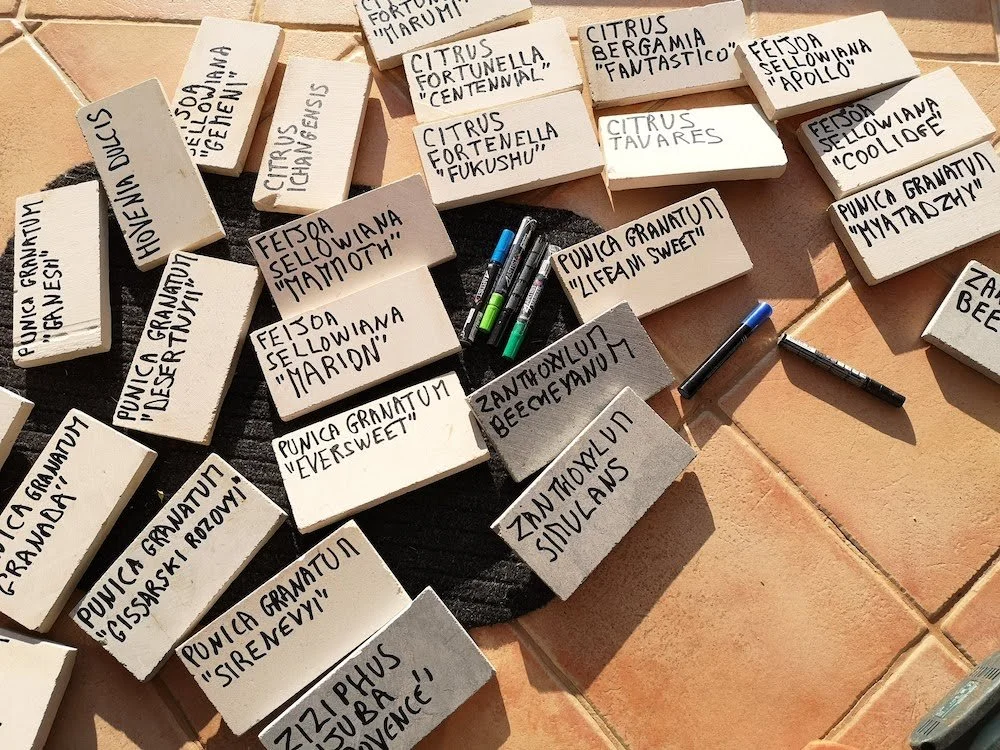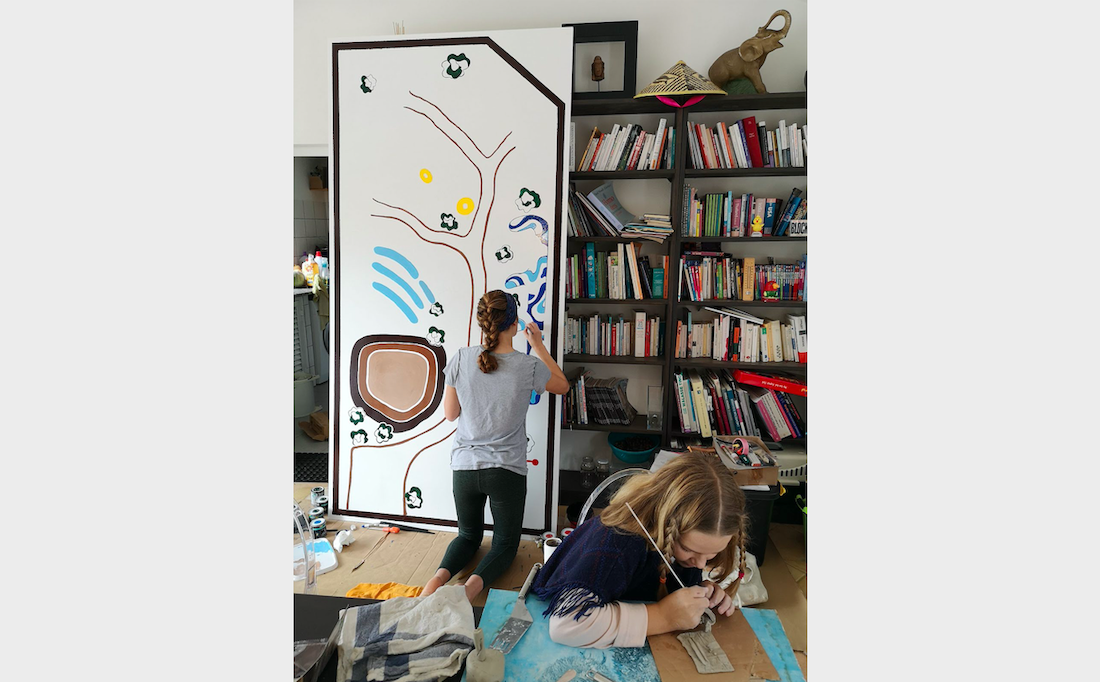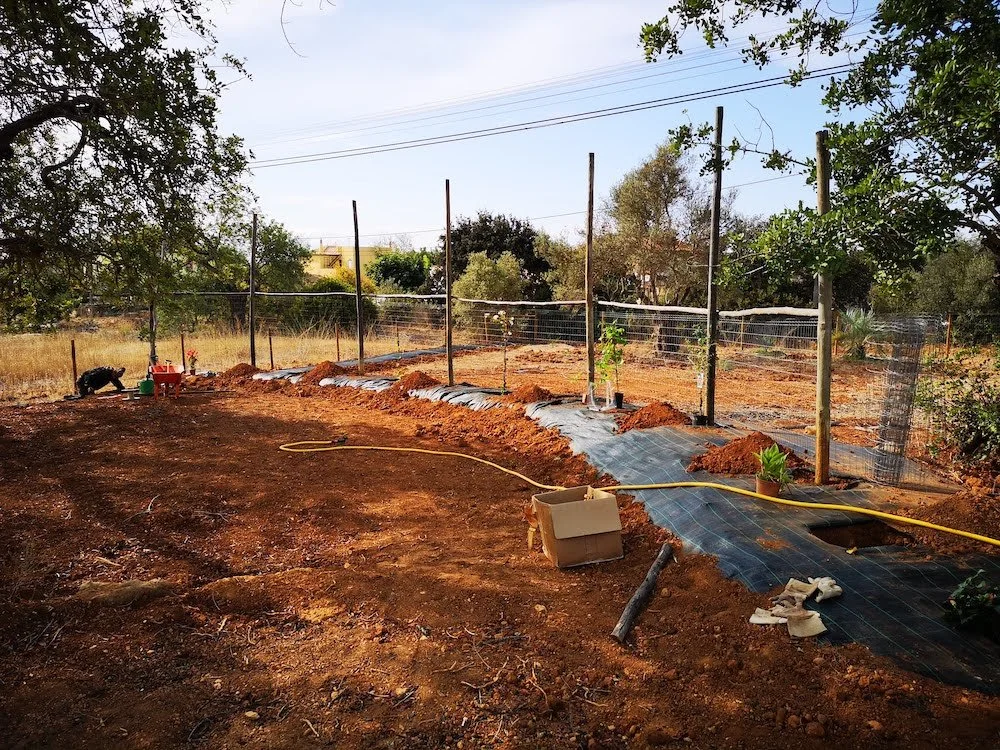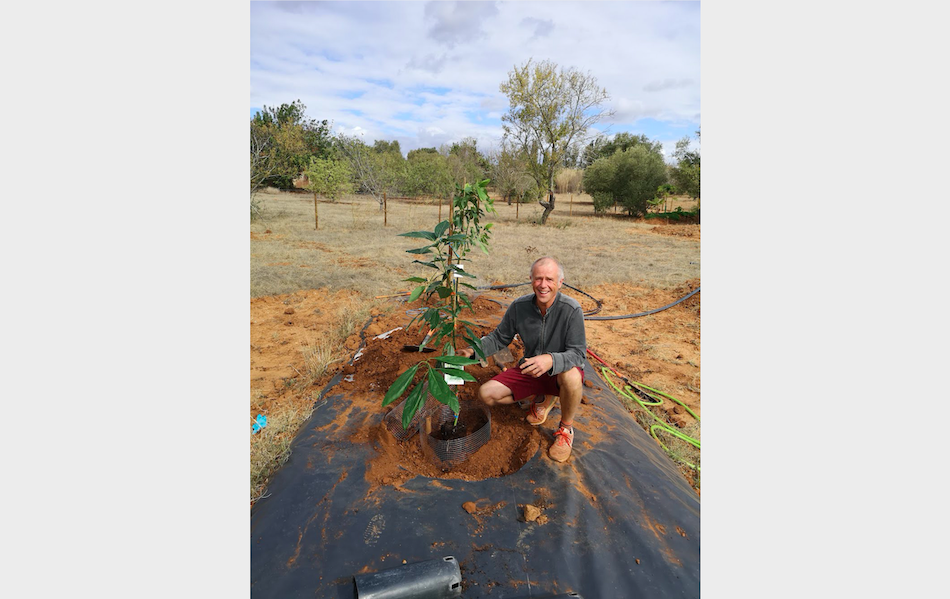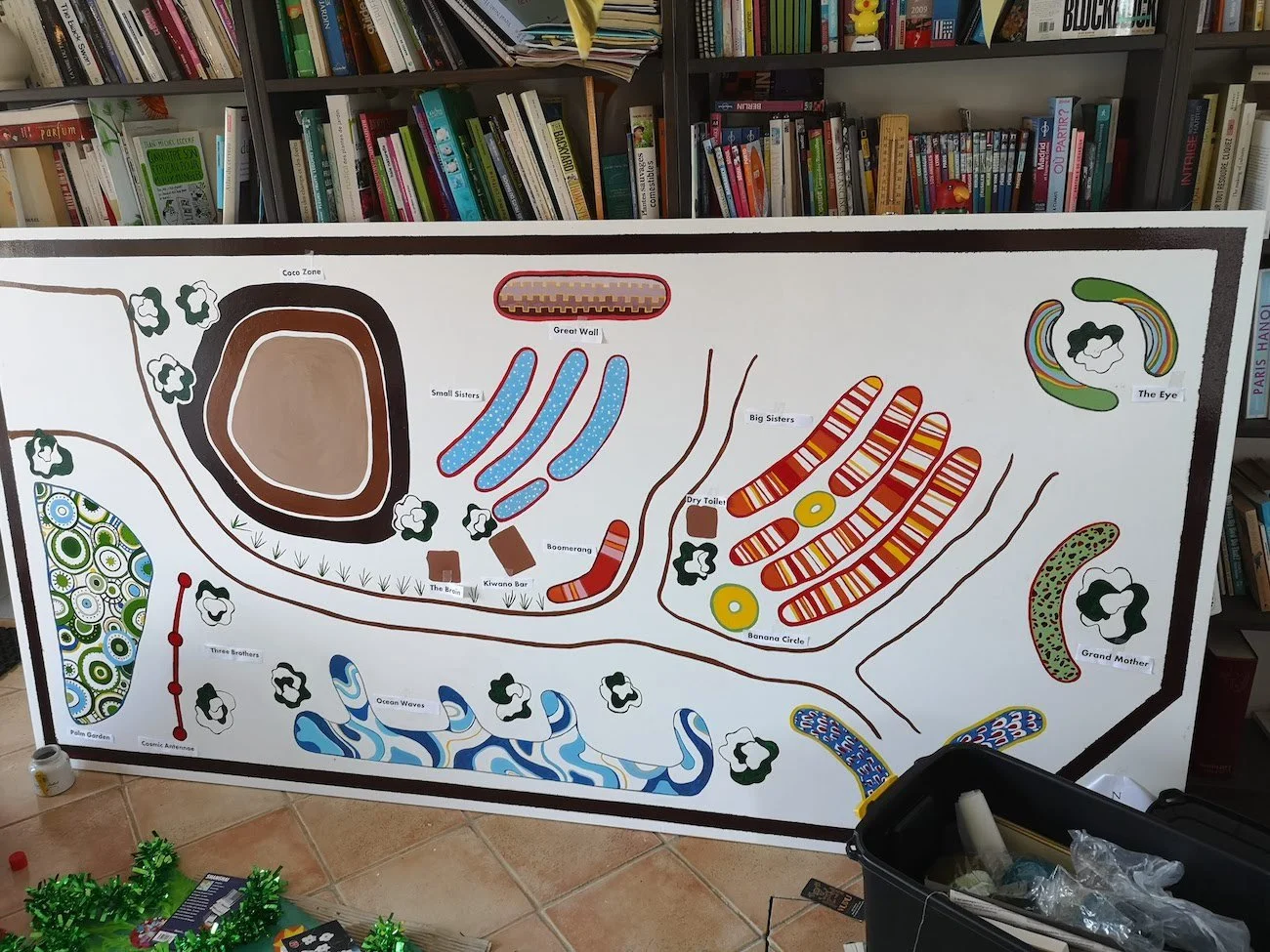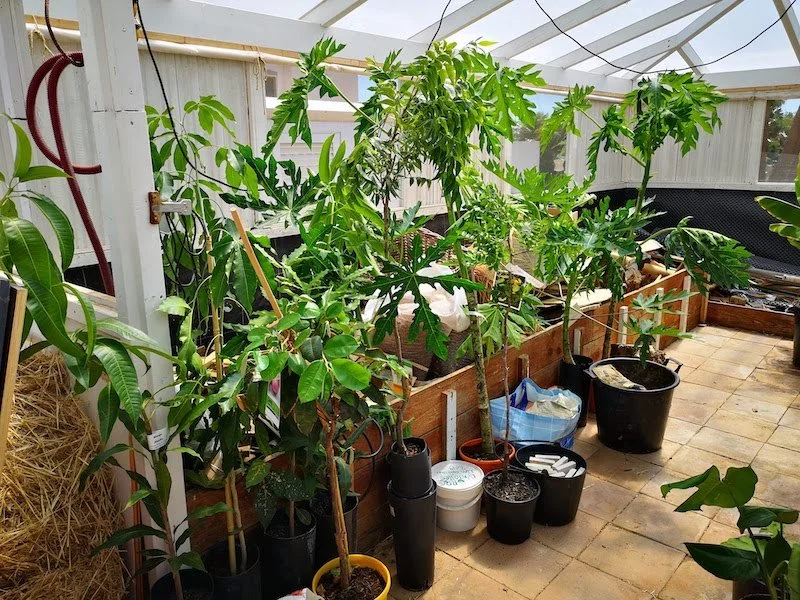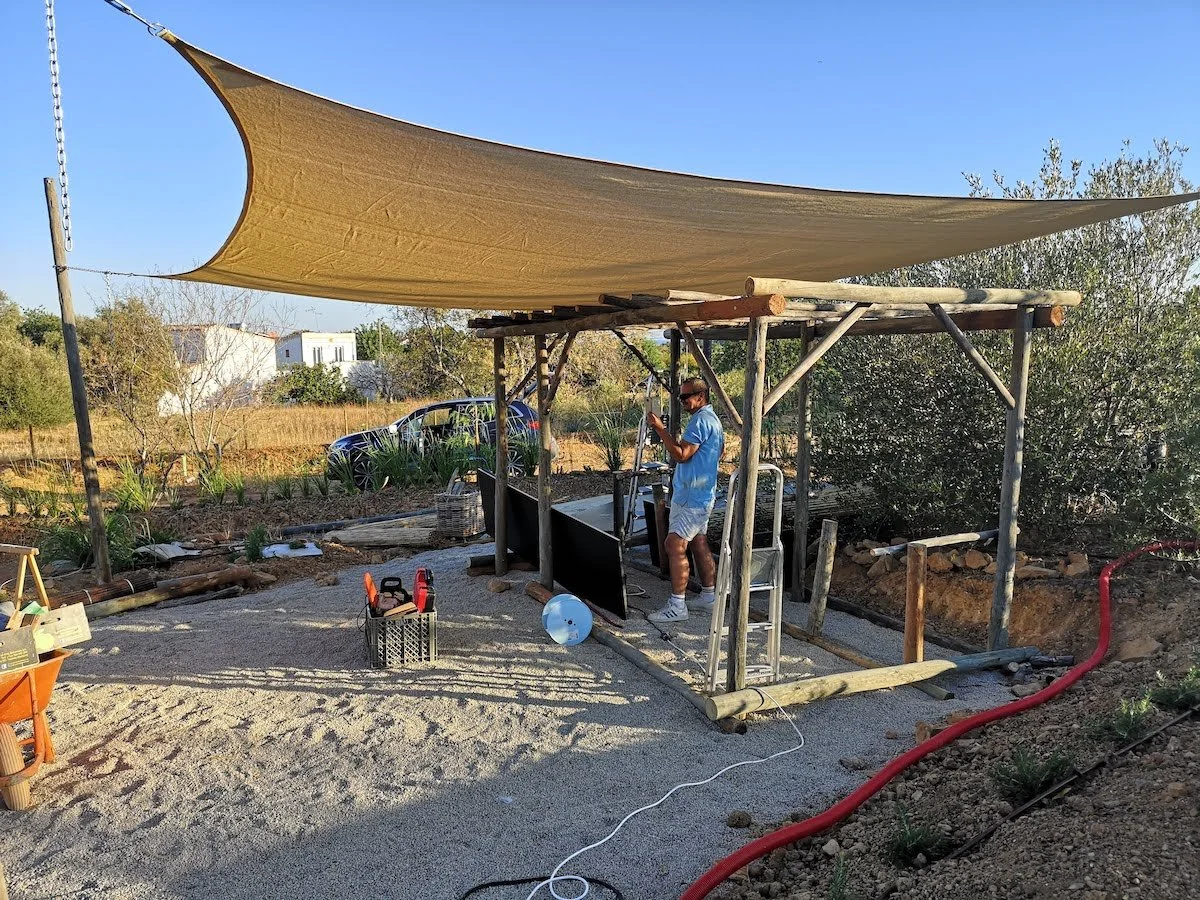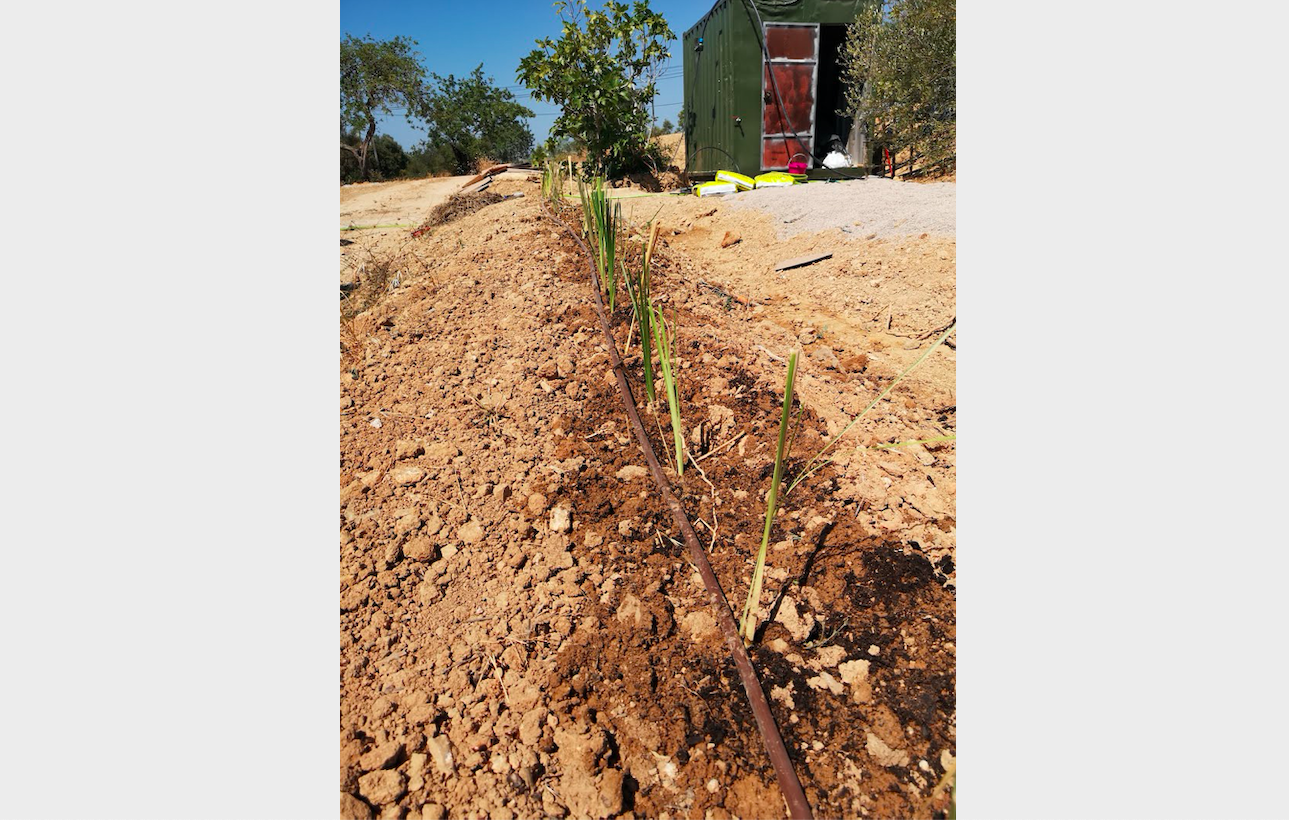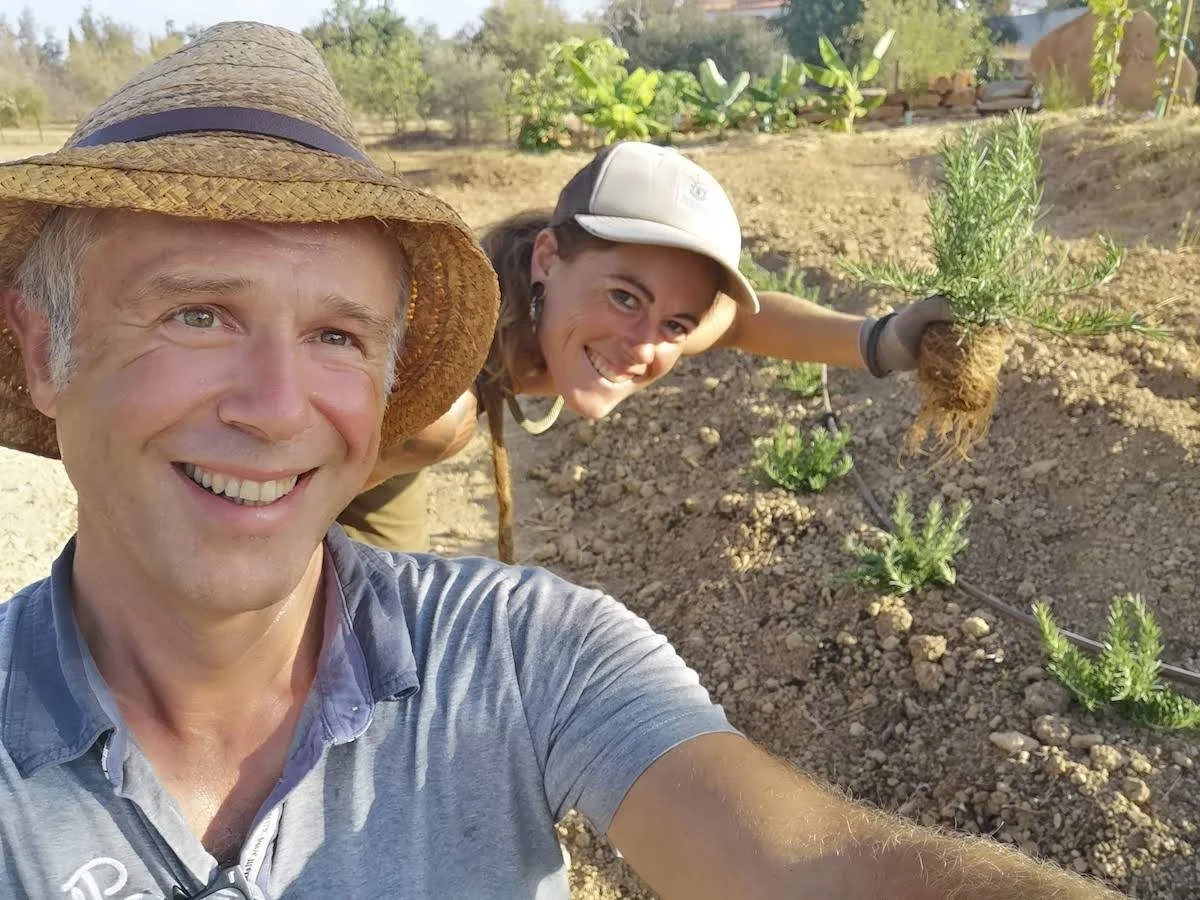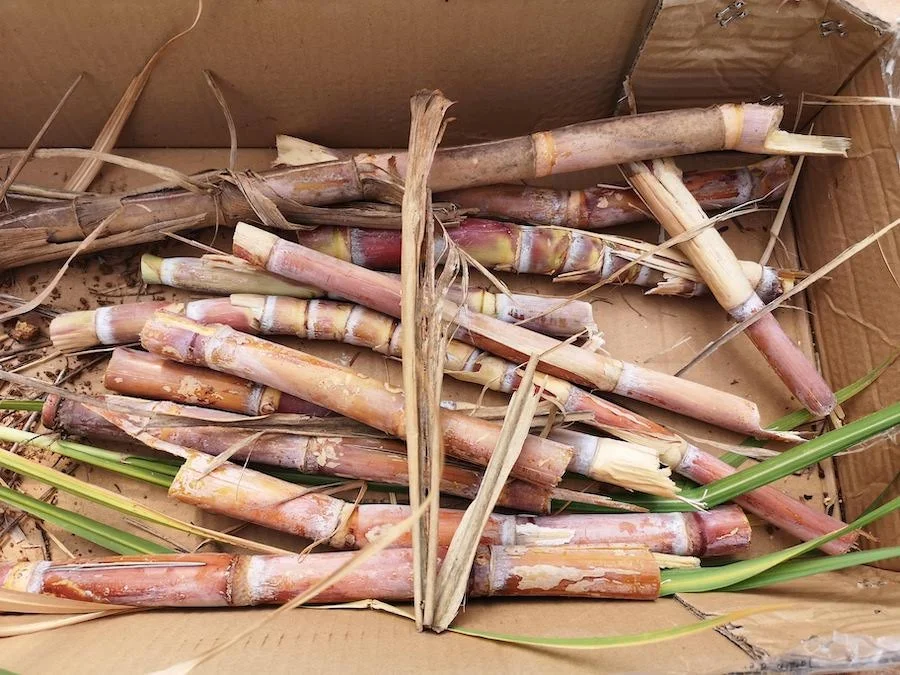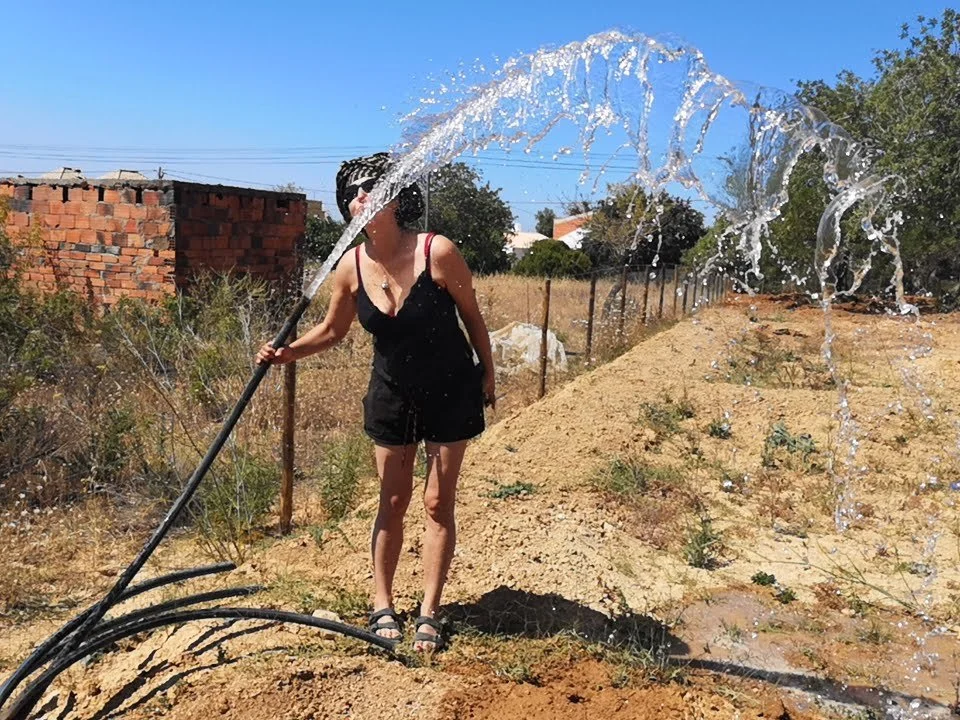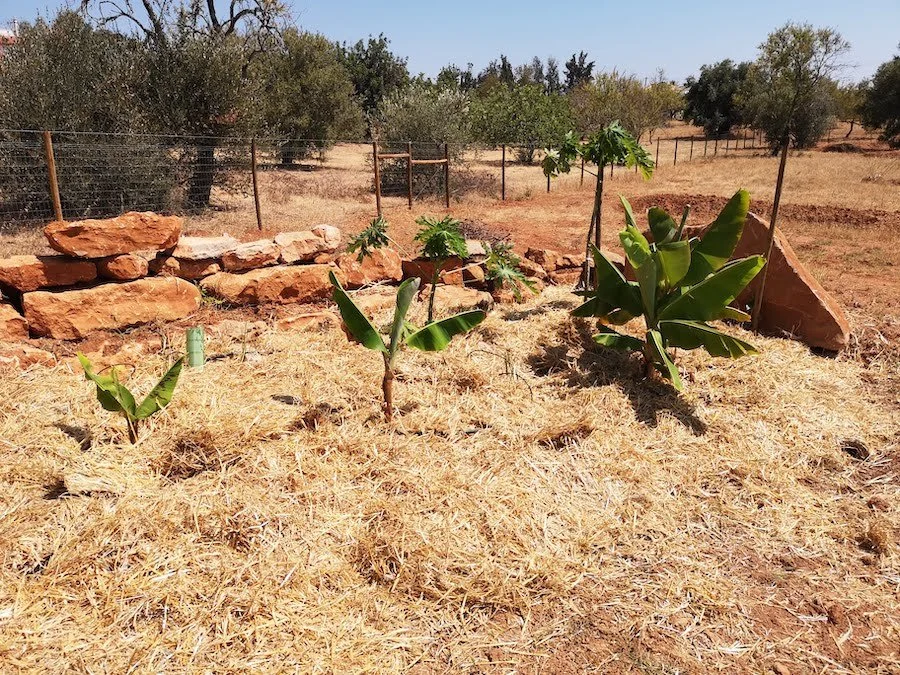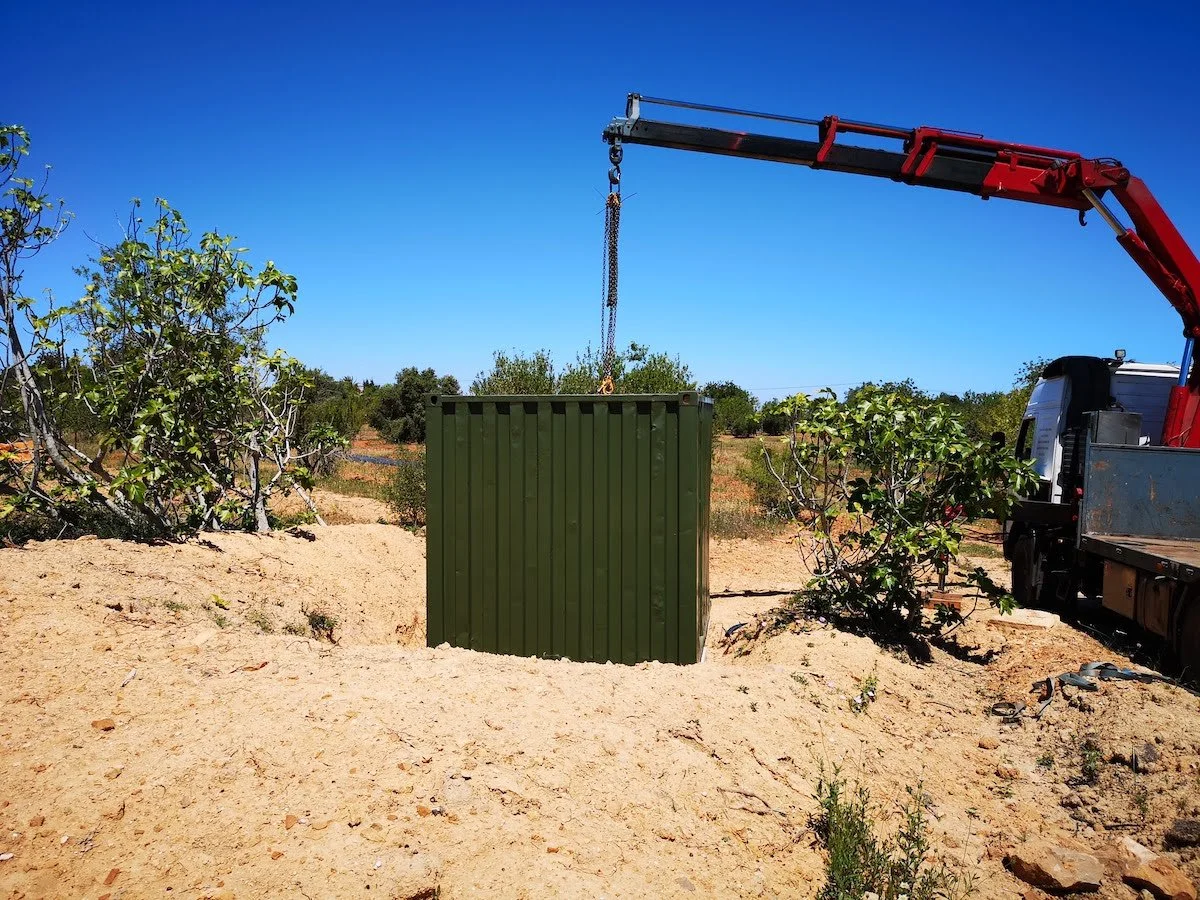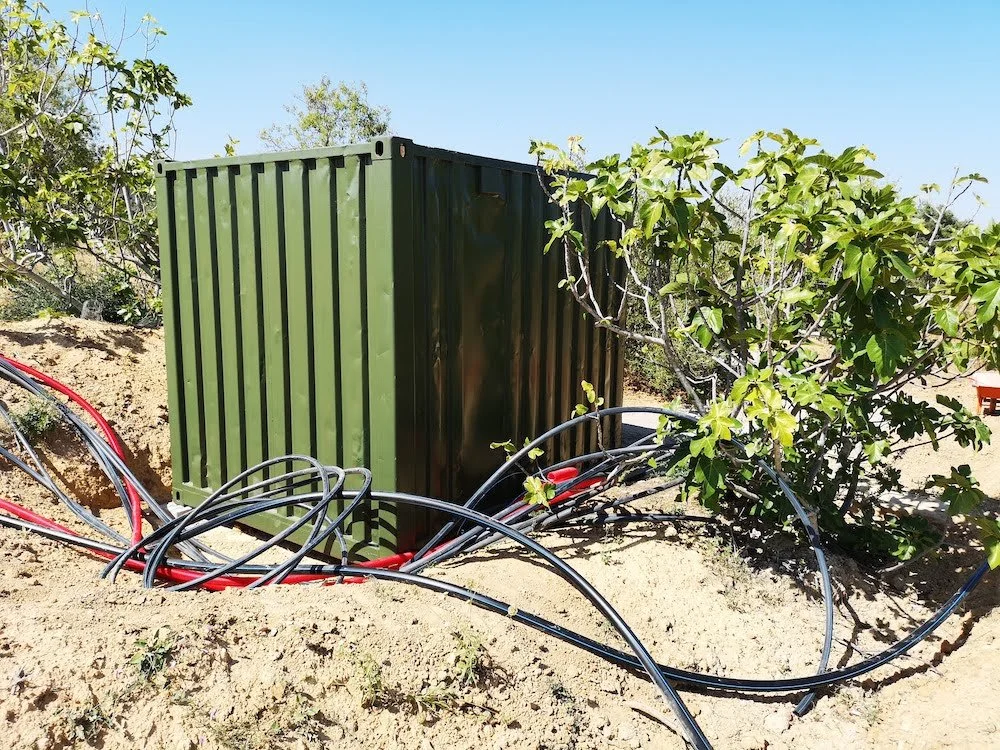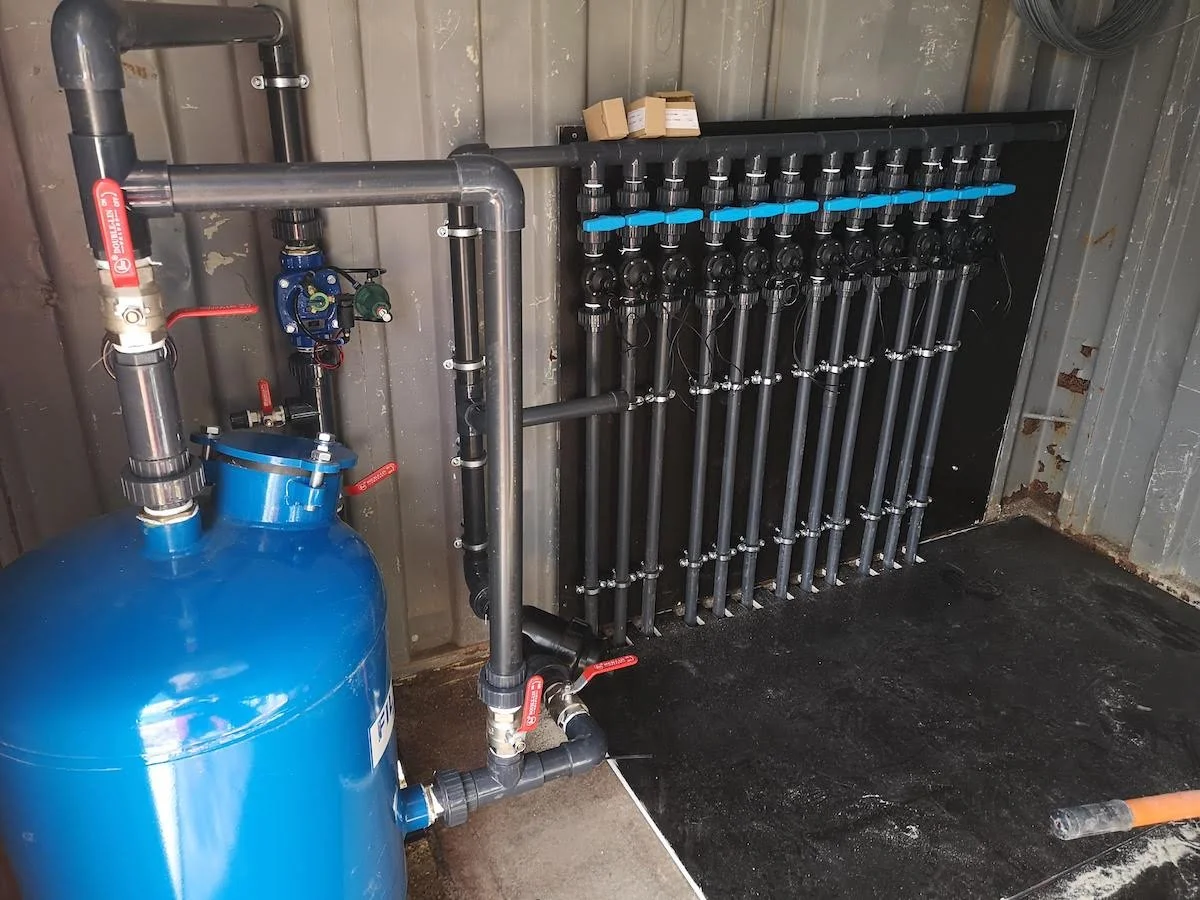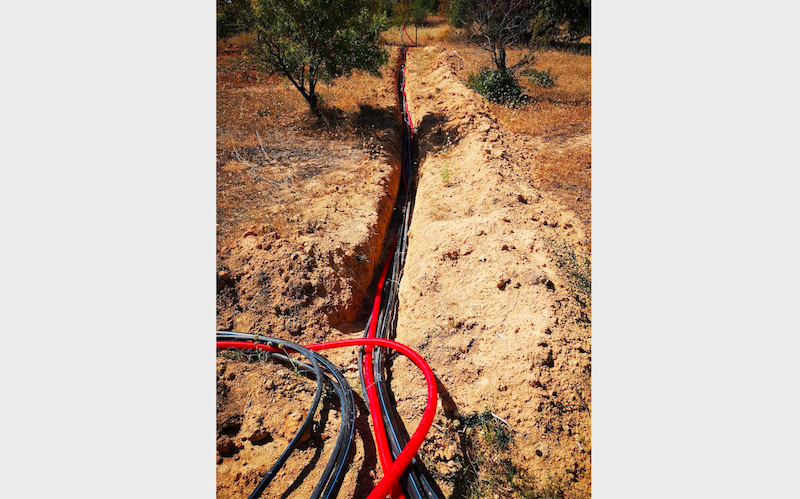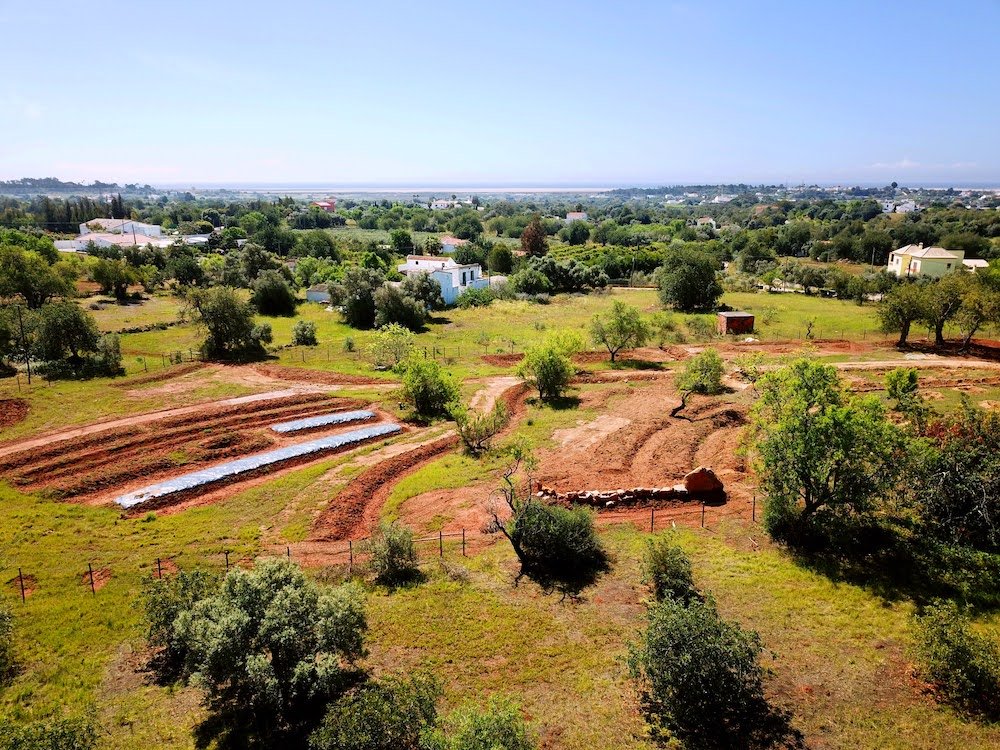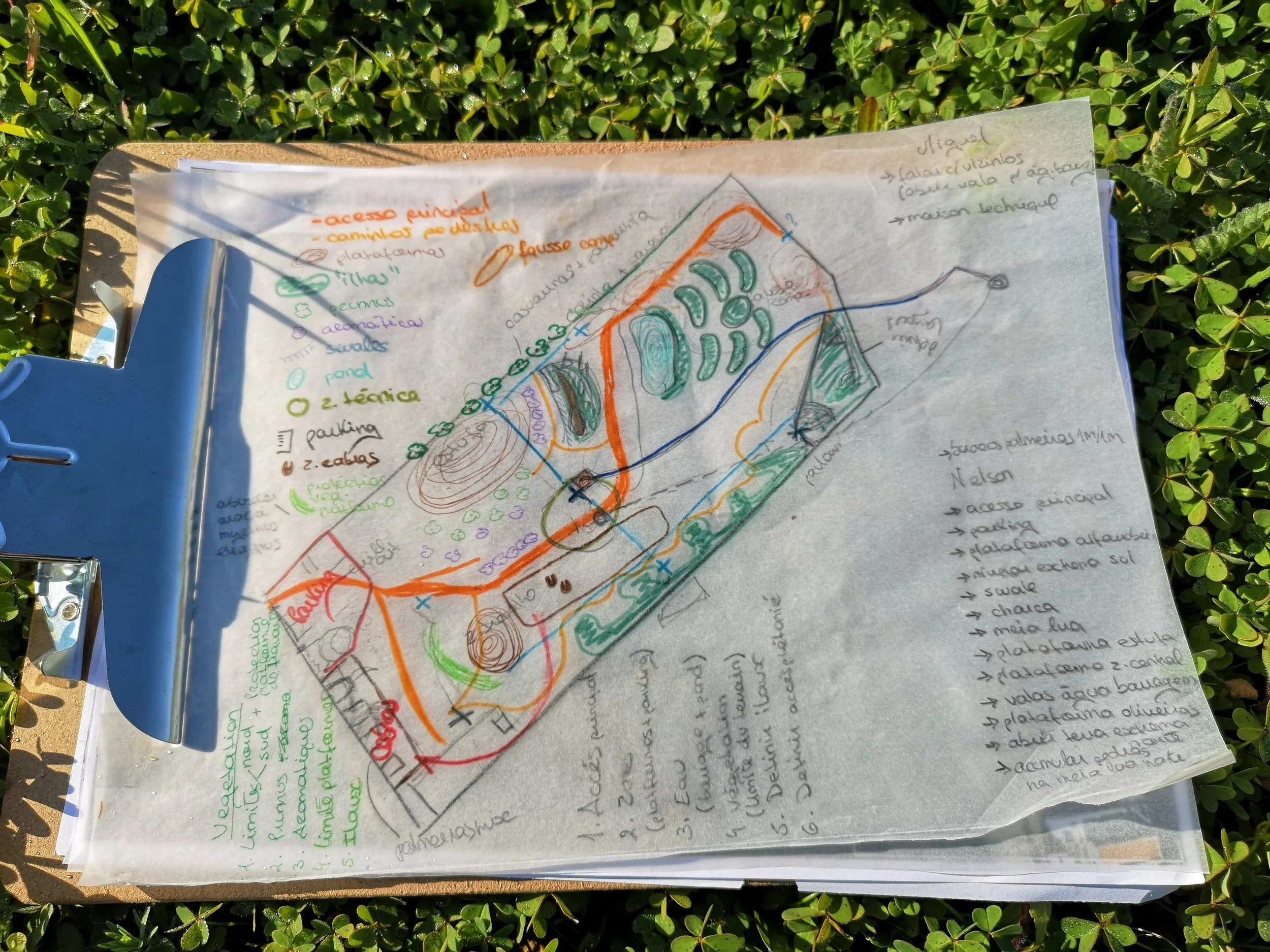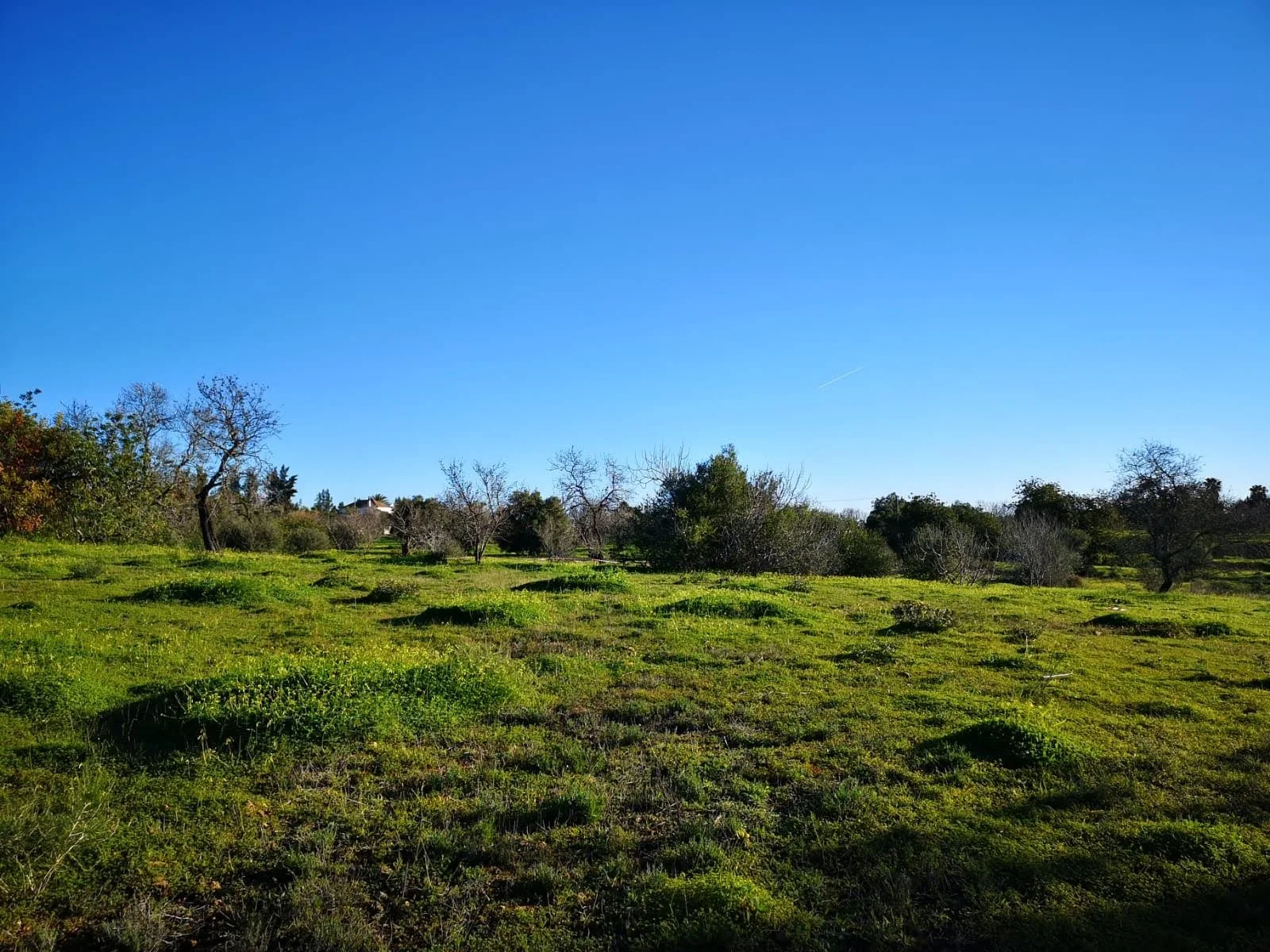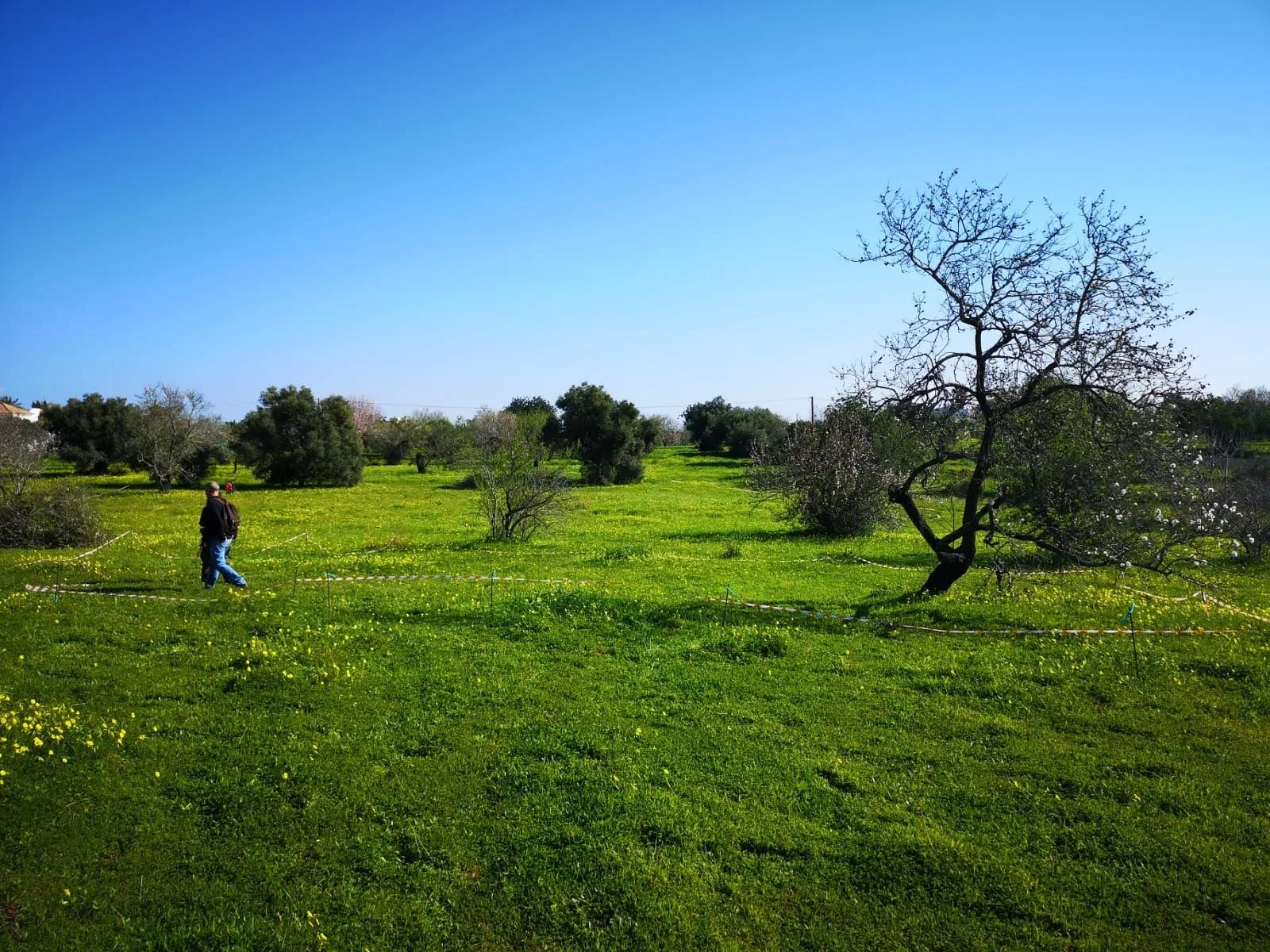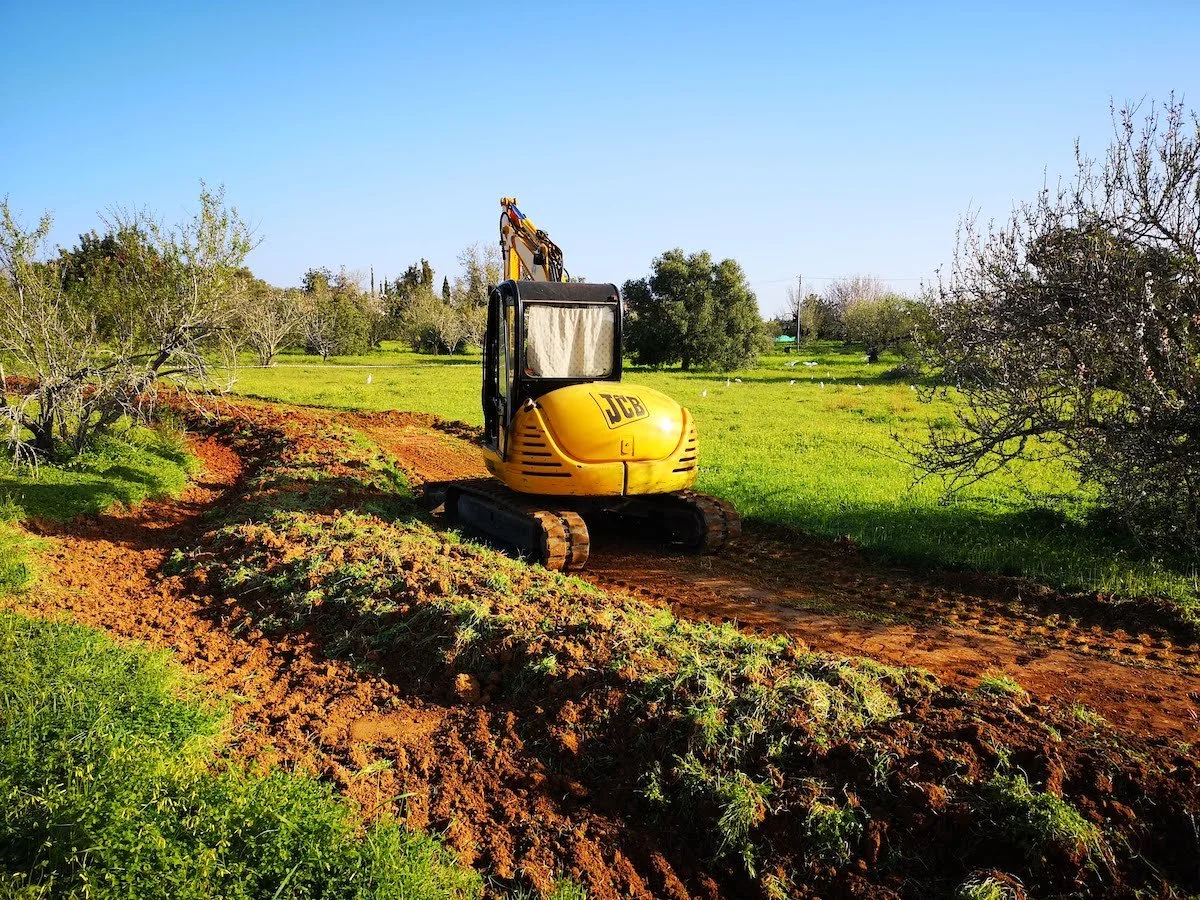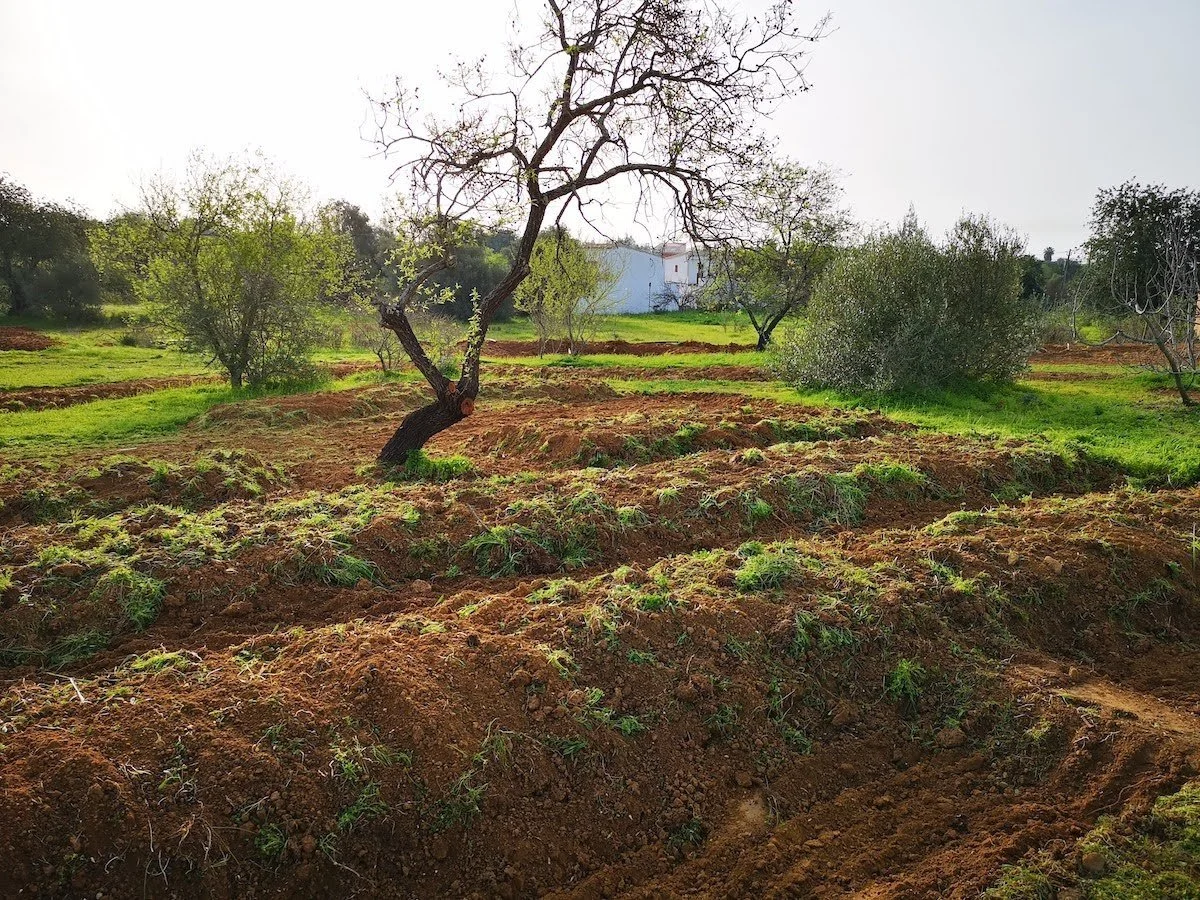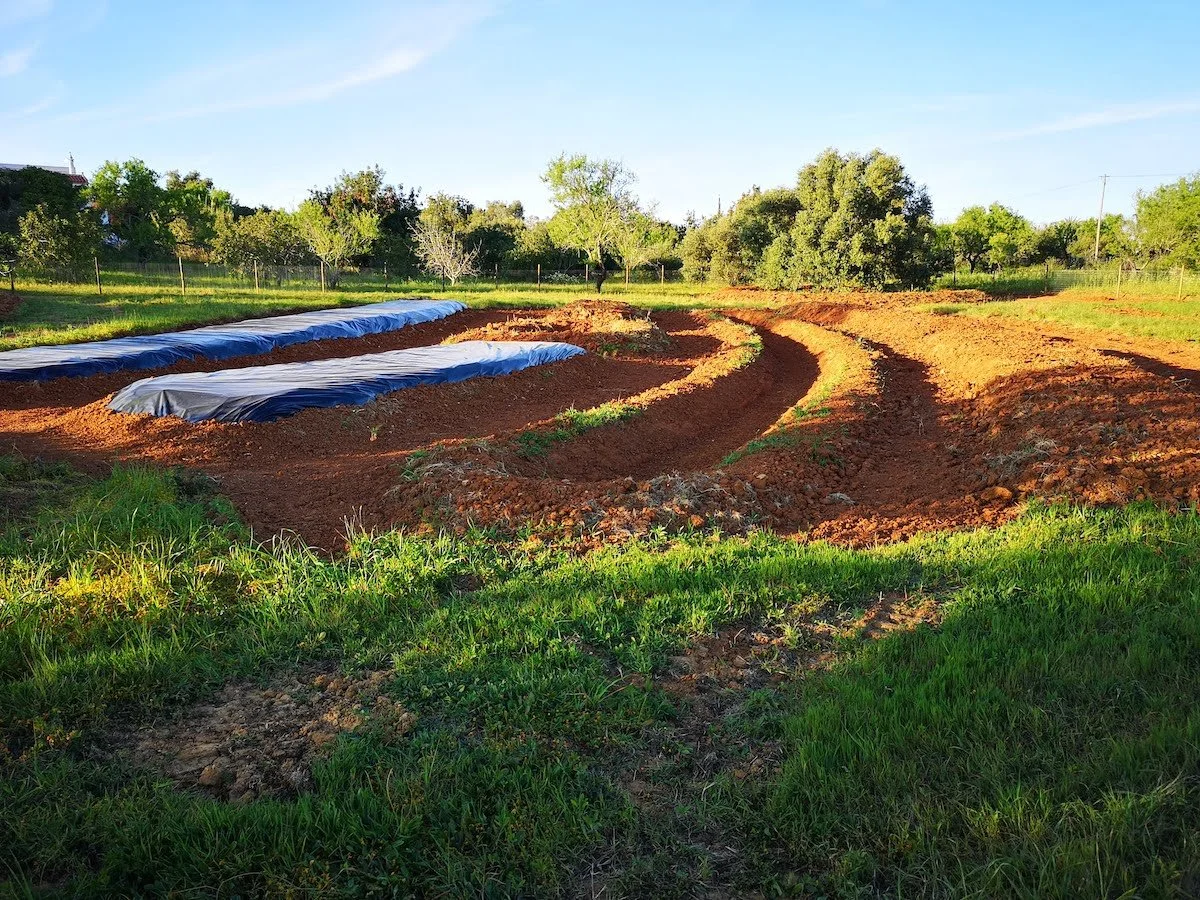Timeline — our story in pictures
Dear Fruit Tree Enthusiasts,
Welcome to Orchard of Flavours — a botanical garden dedicated to warm-climate food trees.
Discover our journey of vibrant landscaping, rare tree collections, eco-friendly irrigation, and our first subtropical harvests. With the help of volunteers and scientific advisors from around the world, we dare say we’re creating something special.
Join us for tours, workshops, or simply to share your passion for fruit trees and food forests.
Warm regards from Tavira, Algarve, Portugal,
Miguel Cotton
Founder
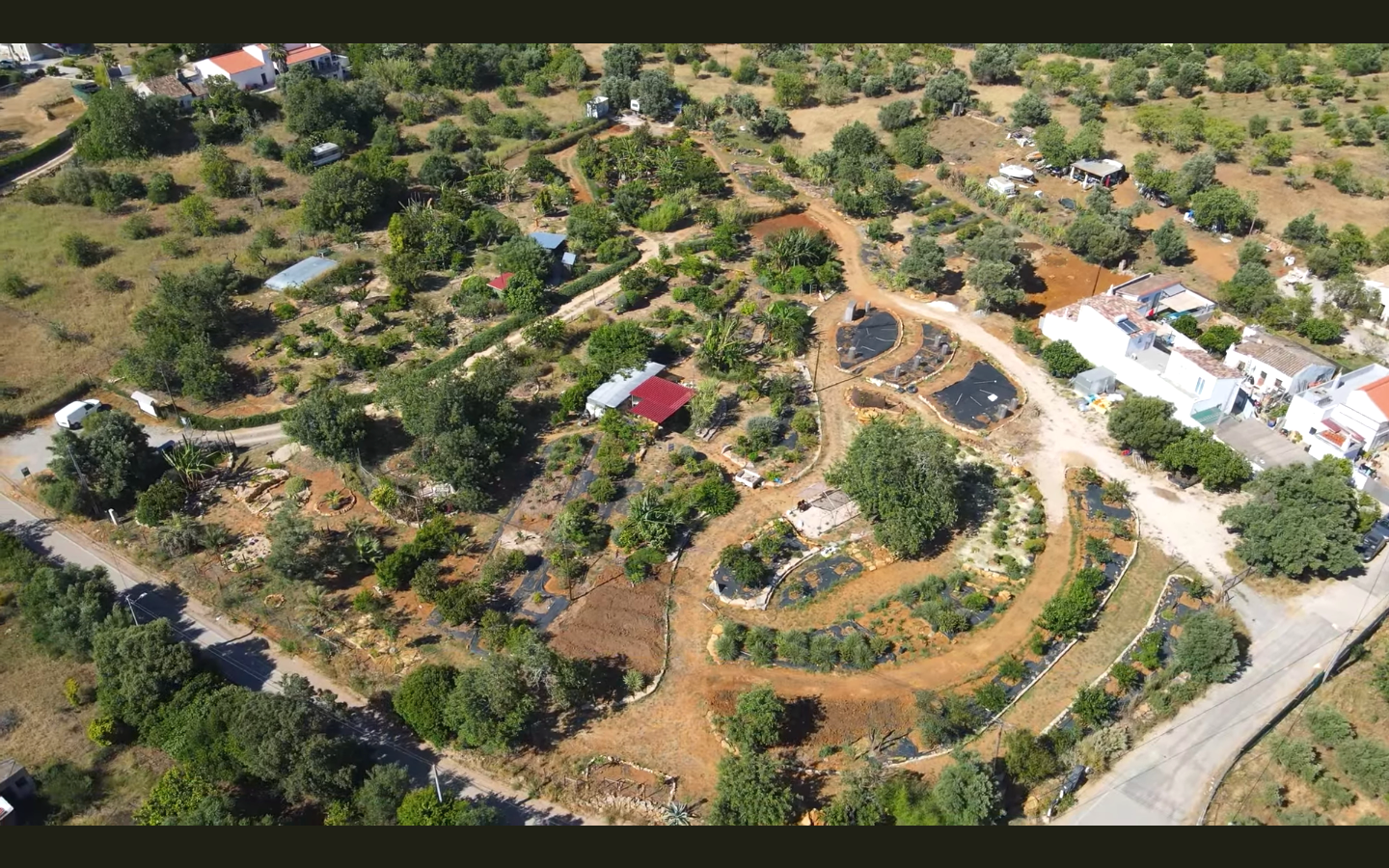
Another one of our yearly drone videos, this one recorded on July 2025.
April — June 2025
-
![Perennial edible flowers bed]()
Creating our perennial edible flowers bed.
-
![Plant selection in a garden consultancy project]()
Plant selection — a consultancy for another big project in Western Algarve.
-
![Unpacking new rare food trees]()
Unpacking the newly arrived rare food trees from all over Europe.
-
![Food Tree Academy courses tent]()
Preparing our Food Tree Academy one-week course.
-
![One week course food forest workshop]()
The class for the One-week course of our Food Tree academy.
-
![Training gardeners for a big orchard project]()
Training gardeners who joined another big orchard.
-
![Preparing signs for newly planted food trees]()
Preparing the signs for our newly-planted trees.
-
![New rare food trees in quarantine area]()
Rare food trees still in the quarantine area.
-
![The flower of the Hibiscus acetosella or cranberry hibiscus]()
The beautiful cranberry hibiscus (Hibiscus acetosella).
-
![Preparation of the Jewels planting area]()
Preparing the Jewels area (for planting Jabuticaba and rare Eugenia).
-
![Eugenia involucrata cherry fruit]()
Our first Eugenia involucrata producing delicious cherries...
-
![Jewels area freshly planted with jabuticaba and eugenia species]()
The new Jewels area, fully planted with Jabuticaba and rare Eugenia species.
-
![Mango Project preparation of planting beds]()
Preparing the soil for our new Mango Project.
-
![A handful of Eugenia uniflora, or pitanga, fruits]()
Lots of Eugenia uniflora, the pitanga or Surinam cherry.
-
![Kid enjoying Himalaian mulberry fruit]()
A young visitor enjoying the fruit of a Himalaian mulberry.
-
![Morus macroura or himalayan mulberry fruit]()
The long fruit of a Himalayan mulberry tree (Morus macroura).
-
![Planting new trees under a shade]()
Planting with style and joy! Always well protected from the sun.
-
![Mango project - first mango transplanted in]()
The first mango tree planted in the brand new Mango Project area.
-
![Mango project mulching with vetiver grass]()
Planting and mulching with vetiver grass in the Mango Project.
-
![Last cocoon food forests]()
The last few square meters of the Botanical Garden are now full!
-
![One month food tree training program]()
The one-month food tree training program.
-
![Stone wall and acidic soil to accommodate a rare eugenia tree]()
Taking care of a rare eugenia, adding a stone wall for protection and acidic substrate.
January — March 2025
-
![Inga sessilis - Icecream bean plant - Giant pod]()
Fruiting after just 2 years! The incredible Ice cream bean.
-
![Wish tree art piece at the Orchard of Flavours]()
Marco de São Vicente, the Portuguese artist who donated the Wish tree to the Orchard.
-
![Harvesting a banana bunch in January]()
Harvesting bananas all year long with 3 gardener trainees.
-
![Exotic fruits harvest in January]()
Exotic fruits harvested in January!
-
![Weekly potluck lunch with volunteers and patrons]()
Our weekly potluck lunch with volunteers and patrons of the garden.
-
![Fava beans as green manure fertilizer]()
The fava bean plants (green manure) being incorporated into the soil.
-
![Nitrogen fixing nodules on the roots of a fava bean plant]()
Nitrogen-fixing nodules on the fava bean roots.
-
![Maintenance of hardy banana plants]()
Maintaining our hardy banana plants.
-
![Sending soil samples to laboratory]()
Sending soil samples from the botanical garden to the laboratory.
-
![Maintaining the edible lotus pond]()
Maintenance of our edible lotus pond.
-
![Installing veranda on the botanical gardens bar]()
Adding a much needed veranda to our Kiwano bar.
-
![Quarantine area with plants to enter the garden]()
Our quarantine area with the to-be-planted soon babies.
-
![Recording new plants into gardens database]()
Recording the newly arrived edible plants onto our database.
-
![Fruit of Tabernaemontana elegans the toad tree]()
The strange fruit of Tabernaemontana elegans, the toad tree.
-
![Toona sinensis or beef and onion tree and its edible leaves]()
The edible leaves of our Beef and Onion tree (Toona sinensis).
-
![Le Funky artistic wall of Office building]()
Our office, a multi-purpose room, painted by the young Portuguese artist Le Funky.
October — December 2024
-
![Working on foundations for a fruit tree art piece monument]()
Preparing the foundations for our Wish Tree.
-
![gin berry Glycosmis pentaphylla with fruit]()
Ripening fruit on a gin berry tree (Glycosmis pentaphylla).
-
![1 month old Cocoon Food Forest at Orchard of Flavours]()
A Cocoon Food Forest with a Mango Tree at the center, one month after planting.
-
![Flowering peruvian apple or Cereus repandus]()
Peruvian apple flowering (Cereus repandus), before yielding a fruit very similar to the dragon fruit.
-
![Capparis inermis thornless caper plant]()
Capparis inermis, a thornless caper after one year of planting. So delicious on pizza..
-
![Private guided tour Orchard Flavours]()
Another private guided tour at the Botancial Garden.
-
![Ensete ventricosum Ethiopian banana plant]()
The giant Ensete ventricosum, or Ethiopian banana plant.
-
![6 months old Cocoon Food Forest with dwarf banana in the center]()
One month and a half after planting, a Cocoon Food Forest around a dwarf Madeira banana plant.
-
![Akebia quinata or chocolate vine]()
So good and so strange: the Akebia quinata, also known as chocolate vine.
-
![A 2 year old Annona glabra fruiting]()
Annona glabra, a strange Annona fruiting after 2 years.
-
![Portuguese artist with Wish tree art piece]()
Marco de São Vicente, the Portuguese artist who donated the Wish Tree art piece to the garden.
-
![Ripening papaya on the plant]()
More and more papaya ! We love them so much that our botanical garden’s logo is a papaya !
-
![Orchard Flavours October harvest]()
October is the best month to visit the Orchard. Come and try a bunch of different fruits.
-
![Volunteers day potluck lunch]()
Wednesday is Volunteer's day at the Orchard. Join us and enjoy a potluck lunch together.
-
![Belgian volunteer engineer at the botanical garden]()
Angela, the Belgian engineer who wrote the articles about food trees and salinity. We miss her a lot.
-
![dragon fruit flower Selenicereus undatus]()
The dragon fruit flower (Selenicereus undatus) that we pollinated by hand.
-
![Flower of Ensete ventricosum or Ethiopian banana]()
The flower of the Ensete ventricosum (Ethiopian banana) after just 2 years.
-
![Installation of the Wish tree art piece]()
The Wish tree being installed.
-
![Free Online Course - Cocoon Food Forest]()
The Orchard of Flavours first Online Course, completely free, teaching our Cocoon Food Forest approach.
-
![Food Tree Academy Workshop tent]()
In November, we had 5 full days of hands-on learning, including our first week-long intensive course.
-
![Fertilizing food trees with compost and manure]()
Time to fertilize all our food tress with compost and horse manure.
-
![Climate change photographer Micha]()
Micha, the German photographer focused on climate change who volunteered with us.
-
![Agronomist training at botanical garden]()
Lucas, our agronomist training a Portuguese gardener to use the most efficient irrigation technique.
-
![New gardener in training]()
Isaac, a Nepalese gardener being trained by our team.
-
![Rare fruit tree seedlings in pots]()
New rare babies for the 2025 food tree collection.
-
![Training a new gardener]()
Milan, the garden manager training a new gardener at the Orchard.
-
![Three new gardeners in training]()
The botanical garden is training 3 gardeners who will soon develop a beautiful orchard.
-
![Visitors tablet on wish tree instalation]()
A visitor from Taiwan left this comment on our Wish Tree.
-
![New years eve party with Orchard of Flavours gardeners]()
New year’s Eve with the team of gardeners that the botanical garden is training.
-
![Girl holding Wish tree tablet]()
Our Wish tree, and the preferred fruit of one of the Orchard’s young visitors.
-
![Miguel Cotton addressing full classroom]()
The brand new Food Tree Academy tent was full of Fruit Tree enthusiasts eager to learn.
July — September 2024
-
![Dish using moringa green pods]()
Cooking with Moringa oleifera young pods. Highly nutritional and so tasty!
-
![Cocoon food forest implementation]()
Starting a Cocoon Food Forest implementation, with a very efficient irrigation system.
-
![Cocoon Food Forest at Orchard of Flavours]()
Planting one of our first Cocoon Food Forests.
-
![Finished Cocoon Food Forest]()
Freshly planted Cocoon Food Forest.
-
![Dog resting in the plant nursery]()
Having a deserved rest, in the sheltered nursery.
-
![Visitor hut at Orchard of Flavours]()
The Orchard's Visitor Hut, from where you can start your self-guided tour.
-
![Two year old Moringa tree]()
One of our two-year-old Moringa oleifera (Moringa) trees.
-
![Kids propagating fruit trees]()
Kids learning how to propagate fruit trees with Marie, one of our friends and volunteers.
-
![Orchard visitor with apple banana tree]()
One of our visitors trying to grab an Apple banana, part of our collection of frost hardy bananas.
-
![Delicious Papaya harvested from Food Forest]()
A delicious papaya grown in one of our Food Forests.
-
![Planting Cocoon Food Forest]()
Planting one more of our resilient Cocoon Food Forests.
-
![Freshly planted Cocoon Food Forest]()
Freshly planted Cocoon Food Forest.
-
![Mulching with vetiver grass]()
Another day of mulching with the amazing Vetiver grass.
-
![Volunteers on propagation day]()
Volunteers with Cajanus cajan (Pigeon pea) seedlings.
-
![three week old Cocoon Food Forest]()
Cocoon Food Forest after three weeks of planting.
A promotional video we made for our educational Botanical Garden, a true gem in the Algarve! (July 2024)
April — June 2024
-
![Orchard of Flavours stand at Sao Bras plant fair]()
Marie, Claire and Miguel at São Brás Plant Fair, April 2024.
-
![Wednesday volunteering day]()
Wednesday is volunteering day at the Orchard.
-
![Morus alba King's White fruit]()
Morus alba "King's White", one of the best mulberries in the world.
-
![Almancil rotary club at Orchard Flavours]()
Almancil Rotary Club visiting the botanical garden.
-
![Planting in the Dry Orchard experiment]()
Planting in the Dry Orchard trees that can rely only on the rainfall level of Algarve.
-
![Quarentine area of Orchard of Flavours]()
Our quarantine area, with many new fruit trees that will soon be part of the Botanical Garden collection.
-
![Visitors from the Lycée Horticole, in Brive la Gaillarde]()
Half a day with the students of Lycée Horticole of Brive la Gaillarde, in France (campus du végétal).
-
![Food Forest in Mediterranean workshop]()
Our Foundation Course about Food Forests in Mediterranean climates.
-
![Orchard of Flavours team having poluck lunch]()
Potluck lunch with the team and a few volunteers.
-
![Preparing soil for planting]()
Preparing the soil in our one-hectare extension. Decompacting and adding compost.
-
![Removing mealybugs from young food tree]()
Removing mealybugs from a young plant's leaves, using cotton buds and alcool.
-
![Harvesting pigeon pea]()
Claire and Brian harvesting the pigeon pea (Cajanus cajan).
-
![Harvesting pigeon pea cajanus cajan]()
Harvested Cajanus cajan (Pigeon pea) pods.
January — March 2024
-
![Food tree care workshop pruning]()
Dror Avital demonstrating pruning techniques, during a Food Tree Care Workshop.
-
![Mini Food Forest workshop]()
Luís AFONSO and Ana Laura CRUZ teaching a Mini Food Forest Workshop.
-
![Coffea arabica plant ripe fruit]()
Ripe fruit during the first harvest of one of our Coffea arabica (coffee) plants.
-
![Orchard of Flavours self-guided tour map]()
Orchard of Flavours map, showing the different paths of our themed self-guided visits.
-
![Earthworks for our Dry Orchard Experiment]()
Earthworks for our Dry Orchard Experiment.
-
![Growing fava beans as green manure]()
Fava beans (Vicia faba) growing as green manure, on our Dry Orchard Experiment.
-
![Biochar workshop]()
Hosting a Biochar Workshop, taught by Martijn JAGER, of Carbon Conscious Creations.
-
![Orchard of Flavours Propagation center]()
The Orchard of Flavours’ new propagation center.
-
![Open black sapote fruit Diospyros digyna]()
Open black sapote fruit (Diospyros digyna).
October — December 2023
-
![Arbutus unedo andrachnoides]()
Probably the most beautiful Arbutus in the world, Arbutus unedo x andrachnoides ‘Marina’.
-
![Neem tree flowers]()
Our Neem tree (Azadirachta indica) flowering after one year of planting.
-
![Pomelo red madoka]()
A nice big pomelo from our Citrus maxima ‘Red Madoka’. Can you find a bigger citrus fruit anywhere?
-
![Botanic garden tree QR codes]()
Milan preparing the new signage for each of our plants, with QR codes leading to our database.
-
![Big papaya fruit]()
2023 was a year full of papaya. And trust us, many more like this will come.
-
![Food Tree Propagation workshop]()
A full classroom during one of our Food Tree Propagation workshops.
-
![Adansonia digitata or African baobab]()
Installing the new signage in the botanical garden, providing accessible information for future self-guided visits.
-
![Botanical garden info board]()
Adding information boards all over the Orchard of Flavours botanical garden.
-
![Longan fruit]()
Our first longan (Dimocarpus longan), also known as the Eye of the Dragon fruit.
-
![Orchard of Flavours at the Mediterranean garden fair]()
Milan and the Orchard of Flavours stall, at the Estoi Mediterranean garden fair.
-
![Ora pro nobis flowers]()
A flowering Pereskia aculeata, also known as “carne do pobre”, or Ora pro nobis.
-
![Fresh mango grown in Algarve]()
Great mango harvest this Fall. Already more than 15 varieties are growing here.
-
![School kids visiting Orchard of Flavours]()
Miguel Cotton showing a giant pod of the amazing Inga edulis (Ice cream bean tree), during a Workshop for the kids of Nobel International School.
-
![Gin berry fruit]()
Fruit ripening on our Gin berry tree (Glycosmis pentaphylla).
-
![Curry tree fruit]()
Our Curry tree fruiting… (Murraya koenigii).
-
![Chini champa banana bunch]()
Our preferred banana, Musa chini champa, with a lemony taste.
-
![Ceniza bengala sugar cane]()
The rare and beautiful yellow stripe sugar cane (Saccharum officinarum 'Ceniza Bengala').
-
![Dwarf tamarillo plant fruit]()
A fruit from Solanum abutiloides, our Dwarf tamarillo, growing in our Miyawaki-inspired Organised & High Density Food Forest.
-
![Pomegranate Kirmiz kabub fruit]()
Testing “Kirmiz kabub”, one of our many pomegranate (Punica granatum) varieties.
The video of a new flight over the Pomar dos Sabores diverse edible garden, in December 2023
July — September 2023
-
![Orchard of Flavours initial map]()
DAY 7: Our 3rd Miyawaki-inspired Organized & High Density Food Forest experiment, on July 7th. Complete planting of around 110 edible plants.
-
![Miyawaki Food Forest 21 days after planting]()
DAY 21: Our Miyawaki-inspired Organized & High Density Food Forest experiment, on July 21st.
-
![Miyawaki Food Forest 45 days after planting]()
DAY 45: Our 3rd Miyawaki-inspired Organised & High Density Food Forest on August 14th. Moringa trees are almost 2 meters !
-
![2 and a half months old Miyawaki Food Forest]()
Garden Steward Milan NEPALI removing the shade cloth off our 3rd Miyawaki-inspired Food Forest, now 2.5 months old (September 13th). Many trees have reached 2 meters easily.
-
![Dispoyros digyna black sapote fruit]()
Black sapote, or chocolate pudding fruit (Diospyros digyna).
-
![Food Forest Workshop class]()
The fruit Tree Academy: Luís AFONSO and Miguel COTTON teaching a class during a Food Forest and Island of Fertility workshop.
-
![Punica granatum pomegranate fruit]()
One of our many many varieties of pomegranate (Punica granatum), in this case, the “Red acco”.
-
![Biggest Mini Forest preparations]()
Milan NEPALI and Luís AFONSO pose for the photo during the preparation of the first Biggest Mini Forest, on August 1st.
-
![Biggest Mini Forest 2 weeks after planting]()
The first Biggest Mini Forest on August 16th, two weeks after planting.
-
![Biggest Mini Forest after one month]()
The first Biggest Mini Forest, on September 5th, a bit over a month after planting.
-
![Month and a half old Biggest Mini Forest]()
The first Biggest Mini Forest, on September 16th, a month and a half after planting.
-
![Bunchosia argentea or peanut butter tree]()
The fruit of Peanut butter tree (Bunchosia argentea).
-
![Introduction of biological predators]()
Introduction of biological predators, in this case, the Rodolia cardinalis ladybug beetle, to help us control attacks by mealybugs.
-
![Muntigia calabura or Cotton candy tree]()
Cotton candy fruit tree (Muntigia calabura), one of our Central American species.
-
![Workshop group picture]()
Group picture at the first Food Forest & Island of Fertility workshop, on July 1st.
-
![Planting coffee plant]()
Planting Coffea stenophylla at the first Food Forest & Island of Fertility workshop.
-
![Workshop tour of Orchard of Flavours]()
The Fruit tree Academy: starting a Food Forest & Island of Fertility workshop with a guided tour of the Orchard of Flavours, with founder Miguel COTTON.
April — June 2023
-
![2 year old Miyawaki food forest]()
Our July 2021-planted Miyawaki-inspired Wild & High Density Food Forest, our first experiment.
-
![Orchard of Flavours Drone picture May 2023]()
Drone picture taken of the Orchard of Flavours in May 2023.
-
![Edible bamboo collection]()
A few new additions to our edible bamboo collection (Phyllostachys praecox and nuda).
-
![Kids jumping on flexible water tank]()
Kids jumping on the Orchard's huge flexible water tank, by Citerneo.
-
![Trees with nets protecting fruits]()
We don’t resort to pesticides, of course, but we occasionaly use net bags to protect the fruit hanging on trees.
-
![Drone picture food forest workshop May 2023]()
The first Food Forest workshop we held at the Orchard of Flavours, in May 2023.
-
![Eugenia anthropophaga plant measurements]()
Plant measurements of a young Eugenia anthropophaga.
-
![2-year-old flowering Rose-apple or Syzygium jambos]()
A 2-year-old flowering Rose-apple (Syzygium jambos).
-
![Garden steward Milan planting coffee plant]()
Garden Steward Milan NEPALI planting a Coffea stenophylla.
-
![Freshly planted Miyawaki edible forest]()
Starting planting the new Miyawaki-inspired Organized & High Density Food Forest, mid June.
-
![Nelumbo nucifera edible lotus]()
Our young Nelumbo nucifera edible lotus starting to flower (planted only 6 weeks before).
-
![New miyawaki edible forest covered by shade cloth]()
New Miyawaki Edible Forest covered in shade cloth.
-
![Guided visit by Orchard Flavours founder]()
One more Orchard of Flavours tour, guided by Miguel Cotton.
The new drone video of the Orchard of Flavours botanical garden in Tavira, Algarve. Taken in May 2023.
January — March 2023
-
![Milan Nepali garden steward at the Orchard]()
We welcomed Milan NEPALI, our new Junior Garden Steward.
-
![Avocado fruit]()
Fruit from one of our 3-year-old avocados (Persea americana).
-
![Morus or mulberry tree]()
The beginning of a collection of mulberry trees (Morus genus).
-
![Mulching using vetiver grass]()
The finished result of our new method for mulching with vetiver grass.
-
![New Miyawaki food forest site preparation]()
WWOOFer Leonardo setting up an archway for vine growing, on our new Miyawaki experiment site.
-
![Soil prep for miyawaki food forest]()
Starting soil preparations for the new Miyawaki Organized and High Density Food Forest experiment, our third!
-
![Planting a medjool palm tree]()
Planting an in-vitro propagated female Medjool Palm tree (Phoenix dactylifera).
-
![New Miyawaki edible forest soil preparation]()
WWOOFer and Milan NEPALI working on the planting area of the new Miyawaki Edible Forest experiment.
October — December 2022
-
![Averrhoa carambola or star fruit]()
Loads of Star fruit (Averrhoa carambola) on our 3-year-old tree.
-
![Botanic garden accreditation sign]()
Our brand new accreditation from BGCI (Botanic Gardens Conservation International) as a Botanic Garden.
-
![Citrus maxima or pomelo fruit]()
Our first real Pomelo (Citrus maxima).
-
![Ziziphus jujuba tree full of fruit]()
Harvesting the Jujubes from our Ziziphus jujuba tree.
-
![Miyawaki food forest with 14 months]()
Our first Miyawaki-inspired mini Food Forest, 14 months after planting.
-
![three year old 6 meter high Moringa oleifera tree]()
A beautiful three-year-old, 6-meter-high Moringa oleifera tree.
-
![New map of the Orchard of Flavours 2022]()
The new map of Pomar dos Sabores, now including the one-hectare extension.
-
![Orchards extension planting]()
First plantings on the new extension (using our new Food Forest planting protocol).
-
![Bixa orellana or Achiote fruit]()
Achiote fruit from the Lipstick tree (Bixa orellana).
-
![Fruit tree root systems diagram]()
Beginning of our research on the root systems of fruit trees.
-
![Orchard of Flavours at garden fair in Estoi]()
Our first Garden Fair, in Estoi Algarve, October 2022.
-
![Food Forest protocol diagram]()
Our new protocol for planting fruit trees in the extension of the Orchard of Flavours botanical garden. We put it into practice by planting our Miyawaki-inspired Organized Food Forest.
-
![WWOOFers trimming vetiver for mulching]()
Enthusiastic WWOOFers Leonardo and Luís trimming the vetiver grass to use as mulch.
July — September 2022
-
![Private guided visit of Orchard Flavours]()
2-hour-long private guided visit with tree lovers from Switzerland, South Africa, Germany and Portugal.
-
![Truckload of composted horse manure]()
Landscaping the new plot and adding compost and horse manure to each planting bed.
-
![Ice cream bean pod]()
First Ice cream bean pod on 2-year-old trees (Inga edulis).
-
![Azadirachta indica or neem tree]()
Finally we found a Neem Tree (Azadirachta indica)!
-
![Microcitrus australasica or Citron caviar or finger lemon fruit]()
Microcitrus australasica (Citron caviar or finger lemon fruit) growing on the tree.
-
![Litchi chinensis Lychee fruits]()
First fruit ripening on a Litchi chinensis (Lychee) tree.
-
![Brian planting mango variety Palmer]()
Brian planting one more variety of Mango (Mangifera indica “Palmer”). The garden now has a collection of 10 different varieties, with many more to come...
-
![Landscaping Orchards new plot]()
Landscaping under progress, on the most recent 1-hectar plot.
-
![Macadamia nuts on tree]()
First Macadamia nut on a three-year-old tree.
-
![Irrigation system brain]()
Installing the irrigation system of the extension plot.
-
![Quarantine area new trees]()
Quarantine area of the newly arrived fruit trees.
-
![Terra sintropica visit to Orchard]()
Visit of Mértola’s Terra Sintrópica team to the Orchard of Flavours.
-
![Three year old Mango tree fruiting]()
Three-year-old Mango tree, full of fruit.
April — June 2022
-
![Fruiting Nanking cherry]()
A beautiful happy Nanking cherry (Prunus tomentosa) loaded with sharp red berries.
-
![Solanum muricatum or melon pear fruit]()
A productive Solanum muricatum with quite a few ripe melon pears, ready to be picked.
-
![Pigeon pea pods]()
Pea pods of a Pigeon Pea (Cajanus cajan) shrub, a legume family perennial which provides nutritious peas while fixing nitrogen.
-
![Orchards new plot compost]()
A delivery of compost on the new plot of the Orchard of Flavours project, the Second Phase.
-
![New young food plants]()
Welcoming new rare fruit trees to the project, among which many types of Eugenia, like selloi, involucrata and pyriformis.
-
![New plot planting area]()
The Orchard of Flavours is growing. A new planting area is prepared on the one-hectar extension.
-
![White sapote fruits]()
White sapote fruits rippening on our Casimiroa edulis, planted under 3 years ago.
-
![Happy productive papaya plant]()
One of our happy and productive papaya plants (Carica papaya).
-
![Flowers of ice cream bean plant or inga edulis]()
The beautiful and delicate flowers of the Ice cream bean tree (Inga edulis).
-
![Seeds of lipstick tree or Bixa orellana]()
The seeds of the lipstick tree (Bixa orellana).
-
![Fruiting loquat or Eriobotrya japonica]()
The delicious fruits of the Japanese loquat (Eriobotrya japonica) are usually the first ones to fully ripen, in early Spring.
-
![Bunch of bananas]()
The banana plants at the Orchard of Flavours are always hard at work producing some delicious bunches for us.
-
![Apricot tree full of fruit]()
Yet another example of how productive and diverse an orchard in the south of Portugal can be. And we’re only getting started!
The drone has flown above the Orchard again, showing now a more diverse garden than ever, and the brand new one-hectar extension plot, three and a half years after the project began, June 2022
January — March 2022
-
![WWOOFers doing mycorrhizal inoculation of loquat tree]()
Happy WWOOFers Jules and Miguel, inoculating a Eriobotrya japonica with a mycorrhizal fungi biostimulant.
-
![Soil your undies test]()
Miguel COTTON doing a ‘soil your undies’ test with help from a visitor during a tour of Orchard of Flavours.
-
![Tour group photo]()
Group photo at the end of a January tour, with a wonderful group of fellow fruit tree lovers.
-
![Flowering almond tree over plant cemetery]()
Beautiful almond tree in bloom, solemnly looking after our fruit trees cemetery.
-
![Biostimulants injectable mycorrhizae cocktail]()
Preparing to inoculate our fruit trees with a mycorrhizae and rhizobacteria biostimulant.
-
![Ziziphus jujuba cardboard mulch]()
Mulching around a Ziziphus jujuba tree using cardboard and creeping flowers.
-
![WWOOFer dividing banana tree]()
WWOOFer Miguel collecting a baby banana tree by dividing.
-
![Tour of Miyawaki food forest]()
Miguel COTTON showing Miyawaki-inspired Food Forest to touring visitors.
-
![WWOOFer next to banana trees]()
WWOOFer Jules preparing the site for the ‘soil your undies’ test, next to banana trees.
-
![Pond and creeping flowers]()
One of the ponds spread around the Orchard, allowing for the creation of an important microclimate, providing temperature regulation for its surroundings and boosting biodiversity.
-
![Visiting a banana plantation in Algarve]()
Joyful visit with some friends to a local banana plantation, where we all learned about growing happy banana plants with our host Leonardo, an experienced grower.
-
![Orchard guided tour]()
Miguel COTTON guiding a tour of the Orchard.
-
![Tour orchard of flavours]()
Showing visitors our beautiful Bixa orellana shrub, from which the seeds were originally used both as a red body paint and as a cooking condiment.
October — December 2021
-
![stone-wall protected planting area]()
Preparation of a new well-protected plantation area for spring 2022. We already planted 3 Dovyalis caffra, the Kei apple, native to Southern Africa.
-
![Tree info sign next to syzygium]()
Over 100 fruit trees have now an information sheet inserted in this homemade signage system. Visitors at Orchard of Flavours can now learn by themselves about fruit trees of all warm climates.
-
![Pouteria lucuma fruit]()
A delicious lucuma, fruit of Pouteria lucuma, a beautiful evergreen fruit tree native to Peru, with some drought tolerance.
-
![Bulldozer preparing new planting bed]()
More big holes and soil preparation in the Coco zone (very limey and unfertile). We systematically create islands of fertility where one big fruit tree is planted next to shrubs and creeping plants and all roots received mycorrhizal fungi inoculation.
-
![Blossoms of Bixa orellana or achiote]()
Flower of Bixa orellana often called the “Lipstick tree”. The ground seeds are widely used in South America as a condiment or to make red body paint or lipstick.
-
![one and a half year old Banana circle]()
The Banana Circle at Orchard of Flavours botanical garden one year and a half after planting.
-
![Miyawaki wild food forest 5 months later]()
Miyawaki Wild & High Density food forest: 5 months later. From a few centimeters at planting to sometimes almost 3 meters tall…
-
![Meteobot weather station]()
Installation of a Meteobot agricultural weather station. It enables us to monitor soil moisture at 4 places, evapotranspiration, rainfall, humidity levels, soil temperature, etc.
-
![WWOOFer building organic windbreak]()
Building another organic windbreak structure to protect trees from the northeast cold winds.
-
![WWOOFer planting sichuan pepper]()
Brian, volunteering at Orchard of Flavours, after planting a Zanthoxylum piperitum, the famous Sichuan pepper.
July — September 2021
-
![Planting miyawaki fruit forest]()
Mid July, planting around 60 trees, 3 per square meter in our Miyawaki-inspired Food Forest.
-
![Miyawaki fruit forest planting]()
Three types of fruit trees: shrubs, mid-layer trees and canopy trees. Over 30 different species. Learn more about this Miyawaki food forest in Portugal.
-
![Miyawaki fruit forest after 1 month]()
After one month, growth is already astonishing. The densely planted trees are competing for light.
-
![WWOOFers planting Miyawaki food forest]()
Creating a Miyawaki forest is a great opportunity to involve the local community.
-
![Planning a Miyawaki fruit forest]()
Young saplings of fruit trees soon to be planted in Orchard of Flavours’ Miyawaki food forest. They will all receive a mycorrhizal fungi mix when being transplanted.
-
![Miyawaki food forest a few days after planting]()
Mid July 2021, a few days after planting…
-
![Orchard food basket]()
Today’s harvest at Orchard of Flavours botanical garden dedicated to all fruit trees of warm climates.
-
![Banana and moringa trees by stone wall]()
September 2021, the Moringa oleifera of the Great Wall zone has reached a height of over 5 meters in 13 months. Height at time of planting: 28 cm.
-
![Miyawaki food forest tree intervals]()
Miyawaki mini forest protocol: 3 trees per square meter or a tree every 60 cm (in temperate climates)
-
![Ripe mango mangifera indica irwin]()
Definitely as good as in Thailand or Indonesia. No need to import tropical fruit if we can grow them here in Southern Europe!
April — June 2021
-
![Bulldozer digging garden bed]()
One more intervention of a bulldozer to create two small ponds to collect the water and avoid waterlogging of the Big Sisters raised beds.
-
![Digger infiltration stone pit]()
No plastic liner, just stones.
-
![Marking ground for first earthworks]()
Three varieties of sugar cane are planted around the ponds, among them the rare and beautiful black sugarcane (Saccharum officinarum “Ko Onua Lua”).
-
![Bulldozer initial earthworks]()
One more Inga edulis, the ice cream bean tree. Drought tolerant, nitrogen fixer, fast grower, tolerates waterlogging, can be pruned strongly, makes an ideal canopy tree, frost resistant. Maybe the ideal tree for Algarve. A tree we love a lot.
-
![Jackson Knights and bulldozer]()
Preparation of our first Miyawaki-inspired Food Forest experiment of around 21 m². One-meter-deep soil decompaction and 6 tons of compost.

Third aerial view of Orchard of Flavours botanical garden (Tavira - Algarve) after almost two years of planting the first fruit tree.
Another drone video of the Pomar dos Sabores botanical garden, May 2021
January — March 2021
-
![Great wall zone bananas]()
Very unusually cold winter (-2ºC during 15 days for a couple of hours every early morning in Jan 2020). All the unprotected banana plants are surviving. One Carica papaya died. The 4 meter Moringa oleifera did not suffer at all.
-
![Gulliver the dog and opuntia cacti]()
We weed, we fertilize, we work hard and Gulliver is meditating…
-
![Banana and papaya plants near stone wall]()
Fertilizing each tree with compost and horse manure once a year in January/February.
-
![Tropical plant nursery]()
Our greenhouse where the most fragile fruit trees spend the winter… Soon to be planted at Orchard of Flavours botanical garden.
-
![Visiting permaculture playground biochar]()
A short workshop about Biochar with Martijn Jager.
-
![Protecting young tree against frost]()
A Bunchosia armeniaca whose winter protection will soon be removed.
October — December 2020
-
![Building an organic windbreak]()
Building of an organic windbreak which will also serve as a hotel for insects and a compost pile.
-
![Miguel Cotton planting Ziziphus mauritiana jujube]()
Planting with Rik and Gulliver a Ziziphus mauritiana, an evergreen tree giving a delicious fruit similar to the deciduous Ziziphus jujuba.
-
![Baby dog Gulliver]()
Gulliver, a small Tibetan dog from Alentejo has joined the Orchard of Flavours botanical garden team.
-
![Organic windbreak]()
Piling up organic materials into our new windbreak structure.
-
![WWOOFer crushing biochar]()
Preparing Biochar before activating it with pee and manure…
-
![6 months old banana circle]()
Less than 6 months after plantation, the Banana Circle is already a very nice spot of Orchard of Flavours botanical garden.
July — September 2020
-
![Buddha hand's lemon]()
Citrus digitata or Buddha’s hand, a rare citrus whose zest is very fragrant.
-
![Hylocereus undatus or Dragon fruit]()
Hylocereus undatus, the dragon fruit. We got fruit without hand pollination!
-
![Digger preparing new banana circle bed]()
Third intervention of a digger to prepare one cubic meter holes and mixing the local soil with compost.
-
![Bunch of green bananas]()
Musa “Orinoco” “Topocho”, tolerant of wind, drought and cold ! A very promising banana tree for Algarve at Orchard of Flavours.
-
![Miguel Cotton and WWOOFers working on laptops]()
Working on the Orchard of Flavours database where all our trees are recorded. Open unlimited access to every gardener! Hundred of hours of studying and data processing.
-
![Potted plants in the Orchard's nursery]()
We are working with plant collectors and specialized plant nurseries. Newly arrived: Inga edulis, Syzygium cumini, Dyospiros digyna,…
-
![Ripe mango]()
Harvesting a mango (Mangifera indica “Sensation”)
-
![Open lychee fruit]()
First lychee at Orchard of Flavours botanical garden. The variety “Kwai Mai Pink” is the most "cold-hardy" lychee tree.
-
![Suriname cherry eugenia uniflora]()
A delicious Surinam cherry (Eugenia uniflora). It likes cross pollination and needs to be watered regularly to be fruitful.
-
![Orchard study room in a rollote]()
A small caravan will soon become our study room where we can protect the computer used to enter all the plants data into Orchard of Flavours database.
-
![Just planted banana circle]()
After a few weeks, the first trees around the Banana Circle are growing extremely fast.
A new drone video of the Orchard of Flavours botanical garden, now one year and a half old, July 2020
April — June 2020
-
![Cacti garden bed mulched with sand]()
Mulching the Edible Succulents Garden with sand and installing the micro-irrigation system.
-
![Citrus tree and stone wall]()
We put huge stones on the northern side of the Banana Circle to protect from the cold wind and create a big thermal mass.
-
![Signs for areas of the orchard]()
Painting all the zone names of the Orchard of Flavours botanical garden on second-hand wooden skimboards.
-
![Great Wall zone of the orchard]()
Great Wall zone will soon host more frost tolerant banana trees.
-
![Planting bed surrounded by wood logs]()
Surrounding a Macadamia tree with an island of fertility: lots of compost and mulch and a few creeping flowers.
-
![Miguel Cotton with flexible water tank]()
Installing a 50-cubic-meters flexible cistern. A valuable back-up in case of water shortage.
-
![Pomar do Sabores map board]()
More and more visitors start coming to Orchard of Flavours botanical garden, sometimes just attracted by the big board along the road, near Luz de Tavira.
-
![Raised bed using logs]()
Another raised bed with a Morus alba tree and a Carissa macrocarpa shrub.
-
![Stone wall banana trees]()
We added more stone around the northern face of the Great Wall zone as a way to better protect against the northern winds and increase the thermal mass.
-
![Palm trees garden bed]()
Mulching with palm tree leaves the Butia capitata, the apricot palm tree whose fruit is delicious.
-
![Brian planting banana plant]()
Brian is happy to plant the first trees in the Banana Circle : a Musa “Orinoco” “Topocho” , a Carica papaya and a Moringa oleifera.
-
![WWOOFer installing irrigation]()
Installing micro-irrigation with a German WWOOFer. We use Rainbird and Netafim drip irrigation equipment.
January — March 2020
-
![Compost truck delivery]()
Locally produced vegetable compost. We are using tons and tons of it! Not the best compost but almost no other reasonable alternatives.
-
![Miguel Cotton planting Arbutus unedo]()
Planting an Arbutus unedo '“Marina” whose flowers are red. Beginning of a collection of many less known varieties of this indigenous tree also called the “strawberry tree”.
-
![Preparing a new banana circle]()
Preparation of a big Banana Circle. Digging the hole to receive the organic materials, amending the soil structure with compost and horse manure.
-
![Fertigation system in the irrigation brain]()
We installed a fertigation system which will inject automatically compost juices or other organic liquid fertilizer into our micro-irrigation network.
-
![Opuntia ficus indica wearing sunglasses]()
We started the edible succulents garden with Opuntia ficus-indica (thornless variety).
-
![Mulching plants using jute bags]()
Mulching with two layers of jute bags.
-
![WWOOFers adding compost to Banana Circle hole]()
Two Dutch WWOOFers adding lots of organic matter in the compost hole of the future Banana Circle.
-
![WWOOFers planting lychee tree]()
Two French WWOOFers planting a Litchi chinensis at Orchard of Flavours.
-
![Freshly planted aloe vera and aloe arborescens]()
More freshly planted edible succulents, Aloe vera and Aloe arborescens.
-
![Young trees anti-frost felt]()
Protecting fragile subtropical trees with an anti-frost felt.
-
![Doing soil testing at Orchard Flavours]()
First soil analysis at Orchard of Flavours.
-
![Bulldozer preparing more garden beds]()
Second intervention of the digger after observing the effect of heavy rains. Preparation of many more 1 cubic meter holes for future trees.
October — December 2019
-
![Sign for Orchard of Flavours - Pomar dos Sabores]()
“Orchard of Flavours” in Portuguese means “Pomar dos Sabores” and in French “Verger des Saveurs”.
-
![Food Tree labels]()
The names of the species and the varieties of all our fruit trees are written on a local white flat stone with an oil marker.
-
![WWOOFer painting first Orchard of Flavours map]()
Drawing the first map of the Orchard of Flavours botanical garden on a big board. Thanks to Alex, a Canadian WWOOFer.
-
![Planting food vines]()
We installed big wooden posts (Cosmic Antennae zone) for the climbers, like Passiflora edulis, Lycium barbarum, Vitis vinifera.
-
![Miguel Cotton planting avocado tree]()
Planting a first Persea americana in the Big Sisters zone.
-
![First Orchard of Flavours map]()
Naming all the zones with inspiring words: Coco zone, Ocean waves, the Wings, the Eye, Cosmic Antennae, Palm garden, Succulent garden, Little sisters, Big sisters, etc.
July — September 2019
-
![Orchard of Flavours greenhouse nursery]()
Arrival of the first fruit trees, among others Mangifera indica “Ataulfo”.
-
![Kiwano bar under construction]()
Building the “Kiwano Bar”, located in the center of the botanical garden.
-
![Miguel and Brian in car full of new plants]()
Expedition to Malaga, to the biggest plant nurseries in Europe selling subtropical fruit trees.
-
![Freshly planted vetiver seedlings]()
Planting vetiver on a few raised beds in order to reinforce them thanks to their very strong vertical root system. Read our article on this miracle grass.
-
![Miguel Cotton planting rosmarinus with WWOOFer]()
Planting Rosmarinus officinalis with a Portuguese permaculturalist.
-
![Miguel Cotton testing dry toilet]()
Building a dry toilet using an old chair, to be installed soon.
-
![Sugar cane cuttings for planting hedge]()
Preparing the sugar cane cuttings that were planted as a hedge on the east side of Orchard of Flavours botanical garden.
-
![WWOOFer testing irrigation]()
At last, after month of delays, we are connected to agricultural water and we can really start planting.
-
![Freshly planted banana trees]()
Planting the Great Wall zone, mostly different types of rare bananas (Musa “Lep Chang Kut”, Musa “Topocho”), a Moringa oleifera and dwarf varieties of Carica papaya.
April — June 2019
-
![Arival of irrigation container]()
Arrival of the “Brain”, the nickname of the small container which will be the center of our micro-irrigation system.
-
![Container connected to irrigation system]()
Connecting all the water tubes. Our aim is to use water very sparingly and to use the best available micro-irrigation techniques.
-
![Brain irrigation system]()
Installing the electro valves and a big sand filter. We immediately installed many sectors to enable different irrigation frequencies and be more resilient.
-
![Burying irrigation water pipes]()
The main water pipes are all buried at a depth of 60 cm.
-
![orchard of flavours first aerial view]()
First aerial view of the design of Orchard of Flavours, Tavira, Algarve.
-
![orchard of flavours and surroundings aerial view]()
The Orchard of Flavours botanical garden is surrounded by a few very old orchards of almond trees and olive trees and is located around 1.5 kilometers from the ocean.
First drone video taken of the Orchard of Flavours site, in the early beginnings, April 2019.
January — March 2019
-
![Orchard of Flavours initial map]()
Observation phase: contour lines and draft masterplan of Orchard of Flavours botanical garden.
-
![Orchard of Flavours before initial earthworks]()
A plot of almost 1 hectare, a few hundred meters from the ocean and close to Tavira.
-
![Marking ground for first earthworks]()
Mostly uncultivated bare land, just a few old indigenous trees, fig trees, almond trees and carob trees.
-
![Bulldozer initial earthworks]()
First intervention of a big digger to create swales in order to avoid erosion and create terraces where trees will be planted.
-
![Initial raised beds and a tree]()
A total of three full days with a digger to implement the first stage of design of Orchard of Flavours botanical garden.
-
![Initial raised beds with plastic felt]()
On a few big terraces, we used a plastic felt to kill the very strong weeds.


